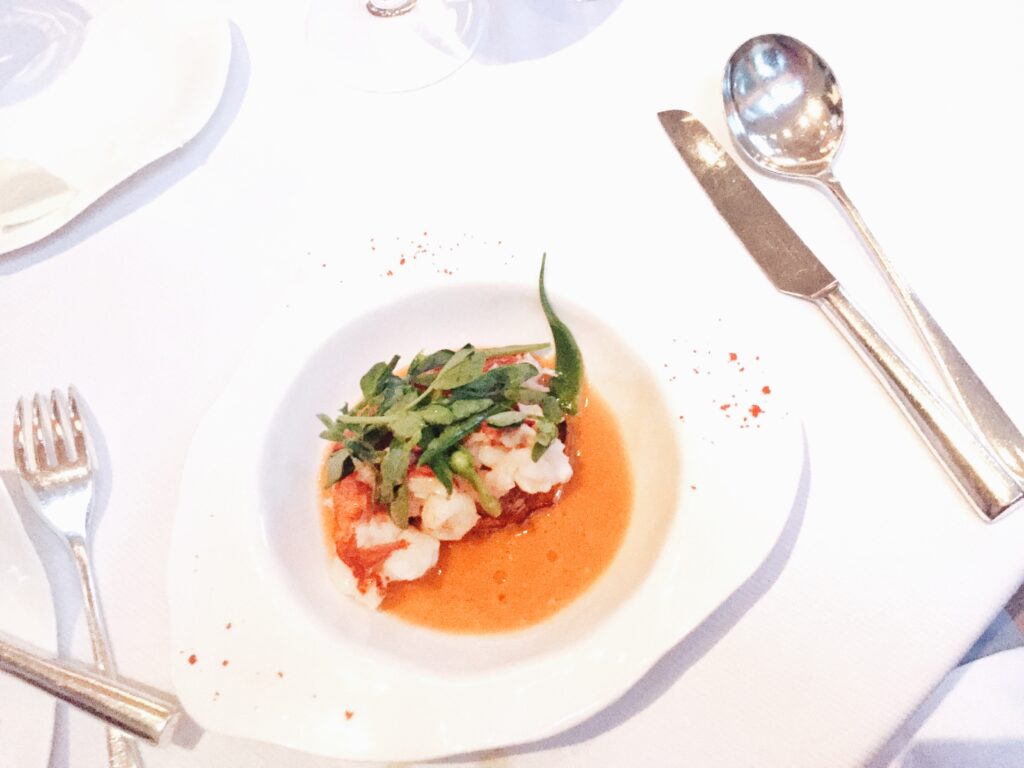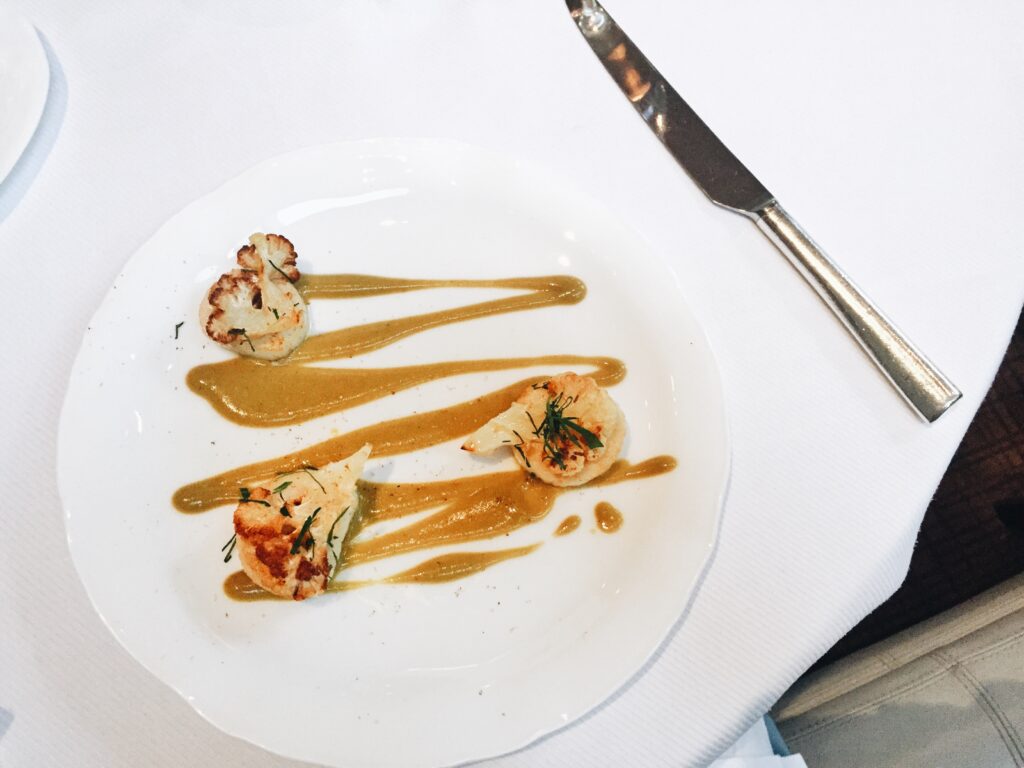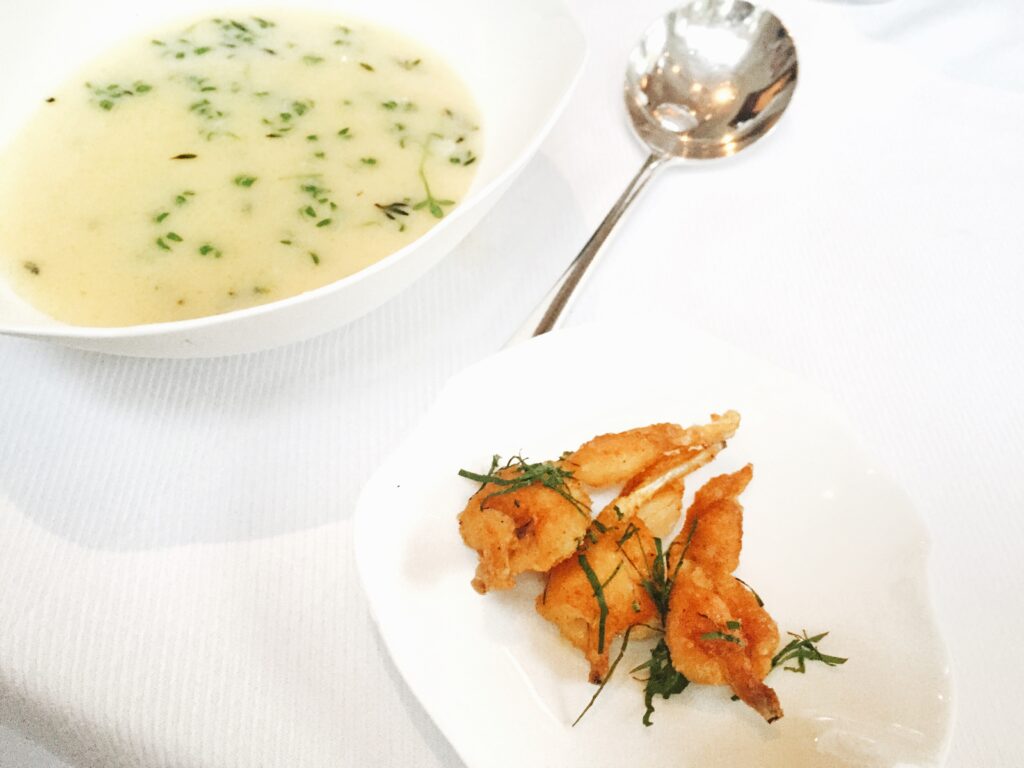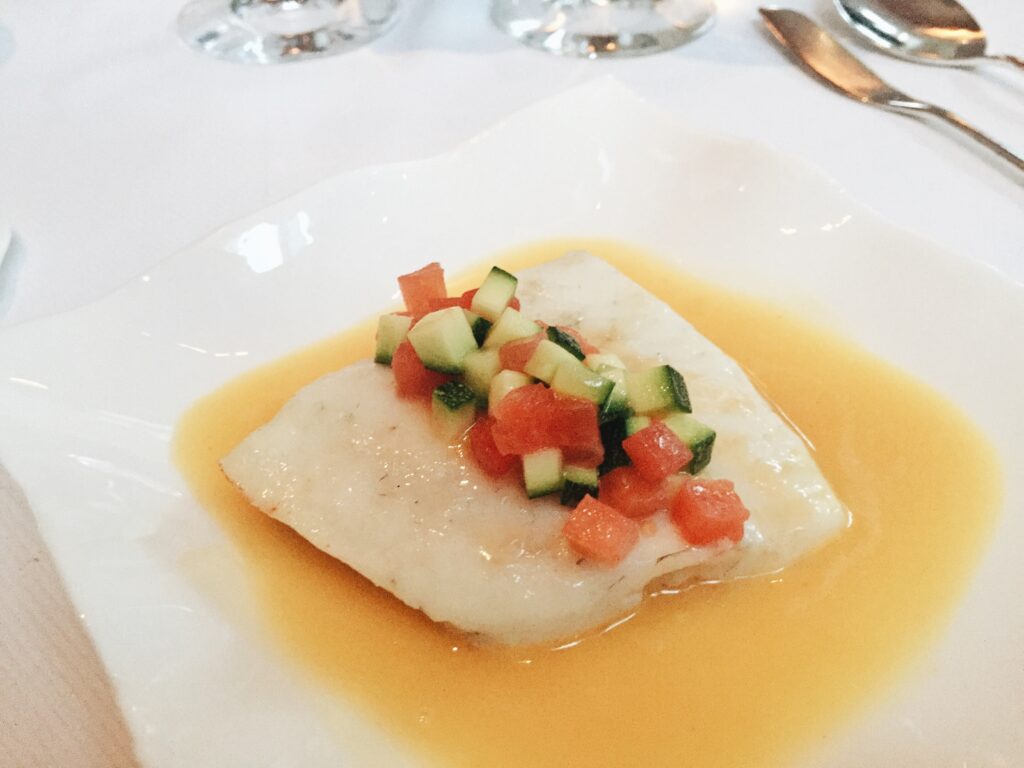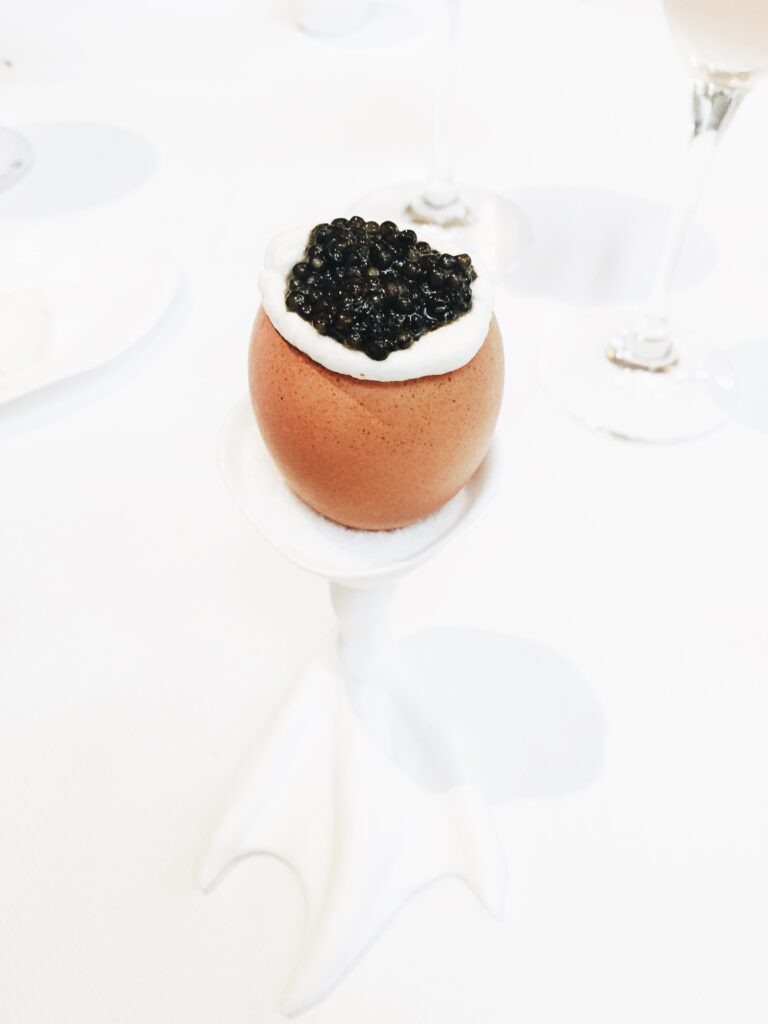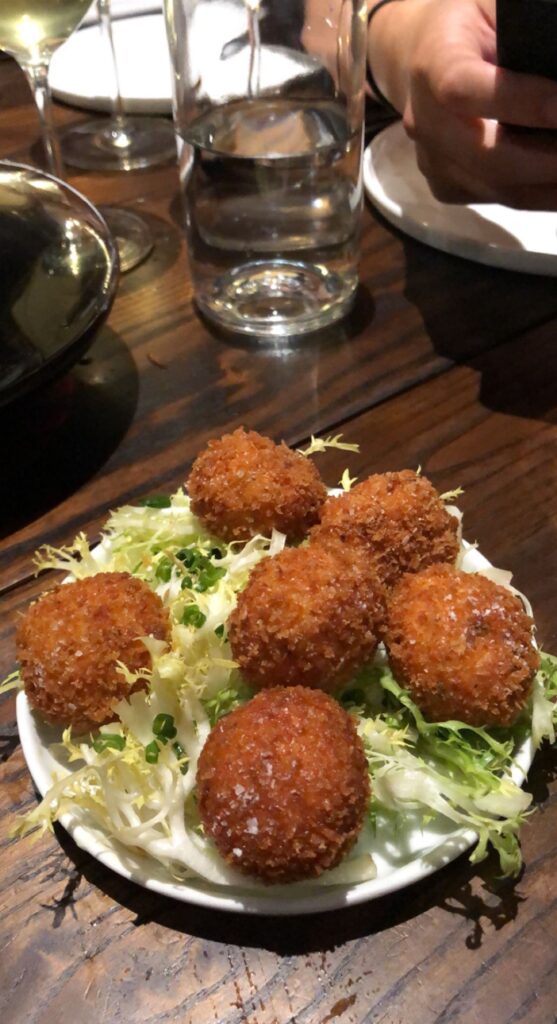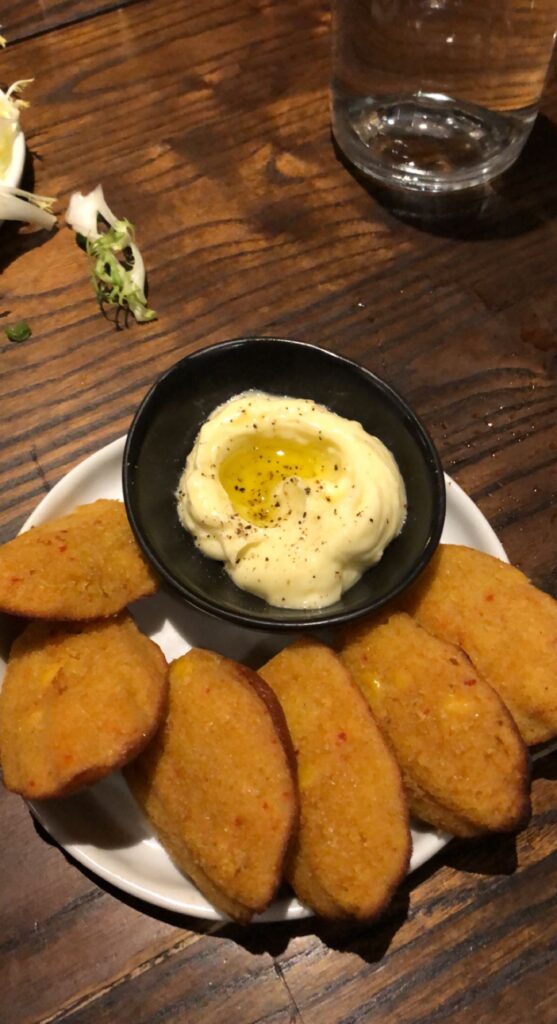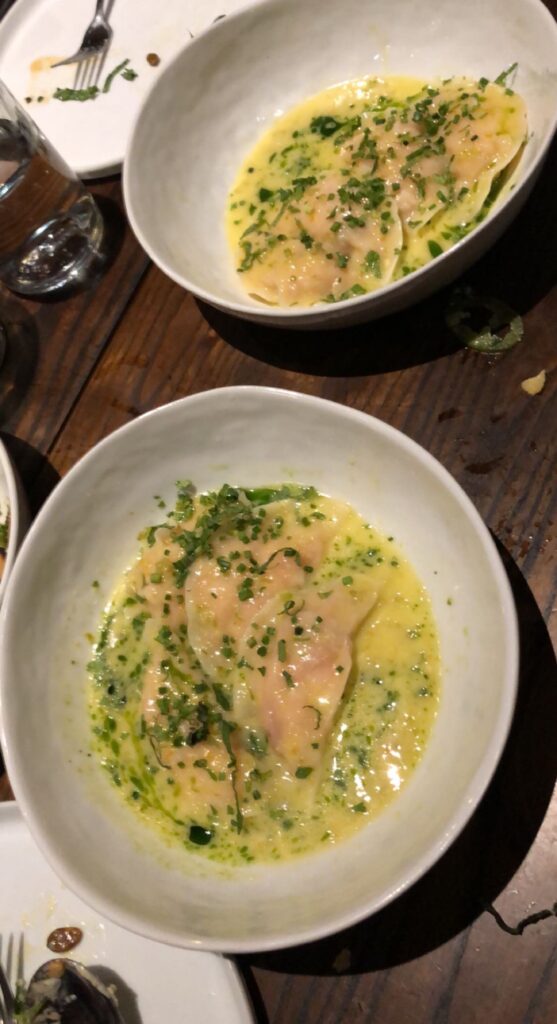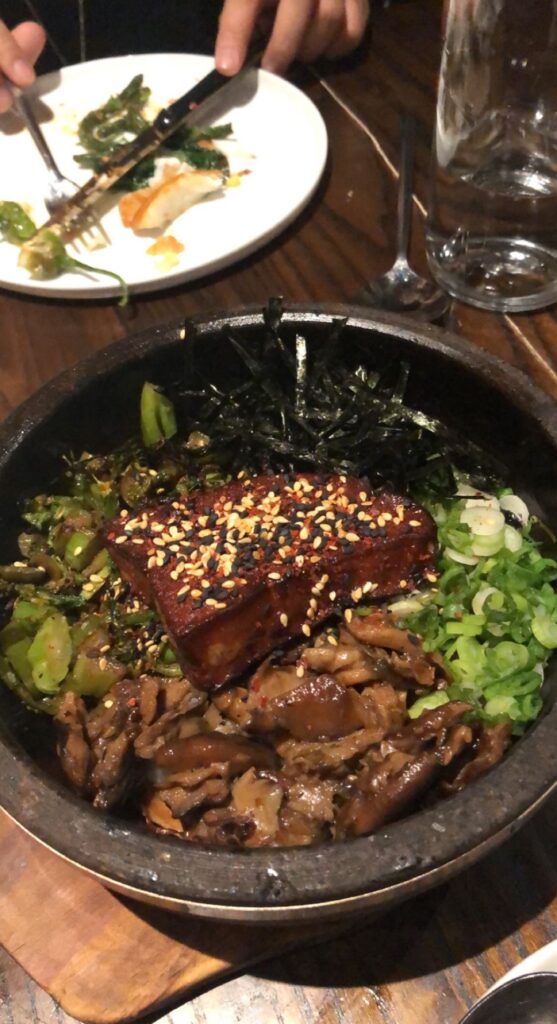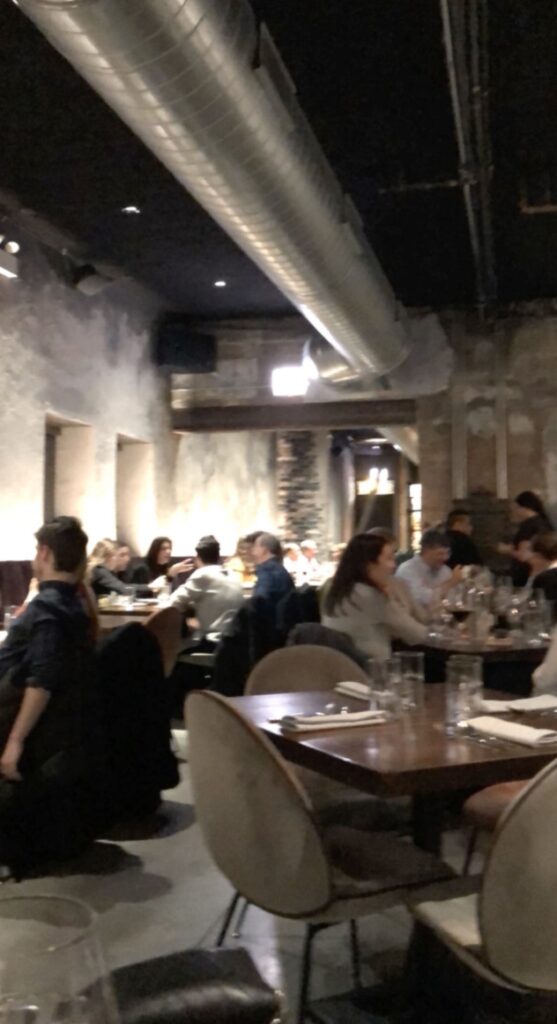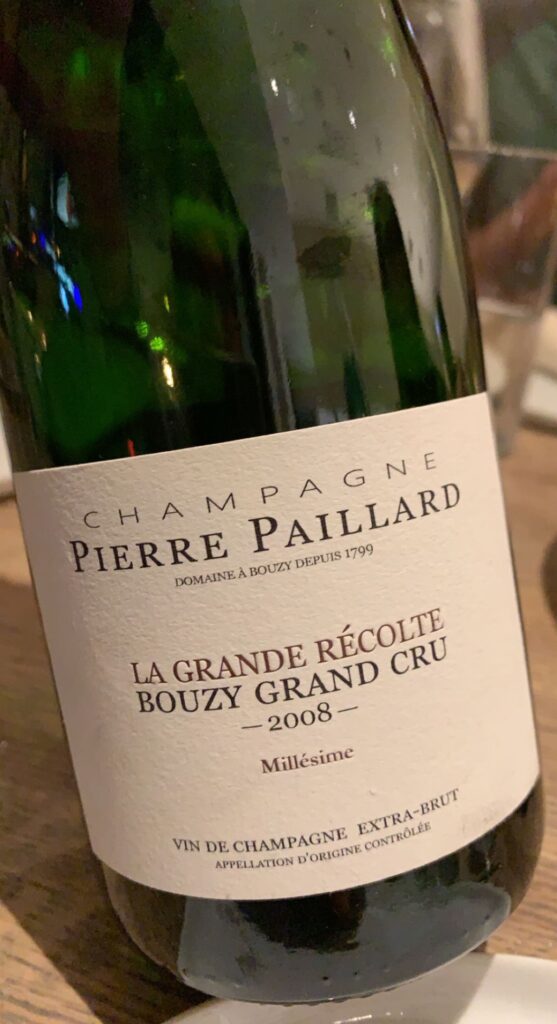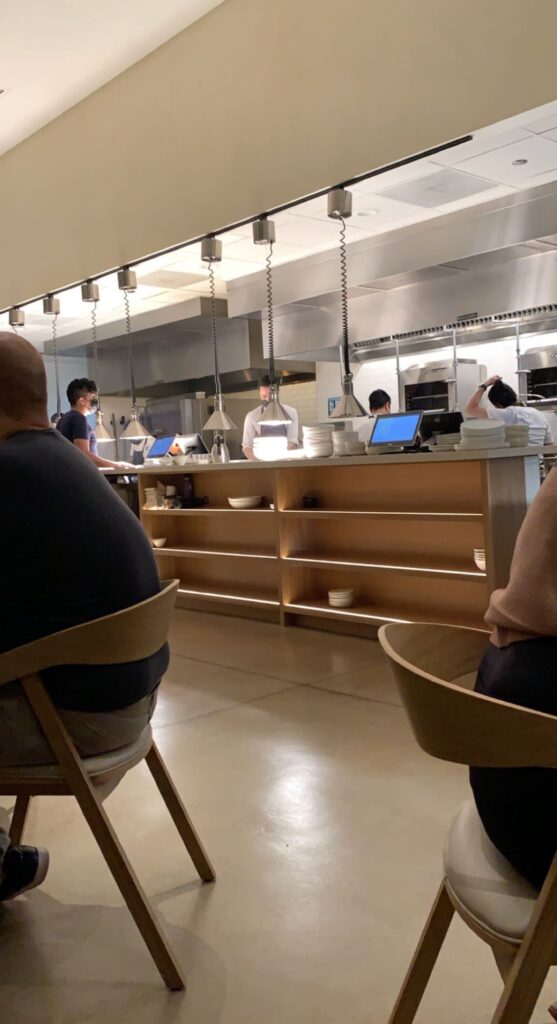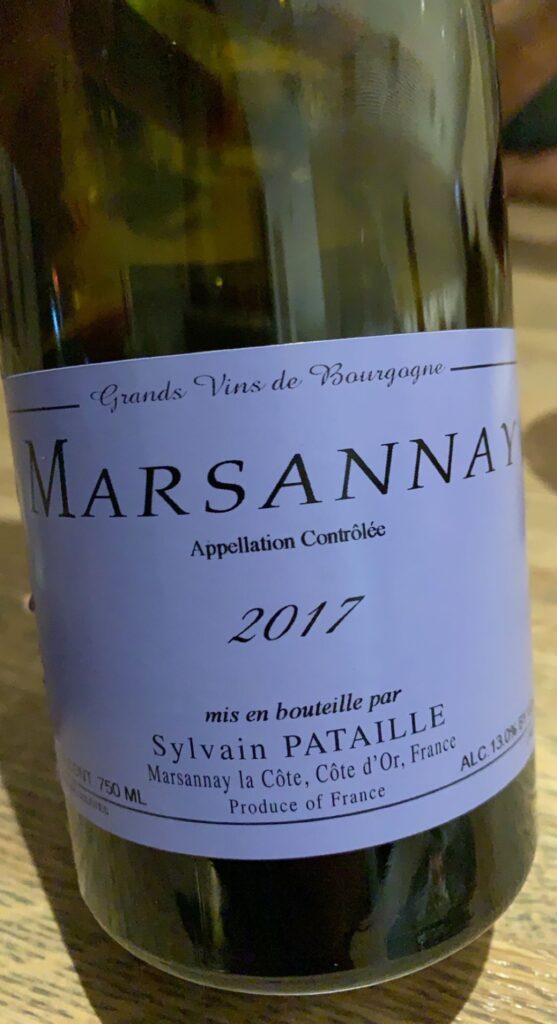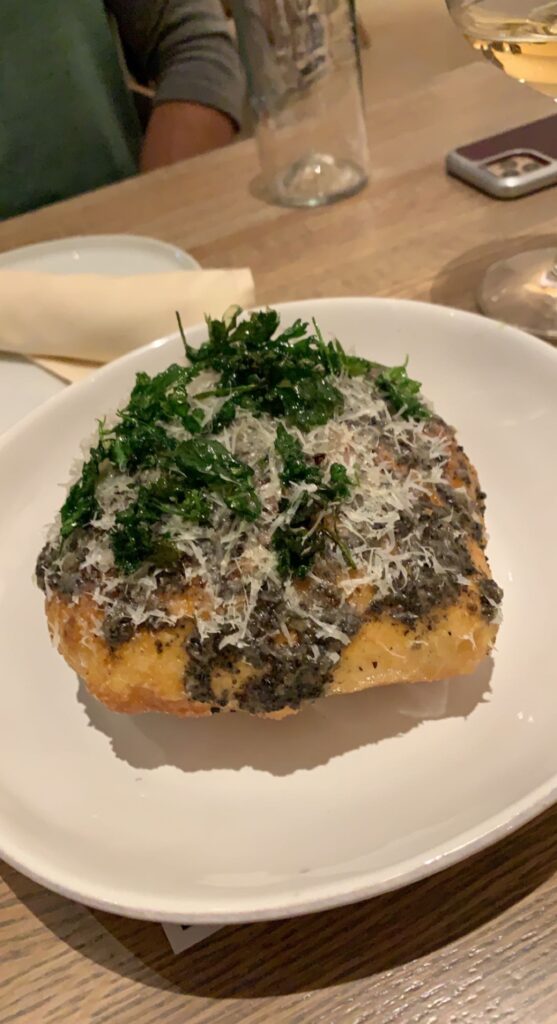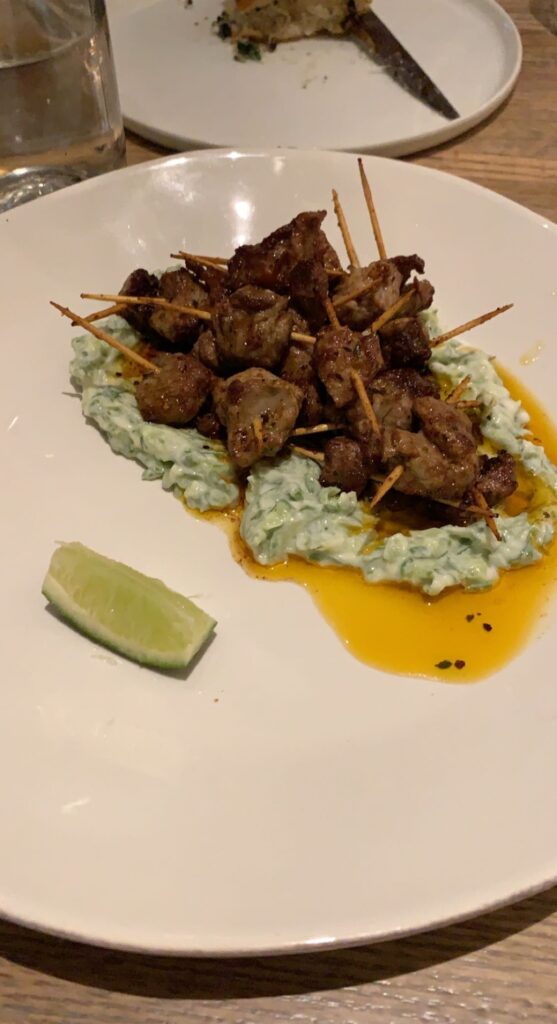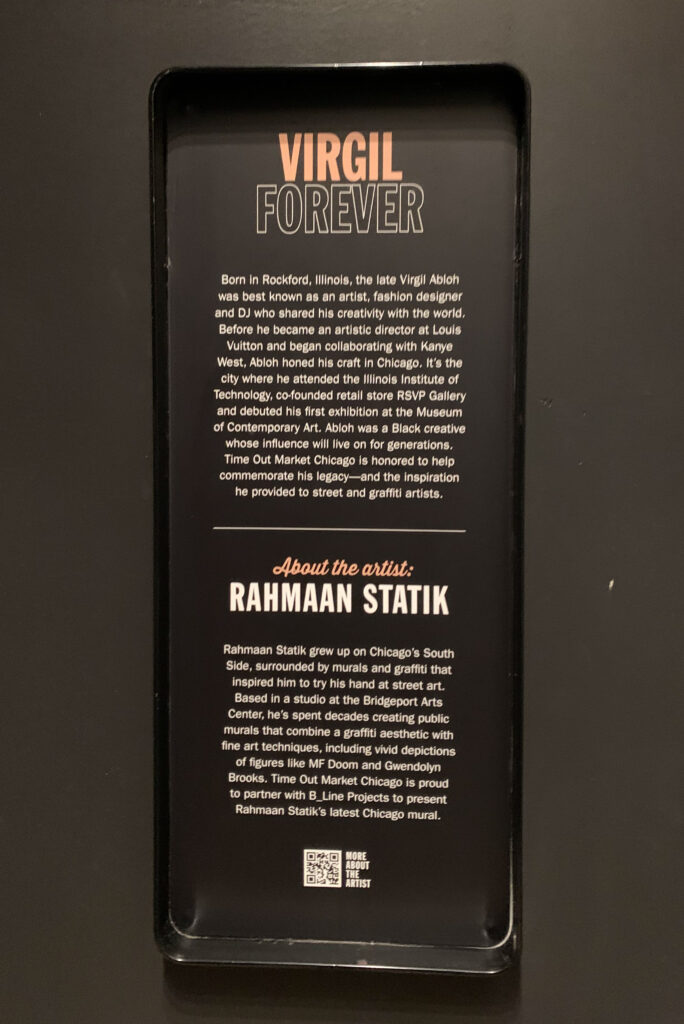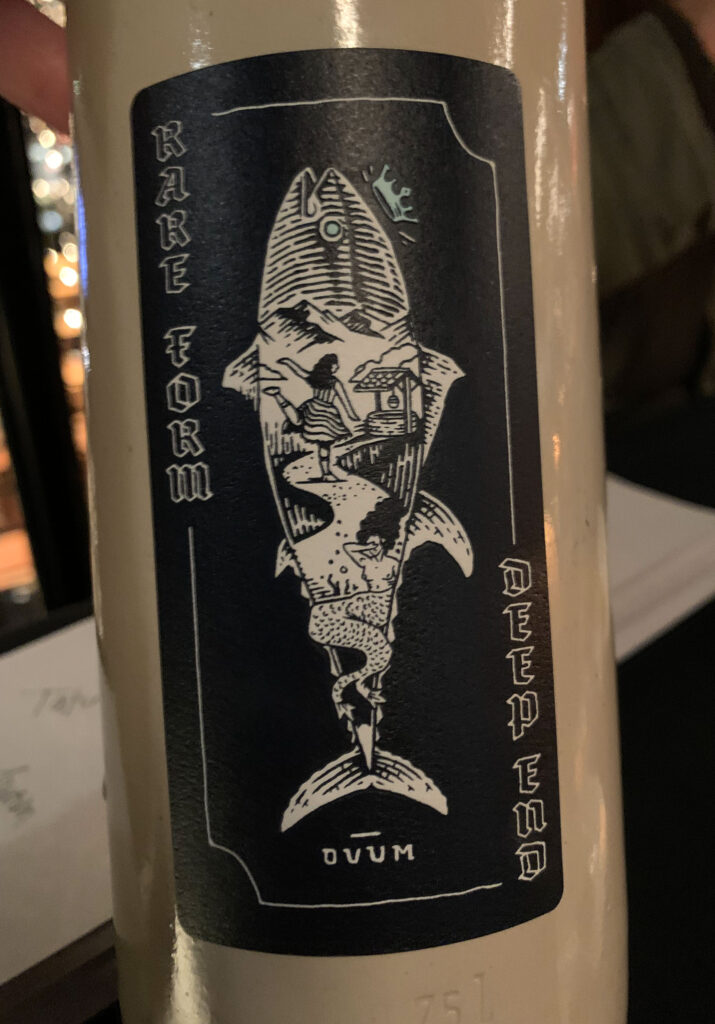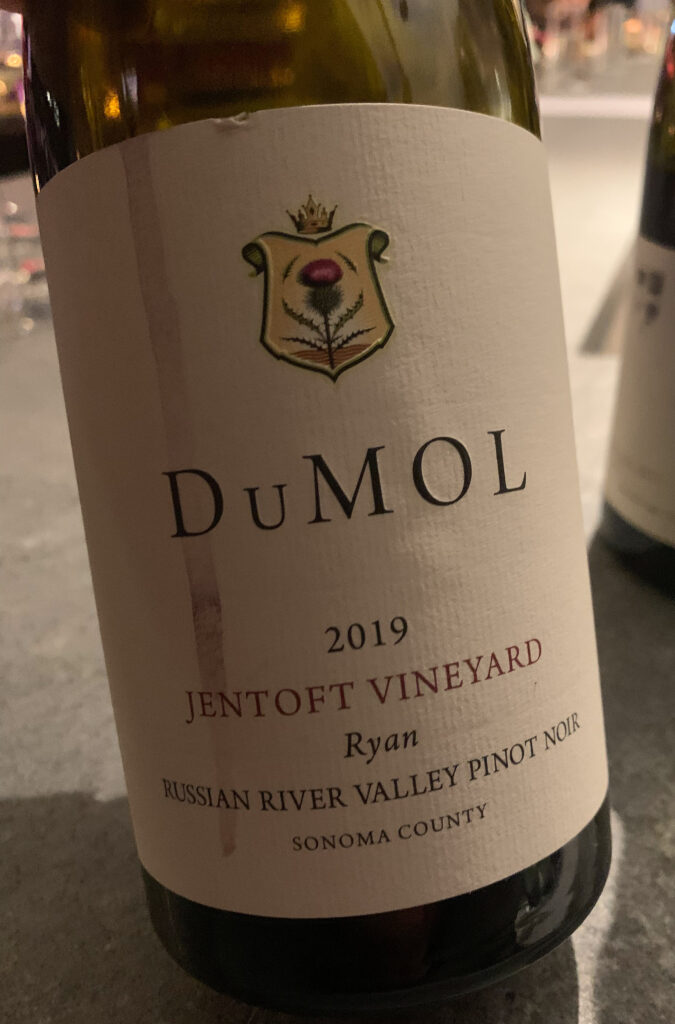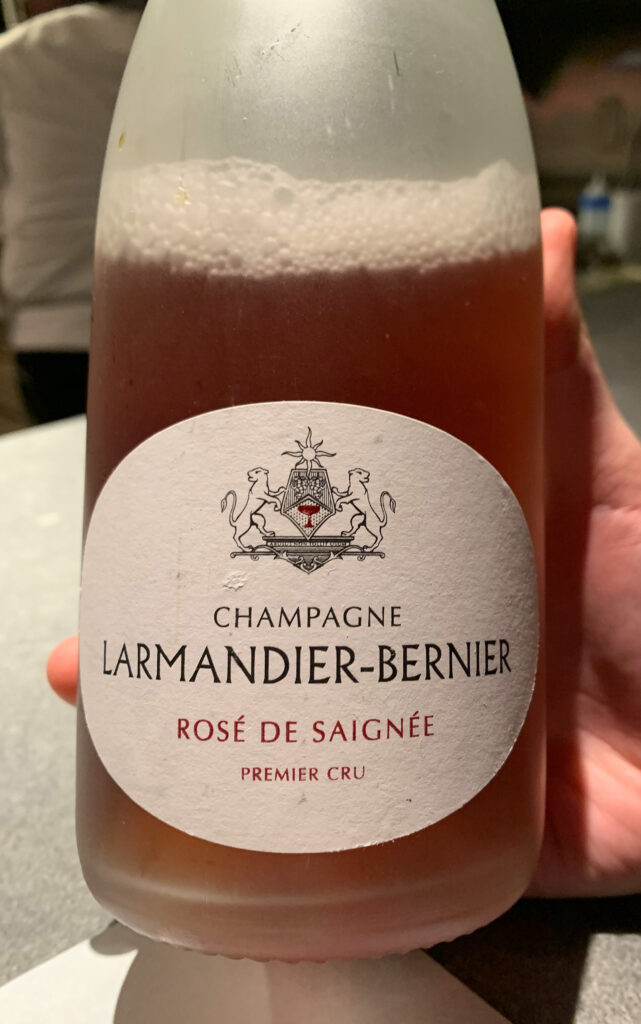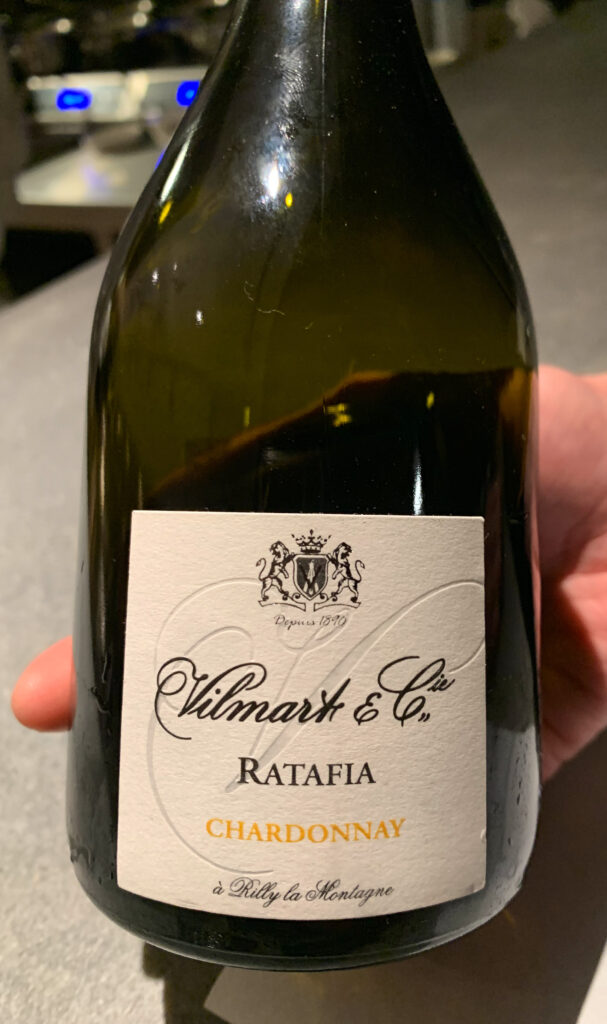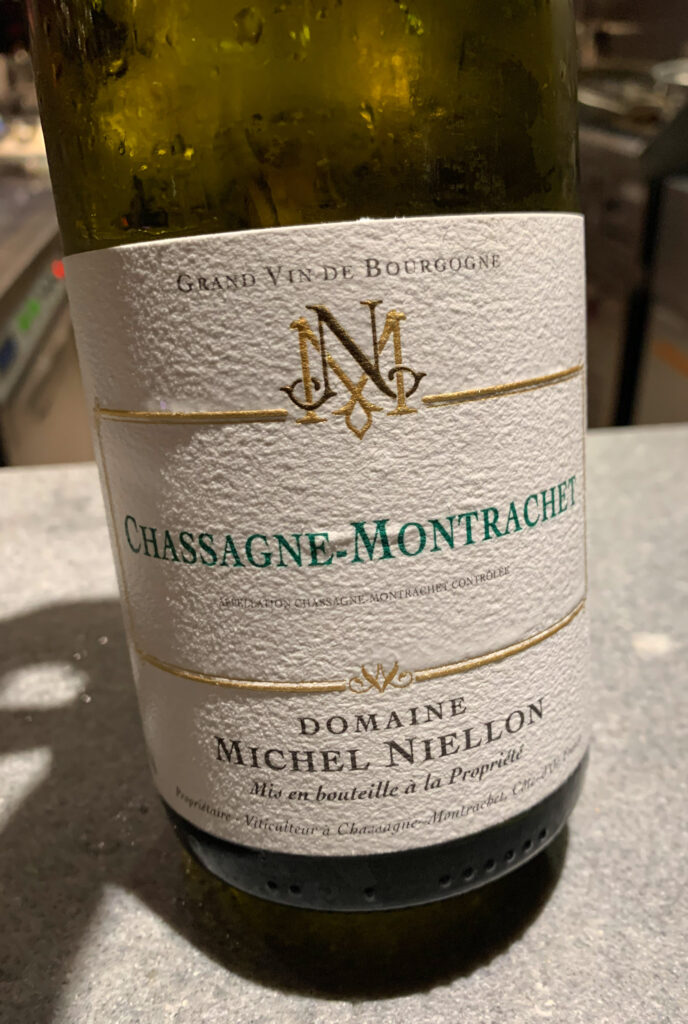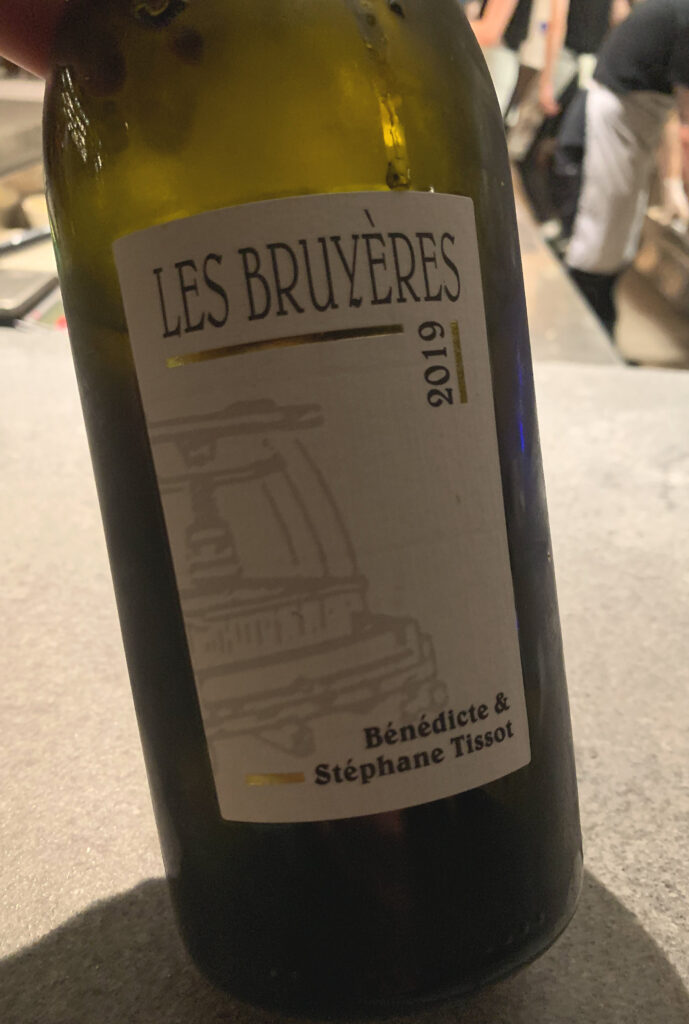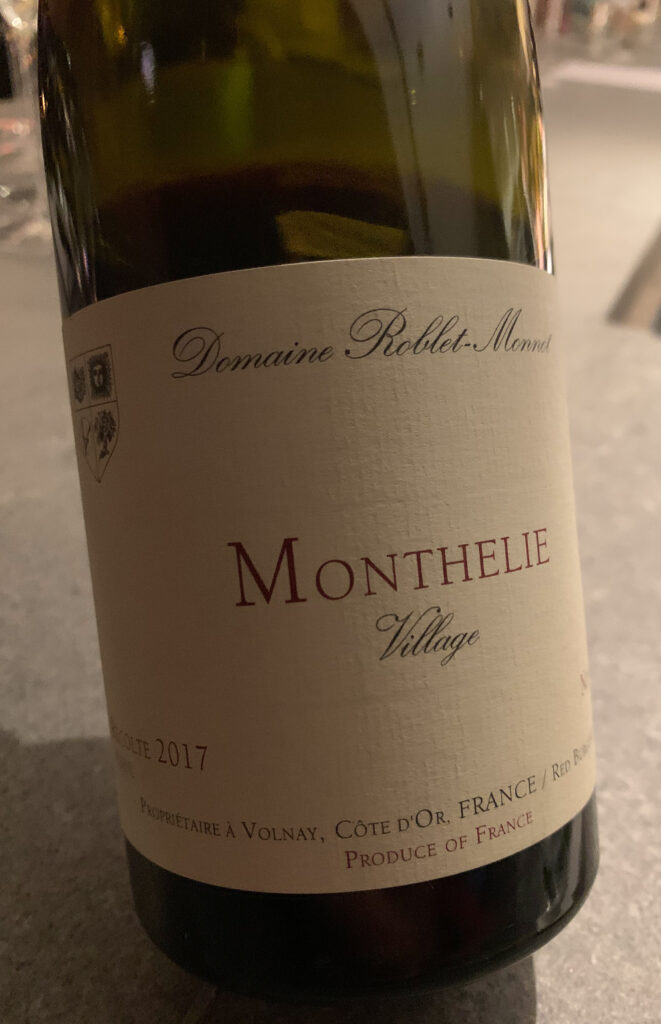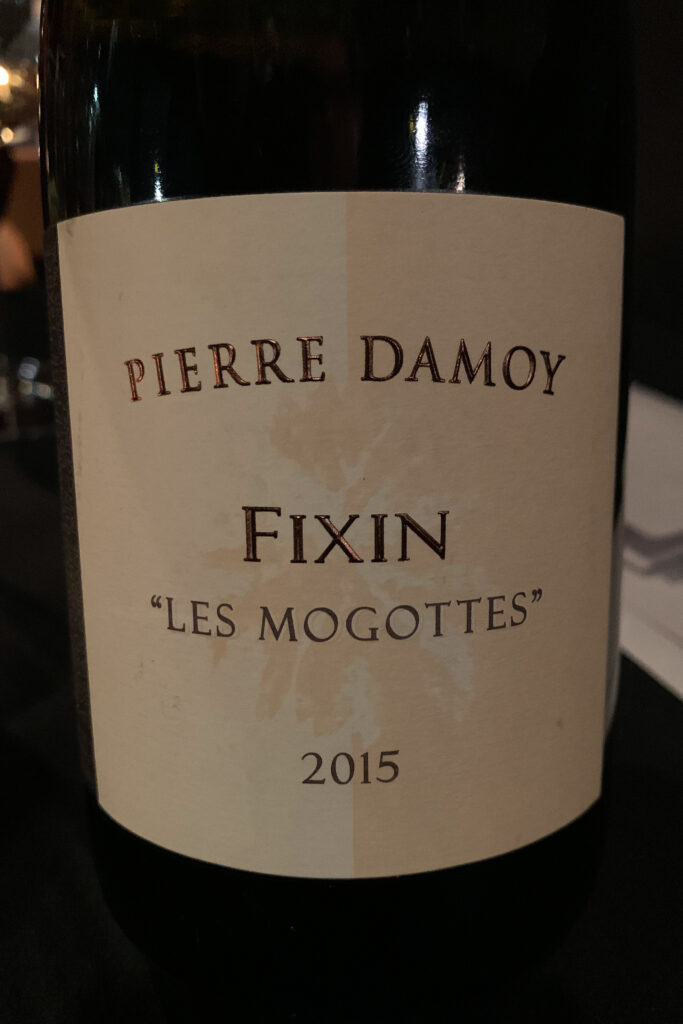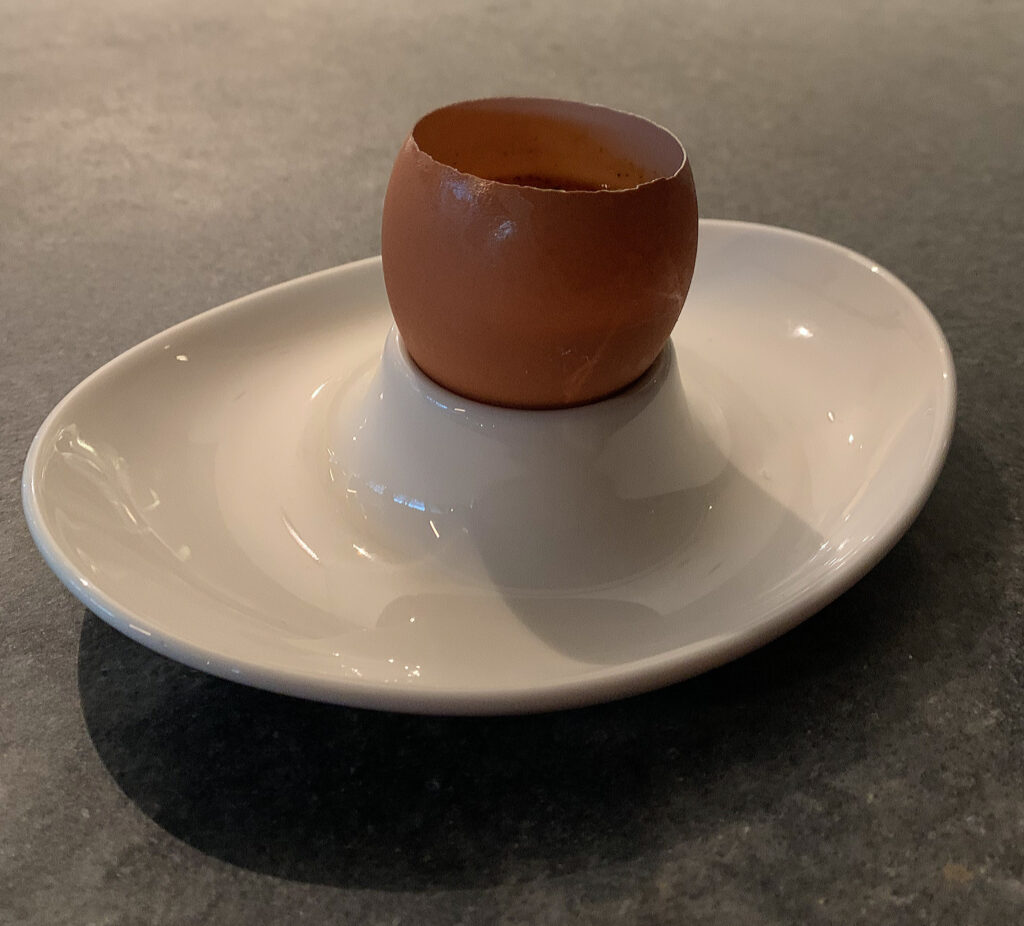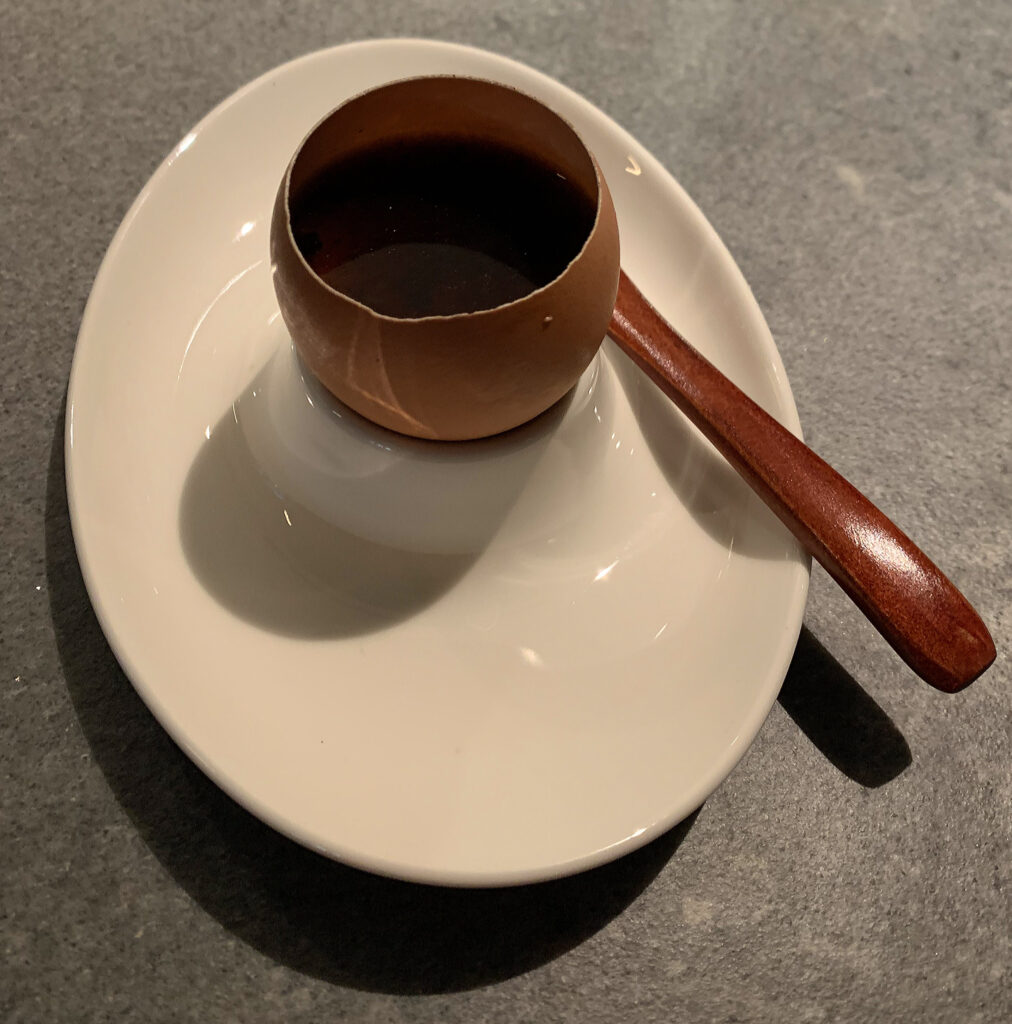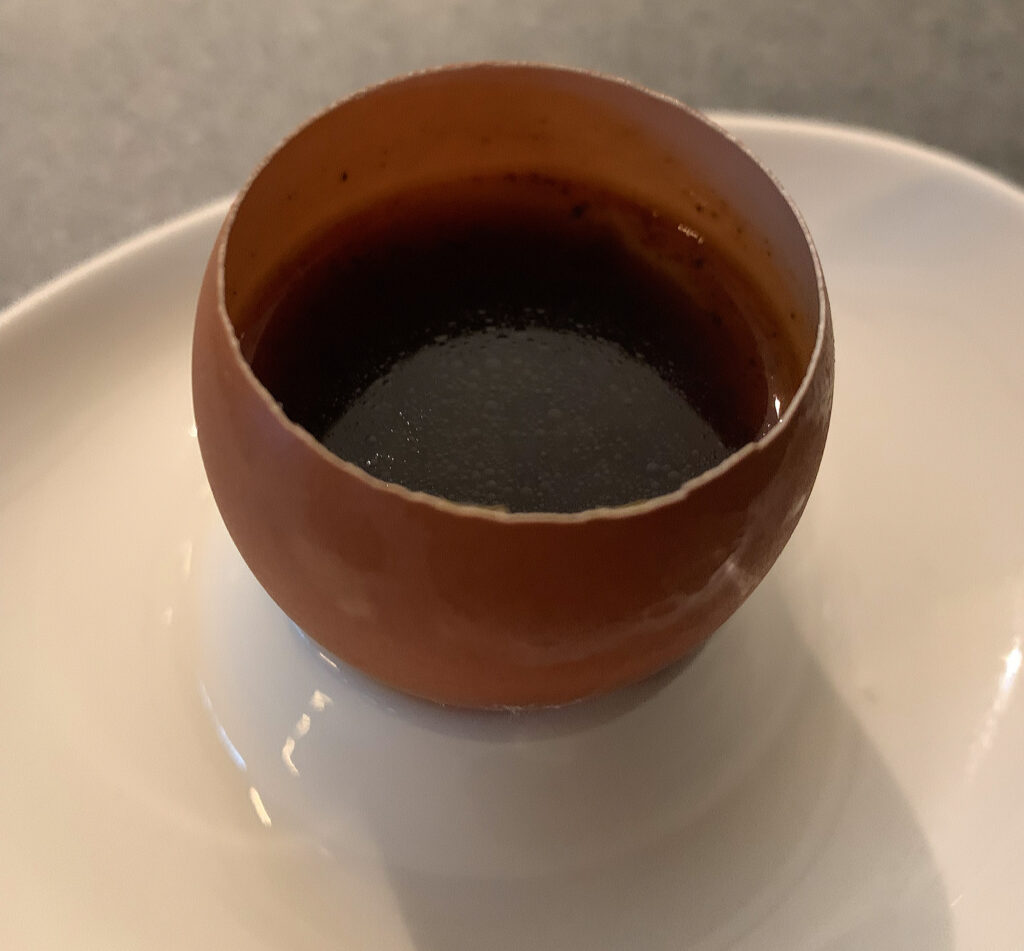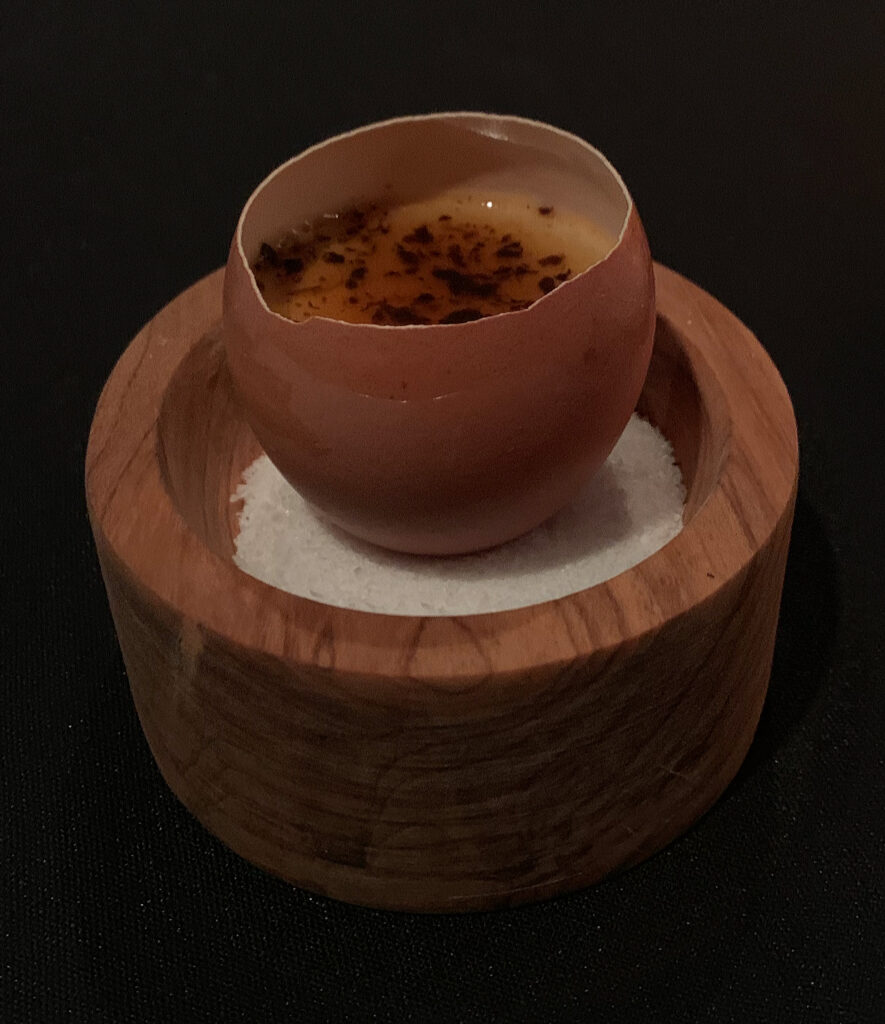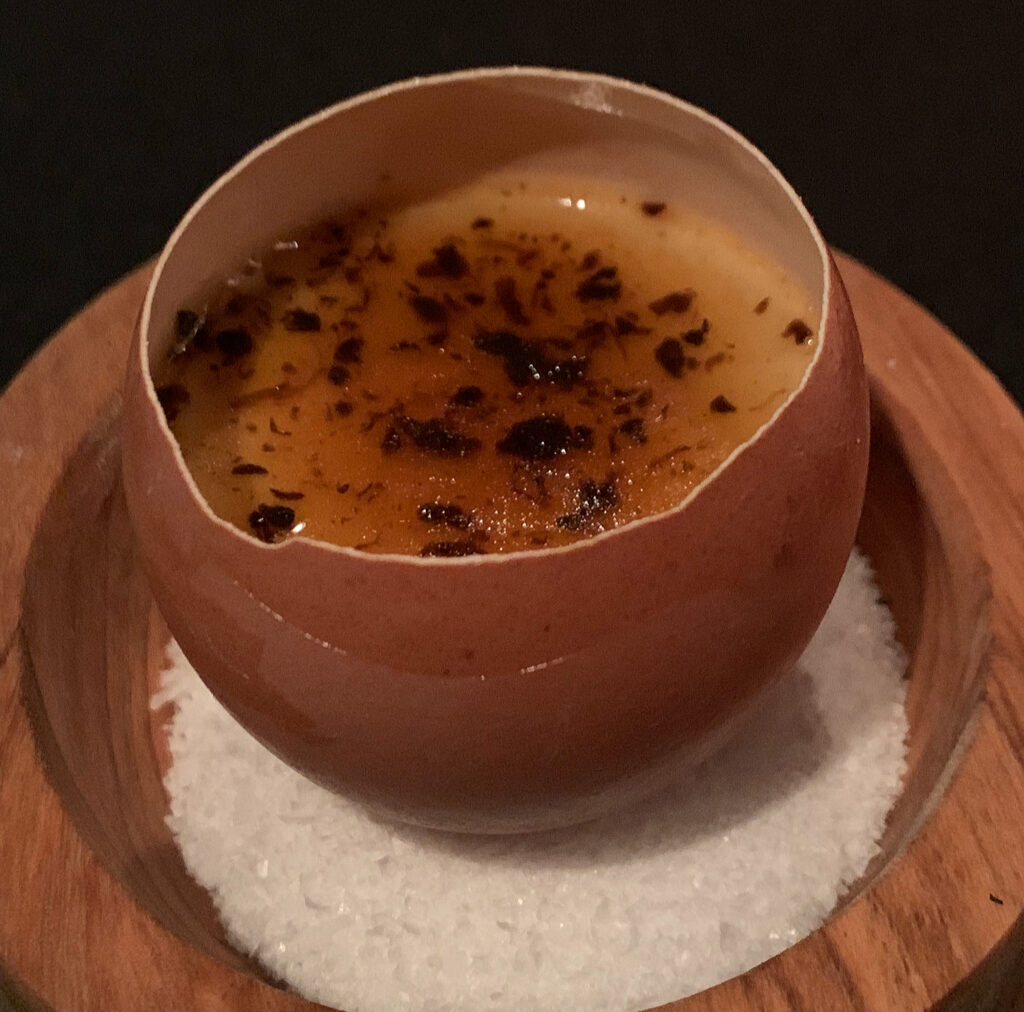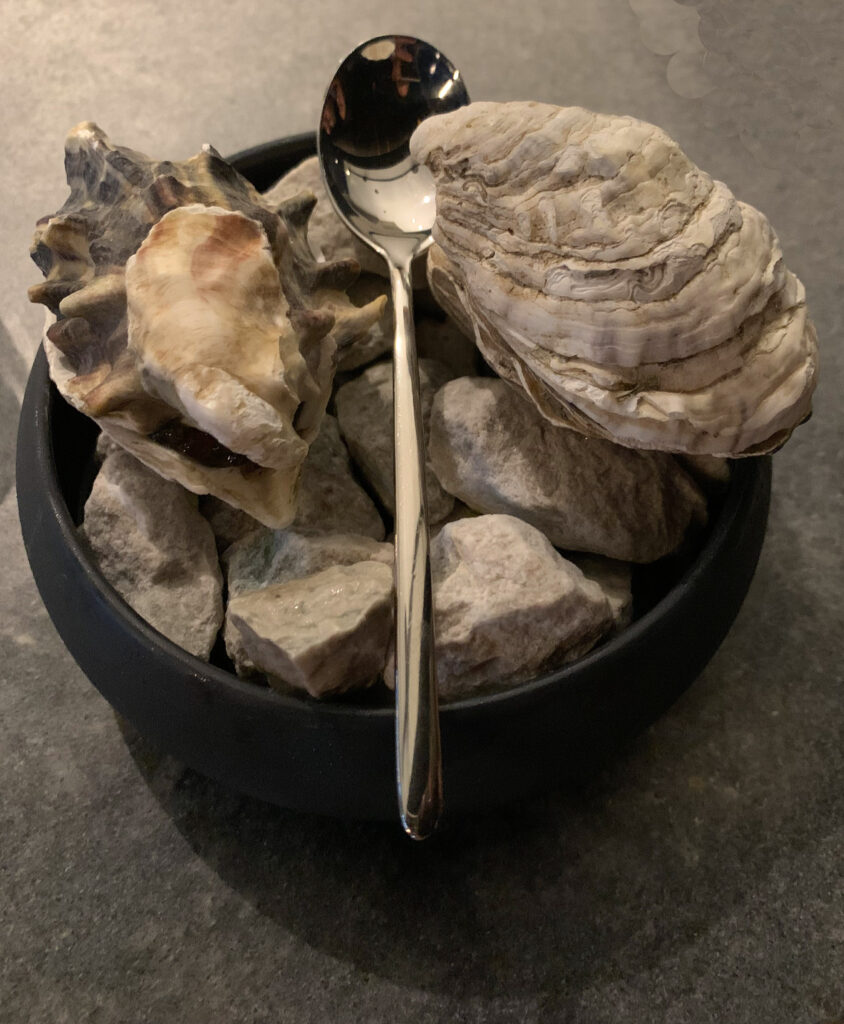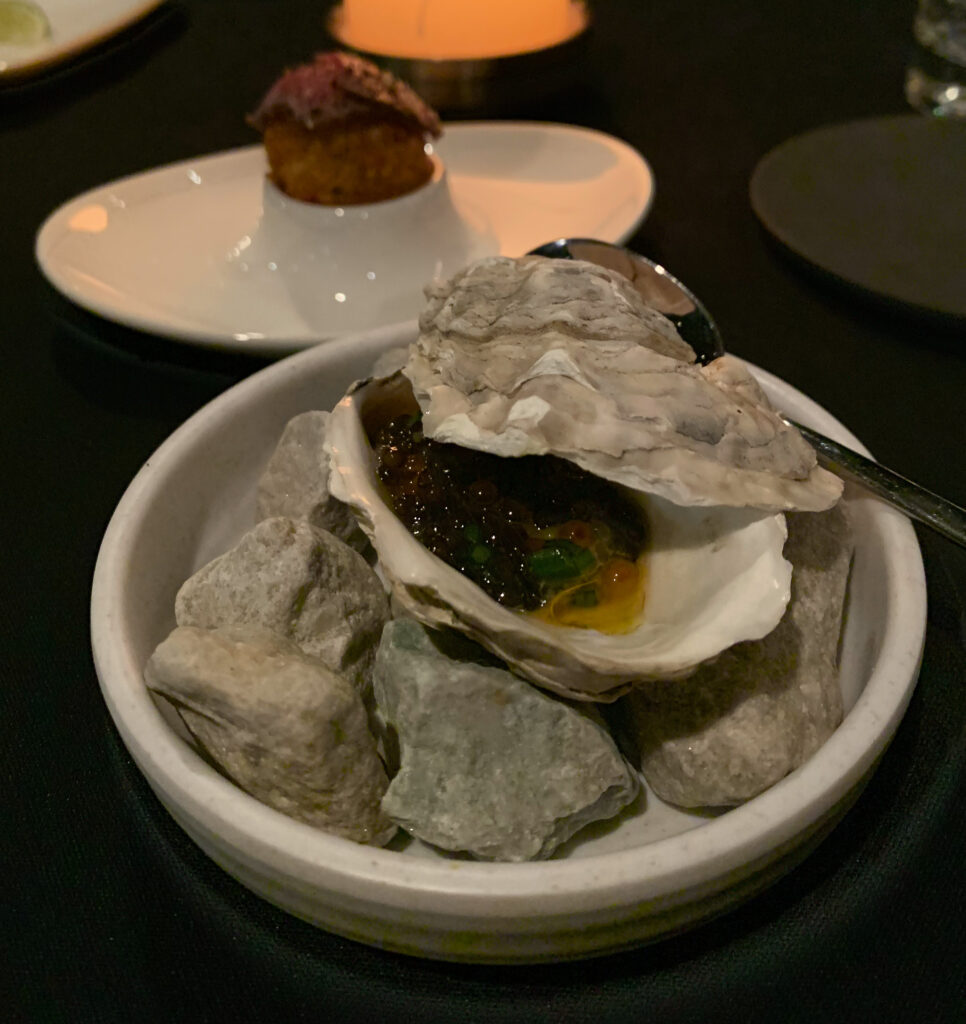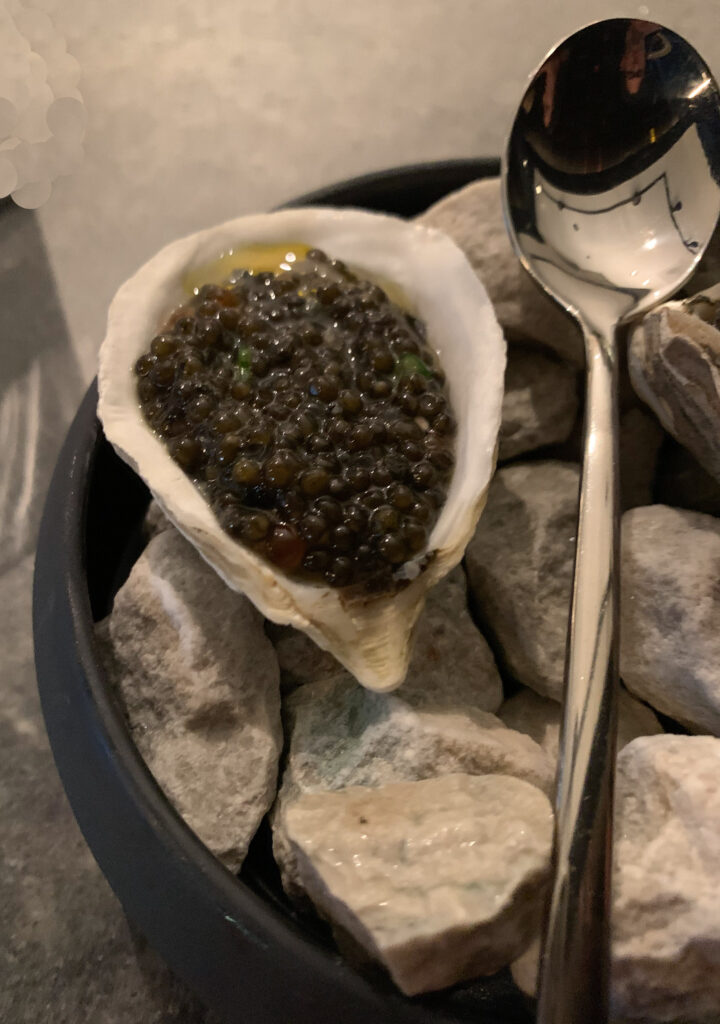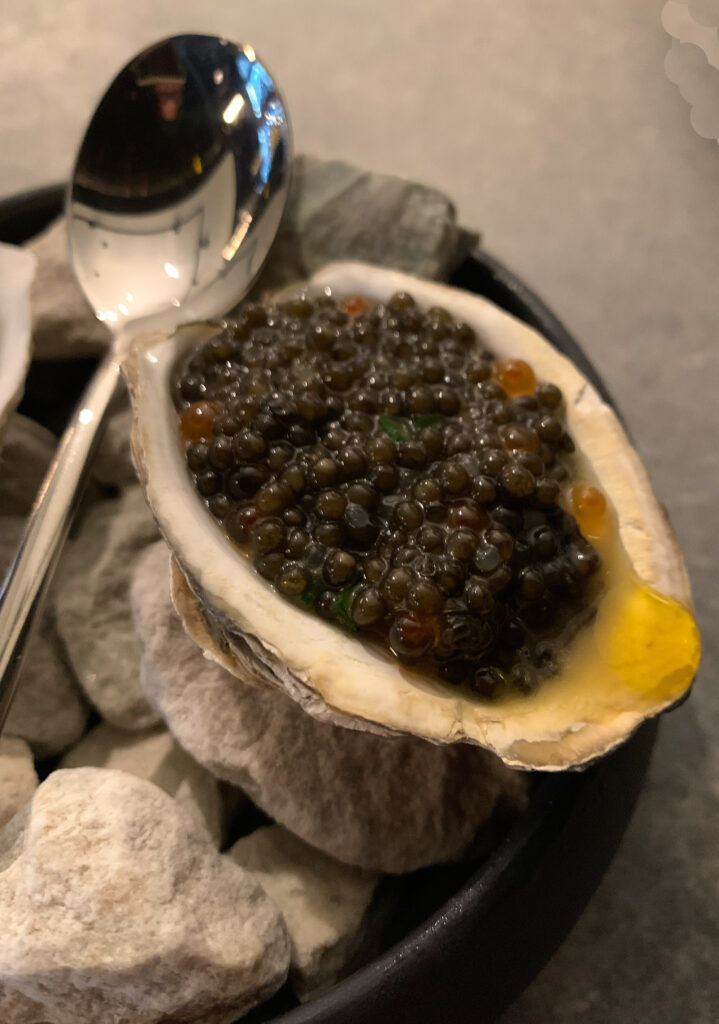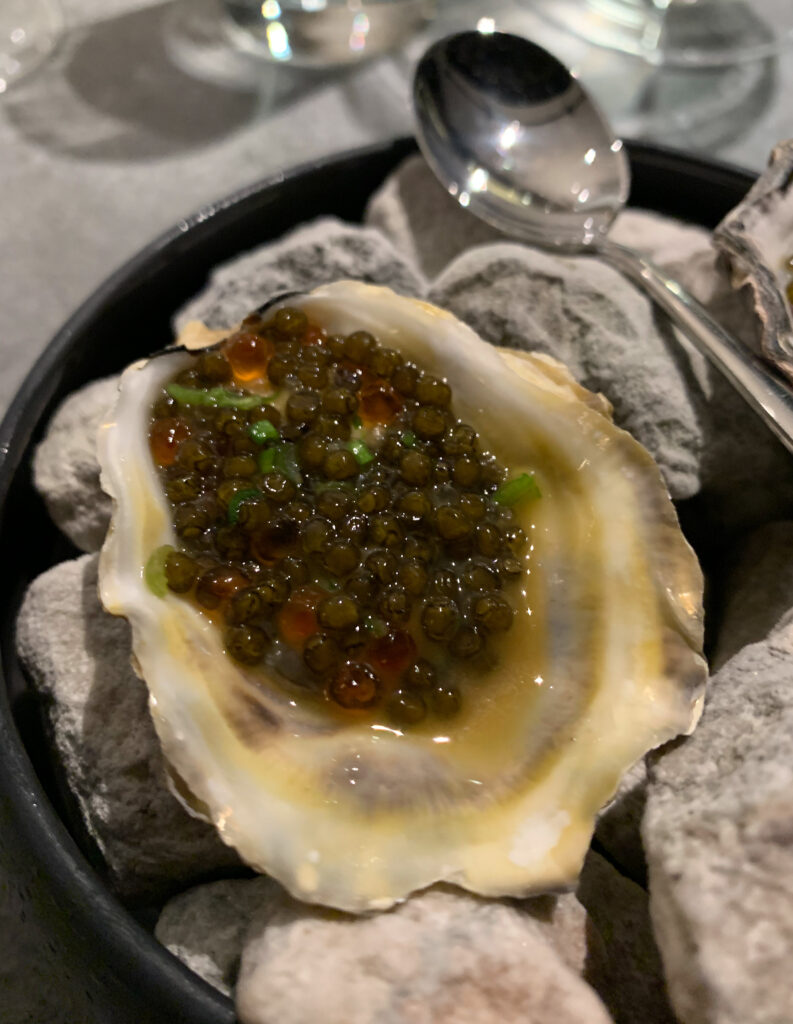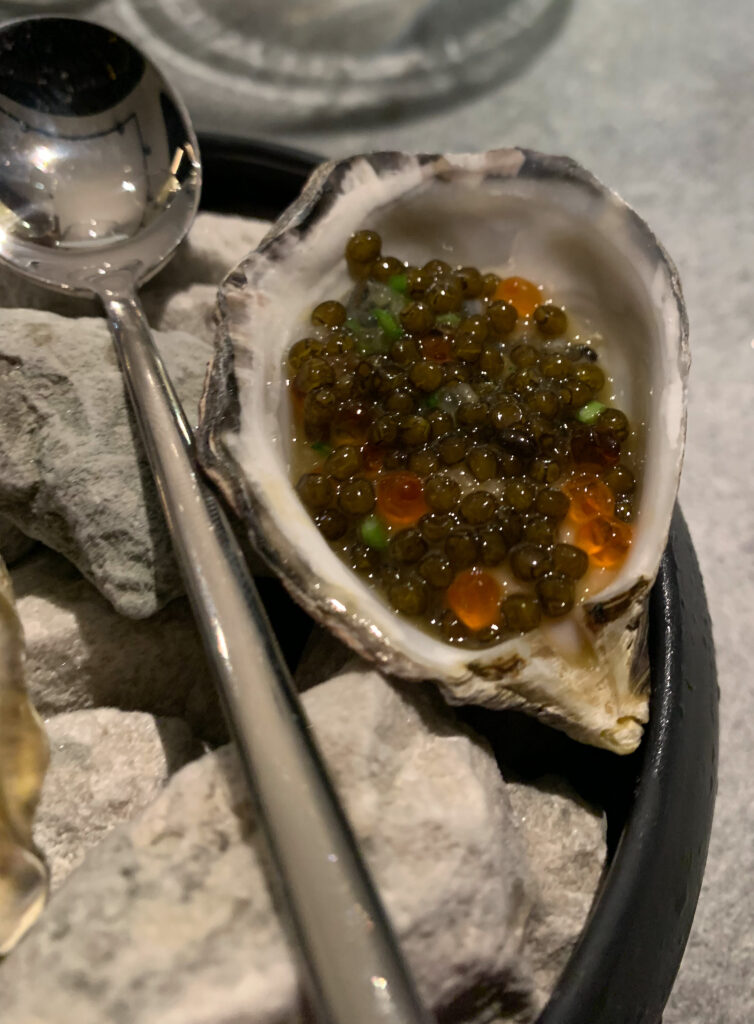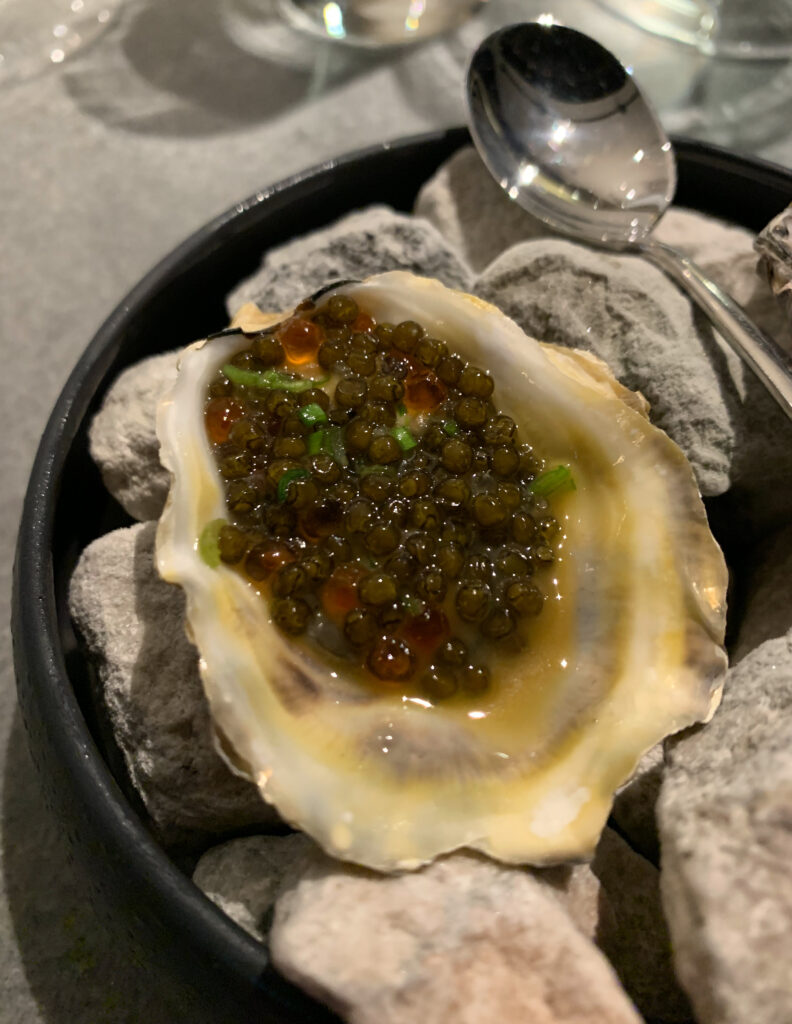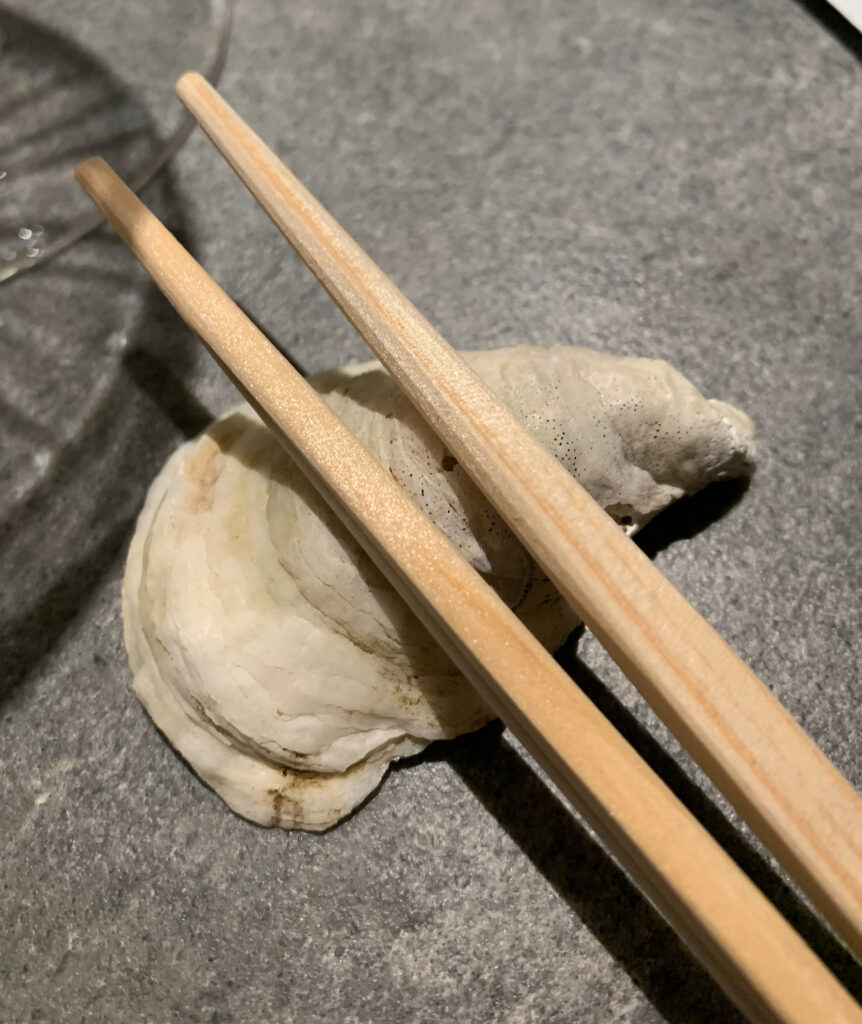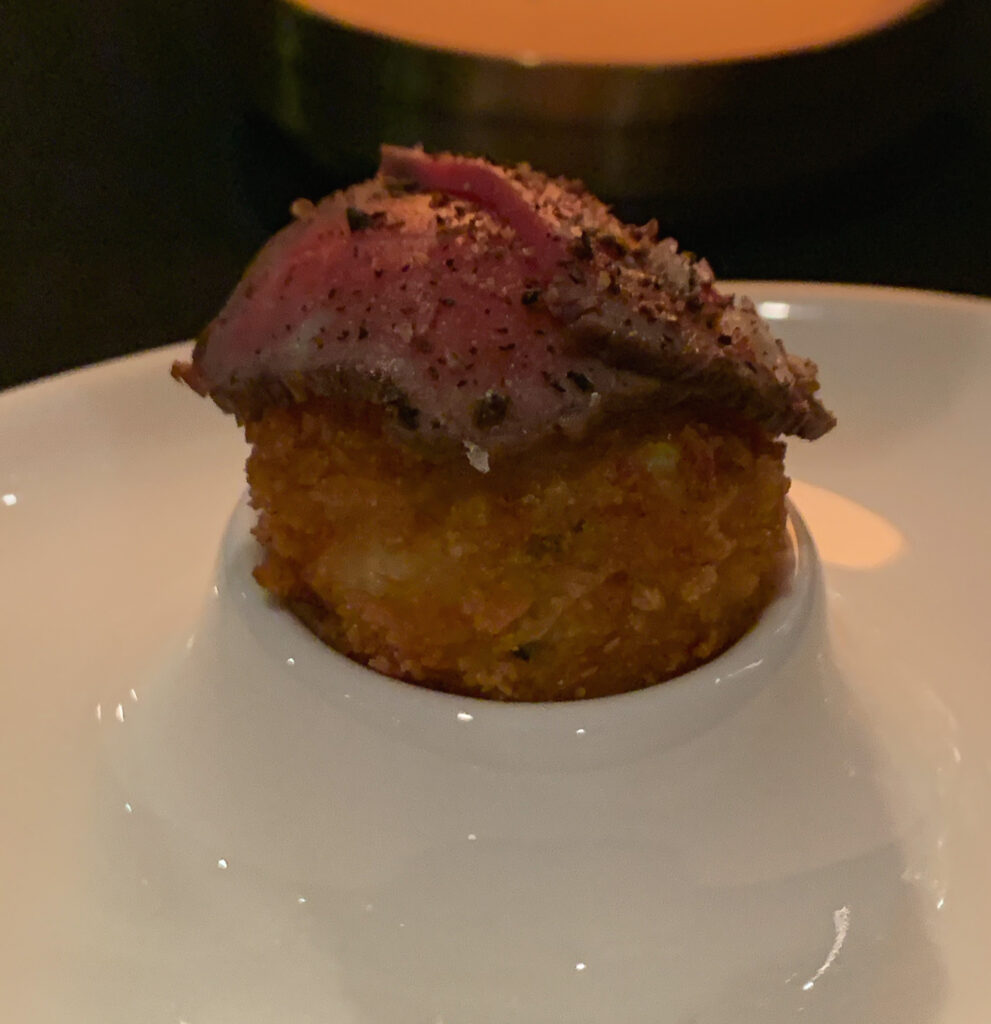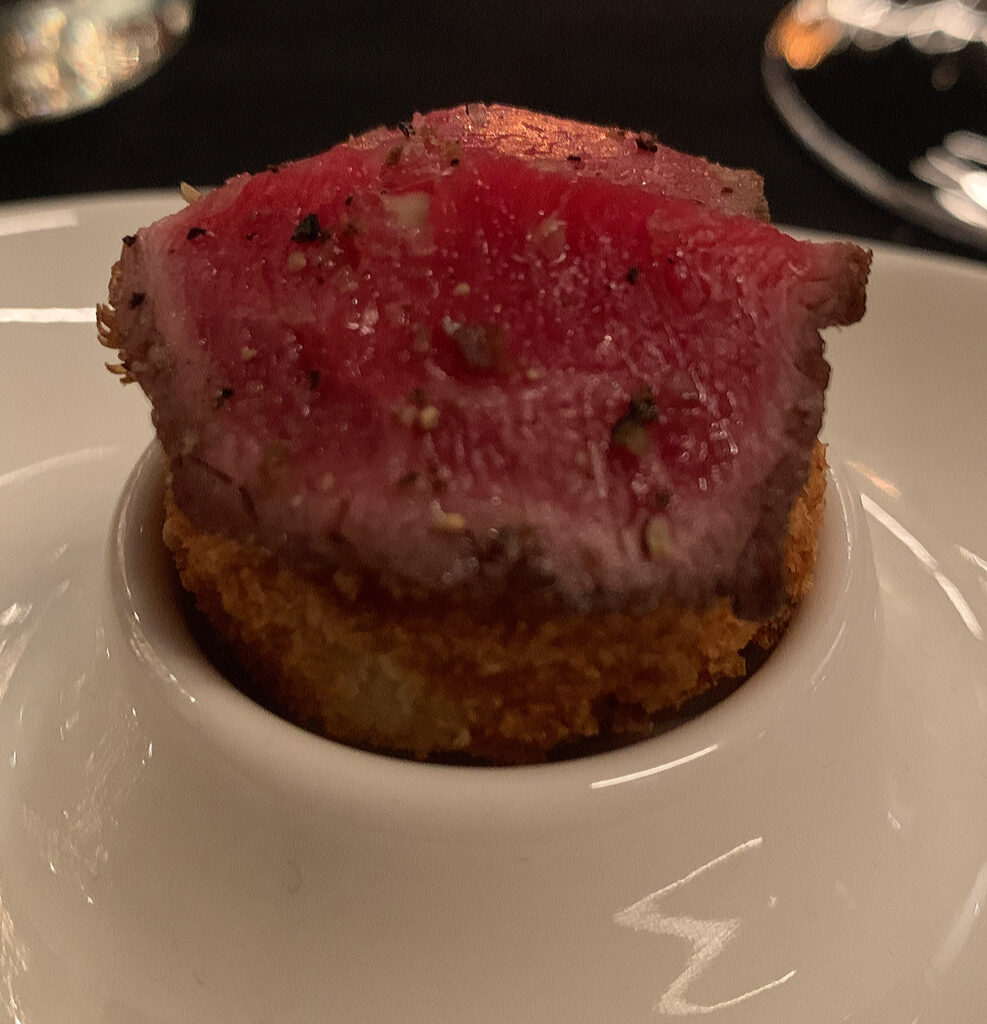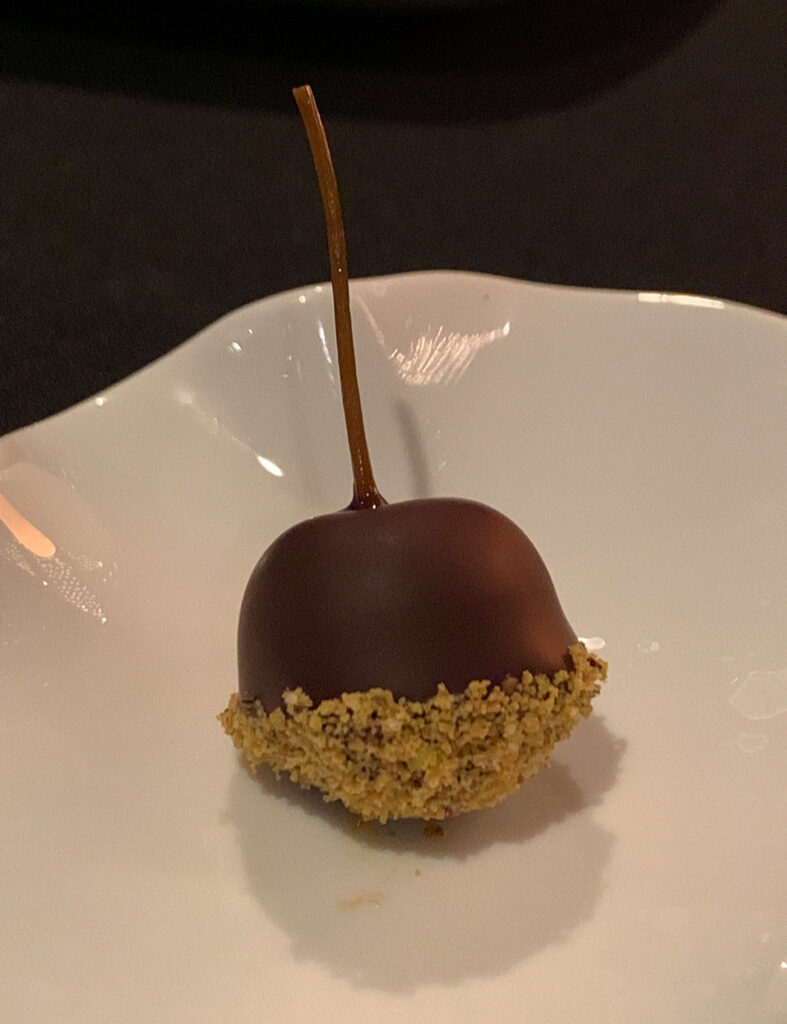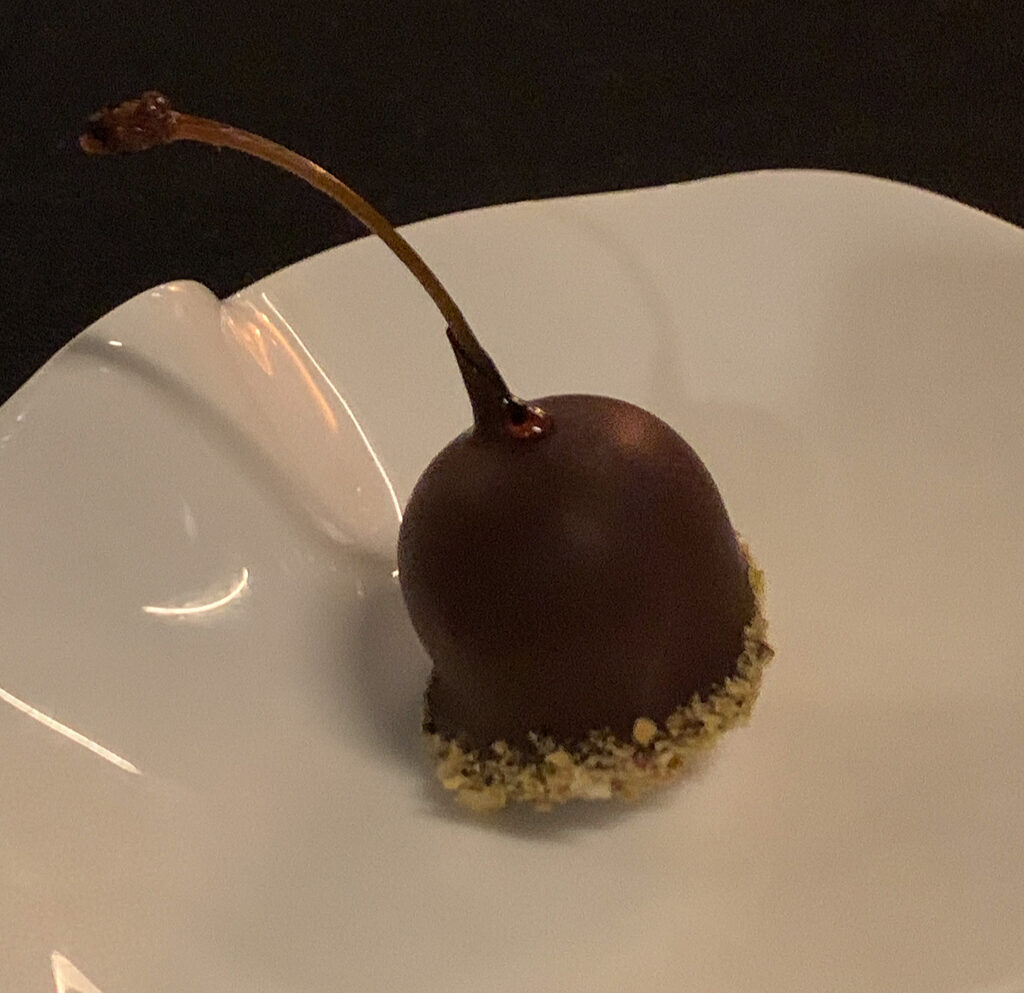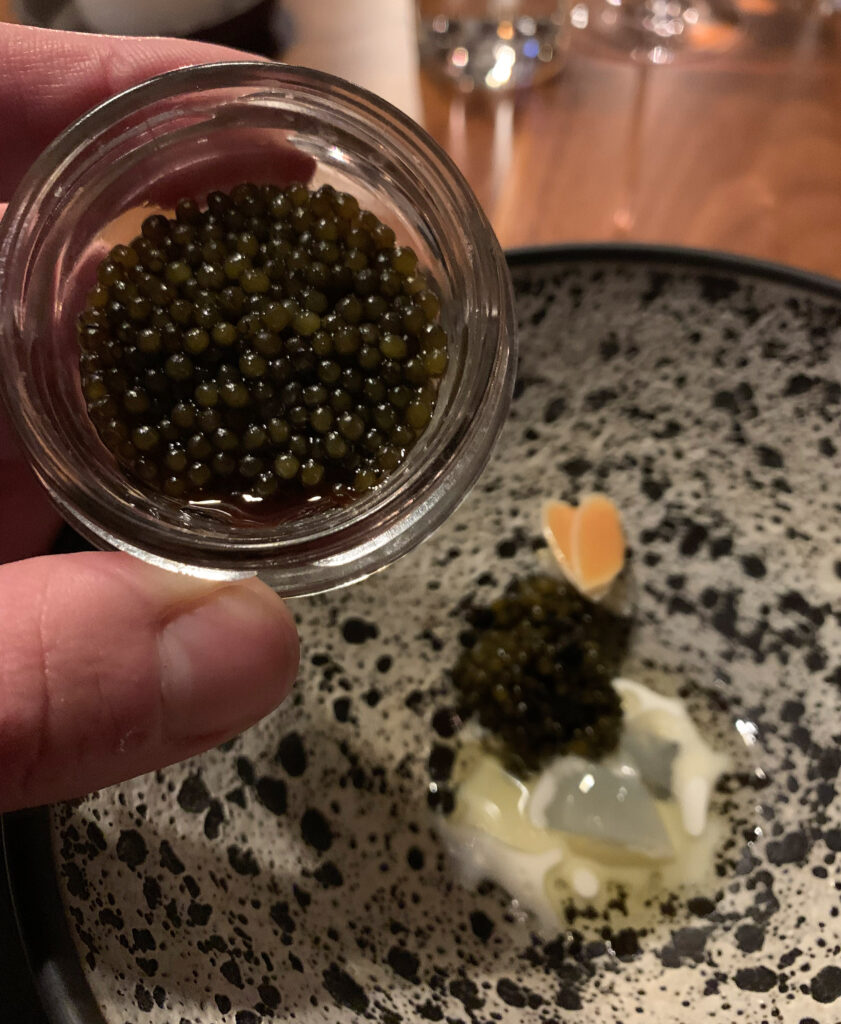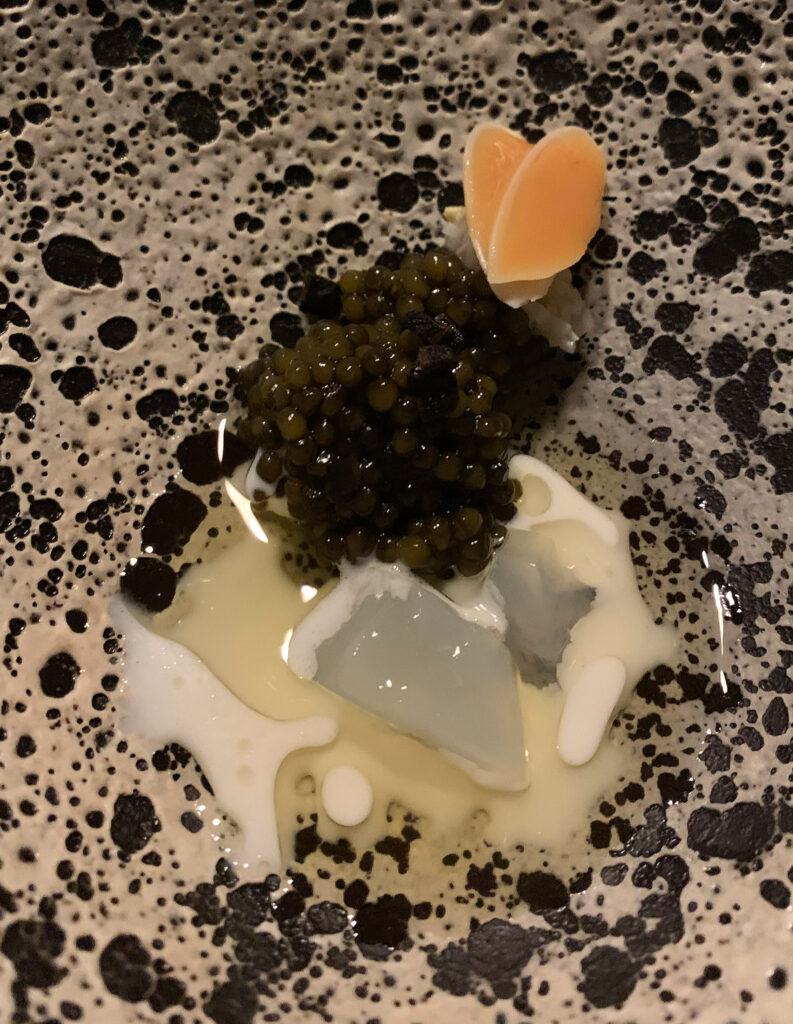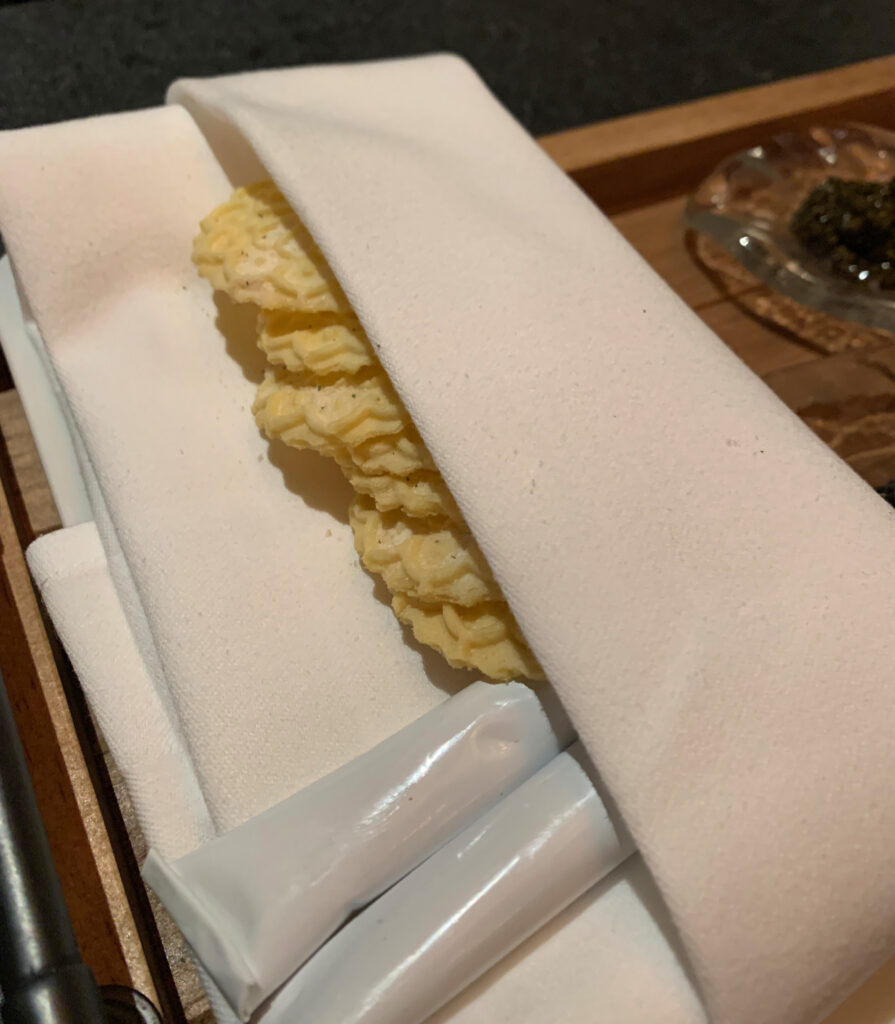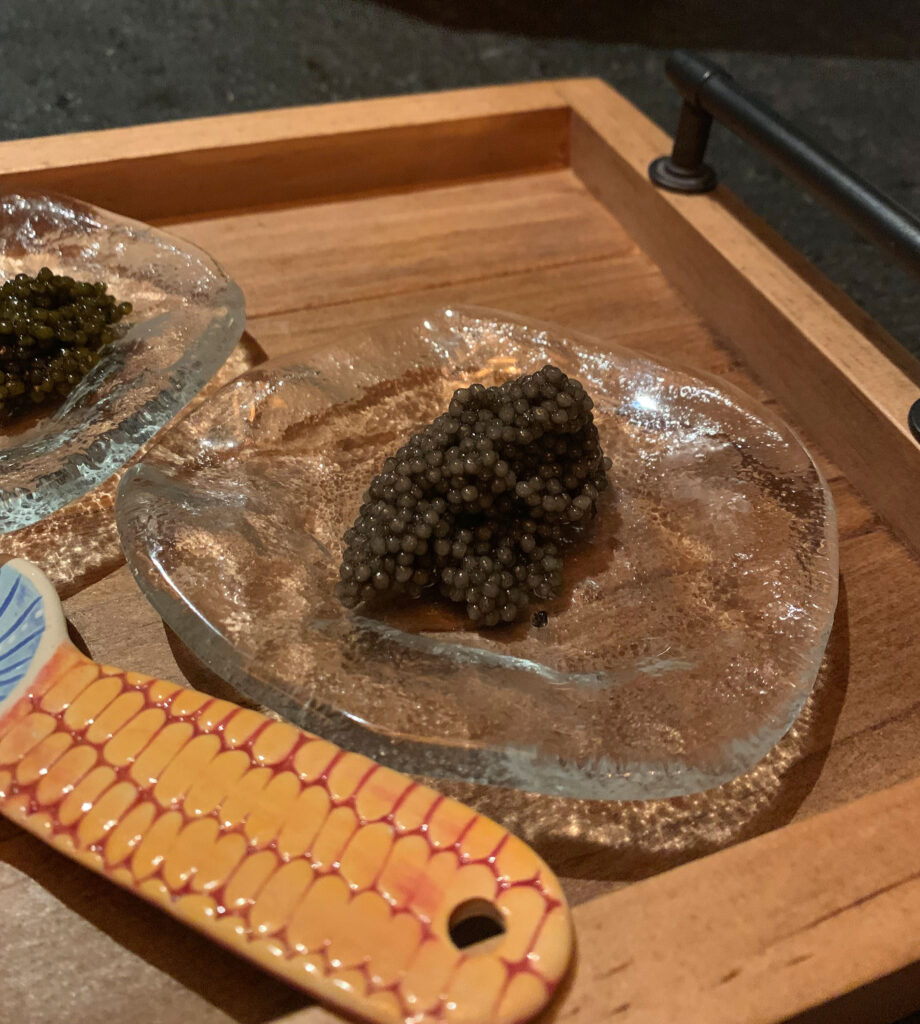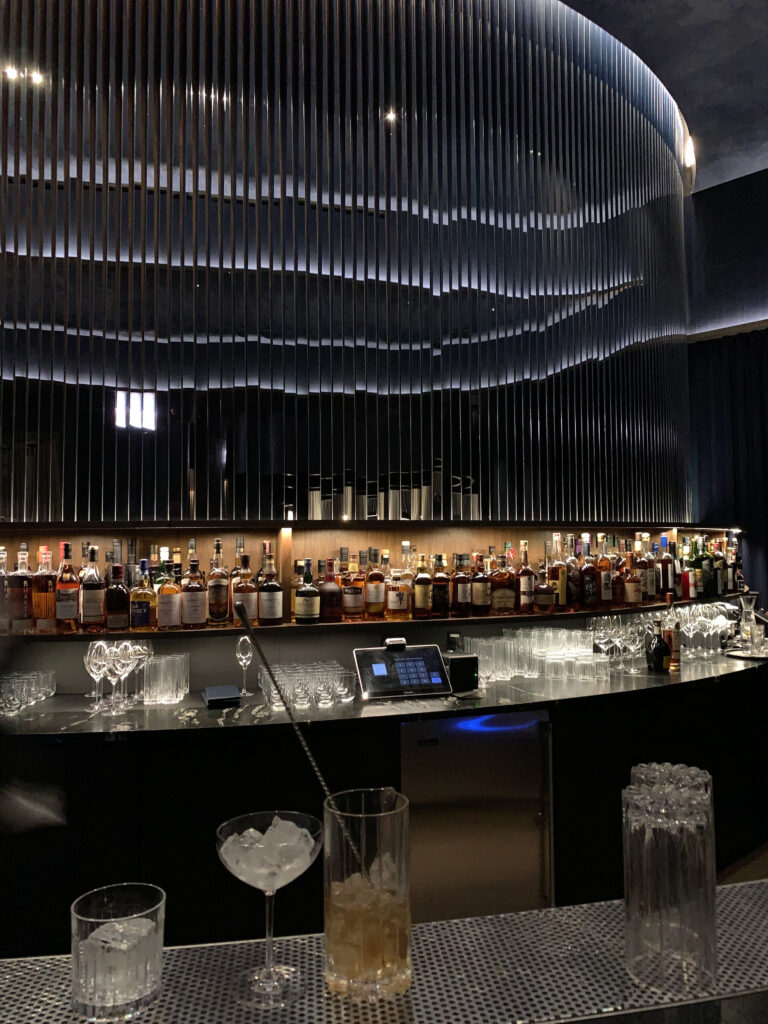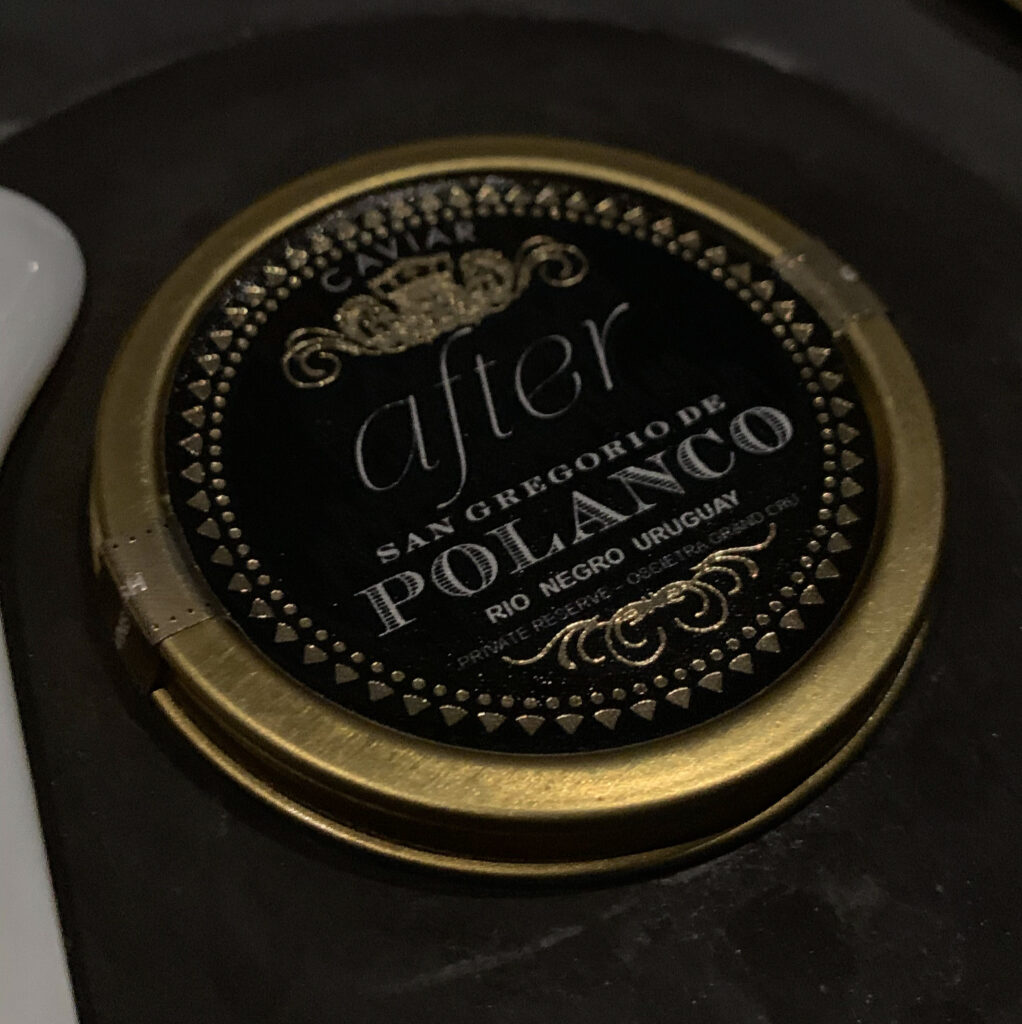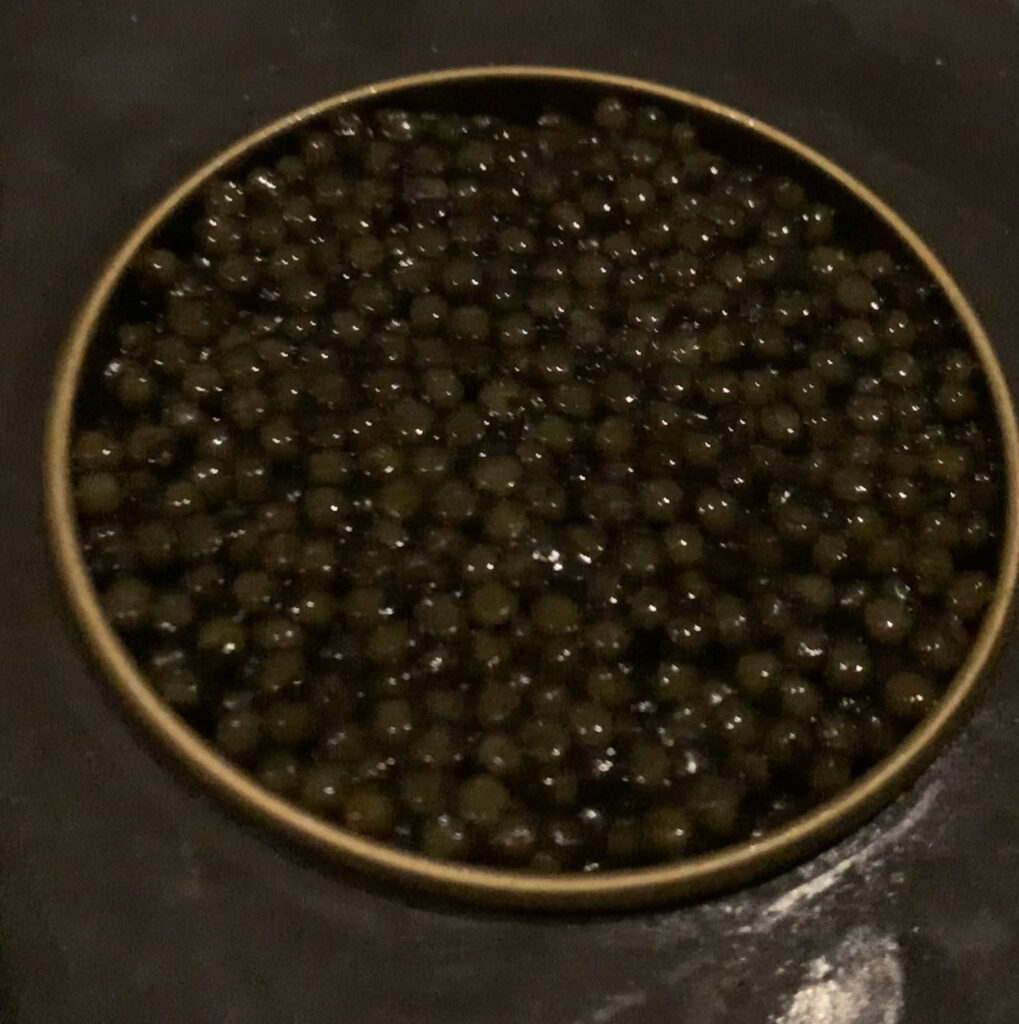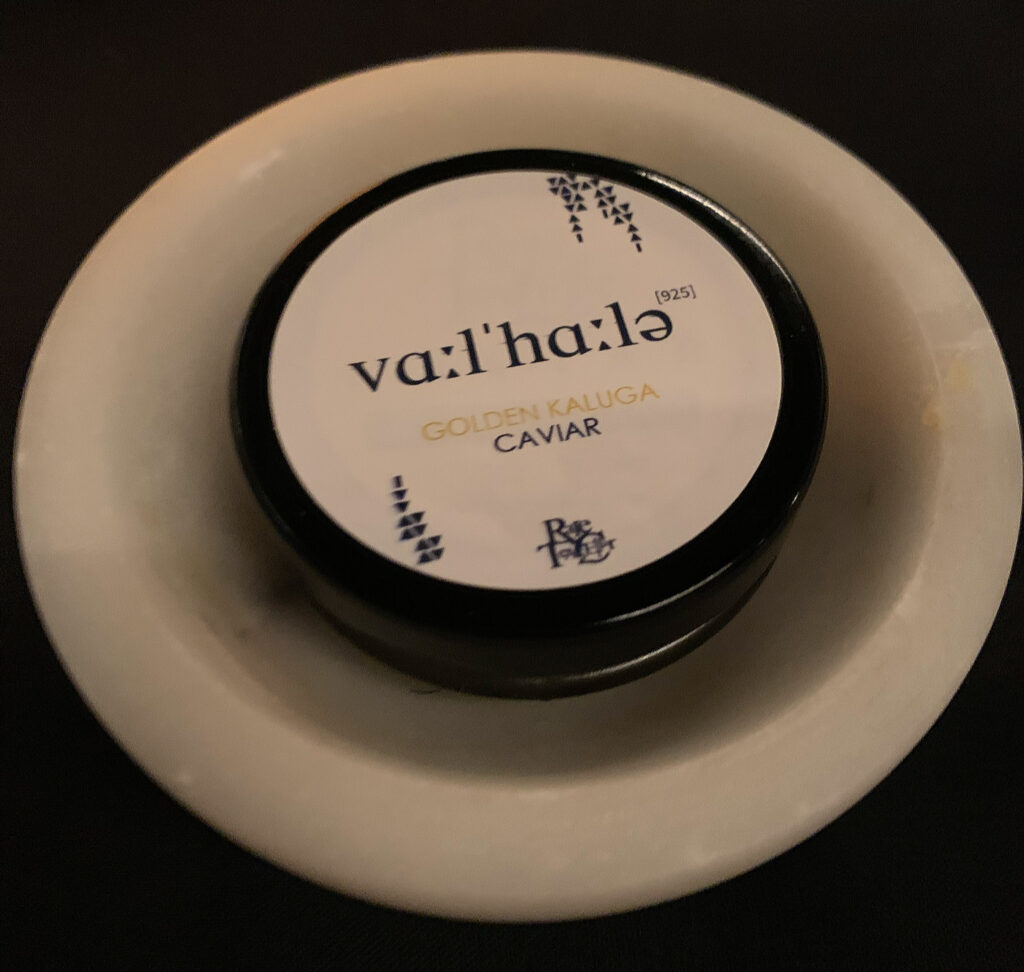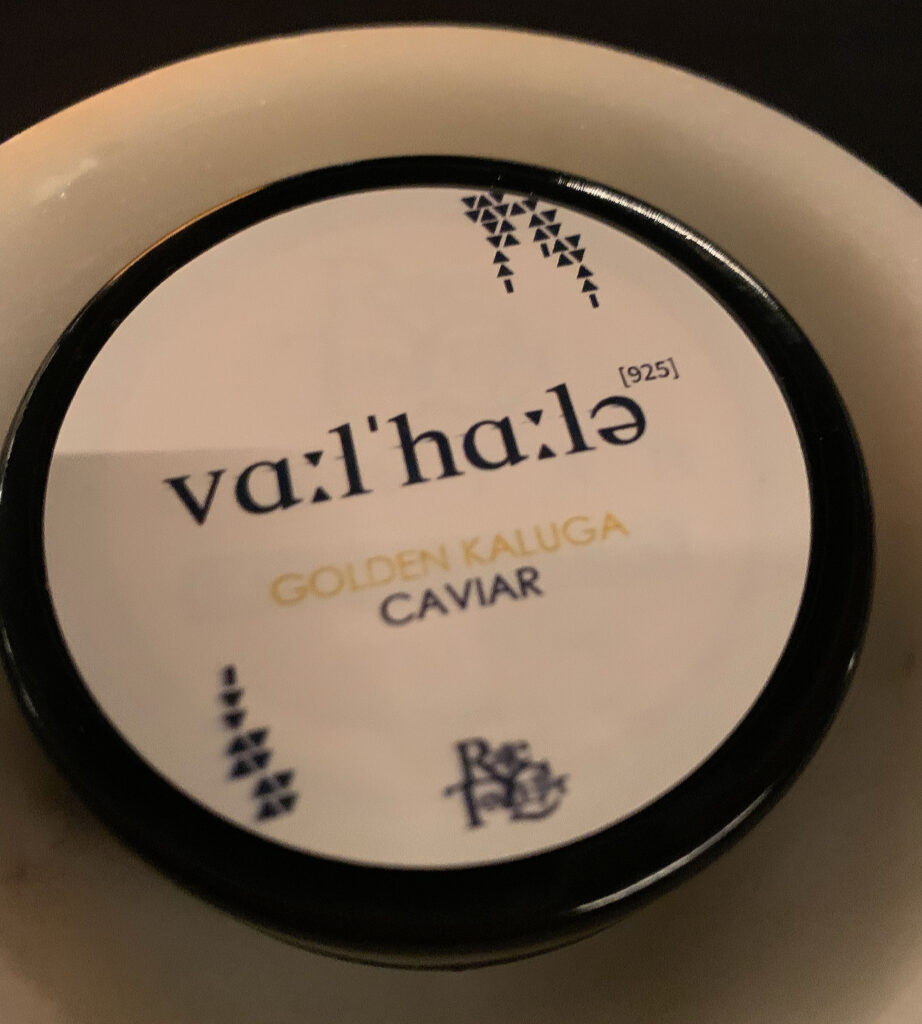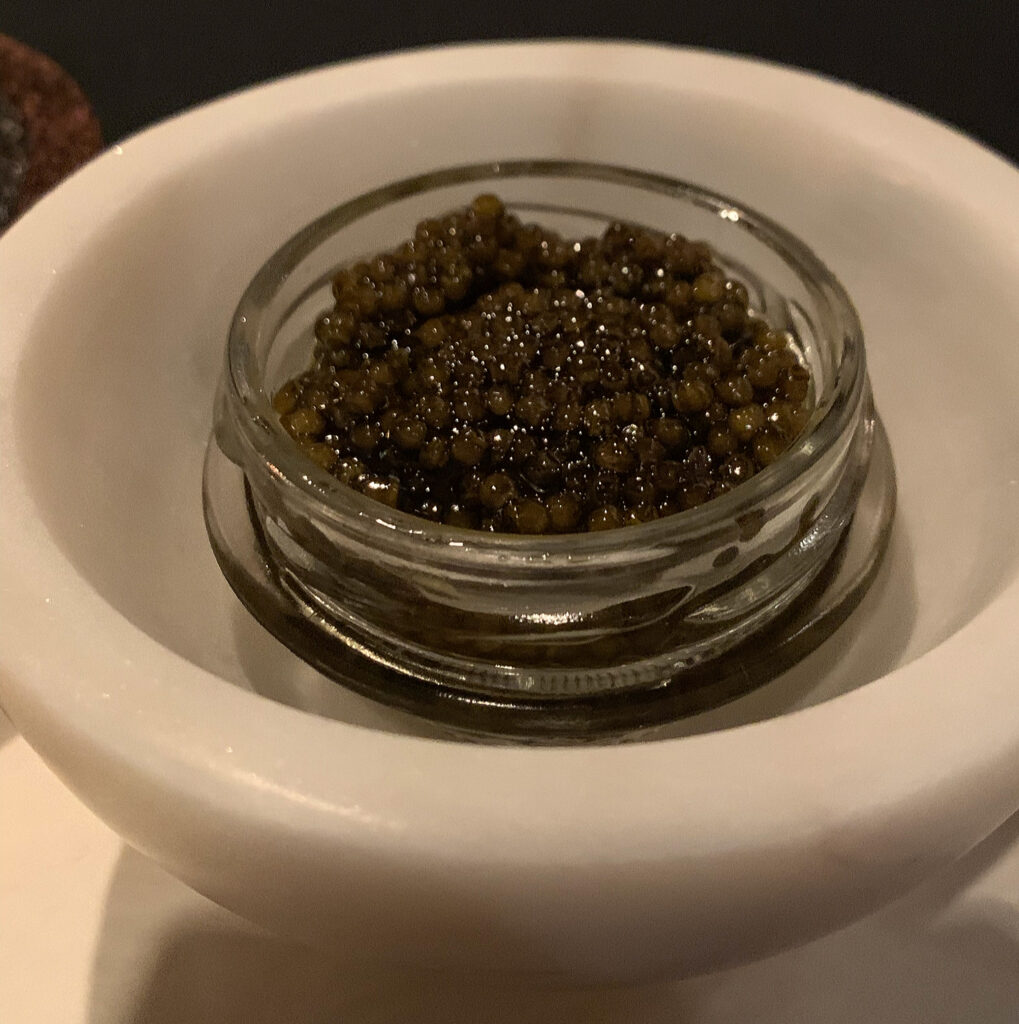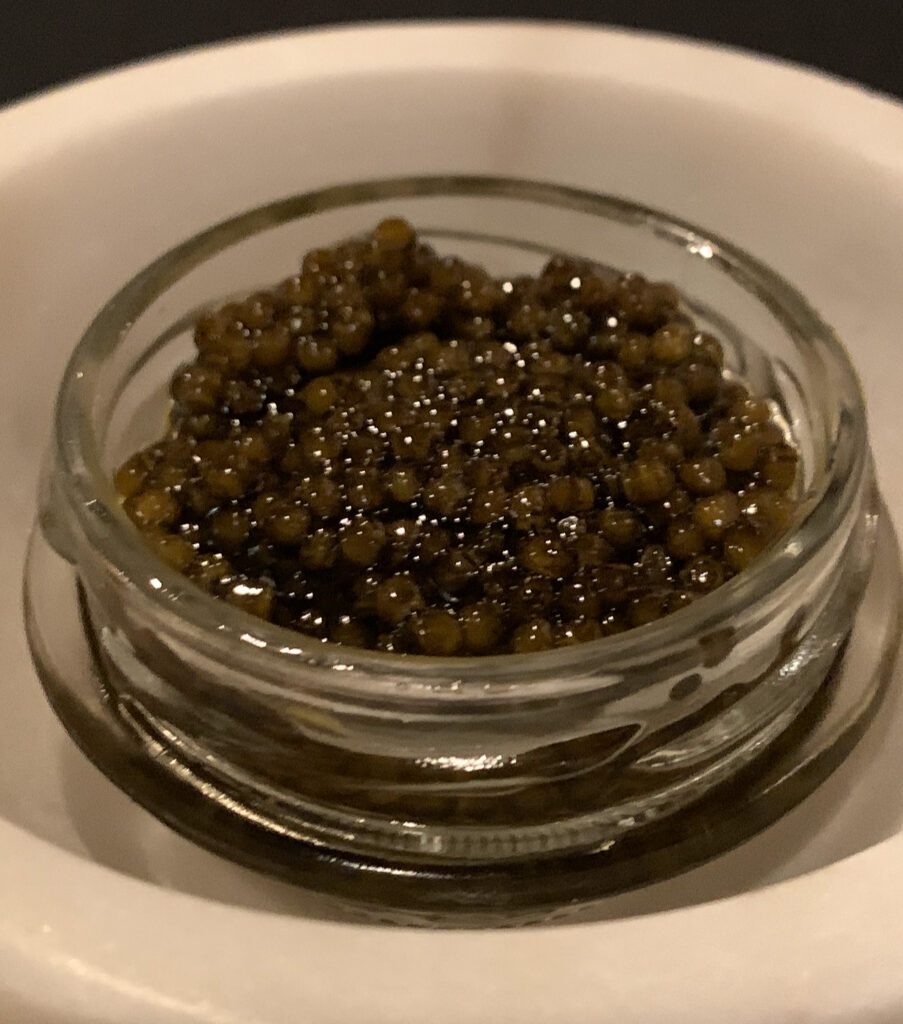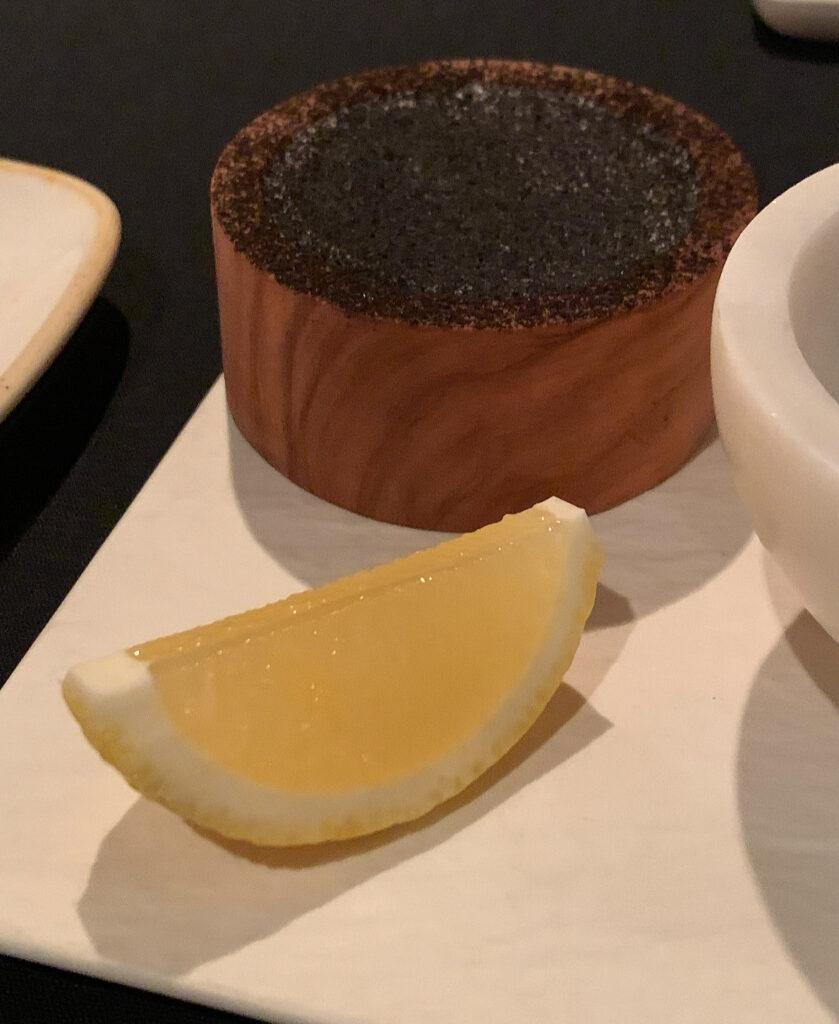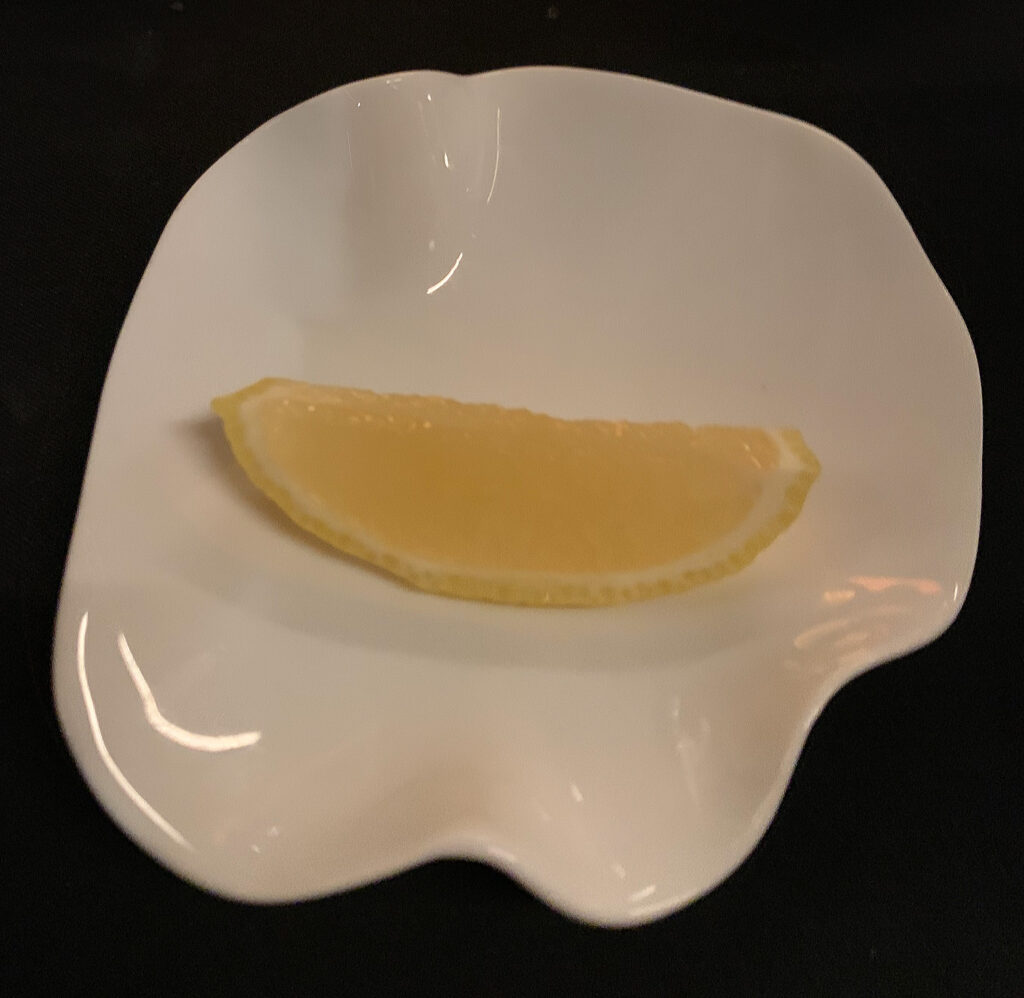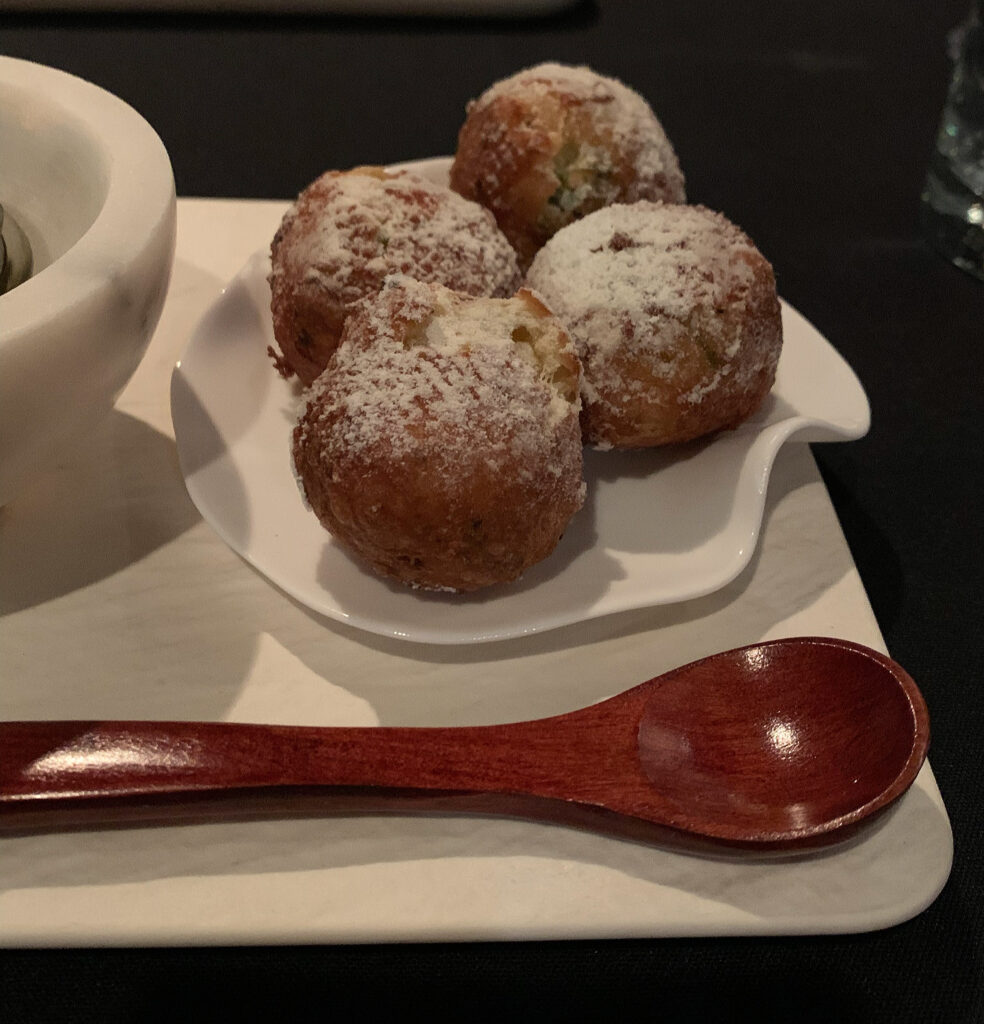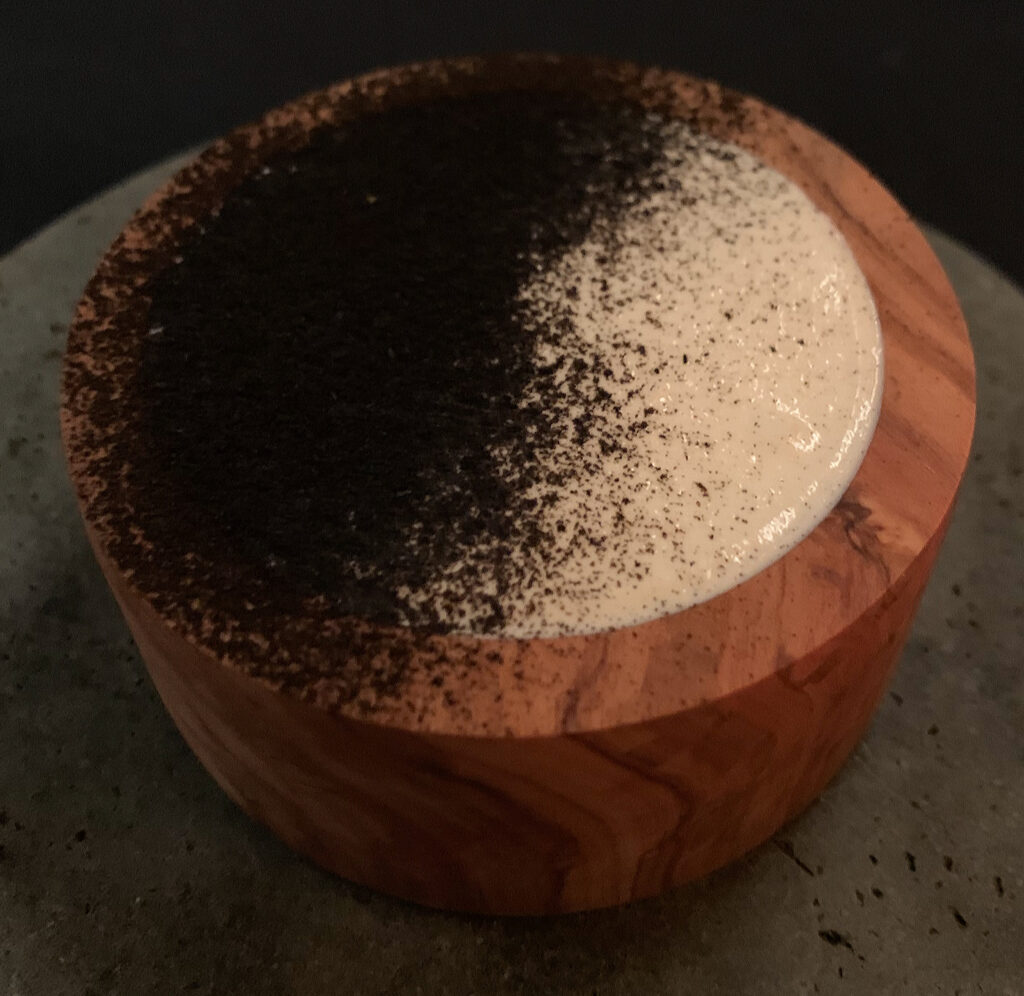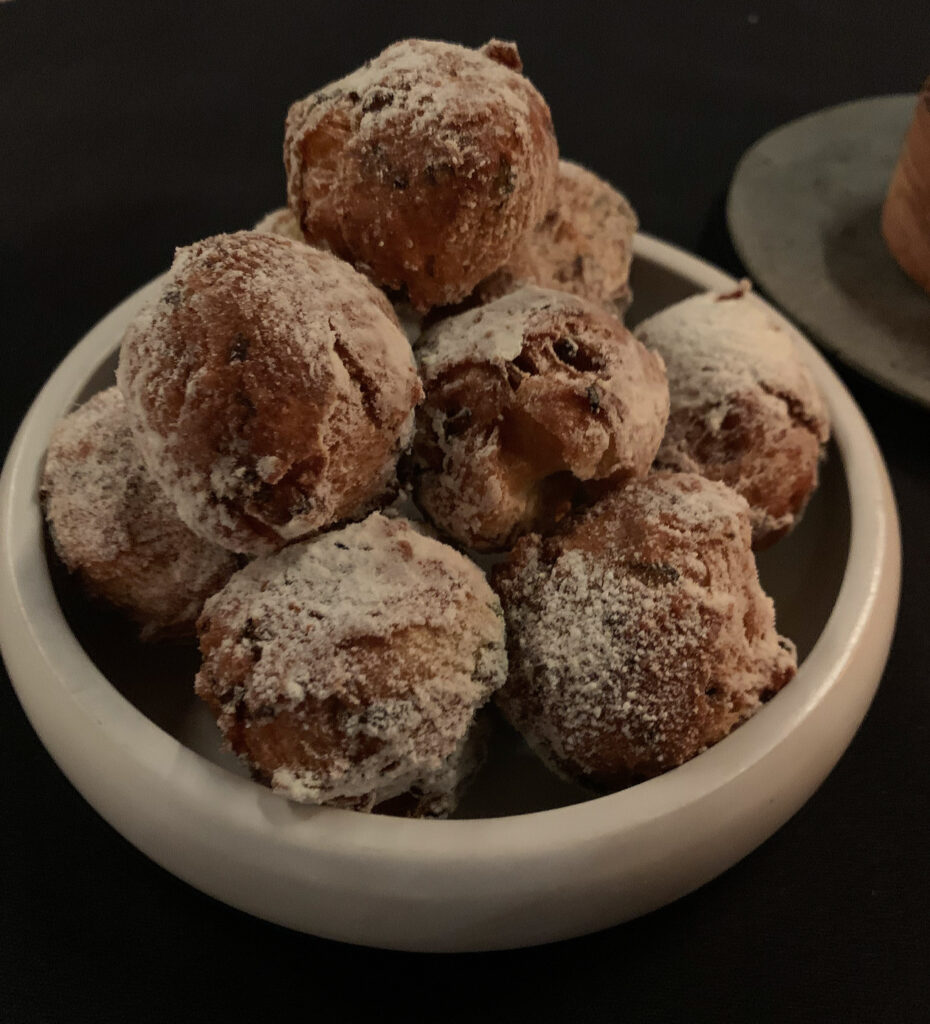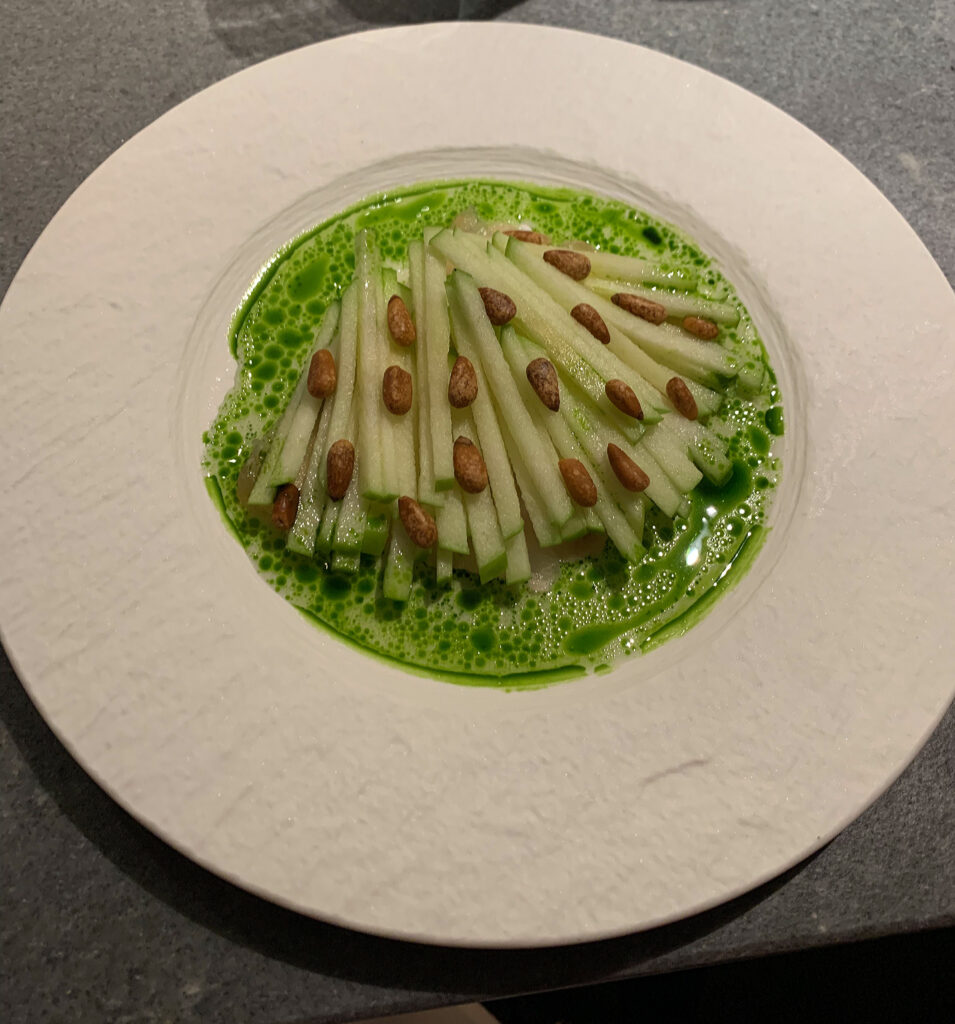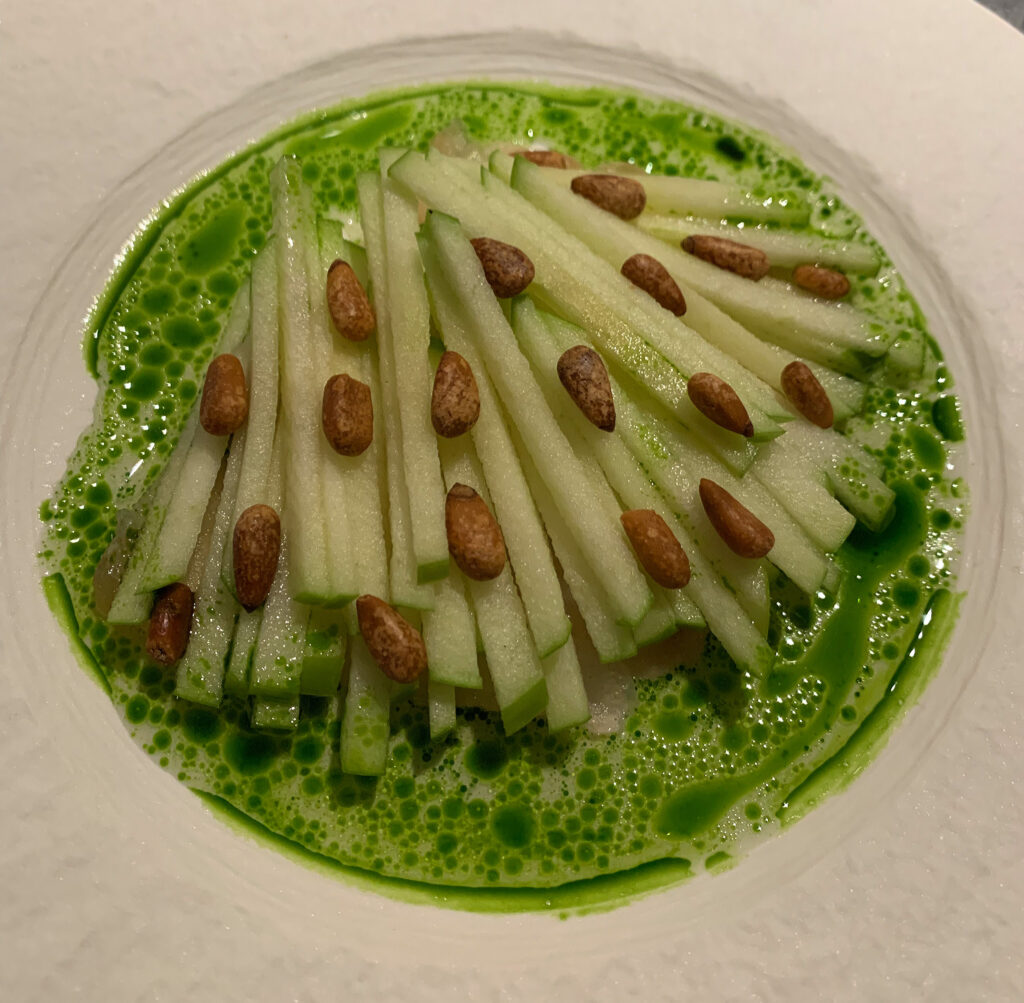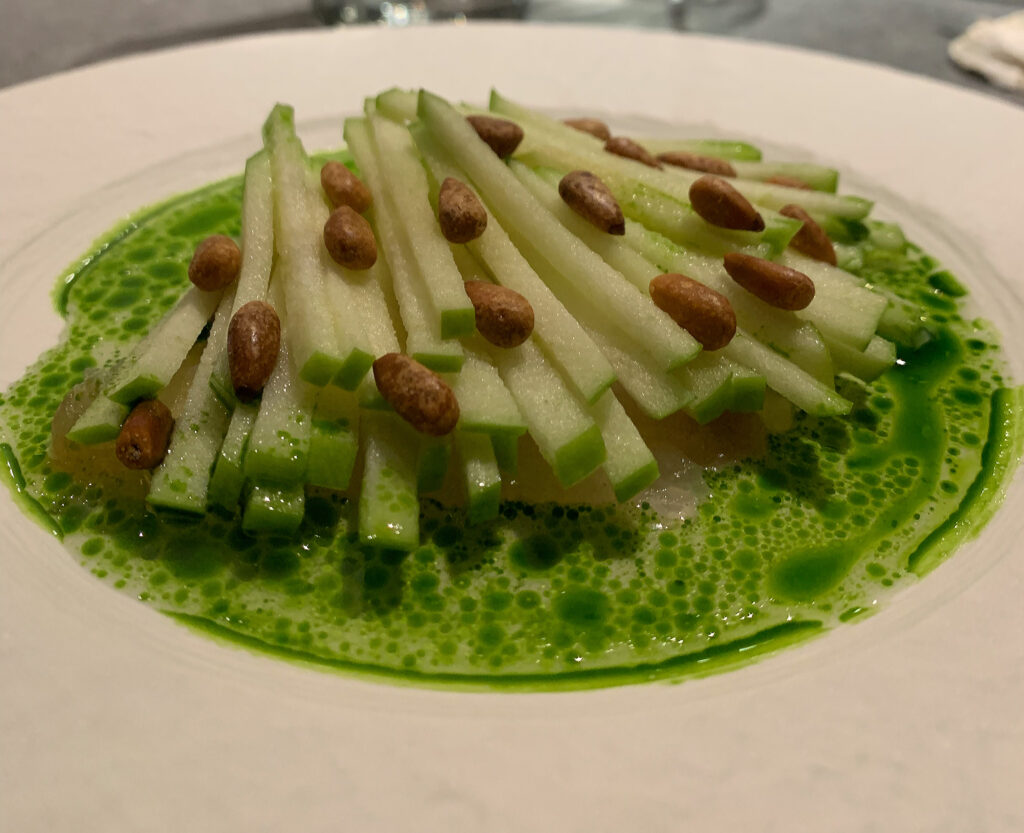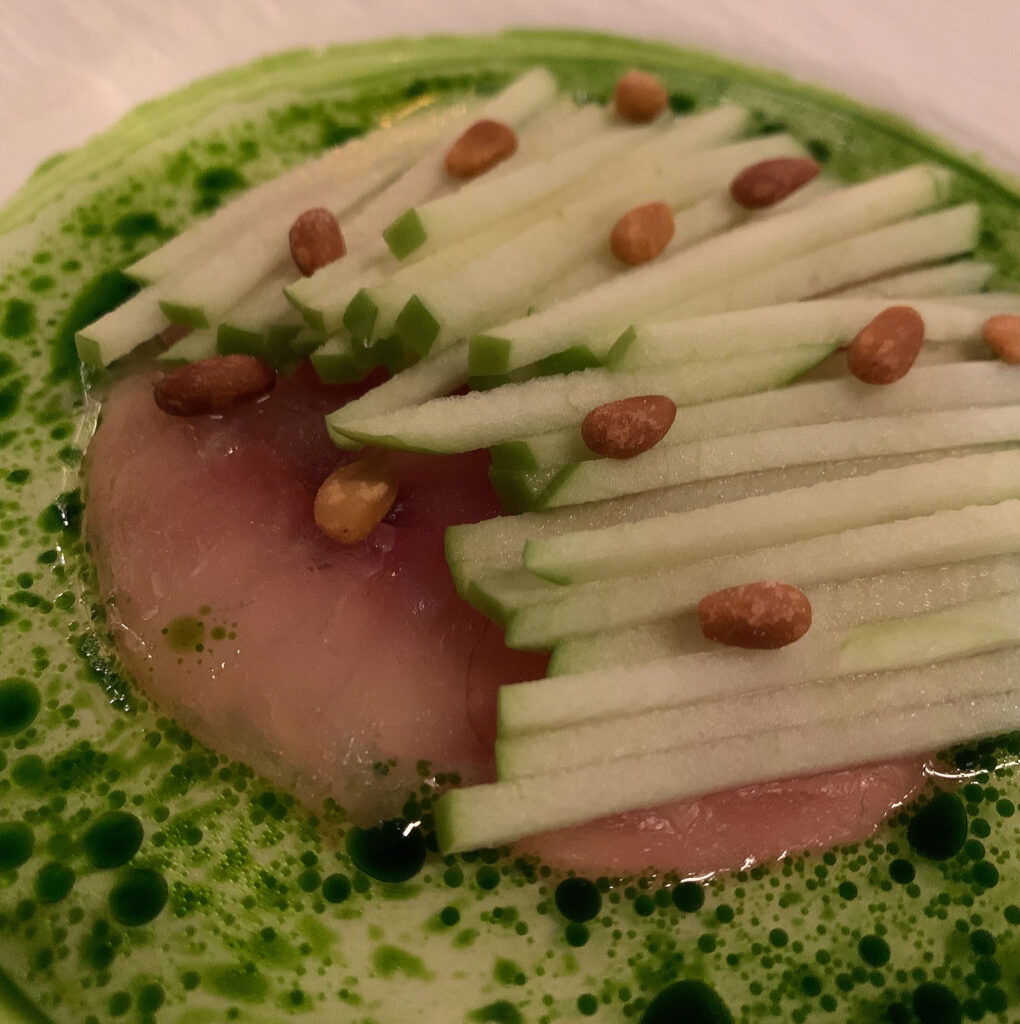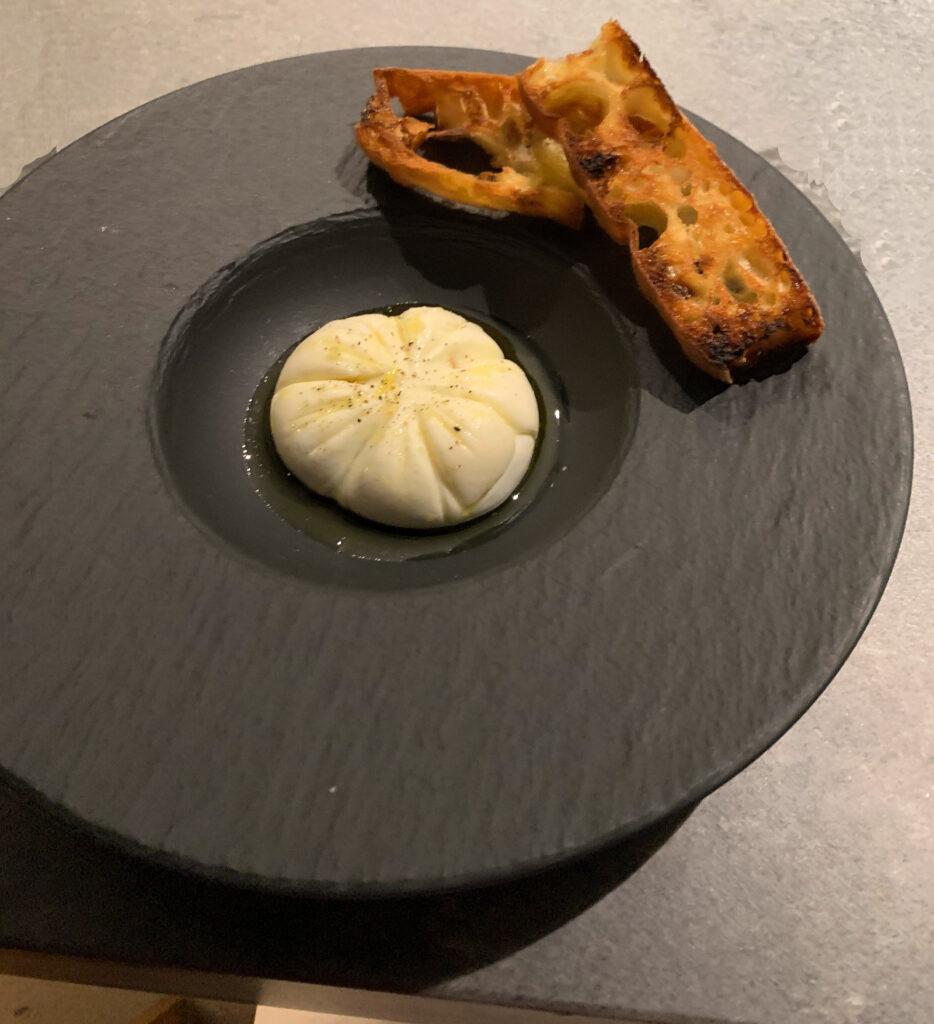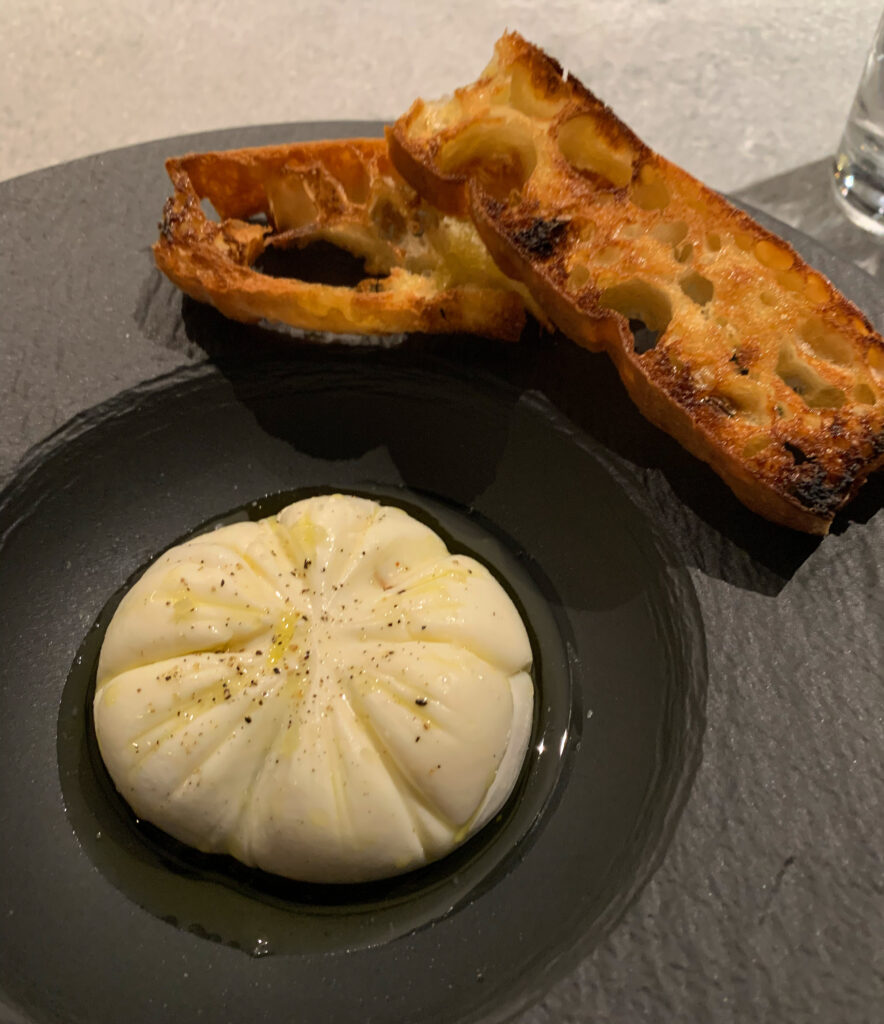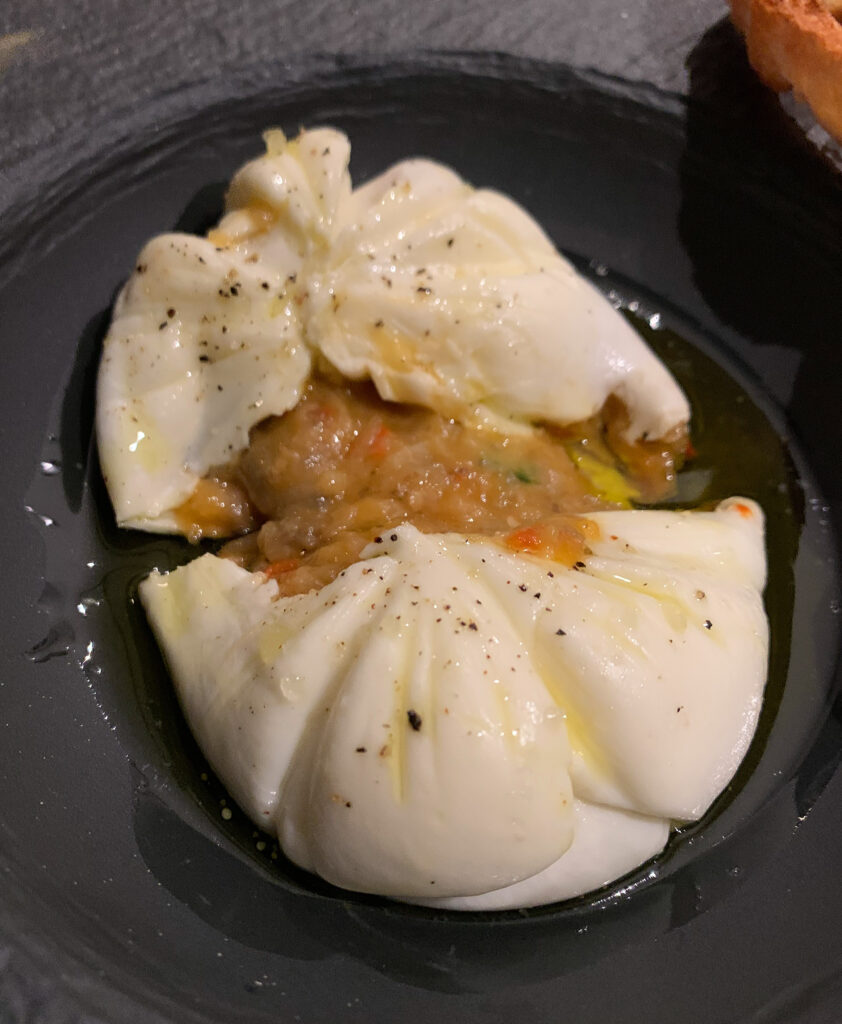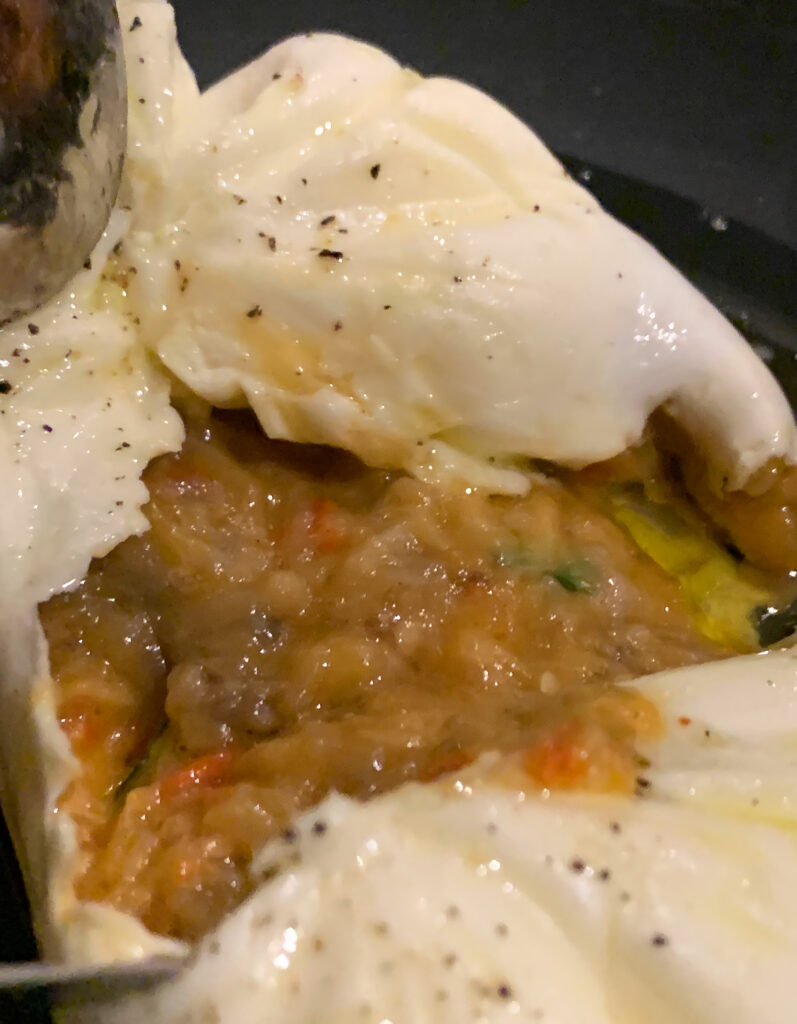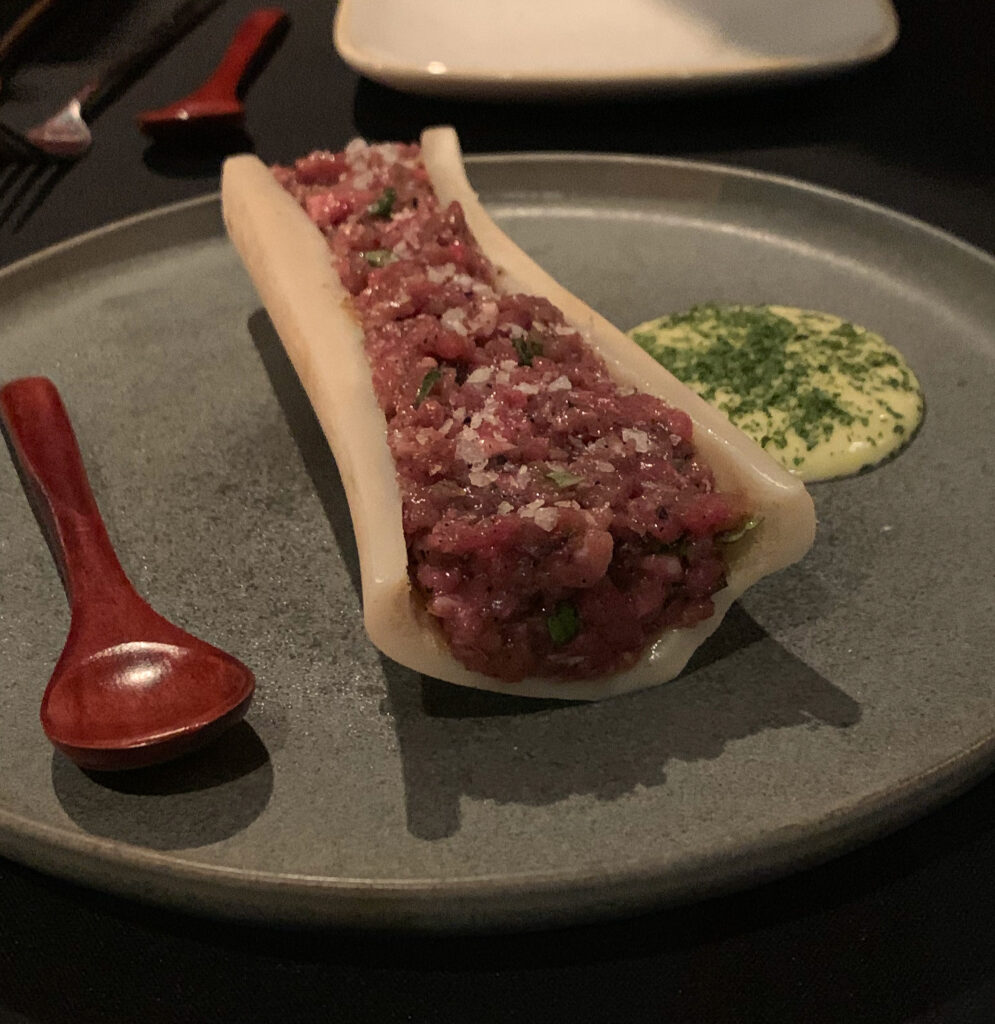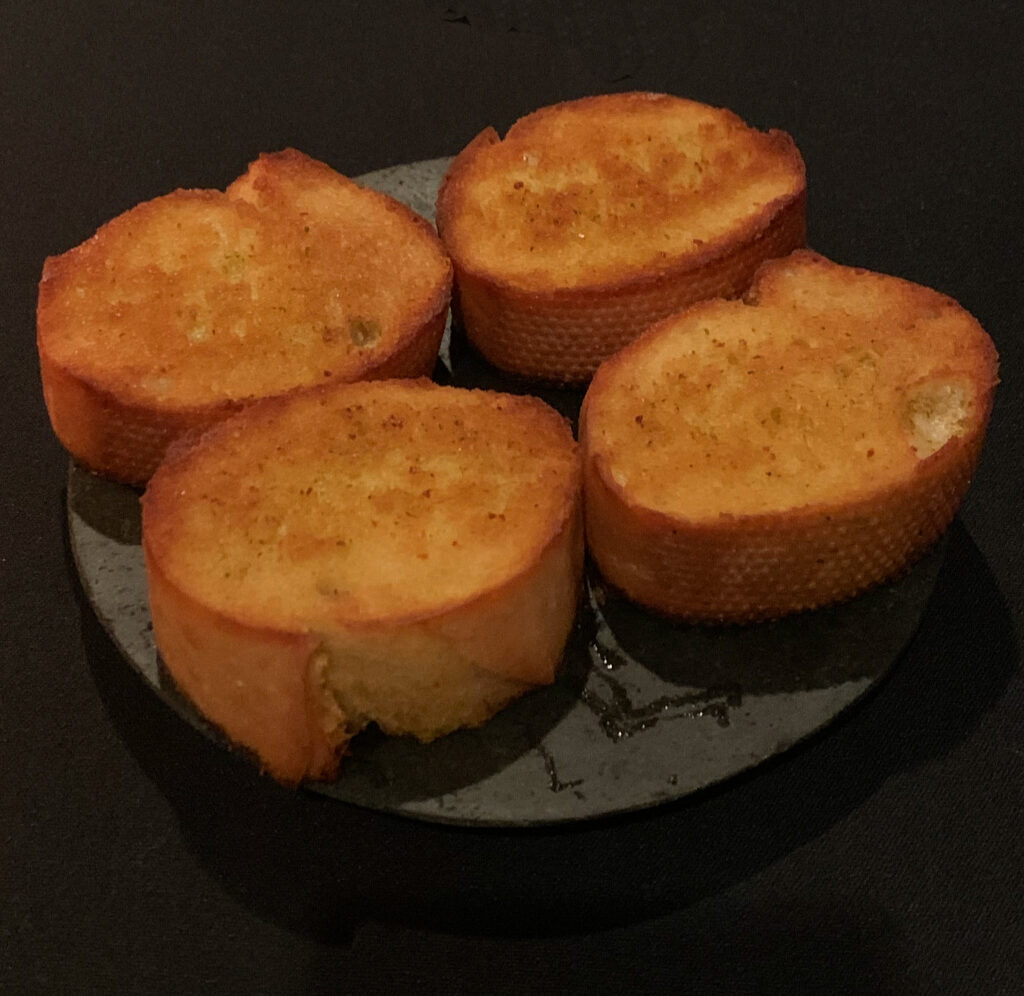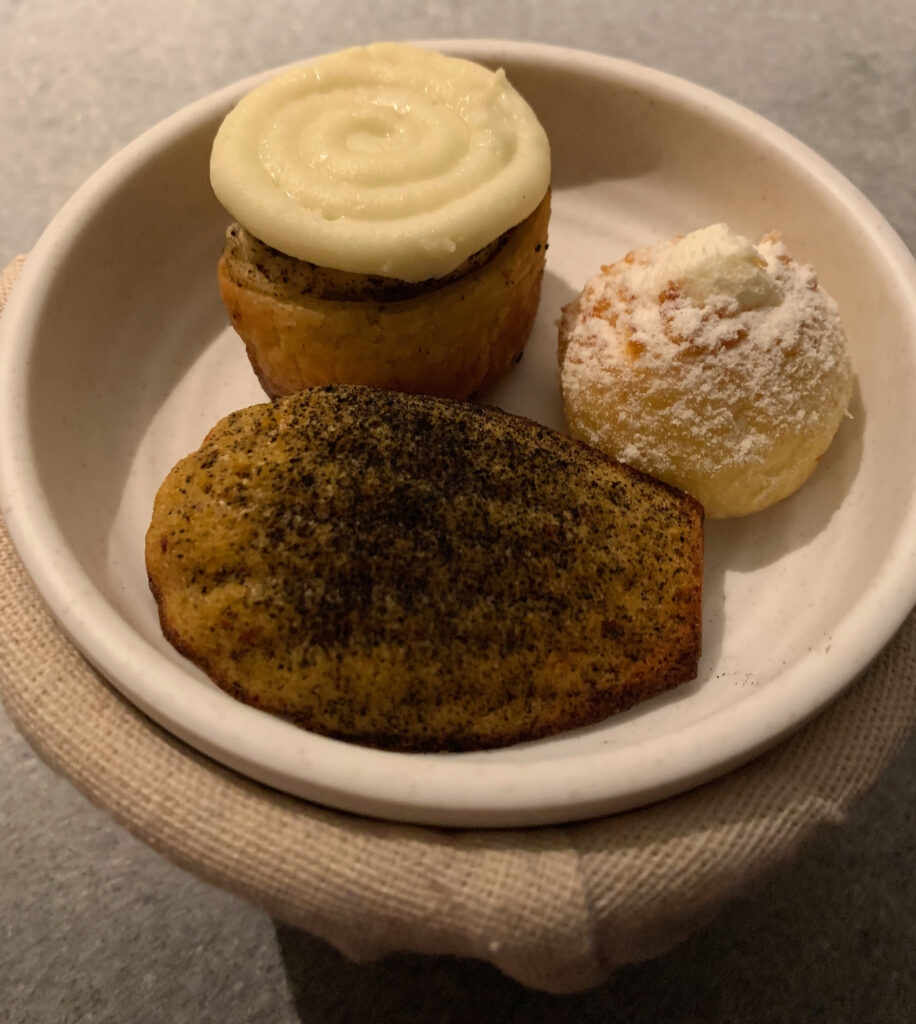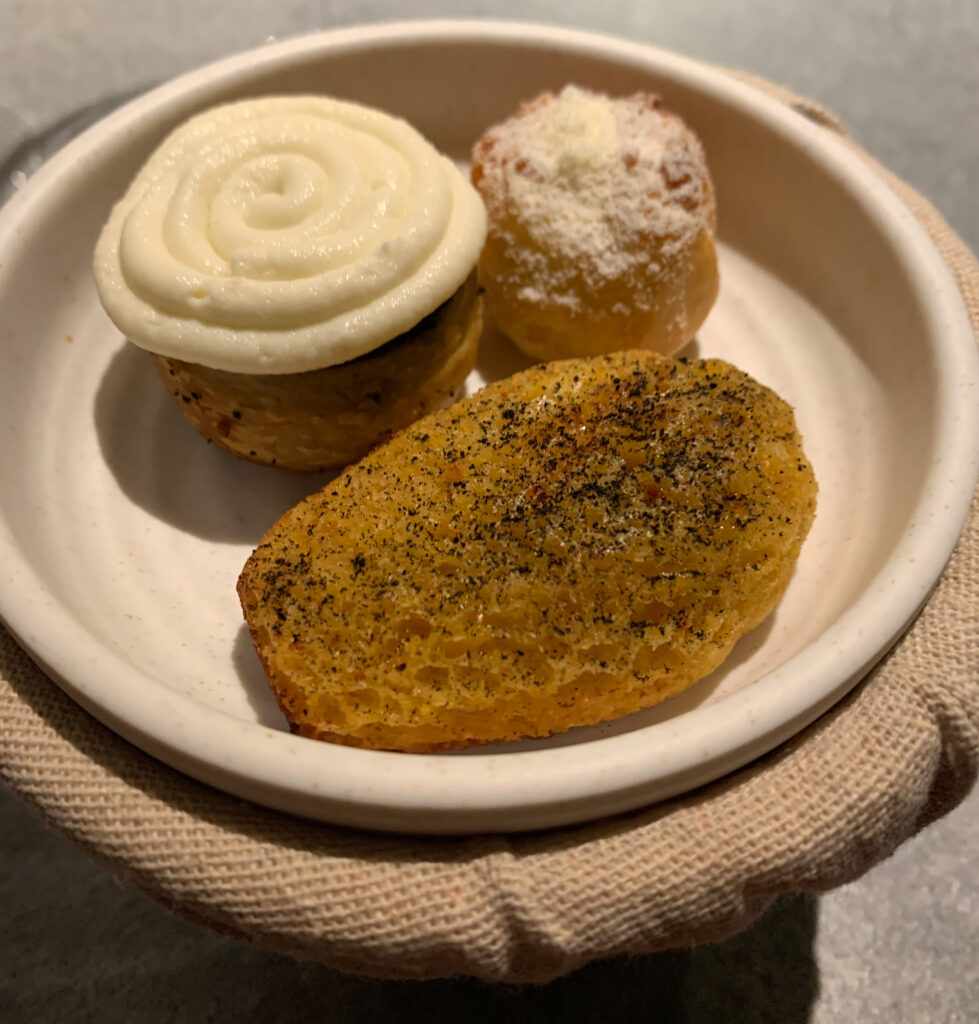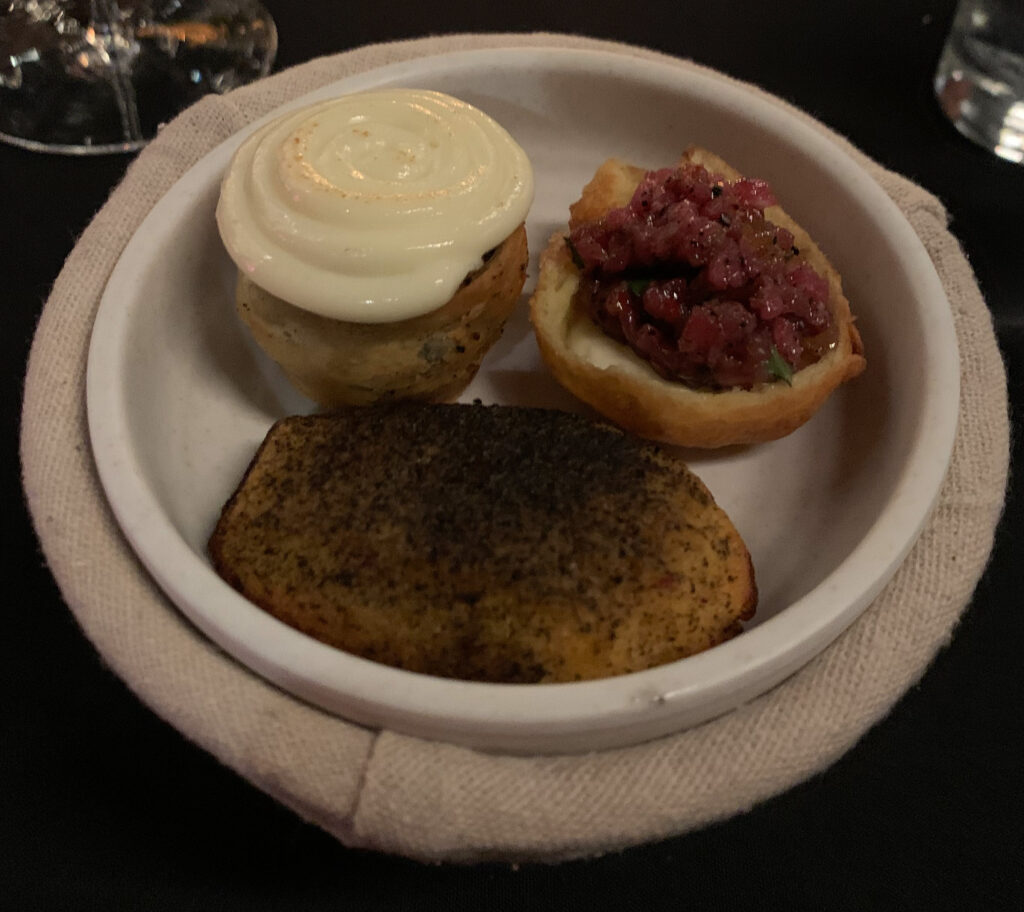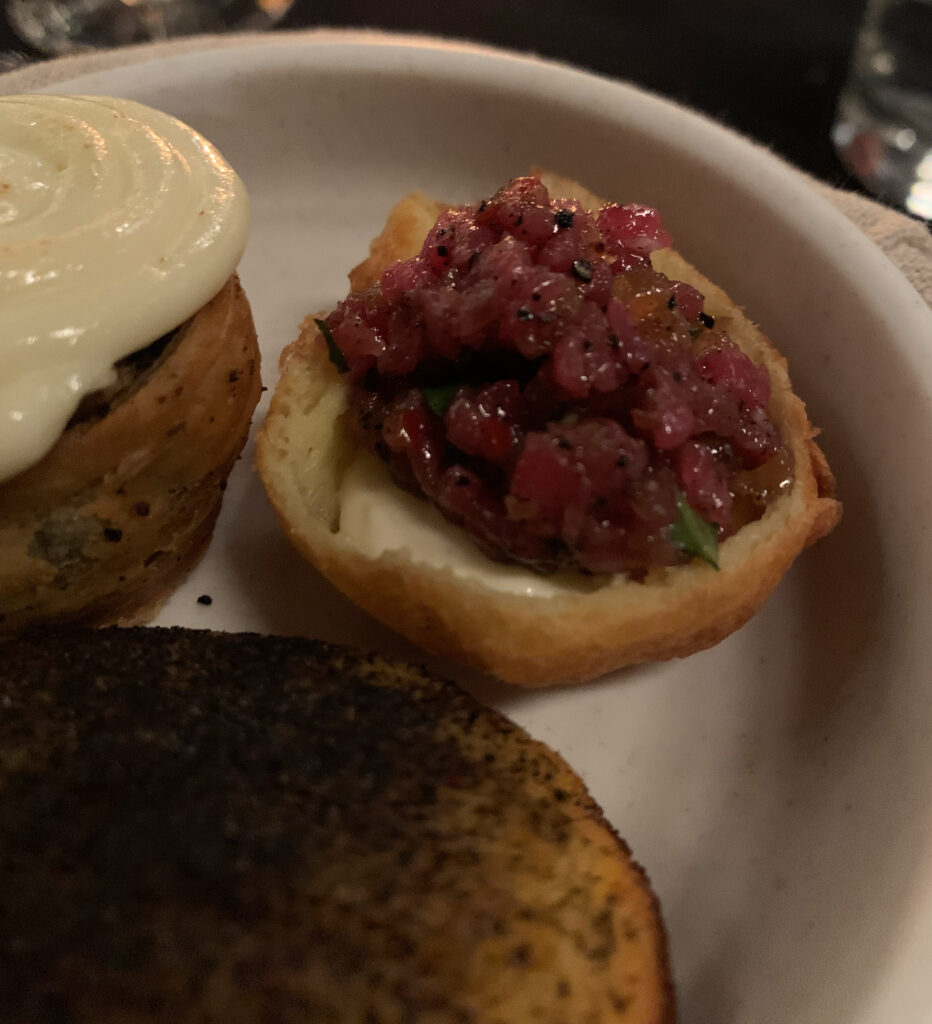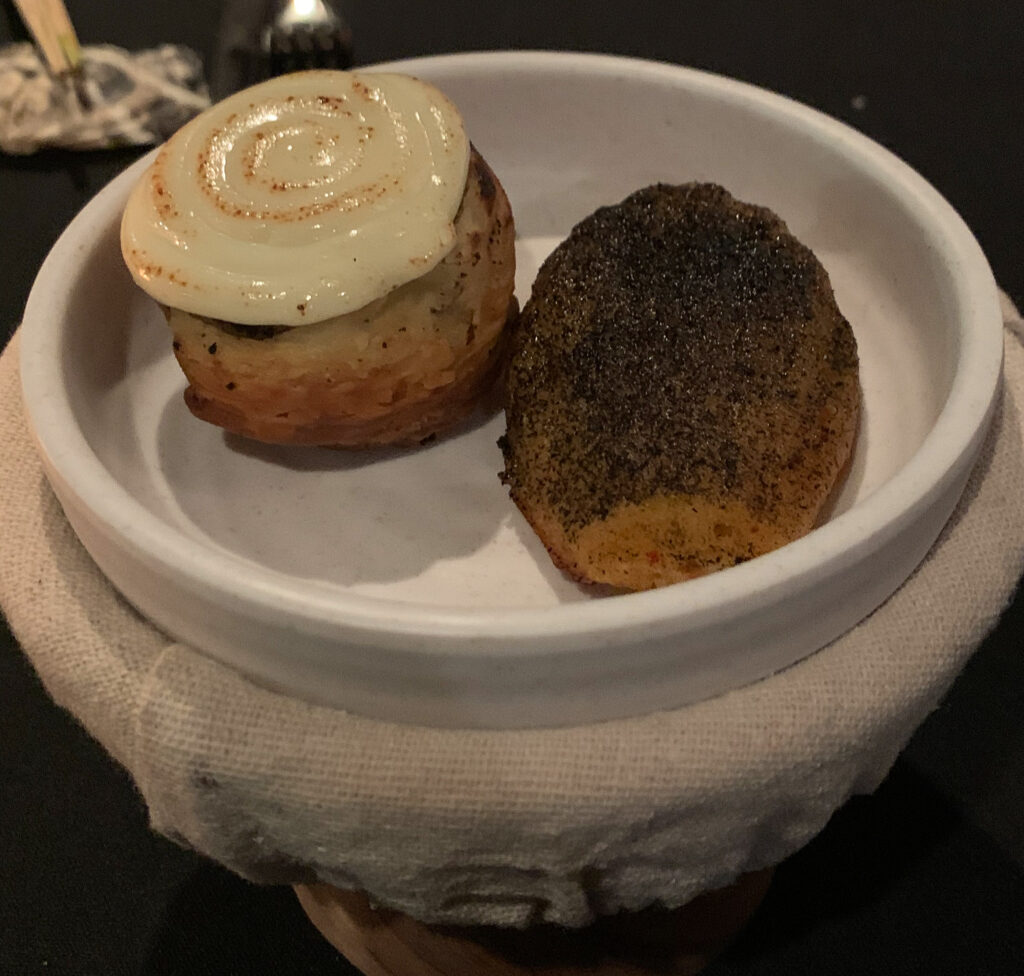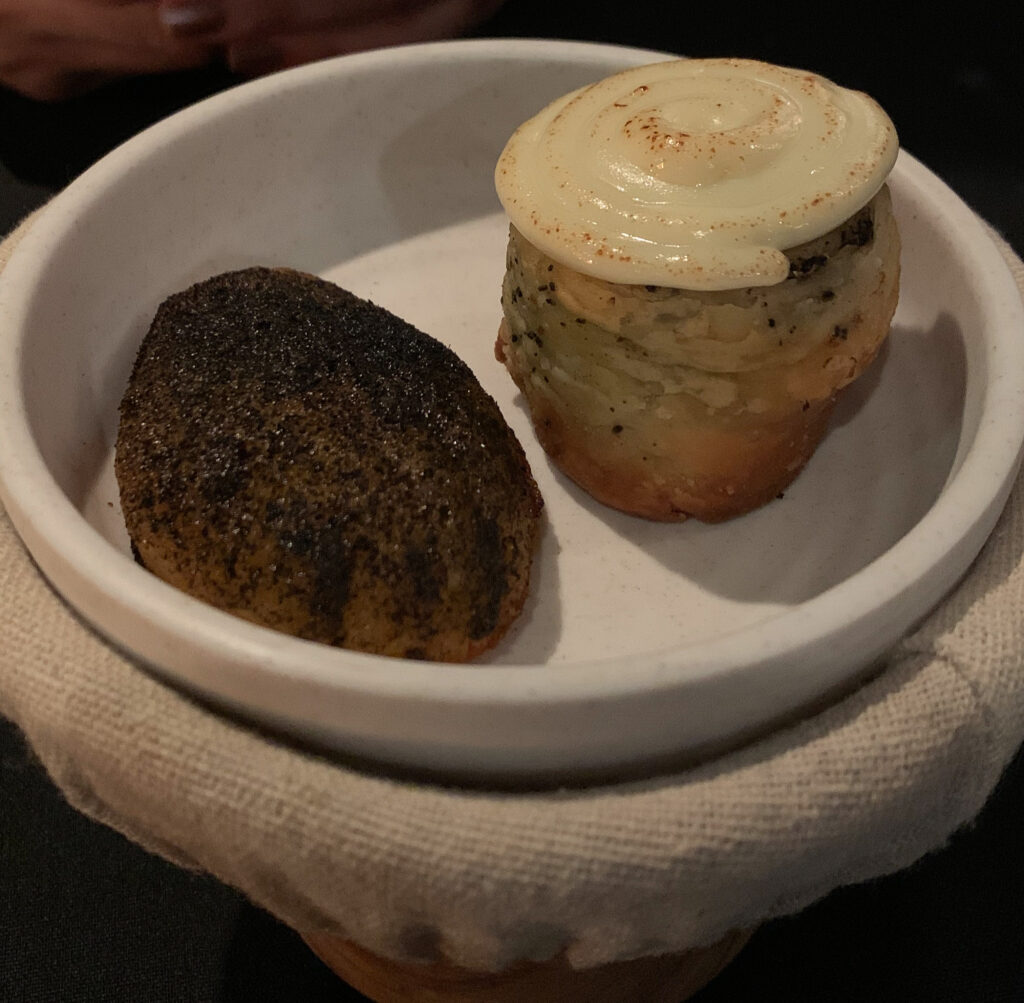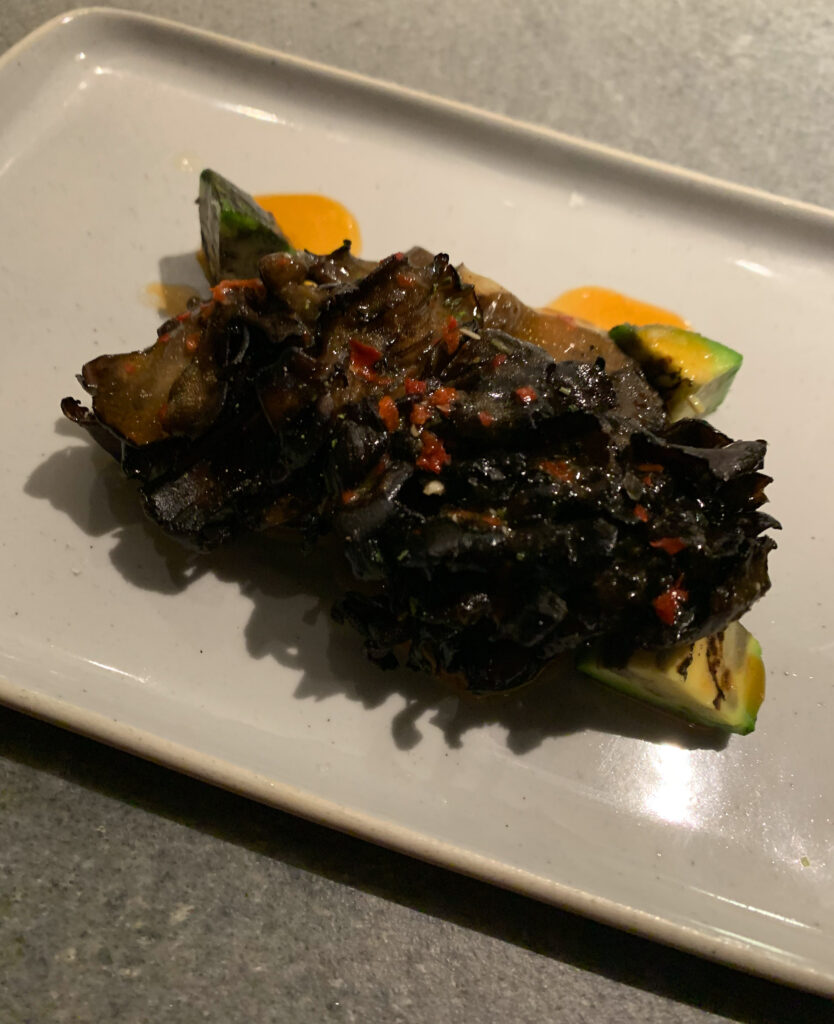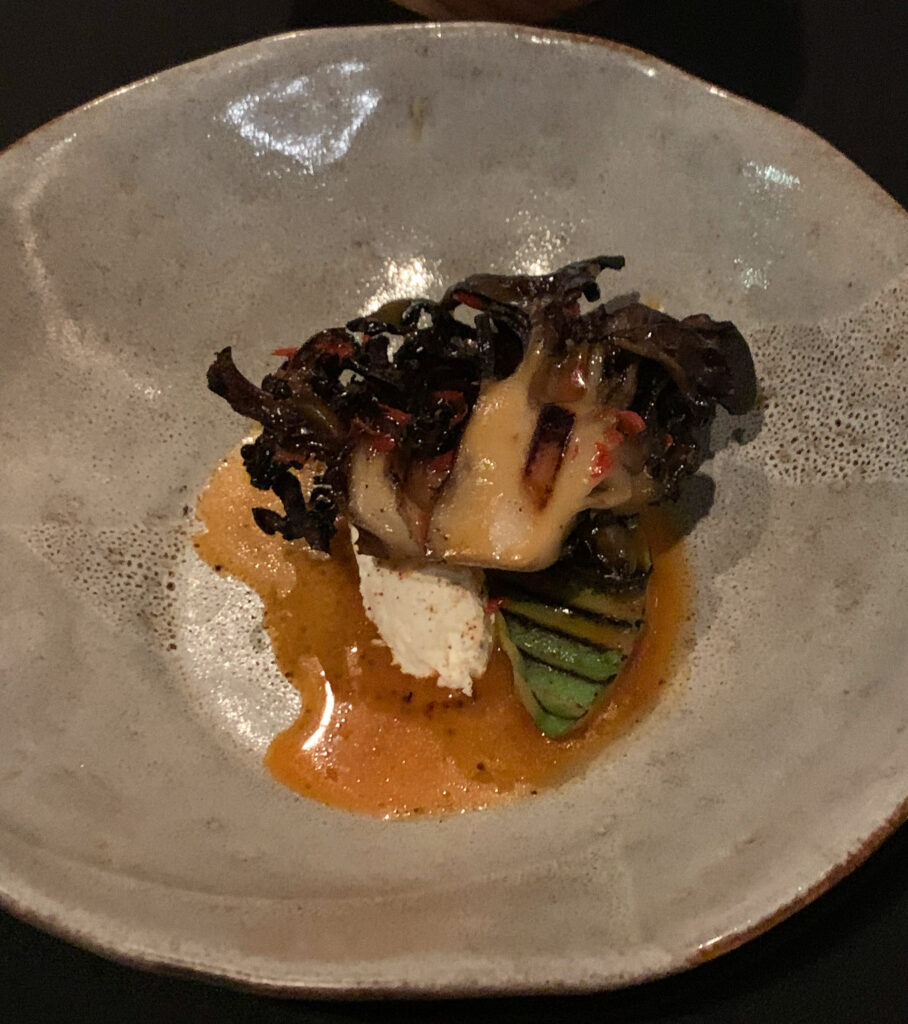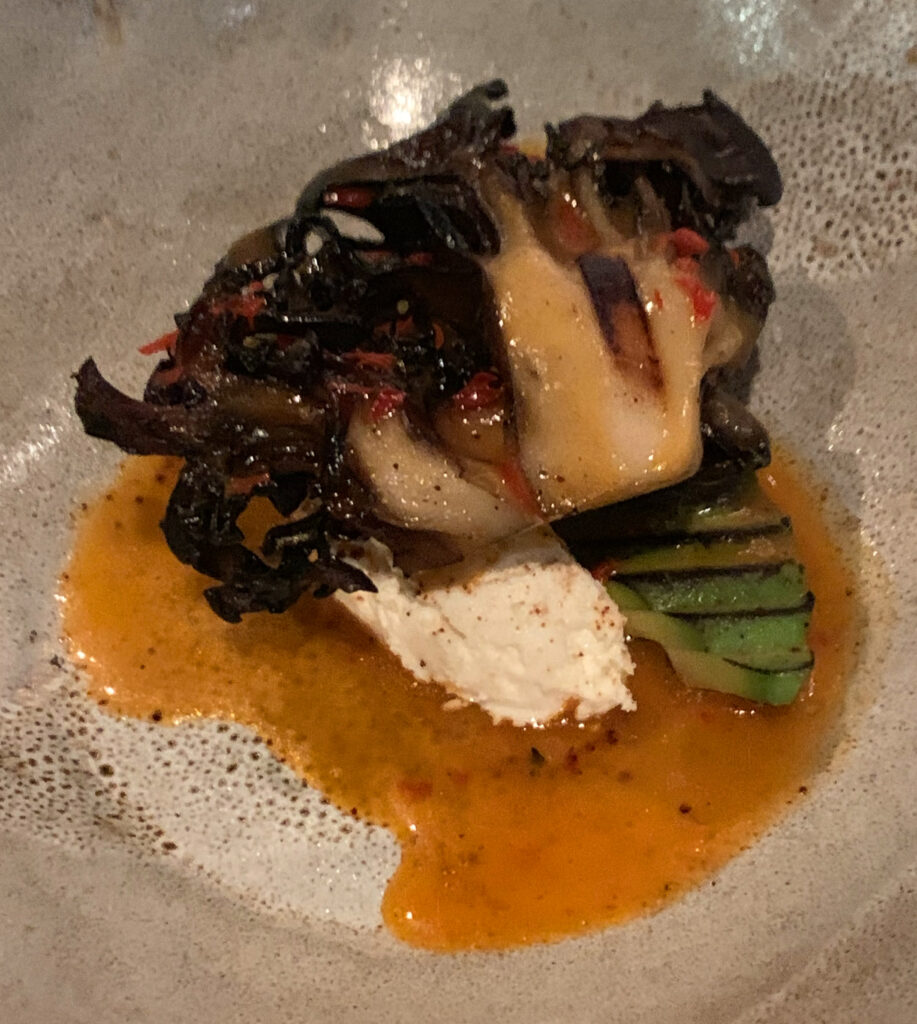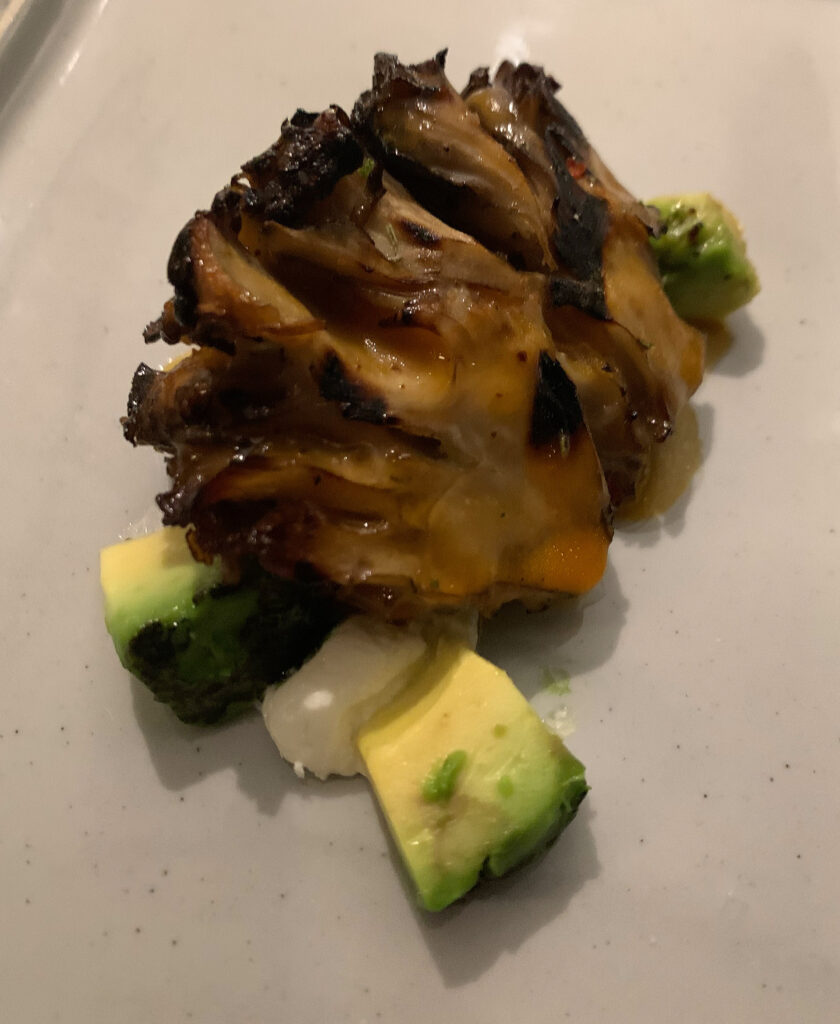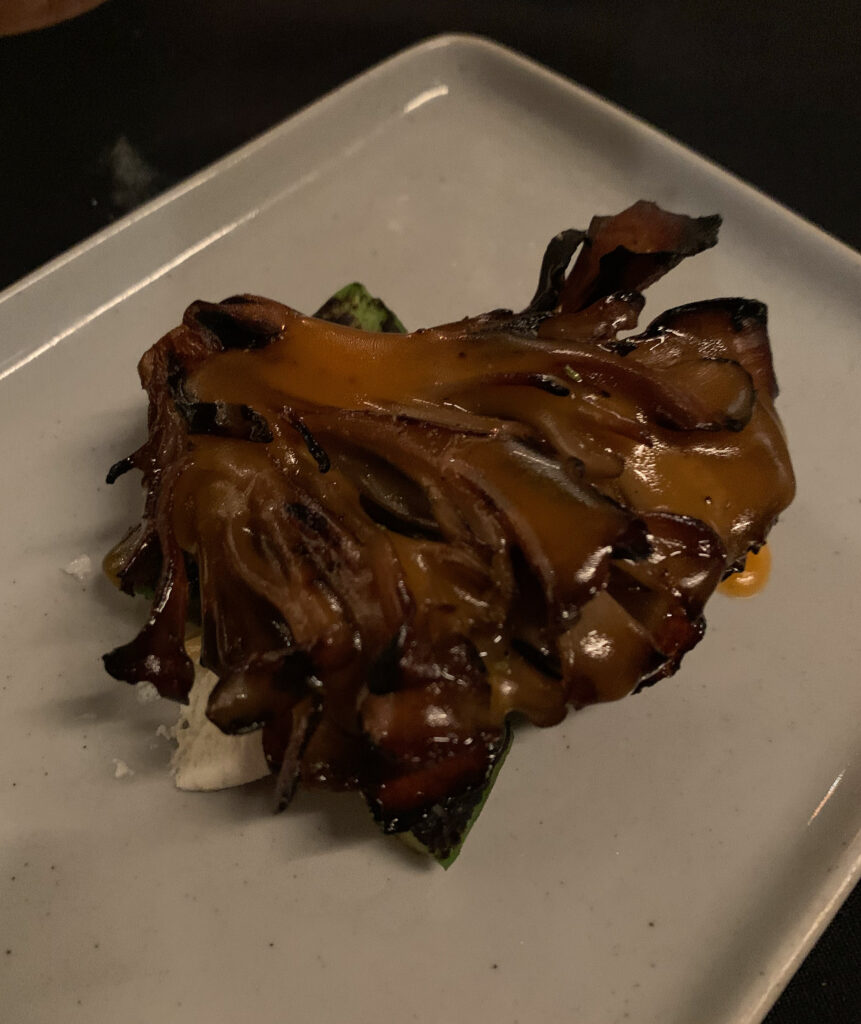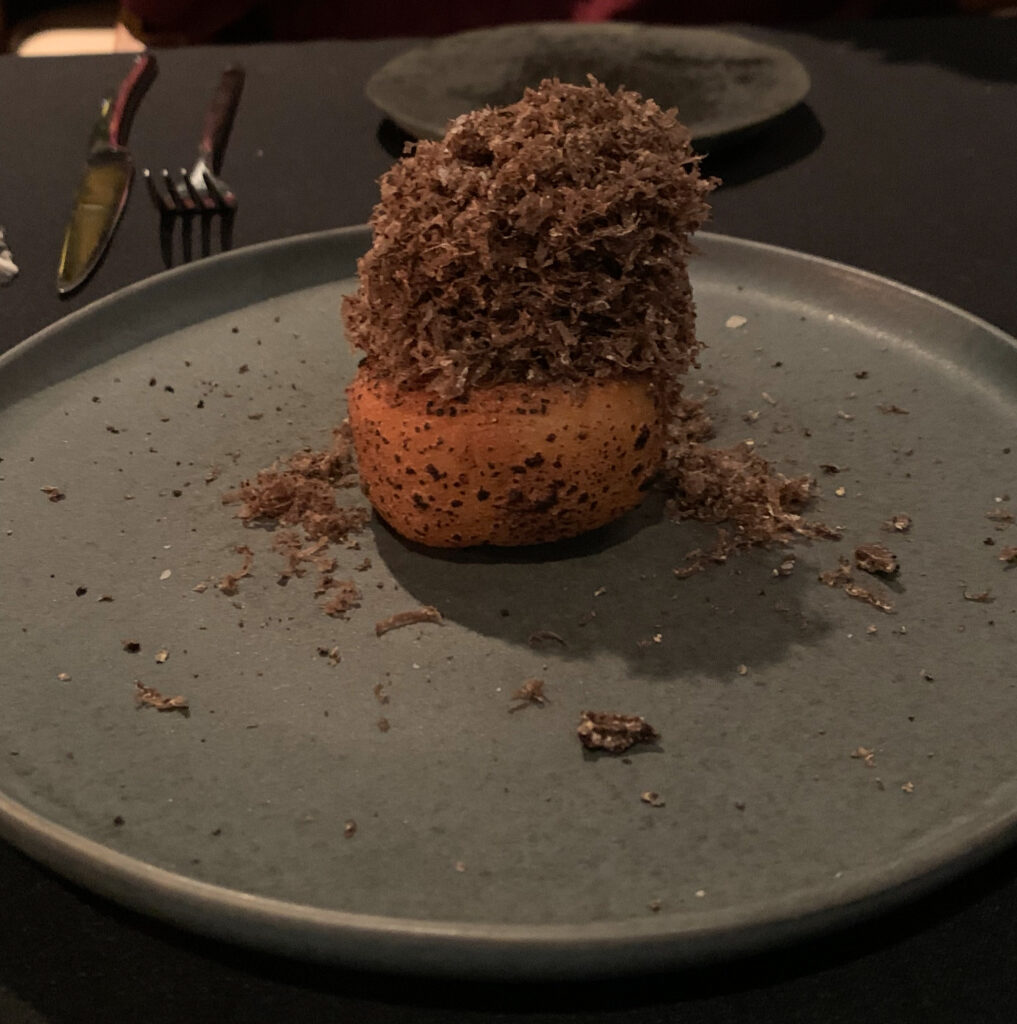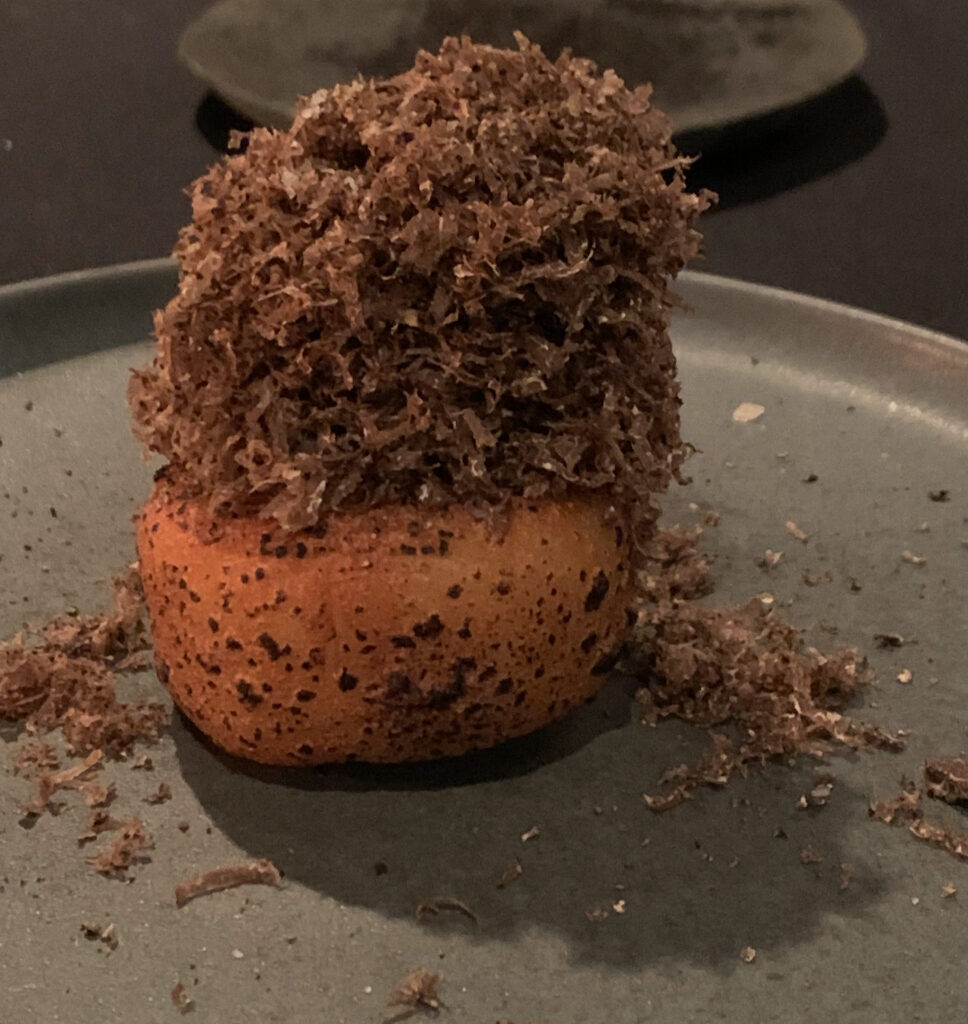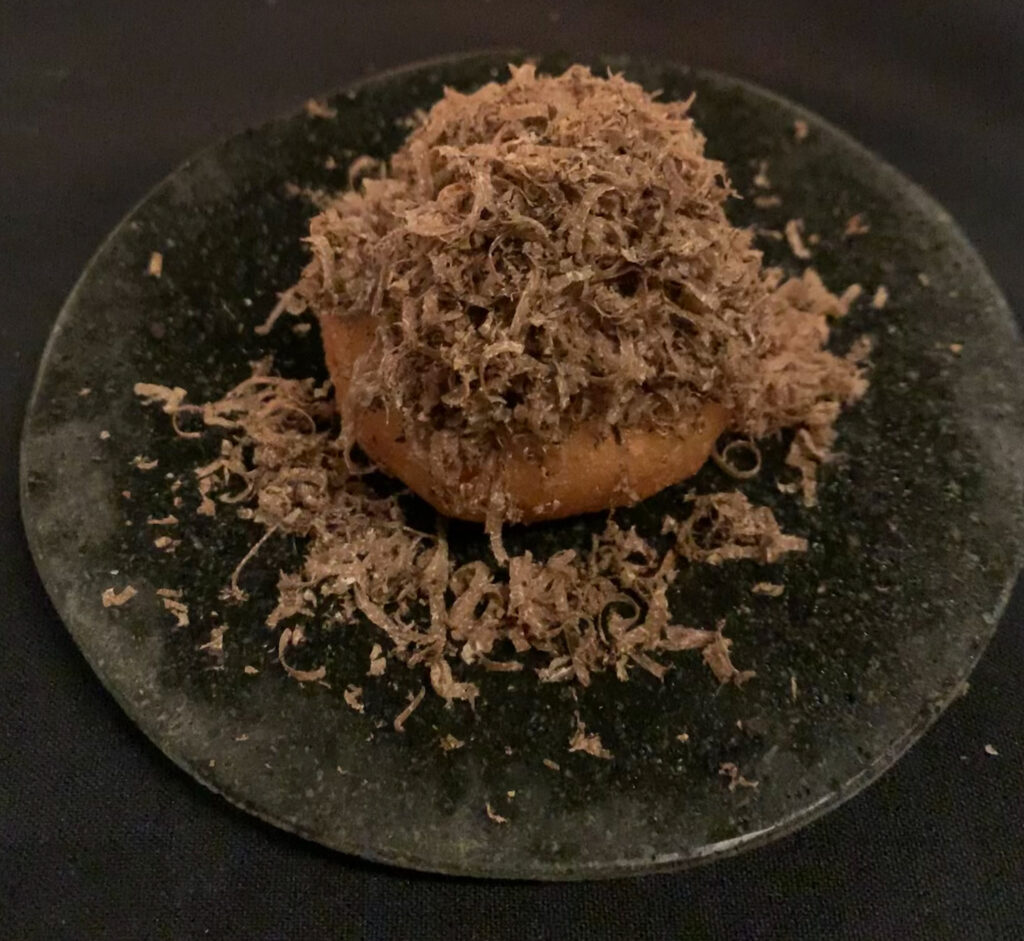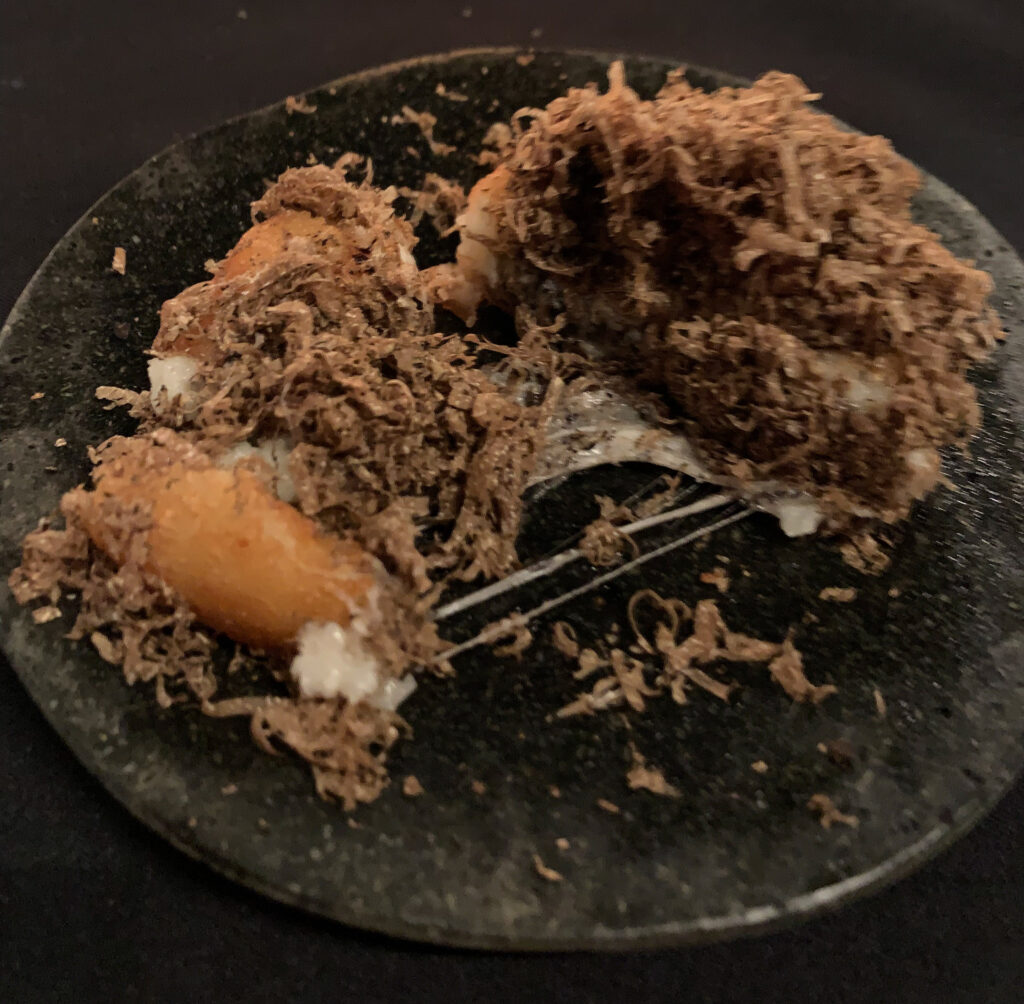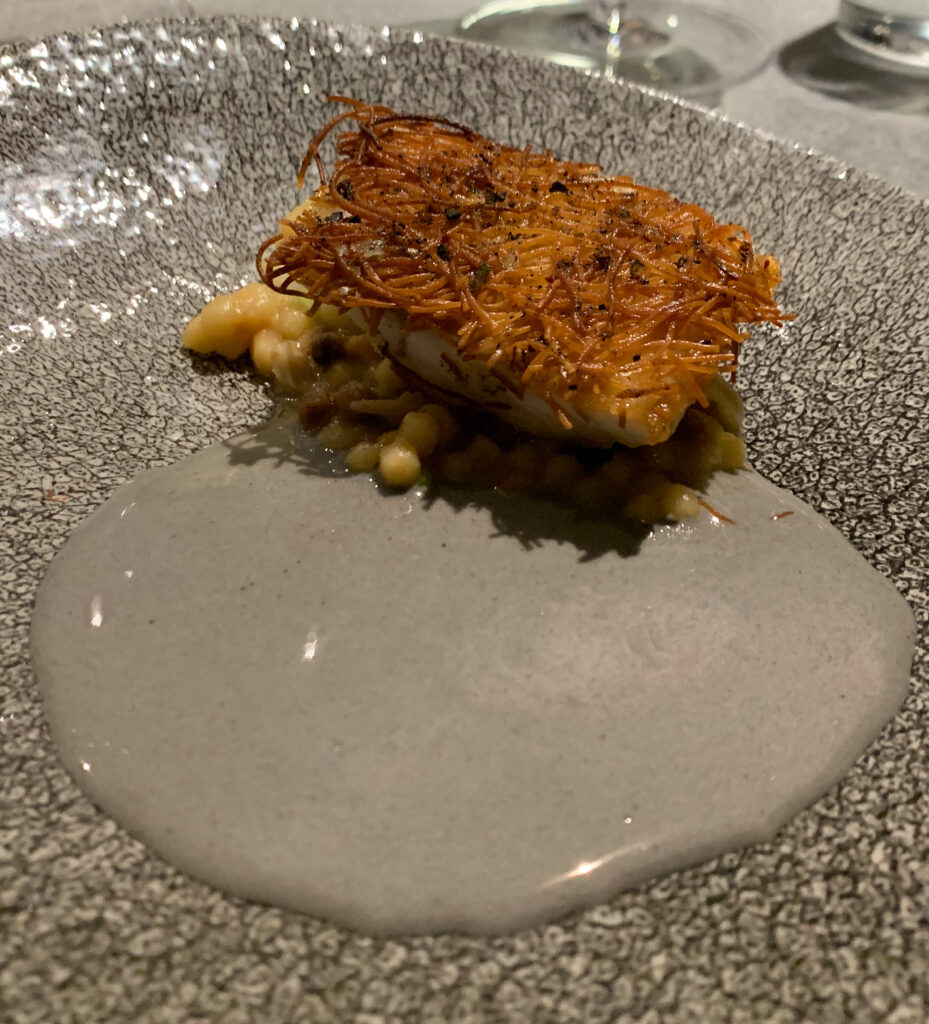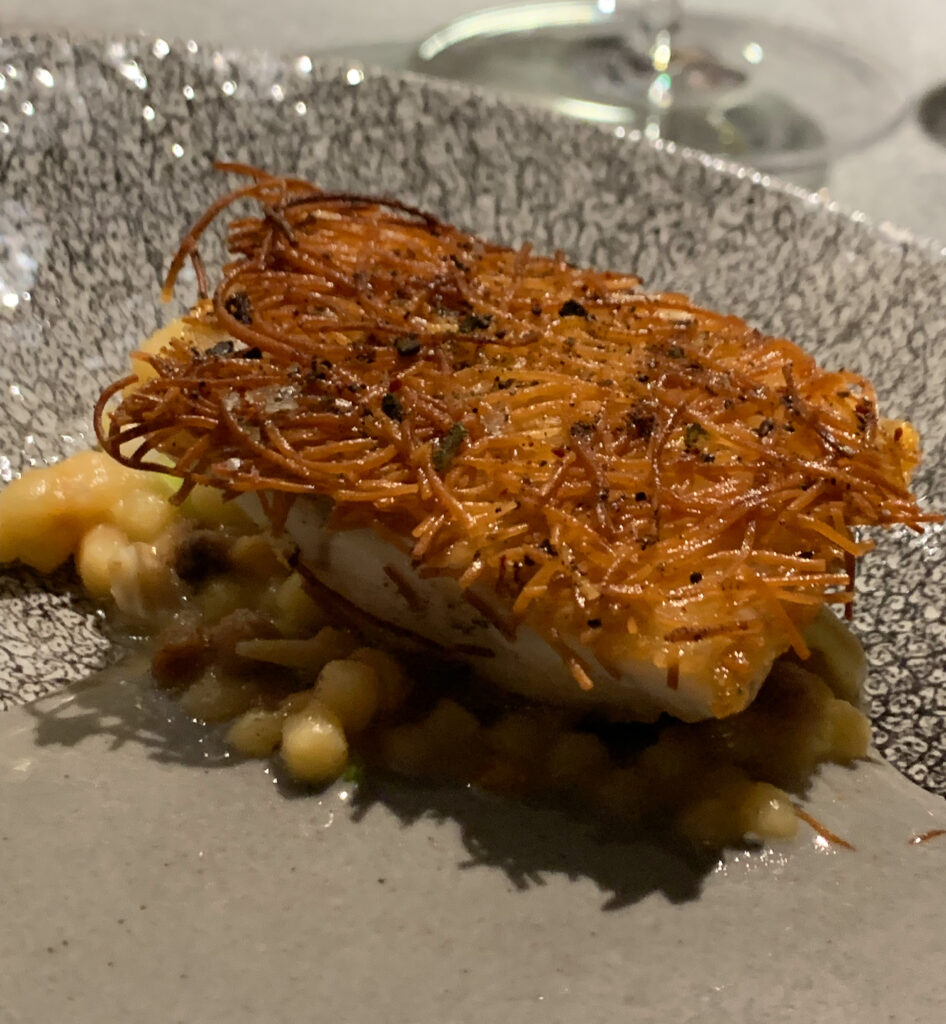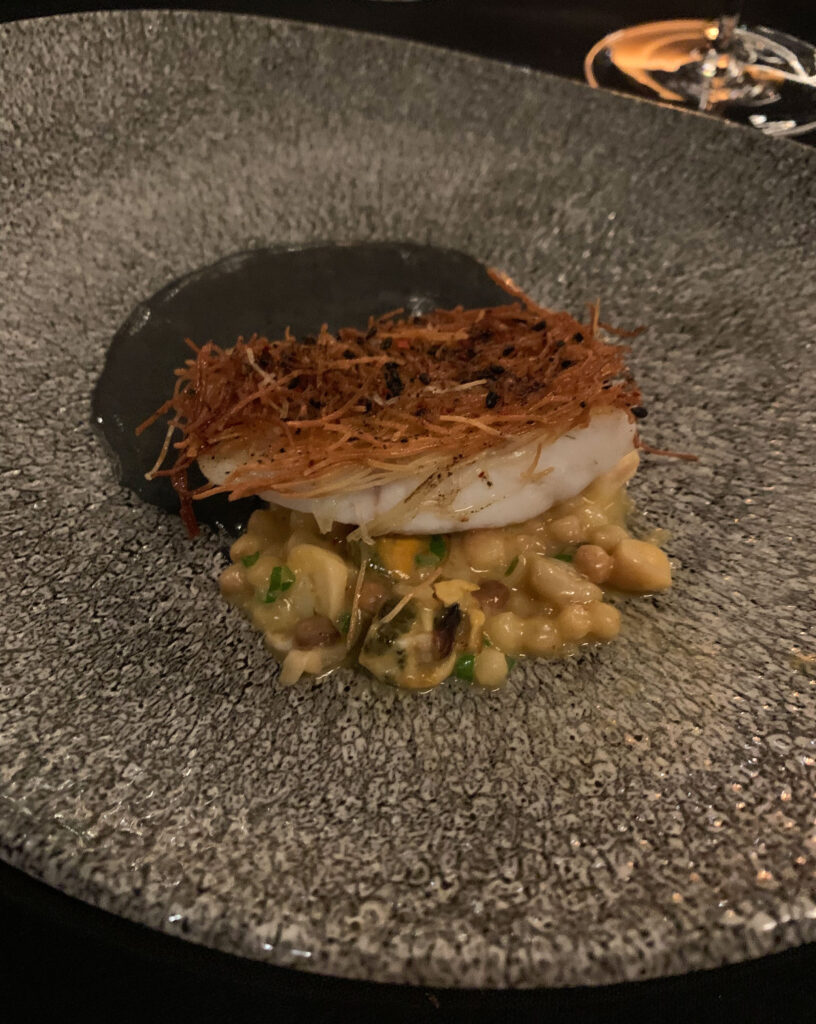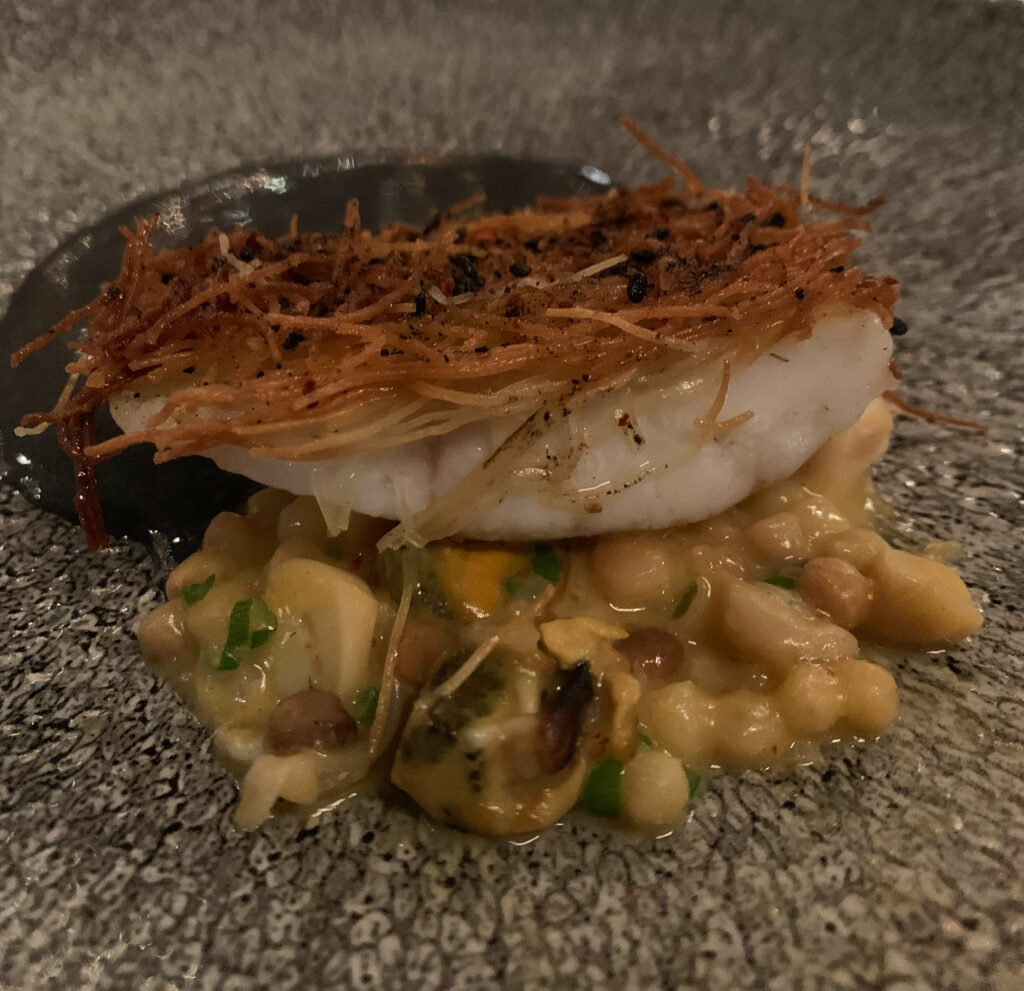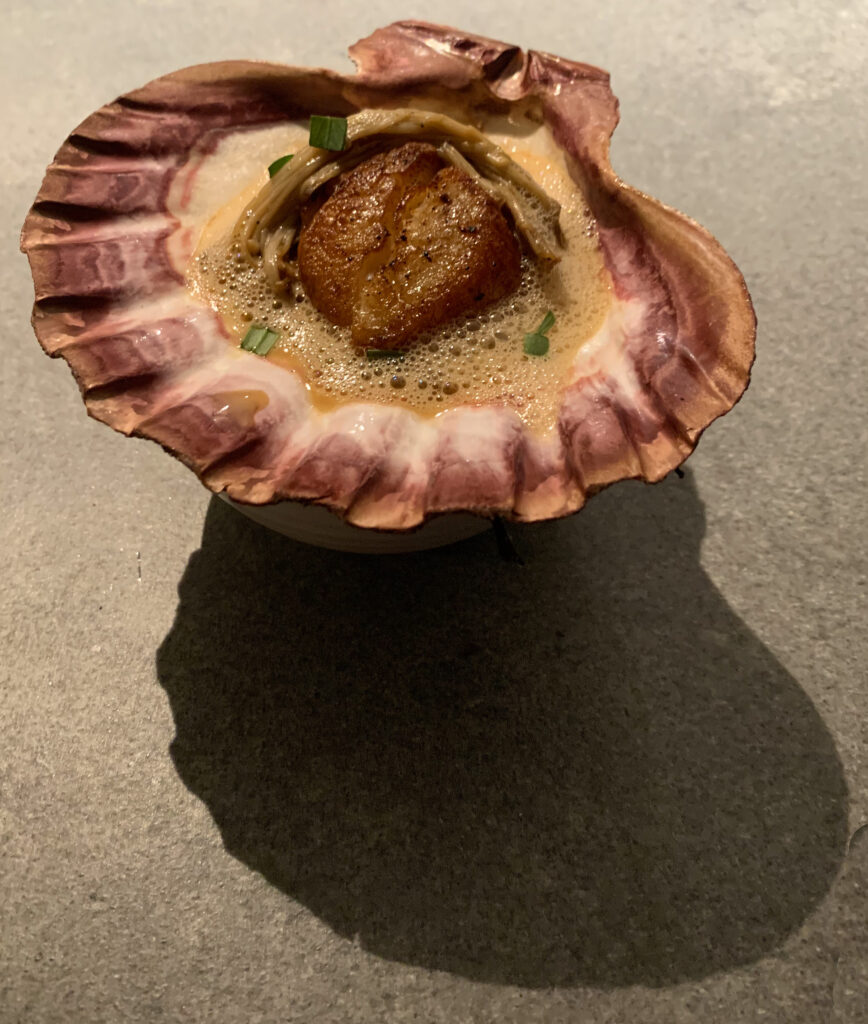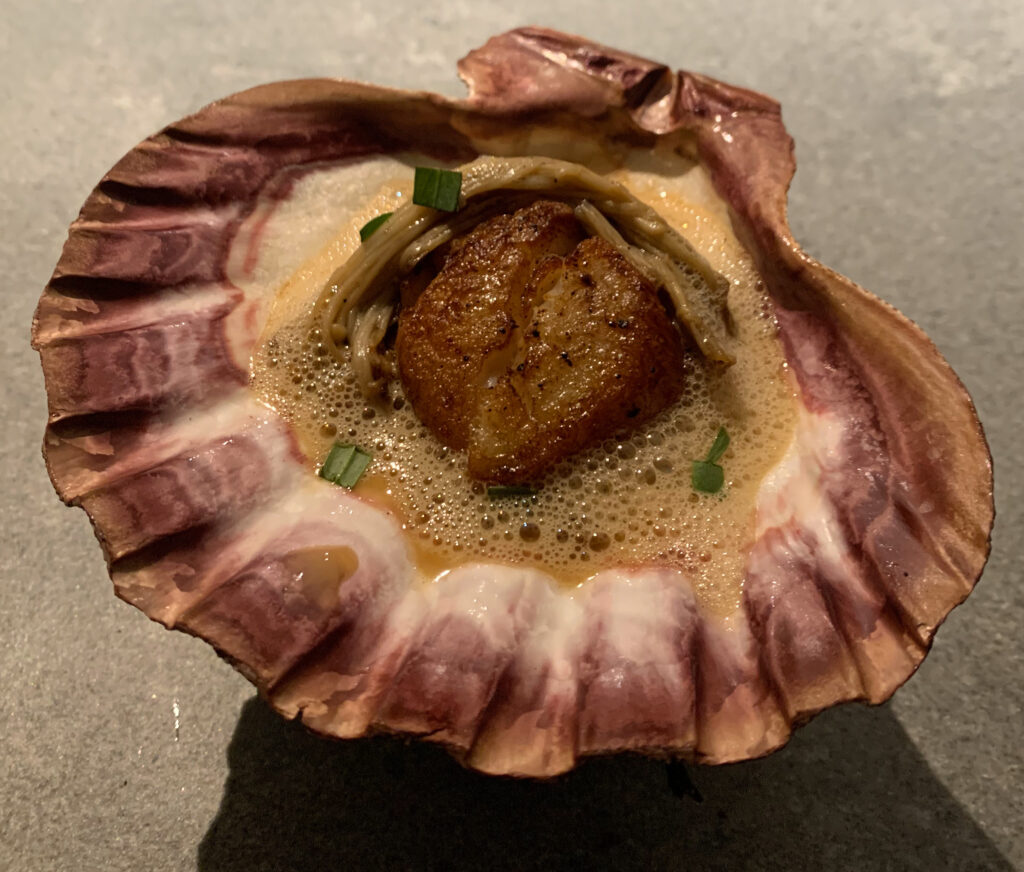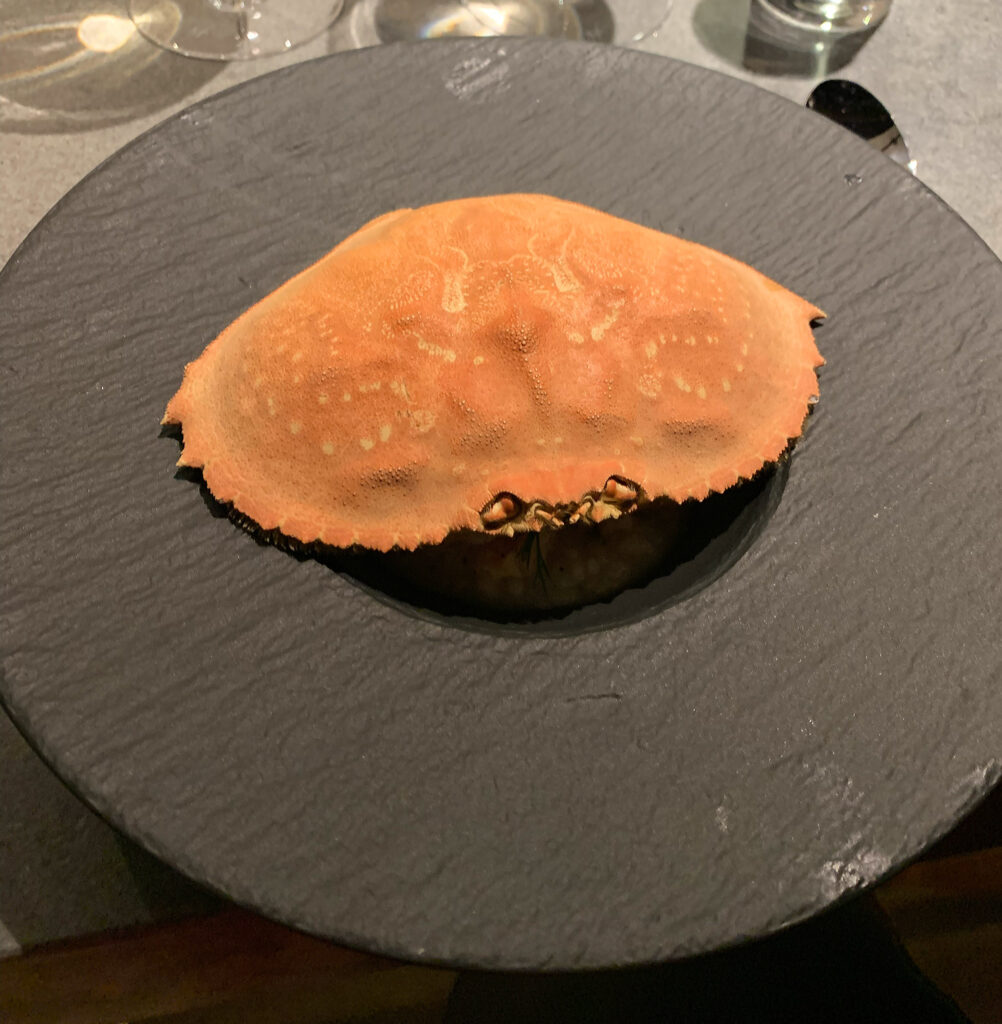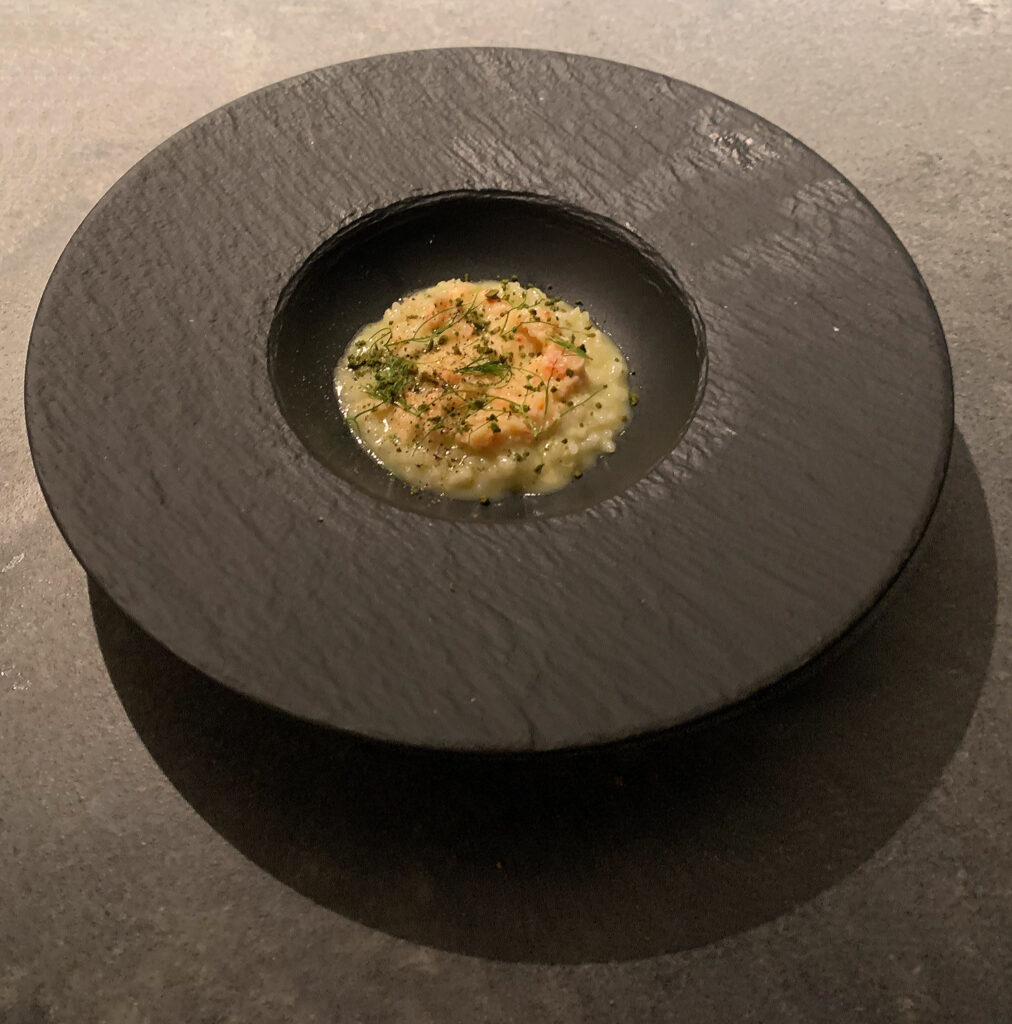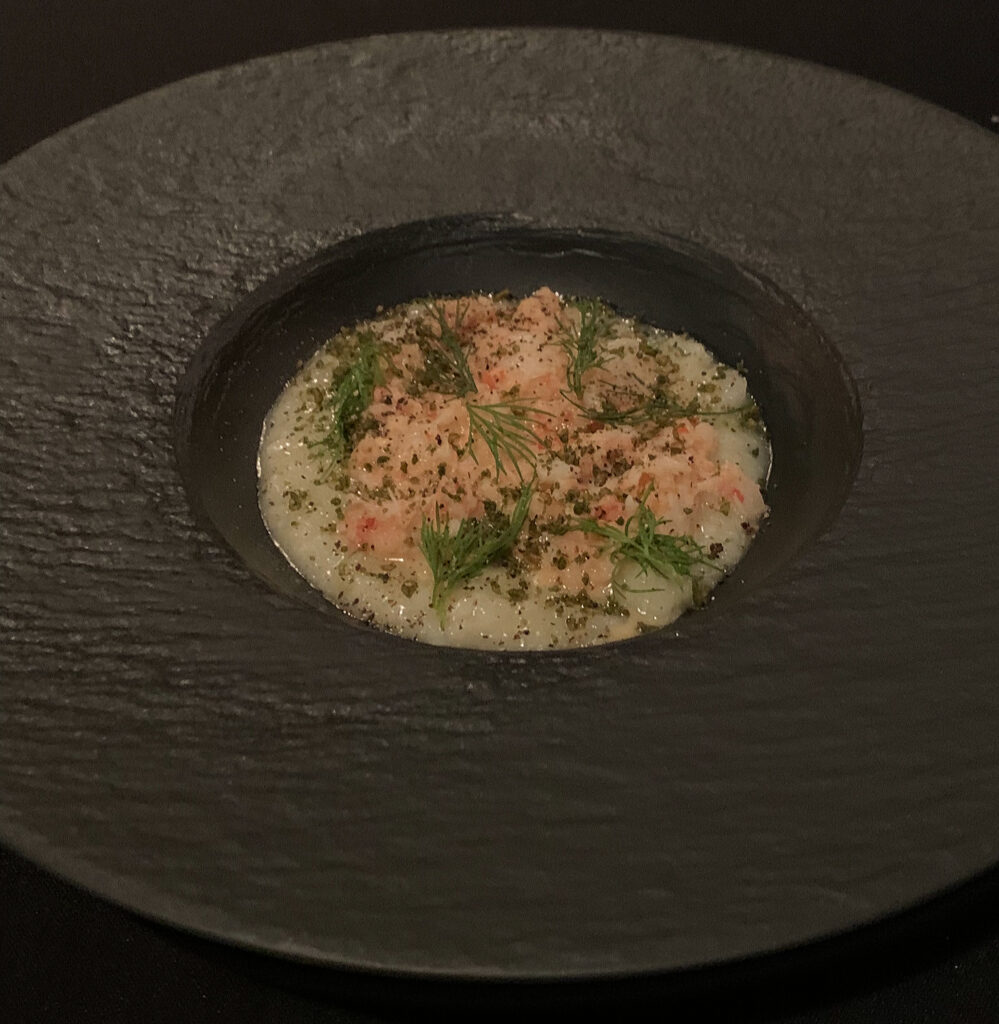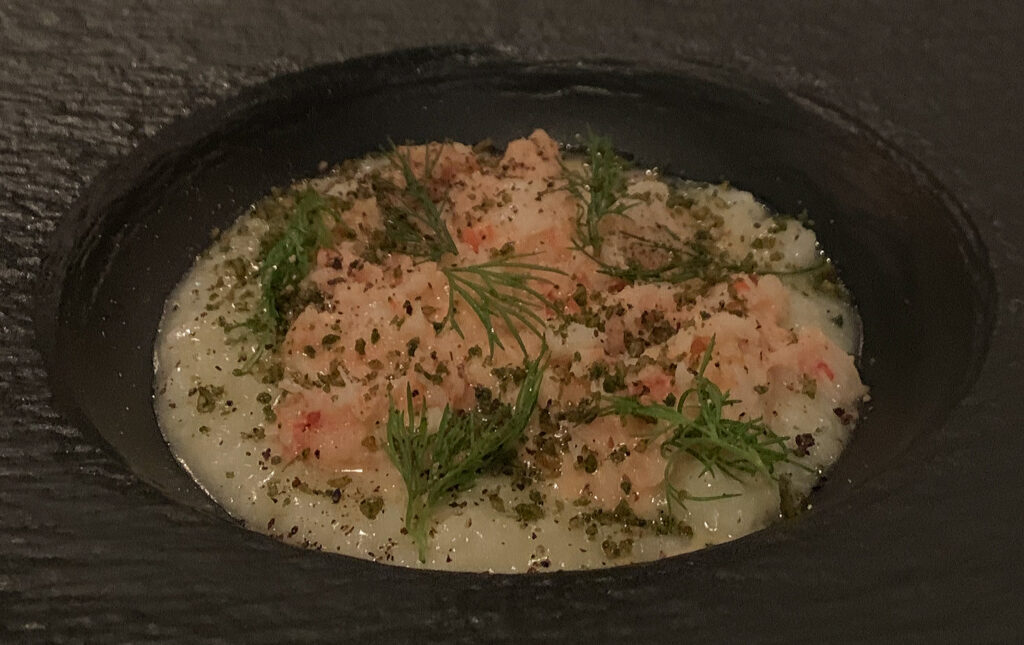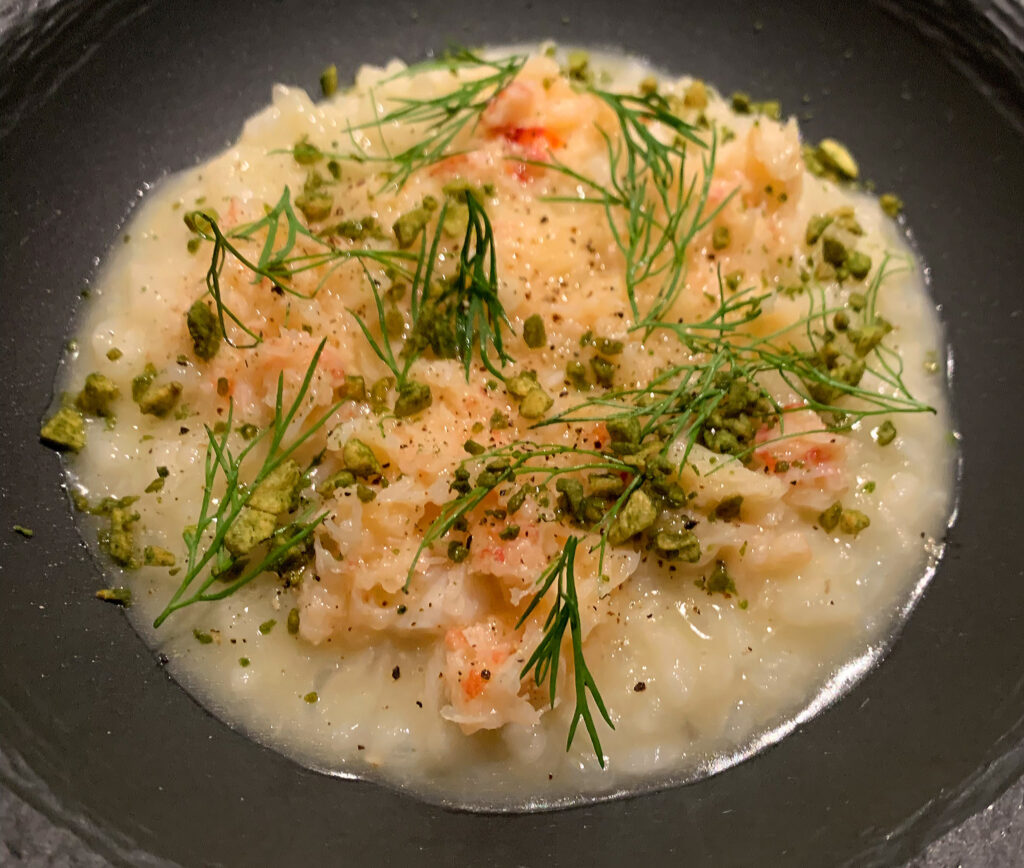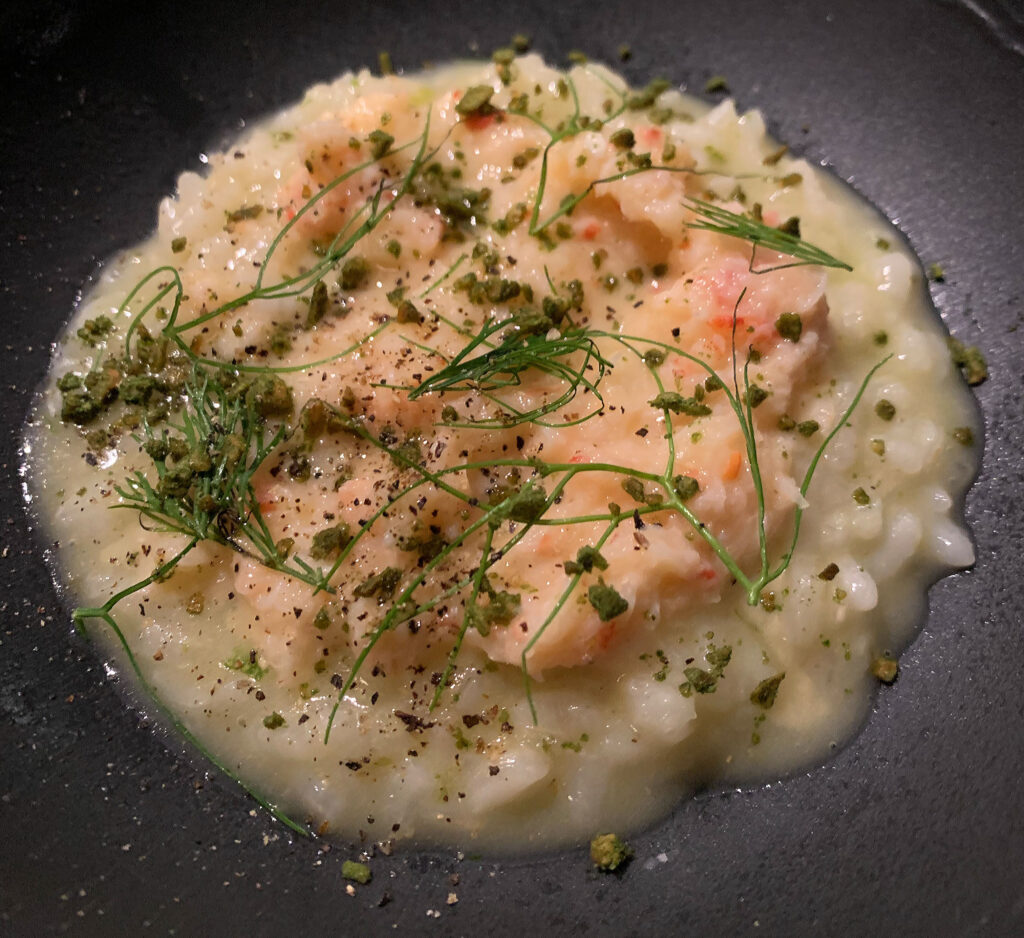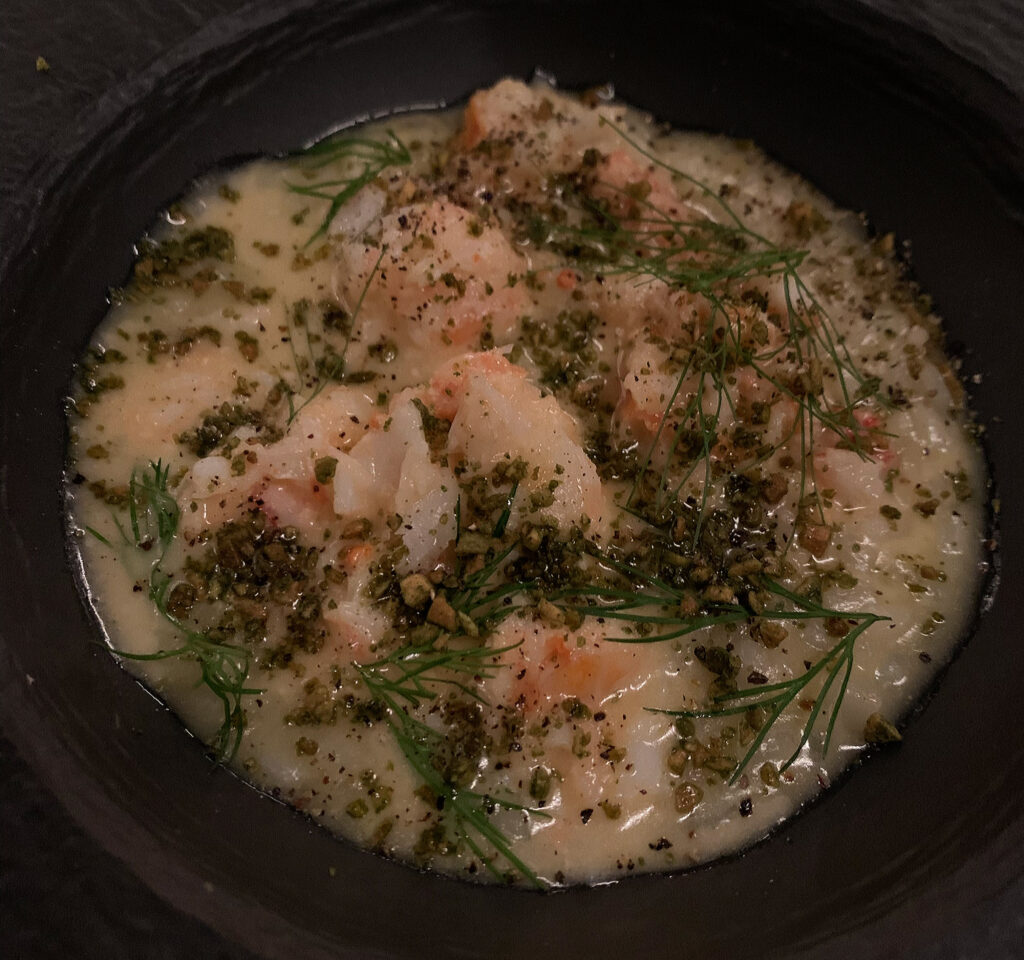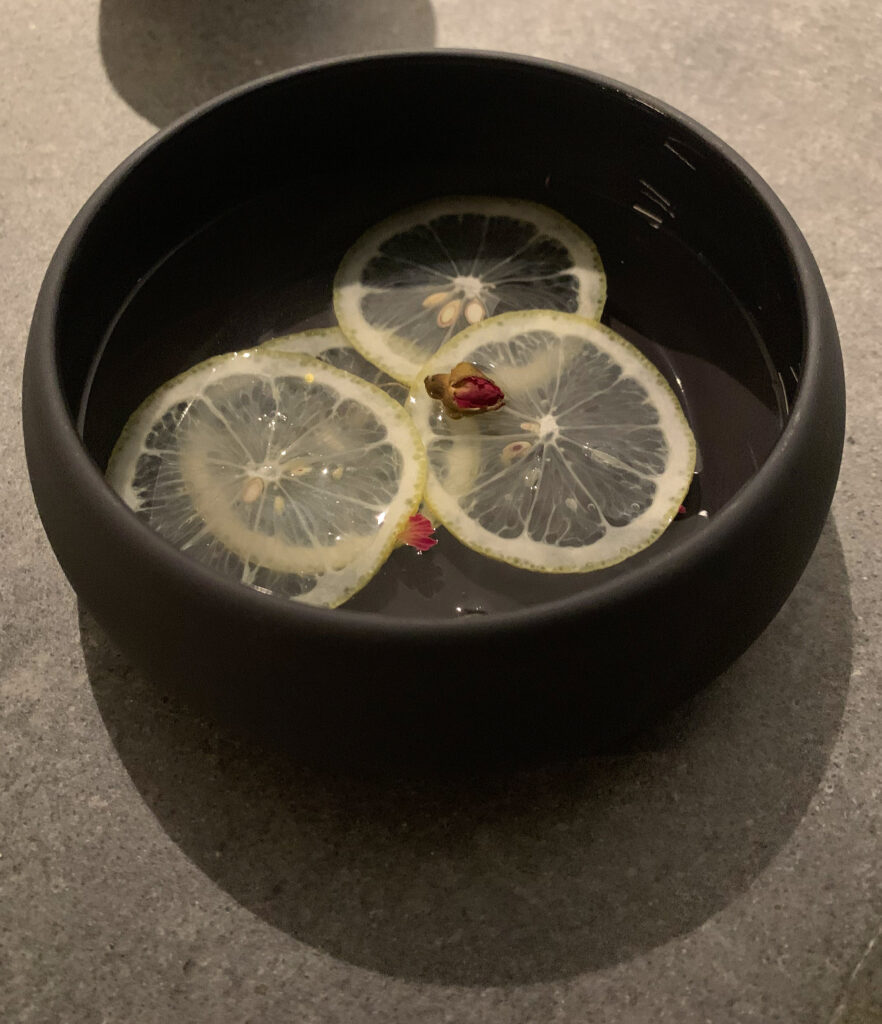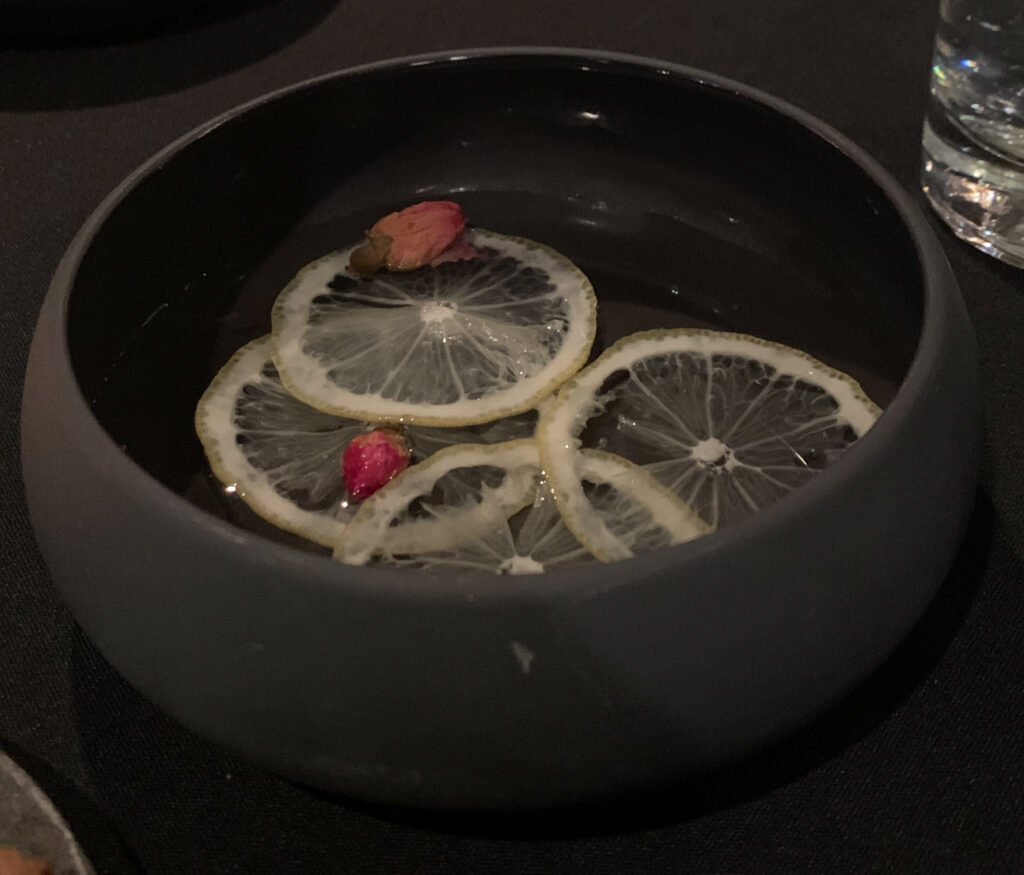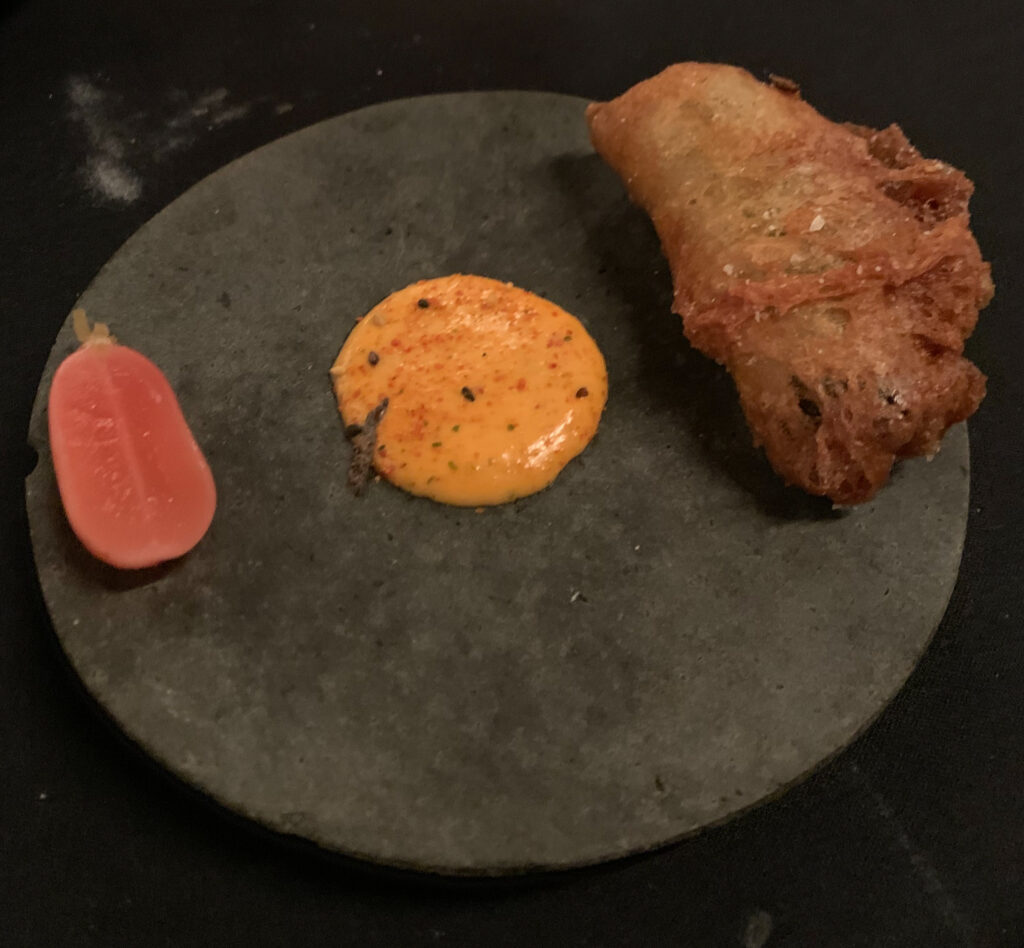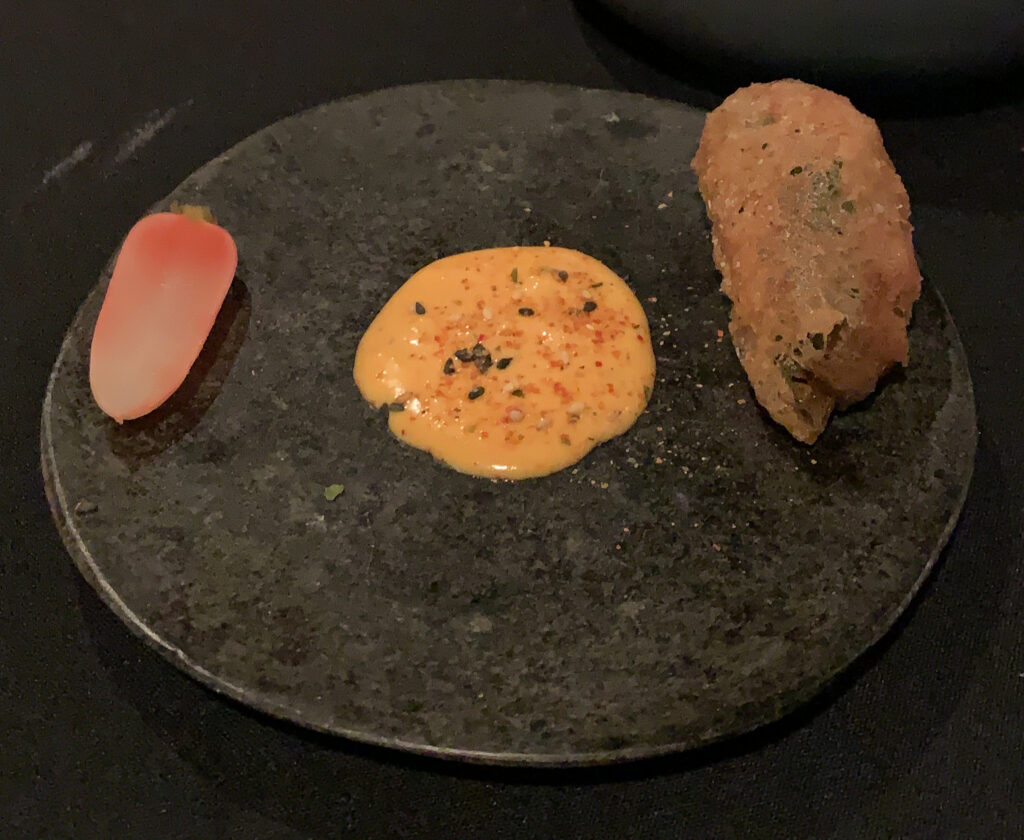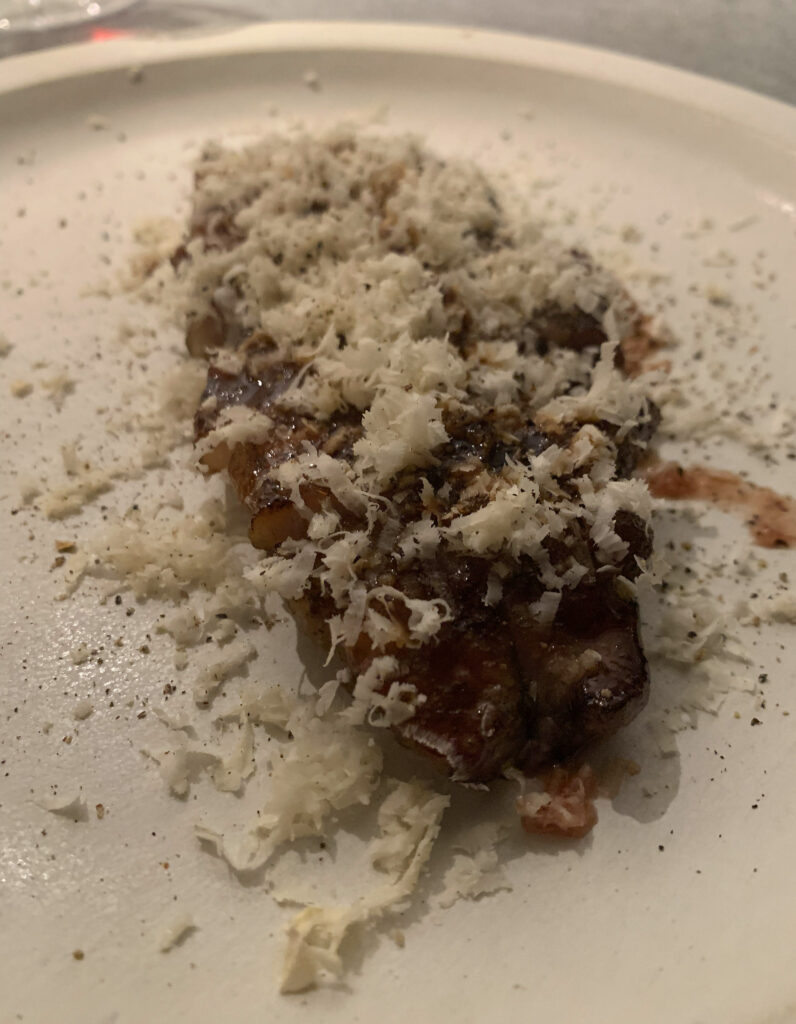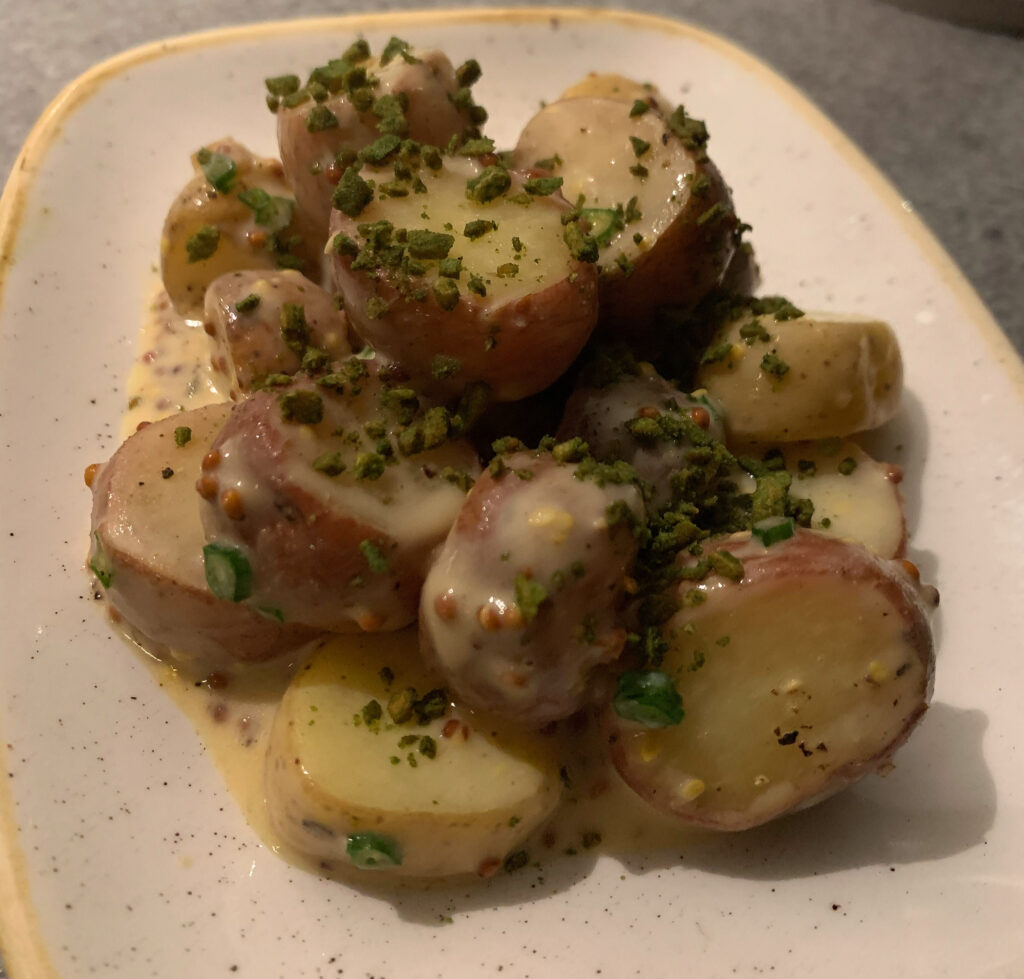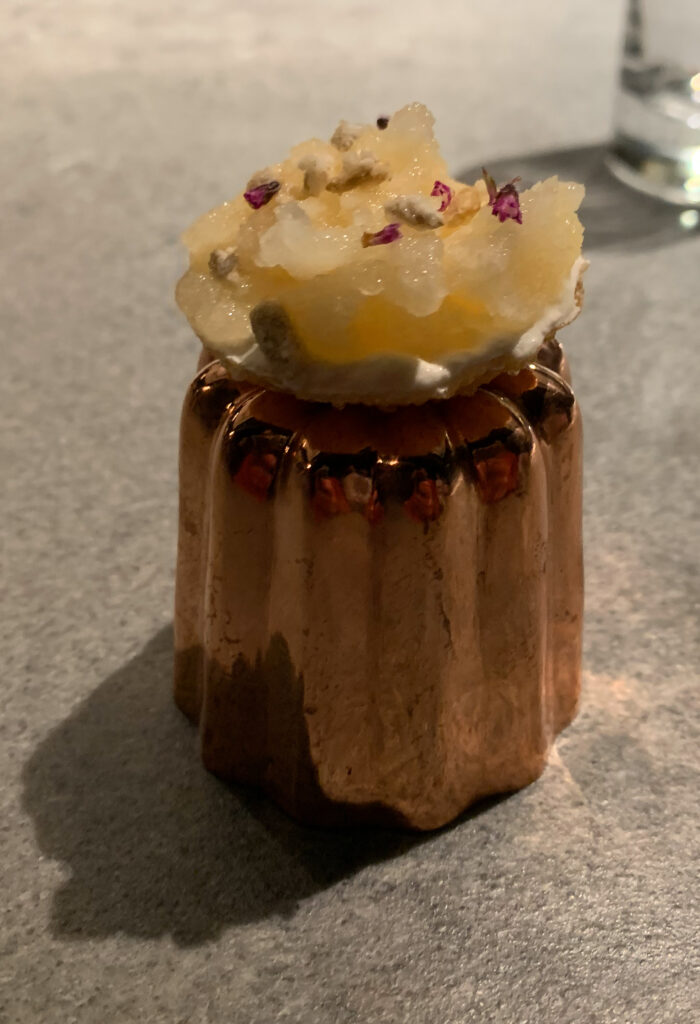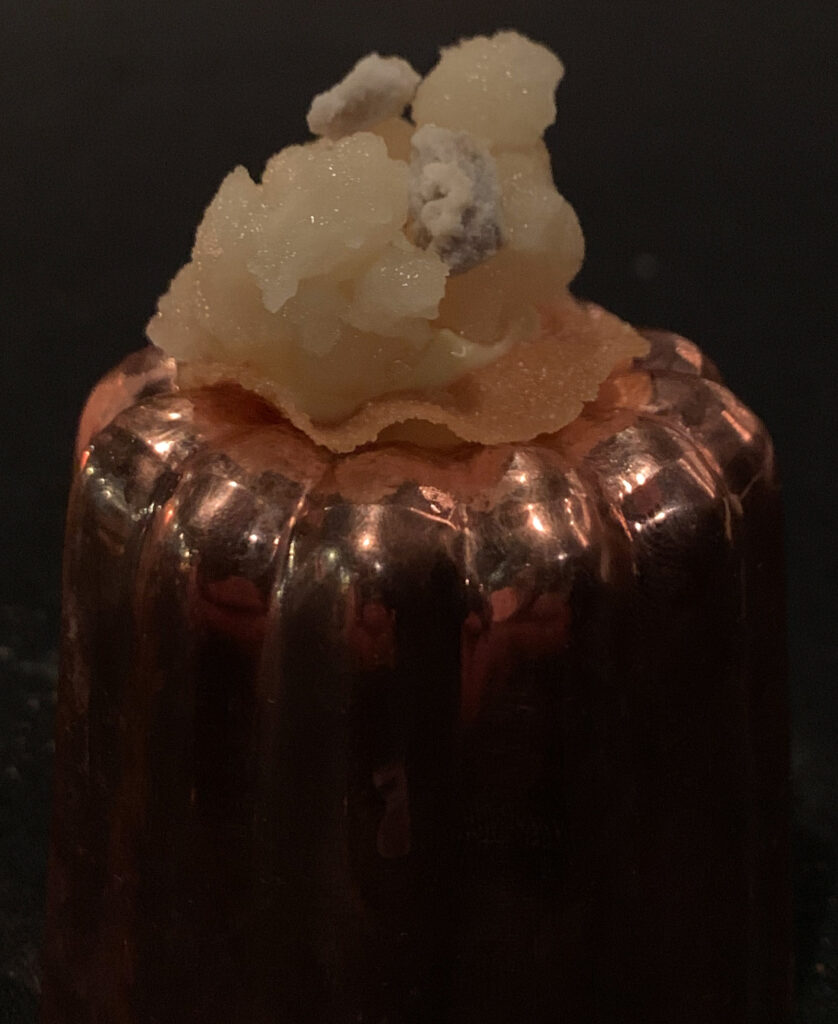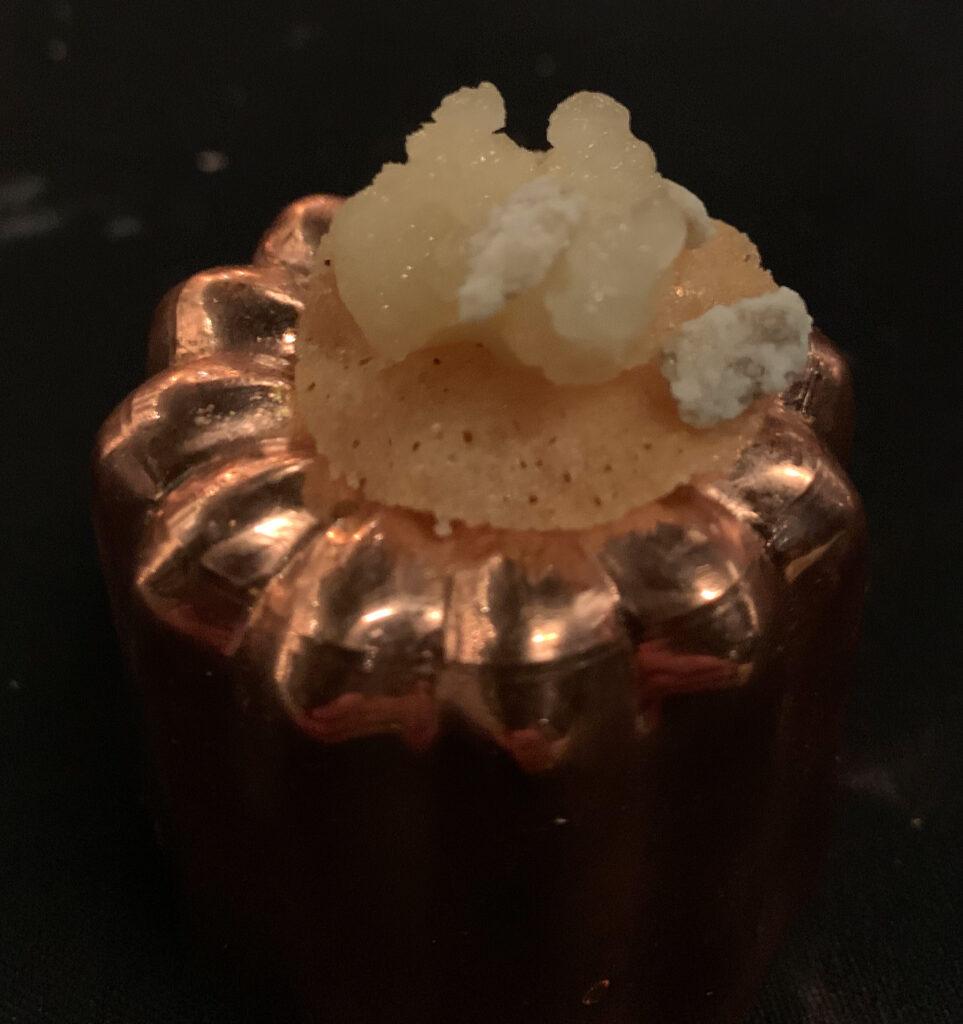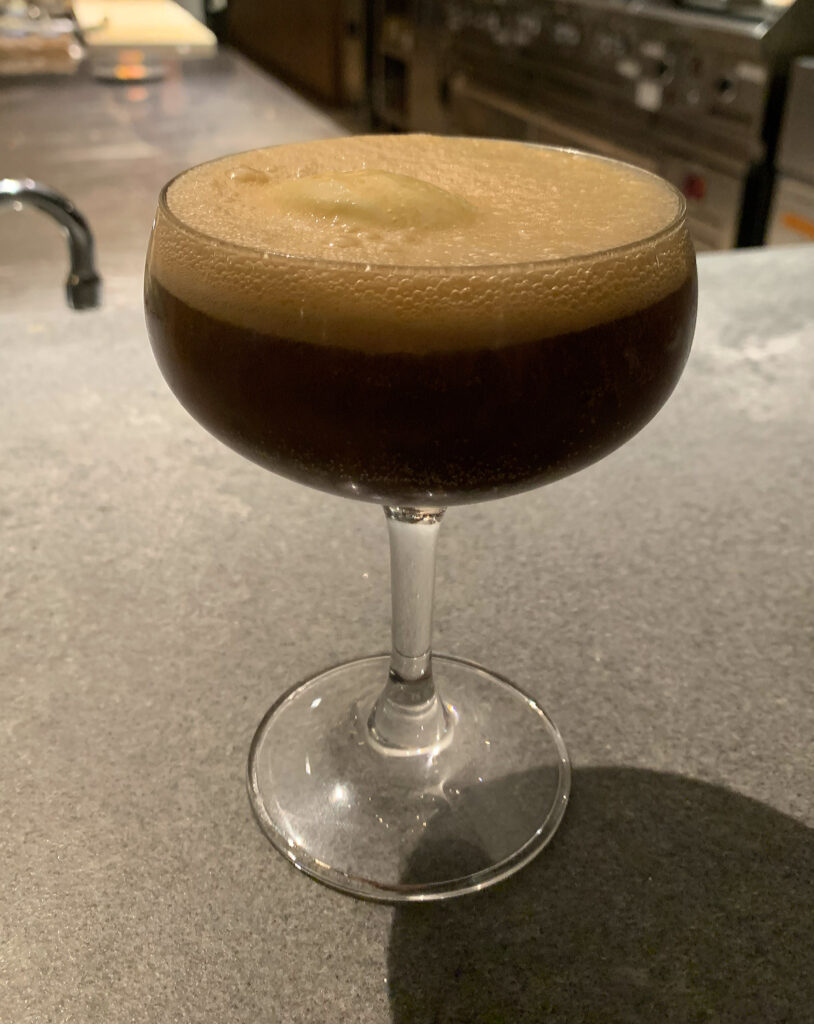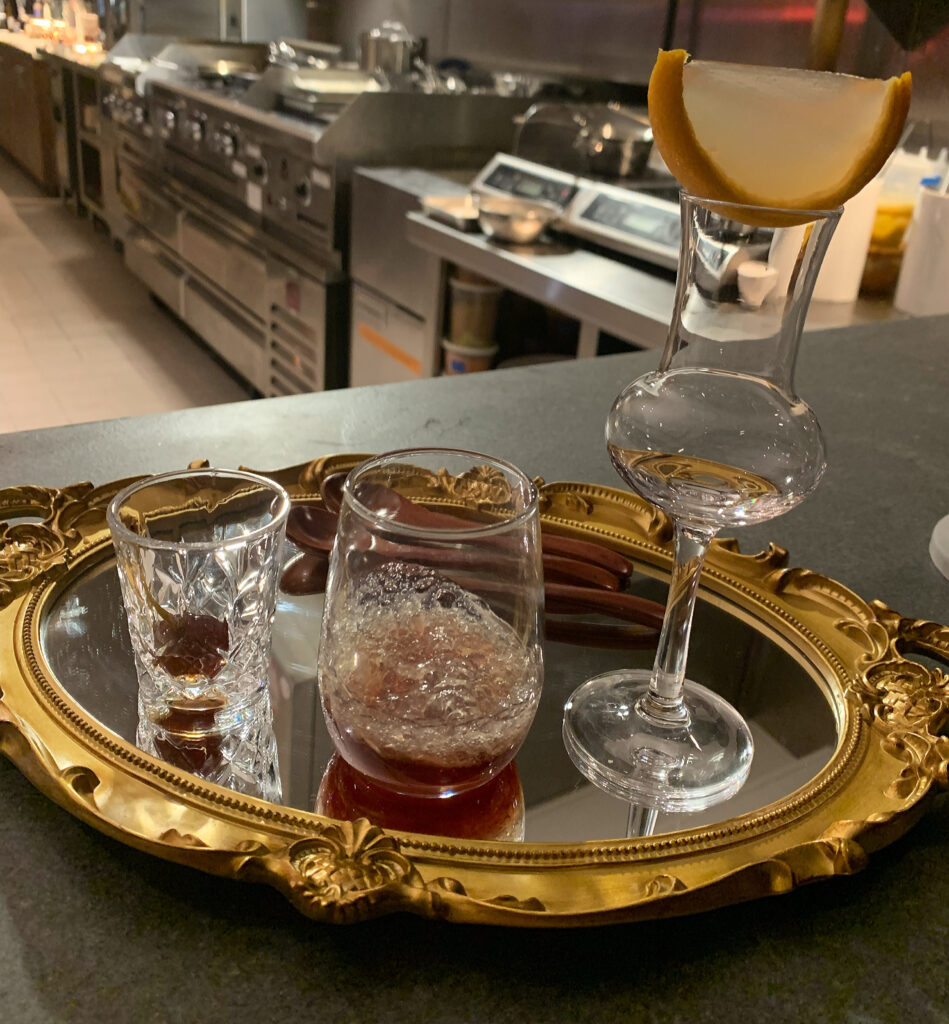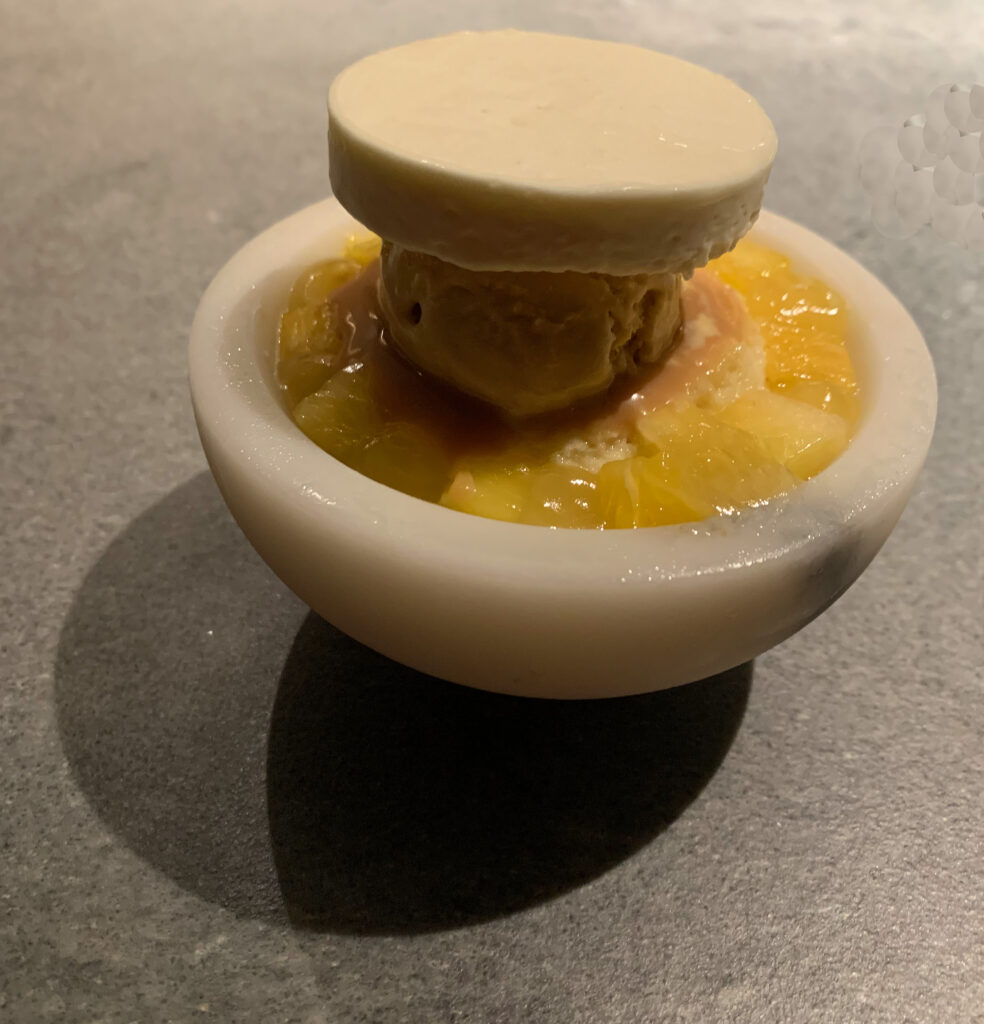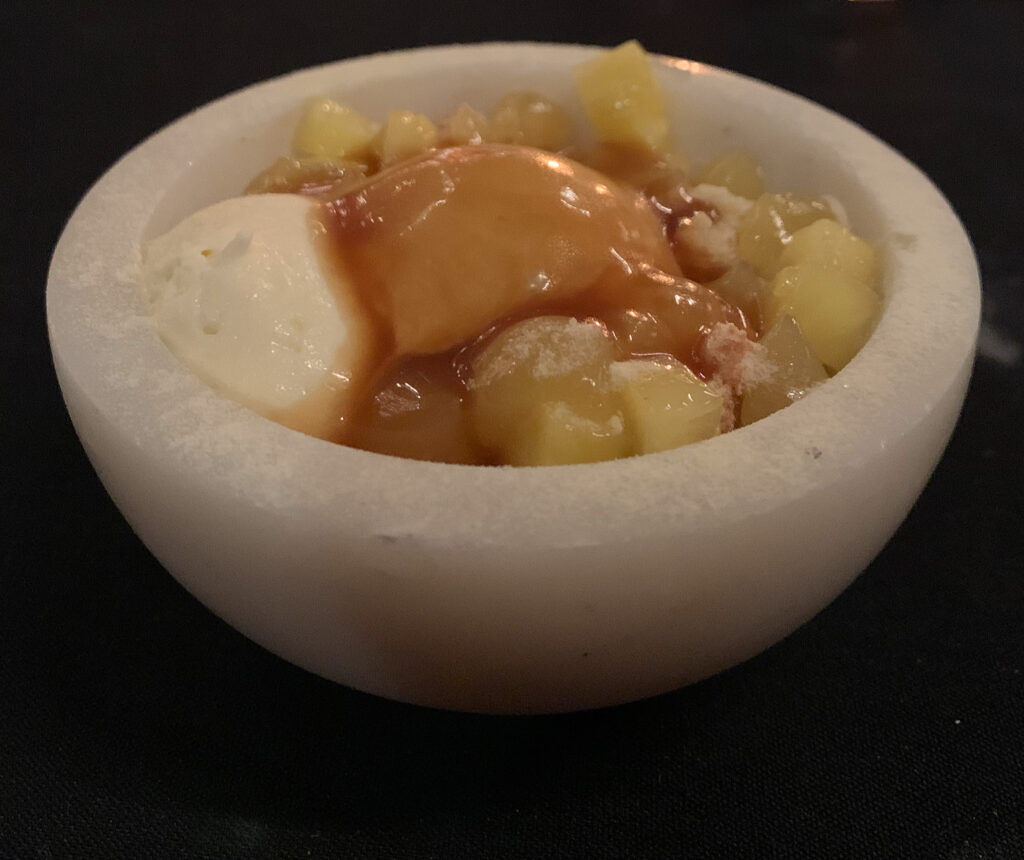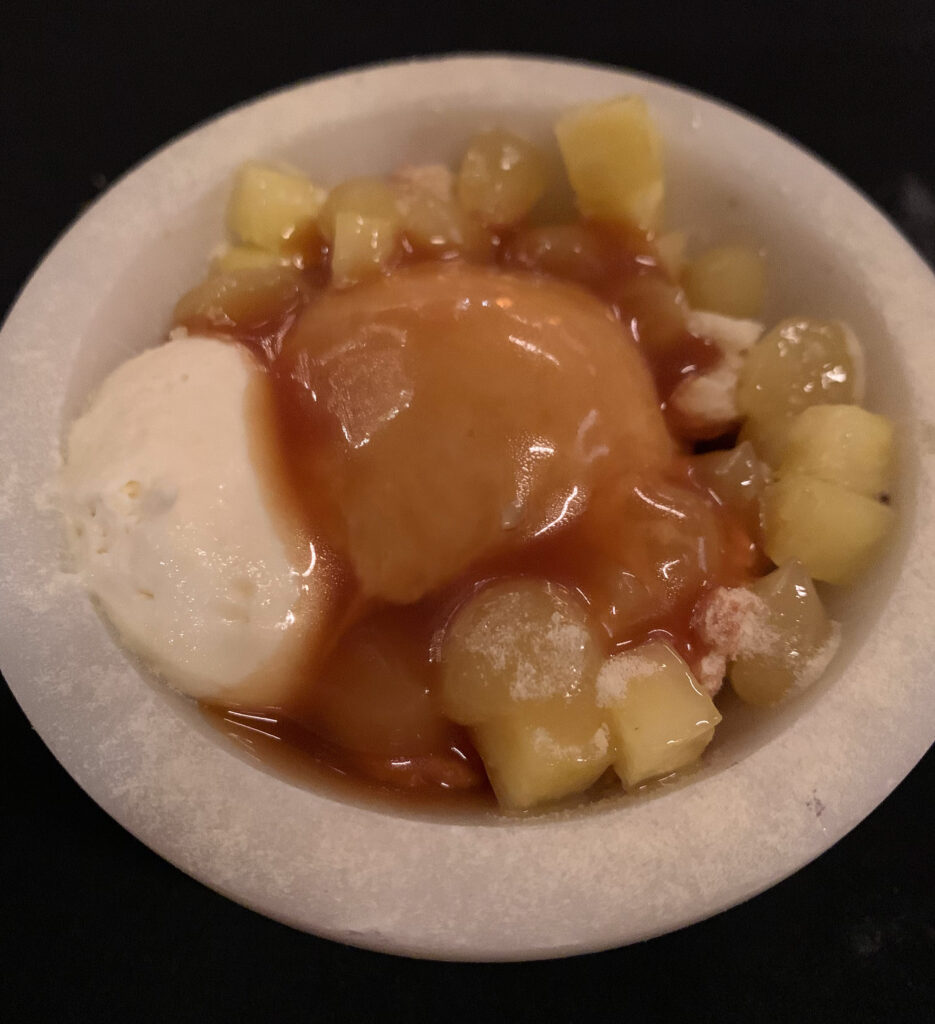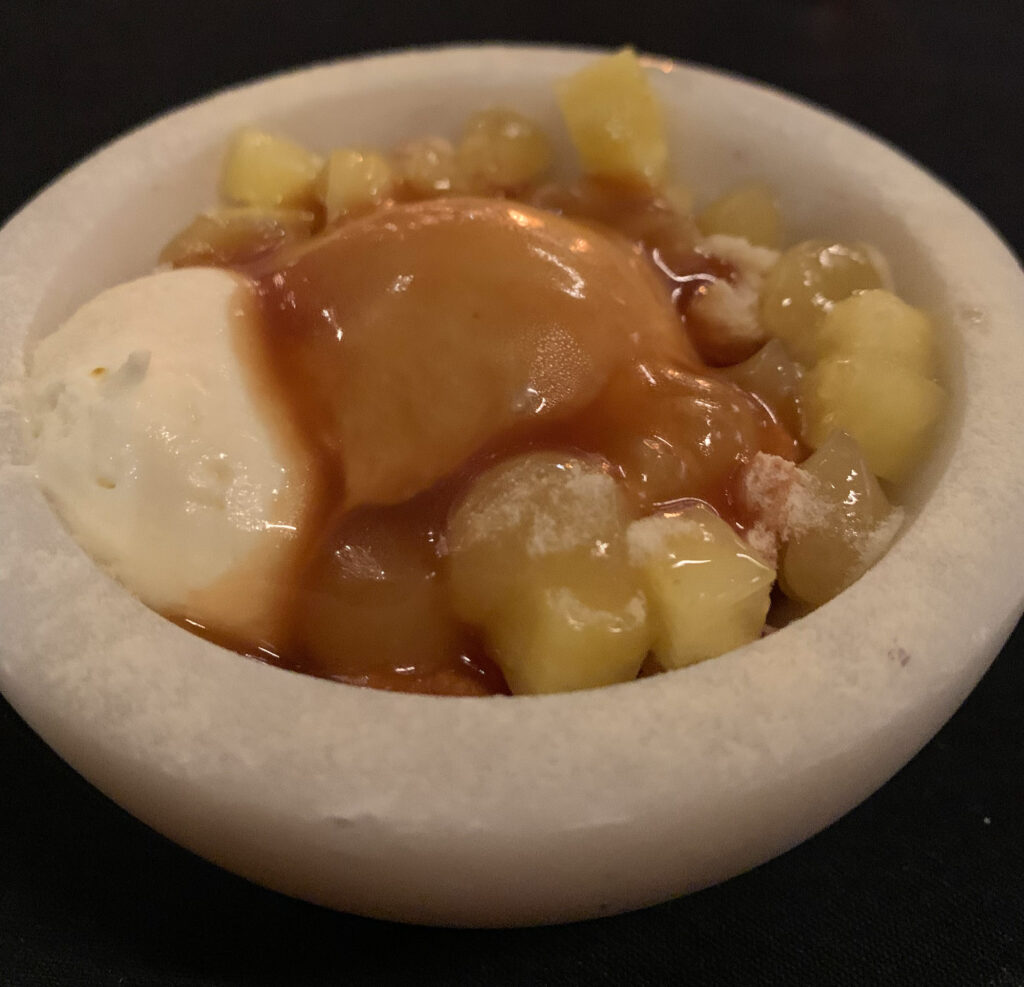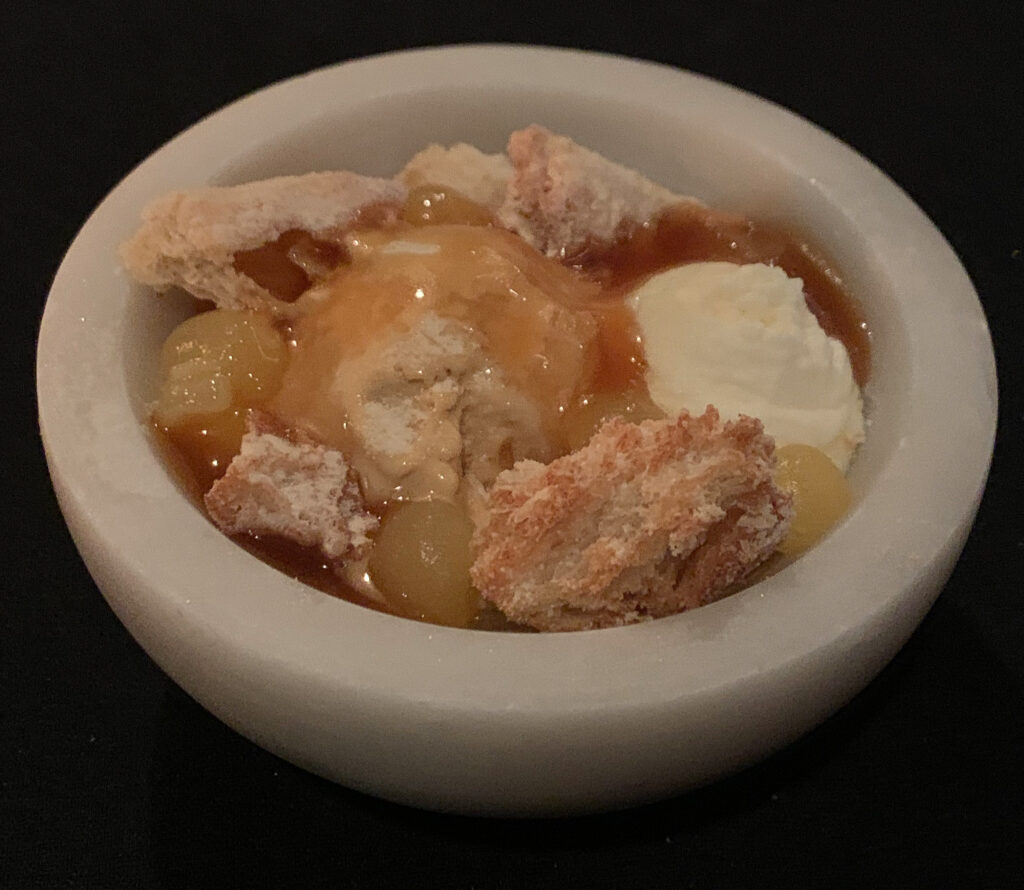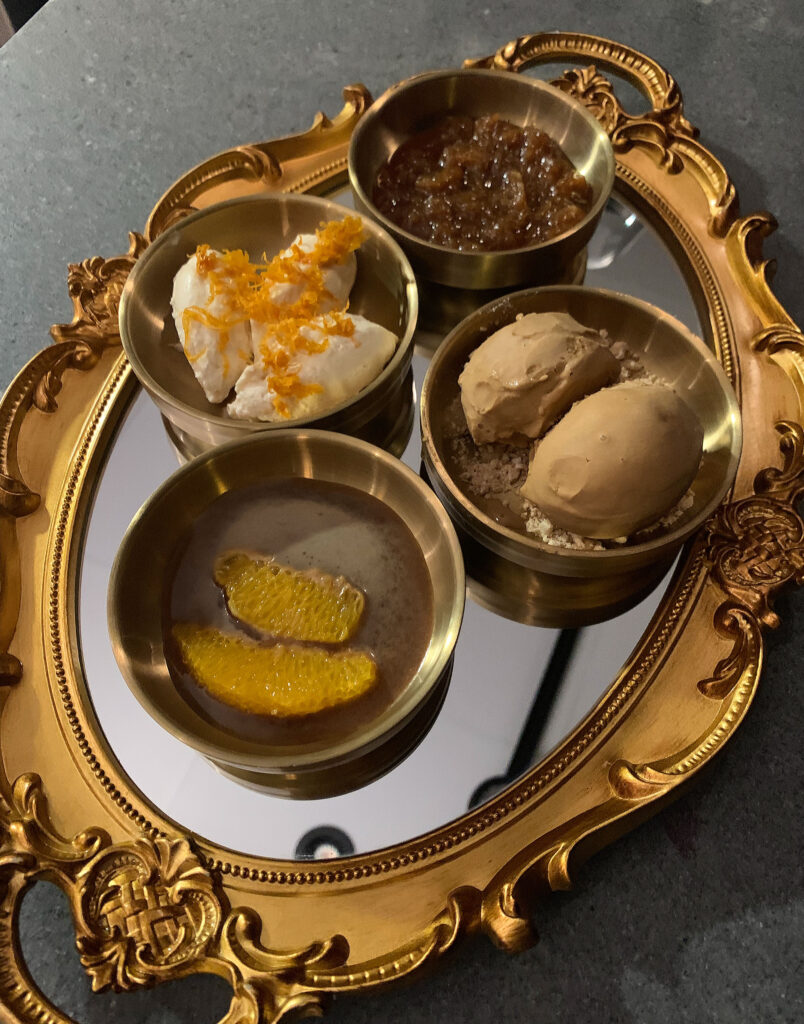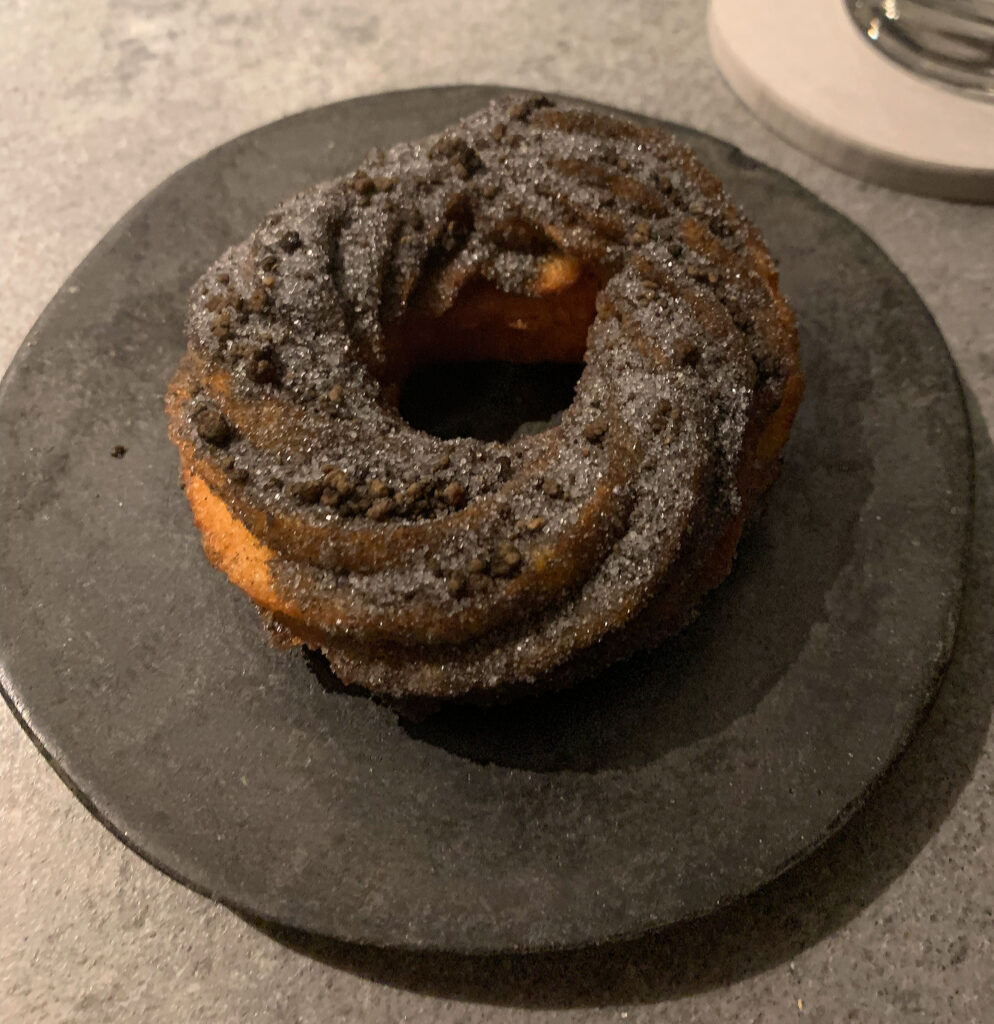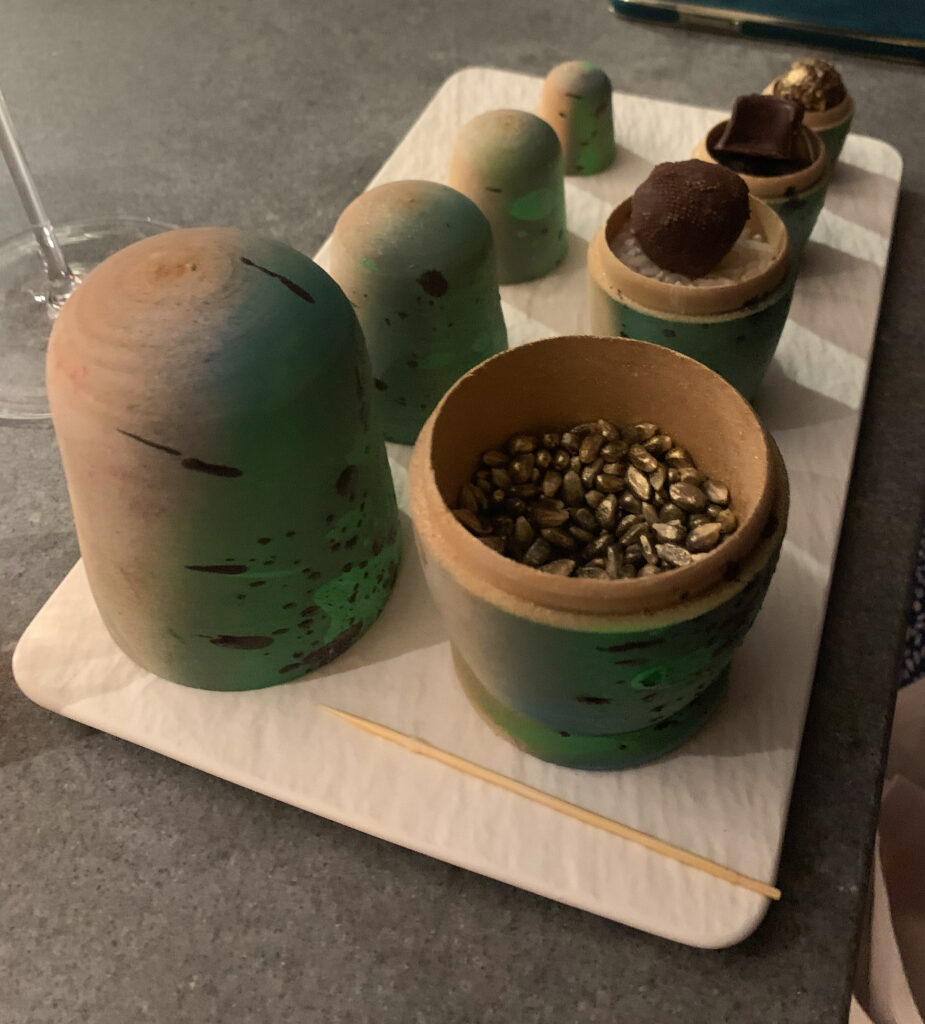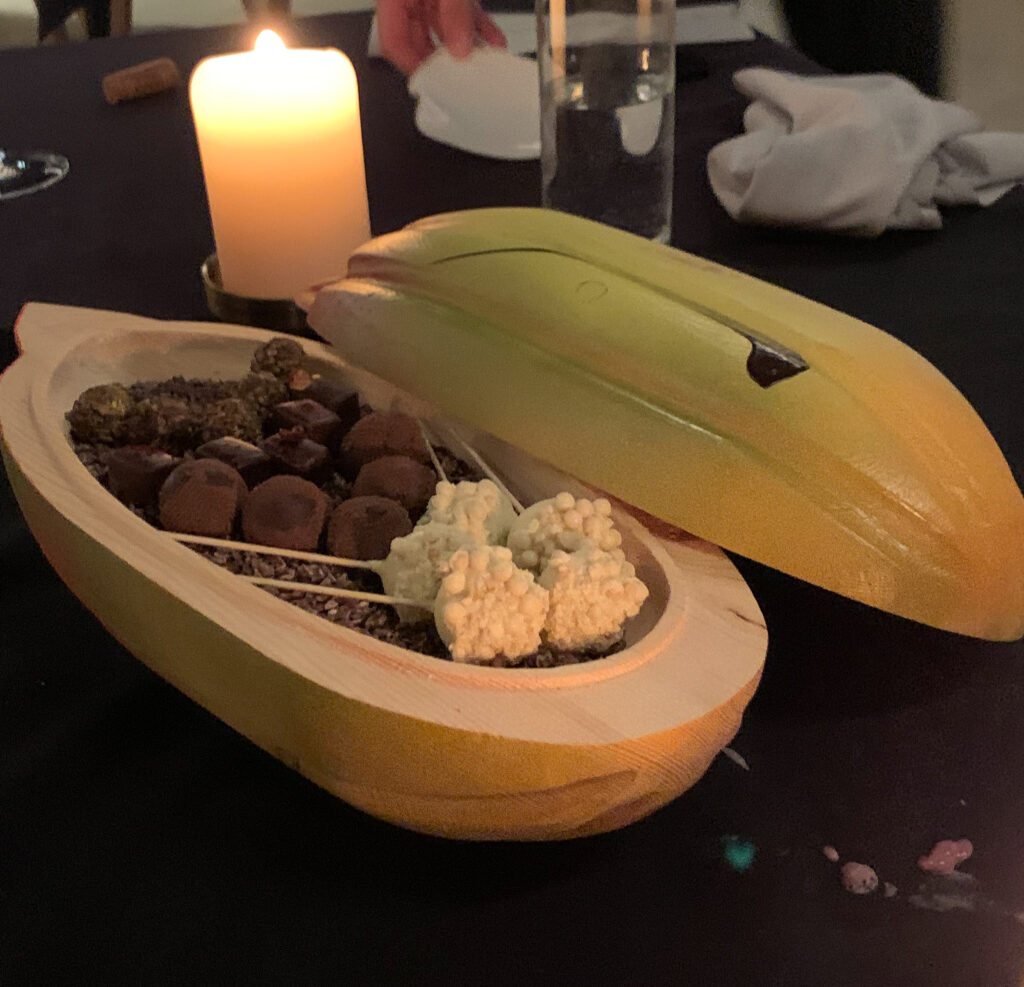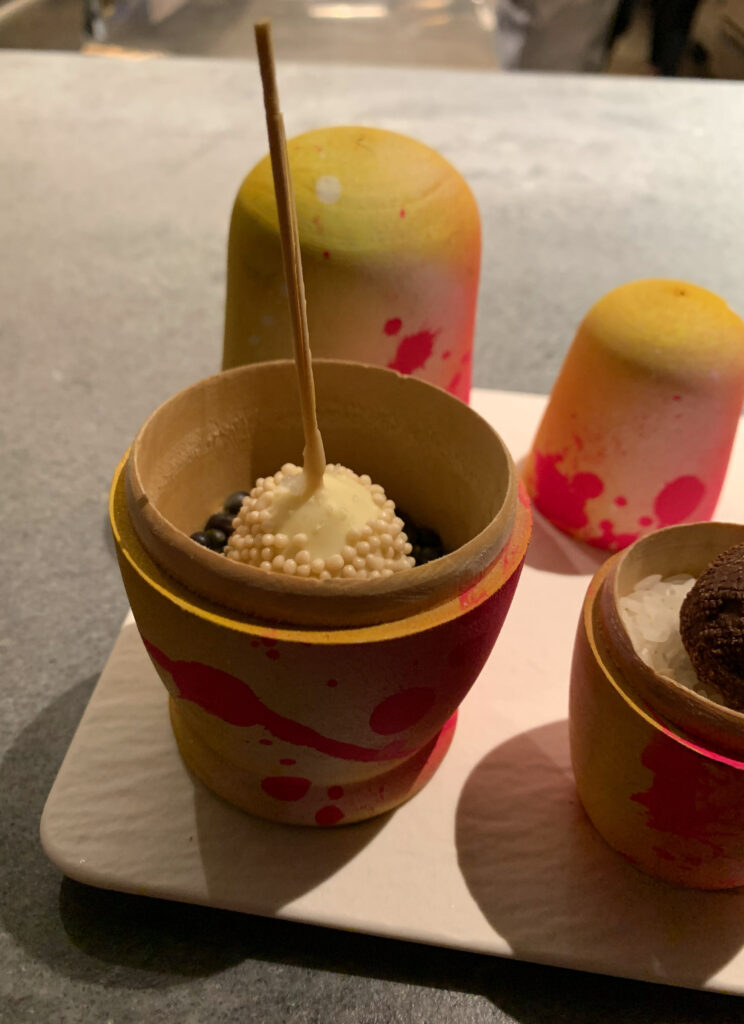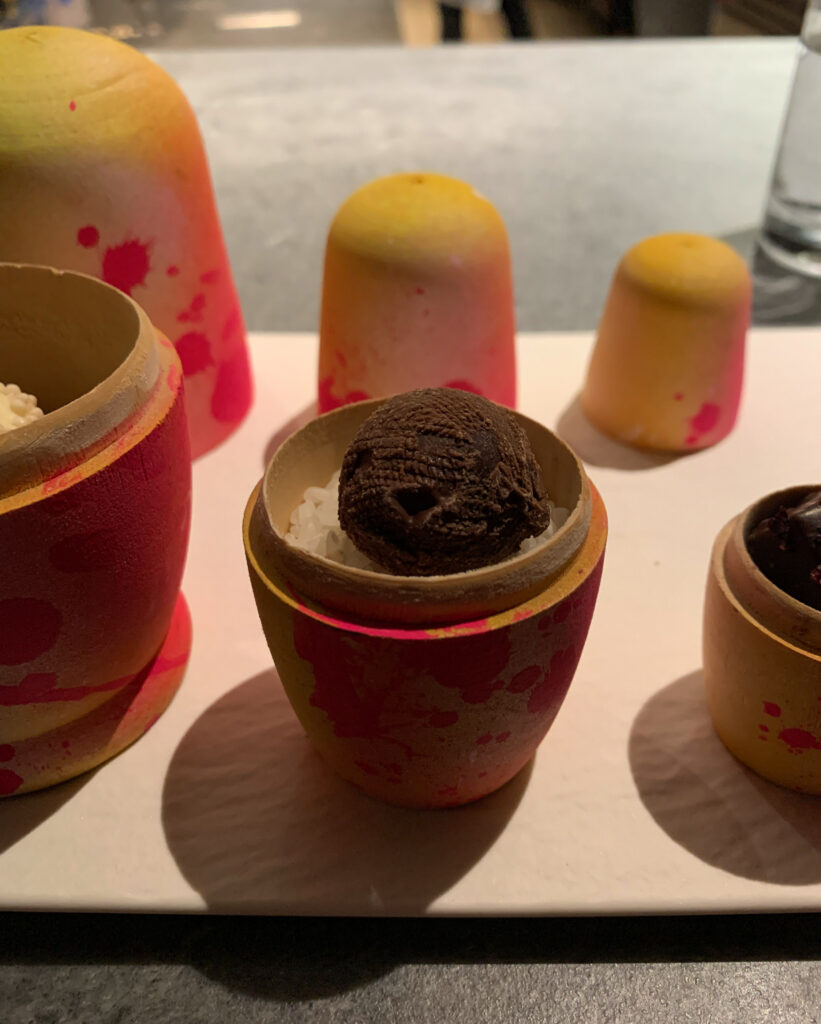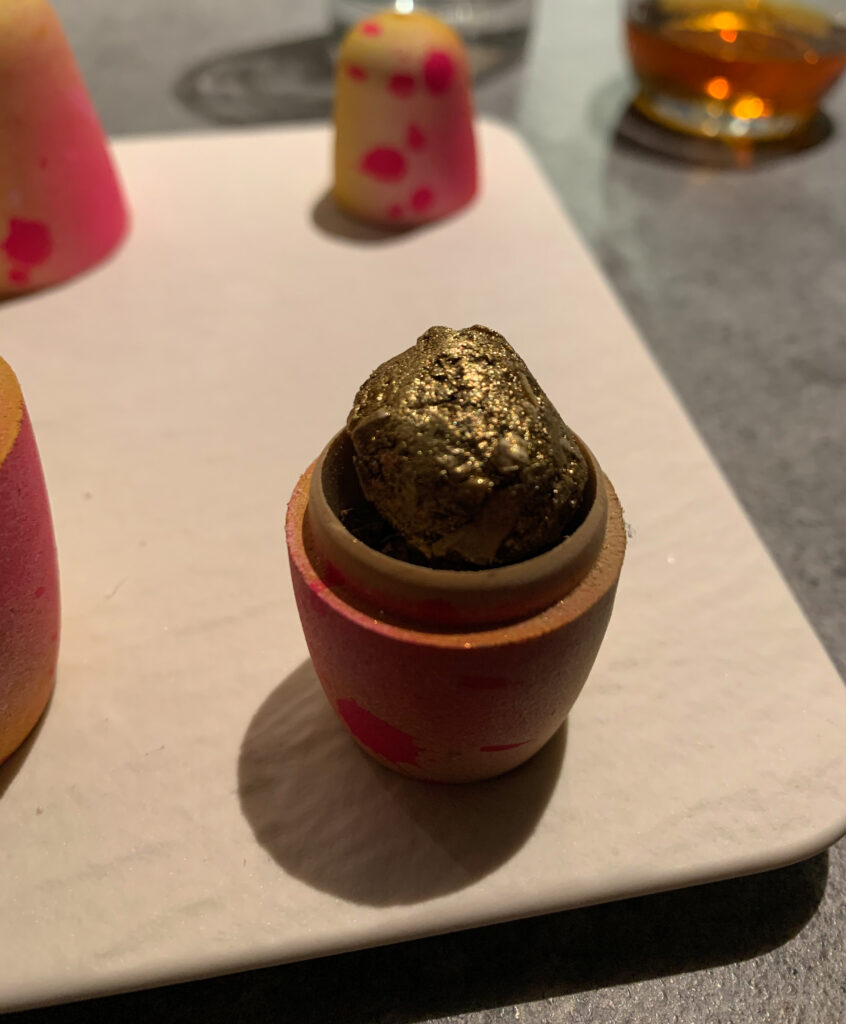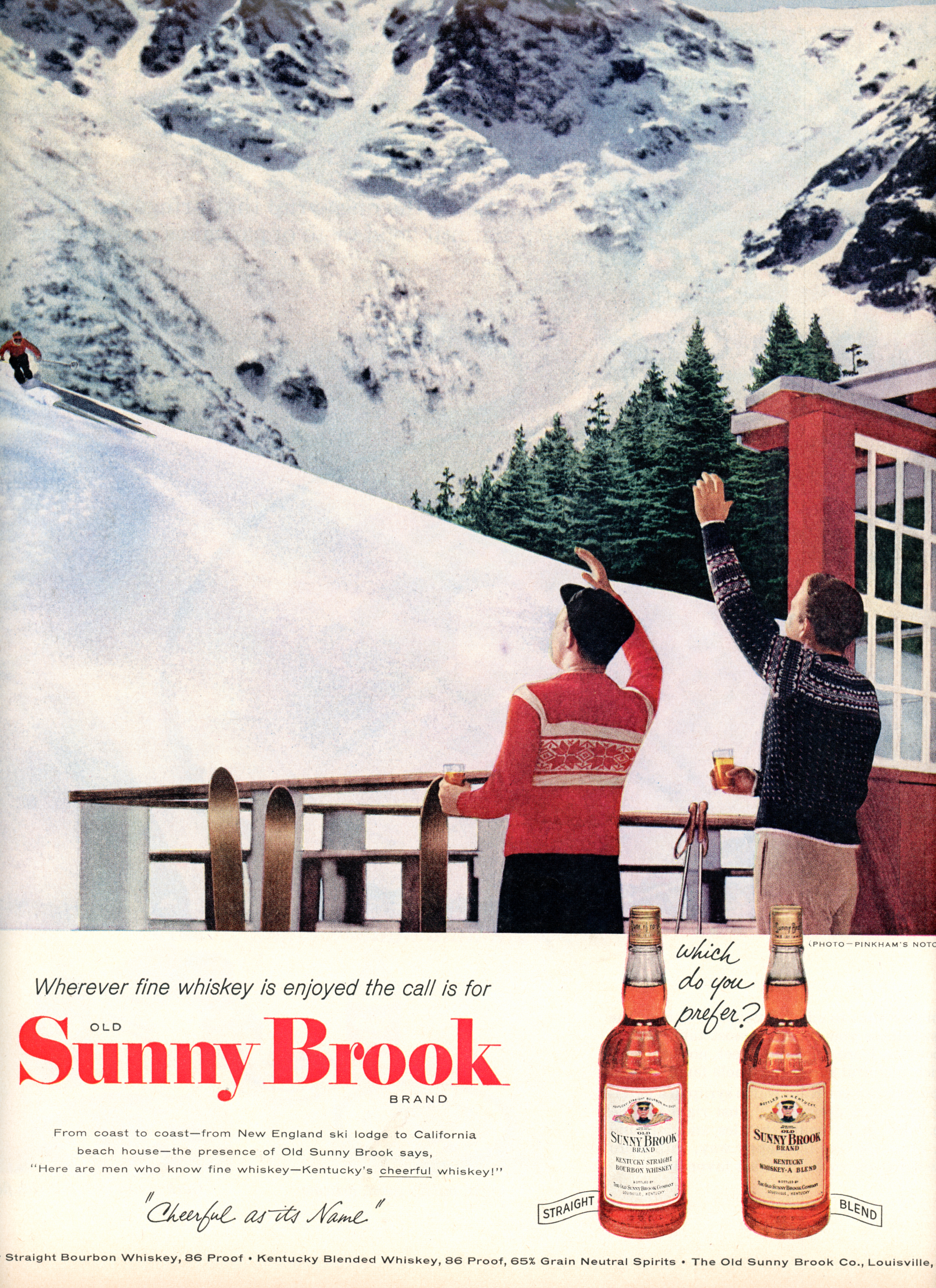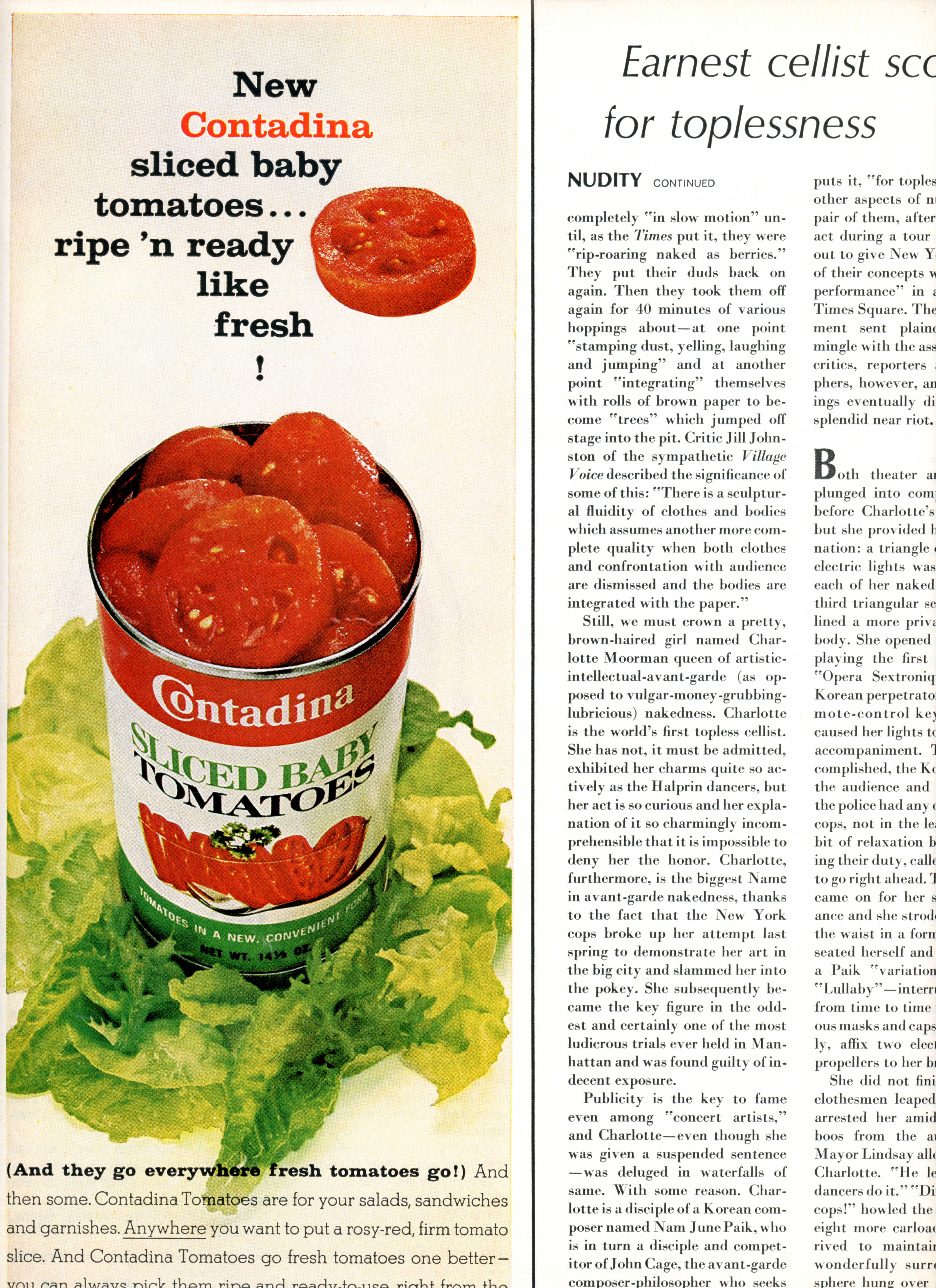When you last left Stephen Gillanders, the chef found himself at the center of a maelstrom involving a service miscue, a concocted aggrievance, and a downright cowardly awards ceremony. While hardly the kind of headache any craftsman expects to endure, he stood admirably behind his besieged sommelier and revealed just how morally bankrupt those who purport to represent (let alone honor) the industry truly are.
The ”controversy,” many news cycles later, now just seems silly. Any hollow victory those terminally online activists won—lobbing death threats as their weapon of choice—has only damaged the credibility of the Jean Banchet Awards and its controlling Cystic Fibrosis Foundation. Why should an organization trade on the work of a community it has no intention of defending (or, at the very least, respecting enough to grant it some manner of due process)? Why should a community gather to celebrate itself when it shows no solidarity to those who, in the act of service, find themselves scapegoated? There is certainly no shortage of “benefactors” who wish to sink their promotional hooks into chefs, and you do not think it wrong—no matter the charitable trappings—to question what those who do so really stand for.
But Gillanders, certainly, has not missed a beat. Though others may contort themselves to tear people down—and organizations may care for nothing more than covering their ass—the chef has continued to create. He lavishes praise on the teams at S.K.Y. and Apolonia, showcasing each of their new dishes with obvious pride. But Valhalla has formed his new favorite child, and Gillanders has enthusiastically (and candidly) shared the details of his research and development for the concept. You do not just mean retrospectively describing what has made it onto the opening menu, but rather emphasizing the active growth of particular dishes and sharing his excitement about what is coming down the pike.
Gillanders’s voice, via this content, is distinctive, and the joy he feels for his work is infectious. These aren’t quite like Grant Achatz’s posts nostalgically revisiting creations from Alinea’s past. They do not embrace the nonchalance and naturalness that characterize John Shields and Noah Sandoval’s digital engagement. There’s certainly none of Otto Phan’s bluster or Erick Williams’s unique joviality. Yet Gillanders invites viewers into his process with an honesty and intimacy that transcends the glossy food styling typically used to get asses in seats. Certainly, the restaurant’s food offers that kind of visual appeal, but the dishes are—even through this early period—hardly frozen in time. Rather, you get a clear sense of the chef’s dynamism, and there’s not quite any other quality that induces return visits quite so effectively.
(You think only Michael Lachowicz, in his own inimitable way, comes close to offering the same peek behind the curtain—though one that centers rather touchingly on the emotional underpinnings of his approach to craft.)
However, Valhalla very much represents the culmination—at least for now—of a distinguished career, and it might be helpful to contextualize how the chef came to occupy Time Out Market’s cozy second-floor space.
Gillanders was born and raised in Los Angeles, where he “spent much of his childhood in the kitchen alongside his Filipino grandmother” and helped to prepare “authentic home dishes like lumpia.” After attending (at the suggestion of his mother) a summer program at the city’s Culinary Arts Institute, he knew—at the tender age of 15—he was meant to be a chef. After receiving his formal training in Los Angeles, Gillanders earned a B.S. in Culinary Arts Management at the University of Nevada, Las Vegas.
While there, the 21-year-old competed in S.Pellegrino’s 2004 Almost Famous Chef Competition, comprising student participants from “leading culinary schools in the U.S. and Canada” who are judged on “creativity, presentation, personality and their ability to perform under pressure.” Gillanders, preparing a dish of “Crispy Skin Cured Salmon with Parmesan Spinach Cakes, Yukon Gold Potato Puree, Mushroom Ragout, Smoked Salmon Rillette, and Port Beurre Rouge,” beat five of his UNLV peers to represent his region at the national finals. On that occasion, the same preparation would win him the “People’s Choice” and “Signature Dish” competitions, securing him first place overall along with the top prize: a trip to the Italian Culinary Institute for Foreigners and an appearance on The Today Show.
Gillanders would call the competition “a great experience” that helped him to learn about his “own capabilities under incredible pressure” as well as the nature of the field—“that it’s really all about satisfying people.” One of his lecturers, Dr. Jean Hertzman, would term him “a great chef and also a young man of exceptional character,” noting that “he brings a rare combination of talent and true personal enjoyment to his work that is the hallmark of a great chef.” Such a statement does not only speak to the young chef’s prodigious skill, but—you think—the very same enthusiasm that can be recognized in his social media content (to say nothing of tableside manner) to this very day.
On the back of this win and his subsequent graduation from UNLV, Gillanders took a position locally with Jean-Georges Vongerichten as a sous chef at PRIME Steakhouse in the Bellagio. That led, not long after, to an executive sous chef position at ARIA’s Jean-Georges Steakhouse. And, after proving himself at these luxe, high-volume venues, Gillanders would—after traveling “extensively throughout Asia and Europe to broaden his culinary repertoire”—get the call to come to New York City and start as the corporate executive chef of Jean-Georges Management in 2011. This more overarching role would charge him with overseeing “seven New York City restaurants” for the Alsatian master.
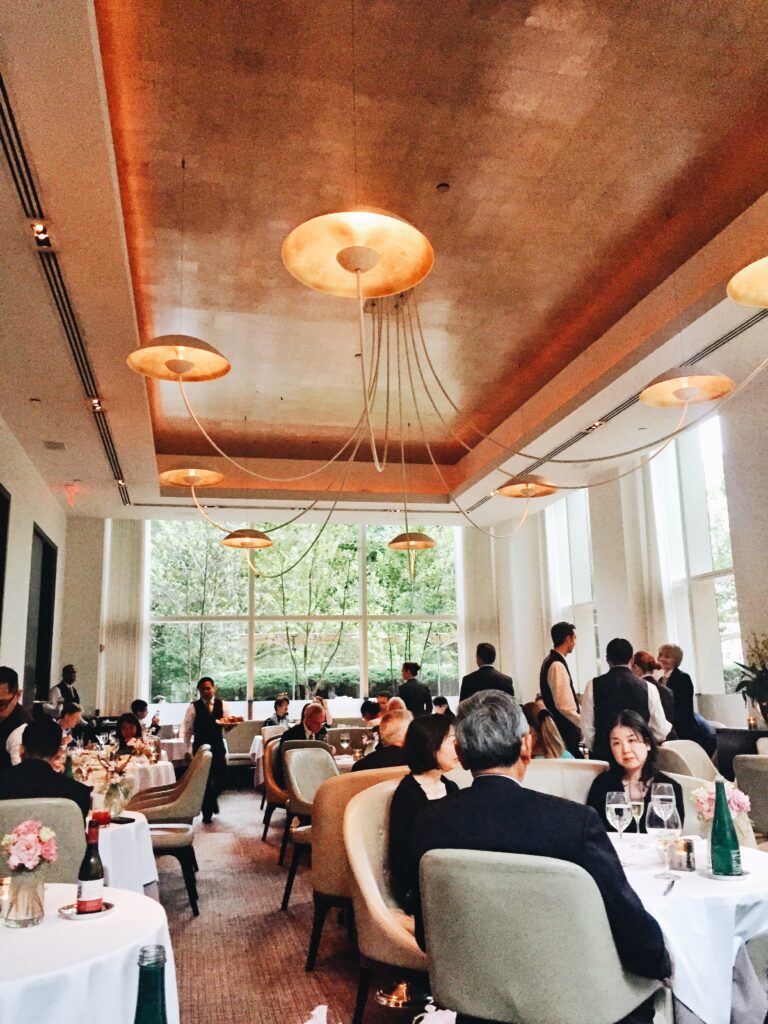
You are not sure if this included the (at the time) three-Michelin-star Jean-Georges restaurant in Columbus Circle (that you surmise is headed by its own dedicated executive chef). However, it is safe to assume that those high standards inform the work of the entire group and that Gillanders was exposed to the stylistic foundations that guide its work at the highest level. Besides, it should not be discounted how (surprisingly?) good concepts like ABC Cocina, ABC Kitchen, JoJo, and Perry St. can be (alongside a range of serviceable hotel restaurants like The Mark and The Mercer Kitchen that, at the very least, represent one of the industry’s most lucrative niches). The Alsatian even operated Spice Market—its menu “centered…around Southeast Asian street food”—back then (and through 2016).
You think it is fair to say that the Jean-Georges brand has suffered a bit with the expansion of its empire, with the flagship losing its third star in 2017 and those trendy hotel restaurants facing heightened scrutiny around the same time. However, the group was close to the peak of its powers in 2011, and Gillanders could count on engaging with a diverse array of crowd-pleasing spots within one of the world’s fiercest markets. He would also, across the various establishments, be inducted into Vongerichten’s particular sensibility: one that has combined the finesse of fine French technique with locally sourced ingredients and the chef’s particular flair for the cuisines of Asia.
More importantly, Gillanders’s role in New York would go beyond being a mere custodian of what his boss had already built. As corporate executive chef, he would open “nine restaurants, foreign and domestic” (including, not least of which, Vongerichten’s iteration of The Pump Room in Chicago’s Ambassador East Hotel). Stewarding a concept from the planning phase through its realization clearly comprises a whole different education when compared to the part one may play in well-established venues. Such experiences would not only provide Gillanders with greater ownership over his culinary work from start to finish, but also touch on the entrepreneurial and design aspects of the business. It is unclear exactly which restaurants Jean-Georges Management opened during this period (you count JG Tokyo as one), but, when accounting for the chef’s travels before arriving in NYC, he had been “from China to Japan to Vietnam, Thailand, South Korea, and the Philippines” when all was said and done.
After five years under Vongerichten in that corporate executive chef role, Gillanders was finally ready to strike out on his own. However, he did so savvily. Perhaps inspired by his time at The Pump Room (formerly and latterly a Lettuce Entertain You property), the Los Angeles native spread his wings in Chicago as Rich Melman’s fourth “rotating up-and-coming chef-in-residence” at Intro. In late 2015, he would follow in the footsteps of CJ Jacobson (of Aba and Ema), Erik Anderson (recently of COI), and Aaron Martinez (formerly of Addison, Quince, and Elizabeth, now a chef-partner in St. Louis) respectively, presiding over the former three-Michelin-star L2O kitchen (now a “school for entrepreneurs” as the LEYE honcho titled it).
The benefits of partnering with an established hospitality group—vis-à-vis staffing, promotion, and other overhead—for a first solo project are obvious. And Melman, quite the living legend as far as restaurateurs are concerned, promised “full creative license” to “implement the food concept as well as ambiance, service style, and more” with the “support and backing” of his whole organization. Gillanders, to his credit, would put the LEYE founder’s words to the test by breaking with the tasting menu format offered by the preceding trio of chefs. His à la carte selection would be “a little more approachable, a little more convivial” and make use of “ingredients not normally associated with fine dining” that, nonetheless, would be treated with “high-end techniques with the hope of producing big flavors.”
The menu, which also retained a five-course tasting menu drawn from the various options, featured dishes like “Crab Fritters” (with pickled ginger remoulade), “Kampachi Sashimi” (with black sesame ponzu), “Tuna Tataki” (with shallot cracklings), “Potato Soup” (with black truffle croquettes), “Baby Artichoke Risotto” (with Nishiki rice), “Wilted Kale Salad” (with roasted pepitas), “Sea Scallops” (with brown butter dashi), “Black Truffle Salmon” (with cauliflower variations), “Berkshire Pork Chop” (with collards), “Flatiron Steak” (beef & broccoli style), and “Parmesan Chicken” (with orzotto).
To your eye, this selection of items still reads rather well some seven years later. It would anticipate the blending of global cuisines that has now become more commonplace in Chicago while resisting that much-maligned “fusion” label. Instead, Gillanders showcased a worldly, ingredient-driven style defined—in your opinion—by the creativity of the second-, third-, and fourth-billed ingredients in each given preparation. Rather than representing needless exoticism, these elements naturally speak to what the chef had learned from his travels and the manner in which he is able to harmonize bits and pieces from different cultures in a cohesive, legible (to LEYE’s Lincoln Park demographic) way. You also think there’s little chance—looking at the comforting qualities of the entrées—of diners leaving hungry: a testament to the lesson learned from the Almost Famous Competition (“it’s really all about satisfying people”).
At the time of unveiling, it would be noted that Gillanders’s Intro menu would “almost” serve as a preview for his “own restaurant, S.K.Y. (it stands for his wife’s initials, and isn’t pronounced as the world)” that was “slated to open sometime next year [2016] in Los Angeles. However, the chef’s three-month chef-in-residence position grew into a “permanent role as chef/partner” that saw him provide continuity through the restaurant’s subsequent collaborations (like former Manresa chef de cuisine and James Beard Foundation “Rising Star Chef of the Year” awardee Jessica Largey).
This decision, while very much attuned to the spirit of camaraderie that fueled Intro from the start, would effectively spell the end of the rotating chef concept as originally envisioned. Rather than drastically changing tasting menus every few months, the à la carte format that Gillanders ushered in would provide—along with the chef/partner himself—a stable foundation for subsequent visitors to work with. For Lettuce Entertain You, this sense of stability would help the restaurant draw consistent business from the Belden Stratford’s residents and those in the surrounding neighborhood. Naoki Sushi, when it opened within L2O’s former private dining room, would further add to that appeal.
During the course of this evolution, Intro would—in February of 2016—be named a semifinalist for the James Beard Foundation’s “Best New Restaurant” award. Largey would end her residence in May, and it wasn’t quite clear whom LEYE had planned next. As best as you can tell, Gillanders debuted a new Korean menu (including “fluke sashimi, foie gras bibimbop, charred hangar [sic] steak with fermented red chili butter, and more”) in July to keep the concept fresh. By August, the restaurant could announce that Jonah Reider—who ran supper club Pith from his dorm room at Columbia University—would be cooking there for a month starting in September. He would be followed by Hisanobu Osaka (formerly of Japonais by Morimoto and then involved with Naoki Sushi) in November.
Somewhere in between, Gillanders would launch a “family-style dim sum menu” within Intro featuring “made to order” (and some non-traditional) items like “Peking Duck Steamed Buns,” “Imperial Tuna Poke,” “Longevity Noodles,” “8 Treasure Broccoli Salad,” “Thai Chicken Soup,” and “Mongolian Ribeye Steak” for an all-in price of $72. In January of 2017, this idea would be expanded upon as he teamed up with former chefs-in-residence CJ Jacobson and Aaron Martinez (who had stayed under the LEYE umbrella) to launch a full “modern dim sum” menu that would last “at least four months.” Intro, clearly, was starting to run out of steam as there just wasn’t enough new blood to keep the “incubator” concept fresh and exciting. LEYE could be credited for looking to embrace new cuisines in a bid to sustain the space’s dynamism, but the “modern dim sum” menu—ultimately—was subject to scathing criticism.
In April of 2017, Gillanders would announce his looming departure from Intro, yet he would not be saying goodbye to Chicago as originally intended. The chef and wife Seon Kyung Yuk were won over by the Windy City and, thus, altered their original plan of opening S.K.Y. in Los Angeles. At the time, Gillanders admitted his stay in Chicago “was supposed to be a brief one” but earning the trust of Rich Melman proved decisive. The chef counts the LEYE founder as one of his two mentors (alongside Jeon-Georges Vongerichten) and revealed that he “received Melman’s full blessing” in leaving Intro to go out on his own. (The former L2O space would transform into a virtual restaurant titled Lucky Dumpling in June before making way for a private event space that same July.)
S.K.Y., as described at the time of its chef’s departure from Intro, would focus on “elevated and globally-influenced fare” comprising “influences from Mexico, Italy, and Korea.” Gillanders would not term his cuisine “modern American” (because “that doesn’t mean anything”) and made clear his hatred for “the ‘f-word’” (or fusion). Rather, the restaurant’s menu would be in the same vein as “his first menu at Intro” with a level of technique that would “impress the Chicago restaurant industry” while also being “accessible so his parents can enjoy a meal.” Wine, nonetheless, would “star” when it comes to the beverage program—with the chef feeling that his chosen neighborhood already benefits from “enough cocktails and beer” served at other establishments.
The neighborhood in question, of course, would be Pilsen, with Gillanders choosing a 2,800-square-foot former medical clinic along 18th Street as home to his concept. S.K.Y. would be right across the street from Thalia Hall (refurbished in 2013) and its accompanying Dusek’s Tavern (opened the same year). (Dusek’s awarding of a Michelin star will always strike you as one of Bibendum’s more puzzling decisions, but one that you chalk up to the tire company’s desire to drive traffic to the wider surrounding community.) S.K.Y. would also be located just a few blocks west of HaiSous, the Vietnamese restaurant from Thai and Danielle Dang (opened in June of 2017).
In your mind, HaiSous—fueled by sympathy for Embeya’s untimely demise and the mistreatment of the Dangs at the hands of their business partners—heralded Pilsen’s development into a citywide destination for cuisine. You do not say that to in any way disparage the neighborhood’s longstanding Mexican heritage but, instead, merely to acknowledge that a novel Vietnamese concept from a chef with a proven track record formed an effective lure that brought outsiders onto the block and spurred a broader appreciation of the street’s bars, bakeries, tattoo parlors, art galleries, record stores, and vintage clothing shops. Of course, it cannot be taken for granted that any given community actually desires this sort of ingress, and the Dangs were savvy enough to hire locally (“30 of their 32 employees” at opening living in Pilsen) and consciously sooth “long-time locals” who feel “they’re being squeezed out of their homes unfairly.”
In October of 2017 (approximately one month before S.K.Y.’s opening), Gillanders would get a taste of this anti-gentrification agitation as his general manager was accosted by protestors. They questioned the restaurant’s “right to be in Pilsen” with some shouting “profanities” and claiming “literally, our lives are in danger because you are here.” Though the medical clinic that previously occupied the lot “had been vacant for three years,” the protesters claimed “S.K.Y. will attract white outsiders and raise rents and eventually displace current residents” while also dismissing “Gillanders’s Filipino heritage.”
You agree that concerns over displacement, particularly as it relates to older residents within gentrifying communities, are valid. However, the activists—at face value—sound bigoted and borderline racist. They myopically discount Pilsen’s centuries of shifting demographics (from working class Irish and German to Czech and, finally, Mexican) in order to make some special claim over a barren property. They cynically look to shut the door on an independent business owner, himself the “son of an immigrant,” in a bid to fortify their xenophobic, separatist conception of big city life. And, though the protestors accomplished nothing (other than denigrating the reputation of the very “community” they purport to represent), it is unsurprising that they reared their head some five years later as part of the digital lynch mob targeting S.K.Y.’s sommelier.
Gillanders pressed onward and, in November of 2017, fulfilled his dream. S.K.Y. opened with a menu featuring dishes like “Cornbread Madeleines,” “Black Truffle Croquettes,” “Local Burrata Cheese,” “Maine Lobster Dumplings,” “Organic Fried Chicken,” “Caramelized Diver Scallops,” “Foie Gras Bibimbap,” and “Prime Beef Short Rib”—many of which persist until this very day. The restaurant also offered a $49 “Autumn Tasting Menu” with accompanying $38 wine pairing; however, it maintained a BYOB policy for several months while still waiting on its liquor license (and, to its credit, has continued to abide by a rather generous approach to corkage).
The reaction from the larger Chicago gastronomic community (if not the Pilsen locals themselves) was overwhelmingly positive from the start. Despite being open for little more than a month, S.K.Y. ranked as one of Fooditor’s ten best newcomers of 2017. In January, the Chicago Reader praised the restaurant for “frequently” pushing “the right buttons” with its “vaguely pan-Asian” fare. In March, Time Out awarded S.K.Y. five stars for “craveable, Asian-inflected dishes” in a “handsome” space “that pulsates with warmth and generosity.” That same month, Chicago named Gillanders’s spot its “Best New Restaurant” of 2018 (beating out Bellemore and HaiSous). The Chicago Tribune, too, when awarding S.K.Y. three stars, would term it a “strong contender for the year’s best restaurant.” And Michael Nagrant, as well, would heap praise on the place for, among other things, offering prices that remind him “more of the 1990s than 2018.” Even Michelin’s chief inspector would admit, in September, that S.K.Y. ranked as a restaurant that was “considered for stars but didn’t quite make it.”
Personally, though you have only visited S.K.Y. a handful of times over the years, you think the restaurant has remained a steadfast paragon of quality and value. It always startled you just how generously portioned and technically refined Gillanders’s dishes were for the price. The space itself, while consciously sparse, felt comfortable and was enlivened by the staff (unerring in their sincere warmth) and throngs of other customers alike. Even the wine program—the kind of detail you would not fault, given the degree of value seen elsewhere, for being executed in a modest manner—impressed from the start. Gillanders, as it happens, was serious about making fermented grape juice the “star,” pouring no less than 32 selections by the glass (a staggering amount) and stocking another three dozen bottles from high-QPR producers (like Chartogne-Taillet, Christophe Mignon, Marie-Courtin, Pierre Paillard, Suenen, Guiberteau, Matthiasson, Radikon, Tissot, Paolo Scavino, Heitz Cellars, and Whitcraft). This all amounts—along with a stellar brunch menu—to a restaurant imbued with that most transfixing of qualities: depth.
Though Gillanders and his general manager “anticipated the worstcase [sic] scenario—no business, no walk-ins,” S.K.Y. had achieved the “best-case scenario” of widespread adulation (and, at least as far as Pilsen’s activist set was concerned, some kind of ceasefire). The restaurant formed “the first time in Chef’s life where he’s not handcuffed to a structure that requires levels of approval for every dish,” and, thus, “the gloves are off for him.” Gillanders, in March of 2018, would laugh off “the ideas of opening another place or going for a Michelin star.” Rather, he wanted only to get his hands on “the new season’s produce” and “to have a successful restaurant that we’re proud to go to, where we’re able to do exactly what we want and have people appreciate that.”
By January of 2020, Gillanders could look back at S.K.Y.’s menu and admit that, despite his intention to serve “more of a global menu,” the customers “tell you what your signature dishes are, they pick those—you don’t get to pick them.” In this case, “they picked the Asian dishes” (with “Chinese- and Korean-influenced dishes like lobster dumplings and bibimbop” becoming hallmarks of the restaurant). The chef was savvy enough to give the people what they want via “new Asian dishes” but also felt “sold short.” He contended: “if that’s what you guys want, that’s what we’ll give you. But moving forward, I don’t want to be known as the ‘Asian Food Guy.’ There’s nothing wrong with that, in my experience, but we can do more.”
“More,” in this case, would signify Gillanders’s second Chicago restaurant, named “Apolonia” after his Filipino grandmother (the very same one who first taught him to cook). The concept would allow the chef to focus on the “European-Mediterranean cuisine” that had been excised as S.K.Y.’s global style yielded to more Asian dishes over time. The restaurant would not be in Pilsen but occupy 5,200 square feet (nearly twice that of his first spot) on the ground floor of a Hilton just one block west from McCormick Place and Wintrust Arena in the South Loop. It would distinguish itself from the city’s other examples of the genre (like Galit and Aba) by spurning hummus and pita to focus more on “the European side of the Mediterranean,” the “Spanish, Italian, France” part that Gillanders is “completely in love with.”
The chef, in his own words, was ready to “double down on Chicago” and reward the city for its support. He’d be taking aim at a neighborhood that had never really formed a dining destination (save for the ignominious Acadia) but, instead, benefitted more opportunistically from the tastes of the transient convention crowd. However, by 2019, the South Loop was undergoing an “apartment boom” (following on the back of a first wave of gentrification in the 2000s) that would yield an even greater permanent population of diners to draw on (without, at least when it comes to the commercialized stretch Apolonia sits on, the same controversies surrounding displacement). Even Erick Williams—of Virtue fame—would eventually open his take-out focused Mustard Seed Kitchen just a block west of Gillanders’s new spot.
Nonetheless, all of that would prove a little way off, as Apolonia’s original estimated fall 2020 opening saw itself delayed by the pandemic (that, itself, decimated any convention business the chef might have hoped to benefit from). In April of 2021 (some 15 months after the restaurant’s original announcement), Gillanders was frank in stating that they “wouldn’t have been able to open” without grants from the American Rescue Plan. But open he did—that very month—with confidence that locals would form the concept’s “bread and butter” while the return of convention business (whenever that day may come) would be more like the “icing on the cake.”
The restaurant itself, now realized, would boast a “monochromatic main dining room” with bright white walls and plenty of natural lighting that feels very much the inverse of S.K.Y.’s interior. However, the two venues would share the same sleek, sparse furnishings—understandably so since Seon Kyung Yuk (the latter restaurant’s namesake and Gillanders’s wife) led the design of both concepts. This sense of visual divergence (and subtle convergence) smartly fits the chef’s larger aesthetic goals: “we would love for a guest to come to Apolonia one night, and then go to S.K.Y. two days later [and] have no idea that they’re affiliated at all.” At the level of cuisine, this contrast would be derived from “many dishes cooked on a grill or wood-burning oven.” Desserts, from executive pastry chef (and long-time collaborator) Tatum Sinclair, would make use of ingredients like Turkish coffee, burrata, and Sicilian “emerald” pistachio. And, on the beverage side, the restaurant would offer “a custom-blended…vermouth” alongside “takes on classic old-world cocktails” and “wines from the Mediterranean coast” by sommelier Jelena Prodan.
Personally, you visited Apolonia on opening night—as well as a couple of times in the years that followed—and found it to be a worthy successor to S.K.Y. That staggering sense of value—vis-à-vis the portion sizing—remains. Dishes like the “Toothpick Lamb,” both in level of engagement and deliciousness, were utterly genius. Sinclair’s “Black Truffle Puff Bread,” by your measure, is what Alla Vita’s “Wood Fired Table Bread” dreams of being. And Gillanders’s approach to pasta—preserving the traditional essence of the form while thoughtfully elaborating upon it—stands as an example that many of Chicago’s neo-Italian restaurants would do well to follow. Prodan’s wine program at Apolonia would follow in S.K.Y.’s footsteps with more than thirty by-the-glass selections (that’s more than many of the city’s dedicated “wine bars.”) She would add to these options with well-priced bottles from producers like Clos Cibonne, Marcel Deiss, Pierre Gerbais, Pierre Morey, Raúl Perez, Sylvain Pataille, Vietti, and Vocoret.
In June of 2021 (a little over two months after the restaurant’s opening), Apolonia would receive a lukewarm—and rather myopic—review from the Chicago Tribune that saw it earn two stars (relative to S.K.Y.’s three). Any other formal reviews are hard to find. Rather, the restaurant became known for its “viral Instagram dish,” the “Black Truffle Puff Bread.” Sinclair would admit to Chicago that she made “72 different versions” of the recipe before settling on the final iteration. And the magazine, while not ultimately reviewing Apolonia, thought enough of the concept to host one of its (ethically murky) “Secret Suppers” there in 2022. Ultimately, Gillanders’s new spot would receive its most notable praise from Michelin, who awarded it a Bib Gourmand (“good quality, good value cooking”) in March of 2022 citing a “cool and chic” space with “straightforward, exemplary” cooking “poised for sharing” alongside “delightful treats” for dessert.
In the period between Apolonia’s announcement and its eventual opening, Gillanders would involve himself in yet one more project. Drawing, perhaps, on his extensive experience with Vongerichten’s own hotel restaurants across New York City and around the world, the chef would replace Boka Restaurant Group as the operator of the Viceroy Hotel’s two Gold Coast concepts: Somerset and Devereaux.
Going in, Gillanders made it clear that he did not want to “canibalize [sic]” any of his work from S.K.Y. or Apolonia but, rather, execute a “simple and seasonal” approach that does not “manipulate ingredients.” Sinclair would tag along as a consultant and “package deal” with the chef. The duo would bring some interesting ideas to the table (especially given the character of the surrounding neighborhood) with items like “Spicy Crab on Crispy Rice,” a “Crunchy Lobster Spring Roll,” “Housemade Breads,” “Broccolini Pesto Tagliatelle,” “Beet Agnolotti,” “Chicken Schnitzel,” “Beef Wellington,” a “Daily Selection of Ice Creams and Sorbets,” and a “Cheesecake Brûlée.”
Personally, despite your persistent criticism of BRG (and of Lee Wolen in particular) for their stale, cynical concepts, you were a longstanding fan of their Somerset brunch (even if it meant having to witness the Boka chef strut around, rather unprofessionally, in his running shorts). Gillanders’s take on the concept, the one time you sampled it, left you wanting. However, that occasion was rather close to the time of transition, and you will admit that later menus seem much more interesting and faithful to the standard set at his other restaurants.
At the time of Apolonia’s announcement in January of 2020, Gillanders would note that he “doesn’t aspire to morph into a large restaurant group.” The chef “may open more spots, but he wants to concentrate on a few and make them exceptional, carrying the same fun atmosphere throughout.” In other words, “we just want to be a couple people who own a couple of restaurants and work in them.” Nonetheless, in a little over a year, Gillanders would go from one solitary spot in Pilsen to a trio of concepts scattered around the city. And 2022, seemingly out of nowhere, would deliver him with the most exciting opportunity yet.
First, however, it is worth taking a little detour.
Time Out, the publication that awarded S.K.Y. five stars in 2018, diversified its business in 2014 by trading on its expertise to curate the first Time Out Market in Lisbon. That would be followed, in 2019, with locations in Miami, New York, Boston, Montréal, and Chicago (in that order). At face value, a publication embarking on commercial relationships with a select stratum of vendors within a dining scene that it covers seems like a clear conflict of interest. The organization, no doubt, would assert its “editorial independence” in response to such a claim. But, frankly, mass media must be held to the highest scrutiny, and honest criticism—axiomatically—must not be connected to any financial incentive (even, in a perfect world, advertisers). You do not think contemporary journalists have earned the public’s trust, and, free of total transparency in their process (an absolute impossibility as it pertains to such subjective writing), it must be assumed that they will always naturally privilege those who butter their bread.
That being said, nobody would confuse Time Out for a serious source of food criticism. It, like all legacy media, merely serves as a promotional apparatus for public relations firms and the editors’ own pet ideologies. Omission, as always, forms the most insidious weapon of those who wish to shape reality, yet how nice it would also be if readers could ever really get a sense—internally—of why this place (and not that place) merits a cover story. This process, from the outside, seems arbitrary at best. At worst, it churns out consumptive propaganda attuned to unconscious (or all-too-conscious) biases.
So why not simply treat Time Out as something more like a marketing brochure masquerading as a magazine? Why should the publication even worry about impartiality when it can sate (and profit from) the very same desires it spurs via its coverage? At least Time Out, through its markets, is brave enough to take the mask off and reveal that food writing was never about consumer advocacy but, rather, putting one’s finger on the scale in line with personal predilection. The tautological “authority” this breed of journalist concocts (by mere virtue of being published under a recognizable banner) simply takes advantage of humans’ desire for heuristics and channels it toward personal enrichment.
When it comes to the Time Out Markets, the publication has finally put some skin in the game and resolved to stand alongside the vendors they praise in print. In their own words “the Chicago outpost follows a simple rule when it comes to curation: If it’s good, it goes in the magazine; if it’s great, it goes in the market.” This sort of structuring—in which the publication’s vendor-partners implicitly embody the editors’ highest comestible recommendations—does feel oddly transparent.
For Time Out is no longer only profiting on content creation (and its associated advertising lucre), but rather answers directly to the consumers who place their trust in the staff’s curation. Bad criticism is no longer obscured by the essential degree of separation between the journalist and the business about which they write. The diner, upon enduring an awful meal, can no longer be assuaged by the claim that the restaurant was just having a ”bad night.” They will no longer just forget who—through sloppy evaluative technique or total hackery—led them astray. They will no longer just move on to the next splashy feature and make the same mistake all over again. Time Out must, via the markets, live and die by its editorial “taste” and accept that any flawed selection or hiccup in operation poisons its own brand.
This, to you, feels like ownership. It feels like honesty. It strips away those last vestiges of “journalistic integrity” and acknowledges that any claim to ethical behavior was always but a farce. Food writers only feature people they like, people who fit prefabricated demographic categories, and those who toe the line of their boss’s worldview. Criticism comes second to curation; in fact, criticism forms the rubber stamp with which to reward one’s friends and the cudgel with which to punish one’s enemies. The human mind can contort itself to justify any opinion, and an article of only several hundred words—though aiming to tell a restaurant’s story—will always leave more unsaid than said.
So why bother with the song and dance? Why even try to untangle the many layers of subjectivity that make “objective” food criticism an oxymoron? Why not simply say: “we liked it so much we went into business together”? Now that is praise, and it ensures fewer rubes are left thinking that any given journalist actually advocates for the public’s interest.
When Time Out Market says that it offers “the city’s most delicious dishes, cooked by some of the most decorated chefs in the Midwest,” consumers know they are listening to an infomercial. When the venue touts “a hand-selected array of everything you could want to eat, drink and see in Chicago, all under one roof,” no gastrotourist really thinks they are going to substitute a trip to Alinea, Oriole, or Smyth with something served out of a stall. Placing financial interest front and center while abandoning any pretense of ethical purity ironically reads as trustworthy. You do not mind being sold to, but you do rue those who—while posturing as independent voices—subtly manipulate your taste in line with their own, unstated vision of social engineering. There’s something shameless about what Time Out is doing, yet it remains a thousand times more palatable than what its peers—draping themselves in the banner of the Fourth Estate—perpetuate.

Time Out Market Chicago’s opening roster, in November of 2019, comprised stalls from Band of Bohemia (which closed in 2020 under a dark cloud), Brian Fisher (whose restaurant Entente you still miss), John Manion (of El Che Steakhouse), Bill Kim (who closed his longstanding Randolph Row concepts in 2018), Thai Dang (whose HaiSous forms one of S.K.Y.’s Pilsen neighbors), The Purple Pig (from hotheaded 2014 James Beard “Rising Star Chef” Jimmy Bannos Jr.), Kevin Hickey (representing both The Duck Inn and Decent Beef), Abe Conlon (of the subsequently embattled Fat Rice), Split-Rail, Mini Mott, The Art of Pizza, Pretty Cool Ice Cream, Lost Larson, FARE (a “clean food” concept), Arami, Dos Urban Cantina, and Sugar Cube (from the ignominious Jason Chan). Tortello and Erick Williams (of Virtue) would be involved in programming for the market’s second-floor demonstration kitchen while Paul McGee and Shelby Allison (of now-imploded Lost Lake) would run a hidden speakeasy there too.
The goal of bringing so much talent together, in the CEO’s own words was “making fine dining casual, and casual extraordinary.” He even spoke of “democratizing fine dining” (a favorite phrase of yours). This rogues’ gallery of “the city’s best culinary talents” (alternatively referred to by their own names or by those of their businesses) came about when “the Time Out Chicago editorial team trawled the city in search of the best chefs and restaurants, and then invited the very best to join Time Out Market’s all-star lineup.” Though you will admit that the publication put together a rather impressive lineup of collaborators, you would only term them notable (and not the “best” in any of their respective genres). A case could, perhaps, be made for Thai Dang, Abe Conlon, Lost Larson, and Paul McGee representing peak expressions of their particular crafts, yet Time Out is clearly taking some liberties (while, to its credit, offering guests the convenience of many great—though not the “best”—names under one roof). Fair enough, you say.
Unfortunately, Time Out Market Chicago’s opening momentum would be sapped—like so many hospitality projects—by the pandemic. The venue would close in March of 2020 (ahead of the state’s formal suspension of dine-in service) and reopen later that year in August. Only Arami, Bill Kim, Brian Fisher, Dos Urban Cantina, Kevin Hickey (but not his Decent Beef concept), Lost Larson, Mini Mott, and Pretty Cool Ice Cream remained as Time Out, to its credit, gave other vendors “the option to end their one-year agreement early.” The market’s promise of “international opportunities” and “additional exposure” for its curated chefs had quickly devolved into an outright battle for the venture’s survival in an era without the “West Loop and Fulton Market workers” that would typically crowd its corridors. And, when indoor dining was once more forbidden in October of 2020, you wondered if the dilapidated market had been dealt its death blow.
In late January of 2021, limited dine-in service would return; however, Time Out Market Chicago would wait until June of that year (concurrent with the lifting of all restrictions) to reopen. At that point, only Arami, Bill Kim, Brian Fisher, Dos Urban Cantina, and Mini Mott would remain from the original lineup. However, they would now be joined by Candlelite (tavern-style pizza), Cleo’s Southern Cuisine, Pisolino, Shawn Michelle’s Ice Cream, and Soul & Smoke. Three of these stalls (Cleo’s, Shawn Michelle’s, and Soul & Smoke) would be black-owned in a seeming response to criticism over the “glaring omission” of such businesses at the time of the venture’s original opening. Between the time of that announcement and the market’s return to operation, it would also add Polombia (a Colombian-Polish “mashup”) and Bittersweet Pastry to the assortment of stalls.
In October of 2021, Bar Goa—from the owners of West Loop’s ROOH—would enter the mix as Time Out “was determined to add diversity to its vendor lineup.” That month would also mark the first time, since before the pandemic, that the market would be open for seven days a week. In Janaury of 2022, Lil Amaru (an offshoot of Rodolfo Cuadros’s Amaru) joined the lineup. Then, in February of 2022, Luella’s Southern Kitchen (from James Beard Award “Best Chef: Great Lakes” semifinalist Darnell Reed) would open a pop-up stall during Mardi Gras that would subsequently transform into a permanent fixture. Early March would see Evette’s (a third location of the Lebanese-Mexican mashup) enter the fray while Avli (the fifth location of the Greek chain) and Big Kids (the second location from Ryan Pfeiffer and Mason Hereford), too, joined later in the month. Somewhere along the way, Gemma Foods, JoJo’s ShakeBAR, and Lono Poke would enter the mix (while Brian Fisher, Candlelite, Dos Urban Cantina, Mini Mott, Cleo’s Southern Cuisine, Pisolino, and Shawn Michelle’s Ice Cream would close their stalls).
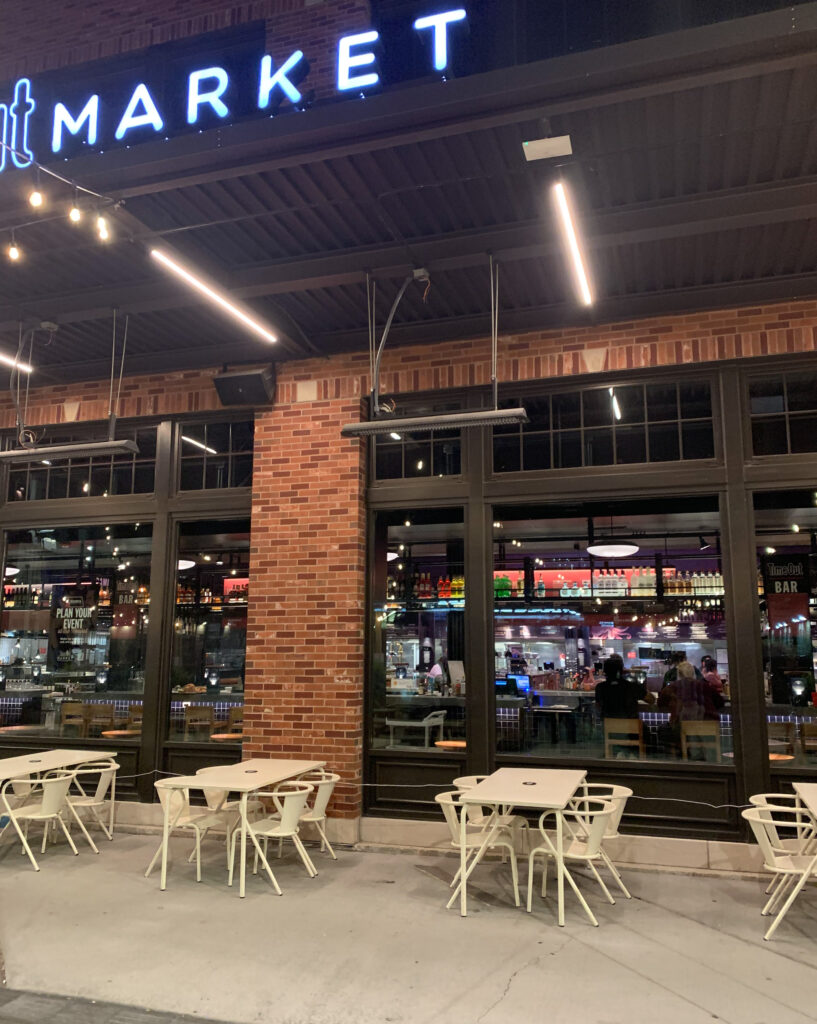
Today, Time Out Market Chicago boasts seventeen unique stalls that, after a couple difficult years, measures up to the number of options the publication pulled together at the time of the venture’s debut. Once more, you think a case can possibly be made that stalls like Bar Goa, Soul & Smoke, Big Kids, Luella’s Southern Kitchen, Evette’s, and Polombia represent “the best of the city” within their particular niches. However, you do not think such a case is all that convincing, and Time Out has now opted to describe the concept as an “expansive, curated experience” featuring “the highest-rated local restaurants and Chicago’s most-revered chefs.”
This verbiage, in your opinion, continues to stretch the truth. For it seems clear that—post-pandemic—the market was forced to scramble to fill its stalls with anyone who carried a bit of name recognition, anyone who looked to expand on the name recognition of their brand, or anyone who could be relied upon to successfully, consistently operate within the space. When you add a conscious concern for “adding diversity” into the equation, you end up with a selection that cares less about featuring “the best of the city” and more for catering to the lowest common denominator via a superficial “variety” that implicitly discounts Chicago’s strength in some genres and weakness in others. Rather than offering the greatest depth in the city’s essential gustatory forms or celebrating different manifestations of the most beloved techniques, Time Out Market has increasingly used hyphenated “mashup” (just another name for “fusion”) cuisines to seem appealing. It has increasingly leaned on chains like Avli and JoJo’s that have already reached the point of market saturation. You have nothing against these concepts personally. No, you just think they reveal that Time Out is working backward to make the market a “success” (in a focus-grouped, market research kind of way) instead of truly asserting some vision of (and successfully collaborating with) “the best of the city.”
It is with this context—of a faltering Time Out Market looking to live up to its publication’s own hyperbolic expectations—that you now return to Gillanders’s story. The prodigious chef, counting S.K.Y., Apolonia, and Somerset all under his belt, would—on relatively short notice—embrace his greatest challenge yet. It would mean turning his back, somewhat, on the accessible global fare that had endeared him to Windy City diners. It would mean engaging with his fine dining chops and his adoration of wine at the highest level, delivering the kind of menu that would put all his experience with Jean-Georges (always invoked as a mark of where he’s been rather than where he’s going) to its harshest test. Gillanders had made his mark at Intro by subverting the example set by the restaurant’s opening trio of chefs to offer an à la carte selection. Now, nearly seven years later, he would finally commit to the tasting menu form and to a level of indulgence he had thus far restrained himself from pursuing.
Time Out, who clearly did not find April’s activist tantrum disqualifying, announced in early September of 2022 that Gillanders “will lead Time Out Market Chicago’s first standalone restaurant.” He would be “moving behind the confines of a brick-and-mortar restaurant” to open Valhalla, “an original fine dining concept” named for “the great hall of eternity in Norse mythology,” on the market’s second floor. There would, indeed, be à la carte options, yet the focus would undoubtedly be “an intimate chef’s counter tasting experience guiding guests through a 11-course menu” that the chef says “is equal parts decadent, globe-trotting and personal.” Gillanders would go so far as to say that “this is going to be the best food I can make right now” with “a story for every dish” that, in effect, “summarizes the entire evolution” of his career.
(Gillanders, it is worth saying, “wasn’t looking to open another restaurant” when he was approached by Time Out. However, just the same, he “wanted to branch into fine dining for several years.”)
Concurrent with the publication’s announcement, Gillanders had “divested from his other two restaurants as well as a position as chef at Somerset” to focus uninterruptedly on “creating an upscale experience that melds into the Market’s energetic atmosphere.” While admittedly “unconventional,” this nesting of a rarefied expression of craft within a more broadly popular setting actually represents, according to the chef, “a tradition…on the cutting edge of global fine dining.” He cites the fact that “Geranium, the best restaurant in the world, isn’t just in Copenhagen—it’s in the soccer stadium in Copenhagen.” Further, “Brooklyn Fare is in a food market, and they have three Michelin stars.” The reference to Norse mythology, thus, winks at “the restaurant’s location overlooking the main floor of the Market” and the notion of “transcending the [downstairs] experience as a whole.”
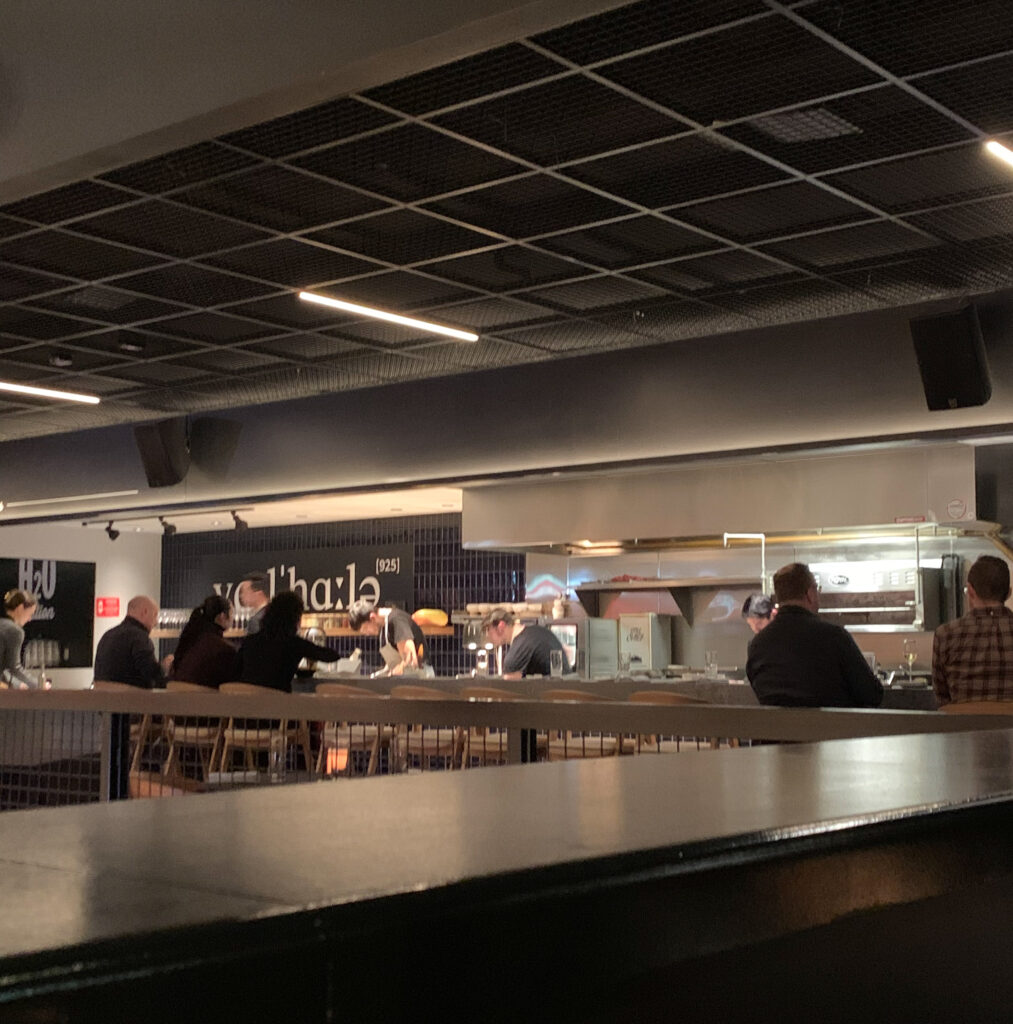
Valhalla would accommodate “66 diners, including the 14-seat chef’s counter” in a “partitioned space” on the eastern end of the venue’s second floor. There’d be a proper host at a proper stand waiting to greet diners while Gillanders, likewise, “will be based at the restaurant full-time and plans to interact with guests personally throughout their meals.” (Tatum Sinclair and Jelena Prodan would be offering their expertise firsthand as well).
The menu, going into more detail, would be inspired by the chef’s “time working for Vongerichten as well as his travels around the world,” yielding a selection of dishes labelled “approachable and rad, but not overly stuffy or fancy.” One preparation, a “pumped-up homage” to “crab arroz caldo” (a “traditional Filipino porridge”) would represent Gillanders’s embrace of his mother and grandmother’s heritage (“a venture he once regarded as intimidating”). Patrons could also expect to see ingredients like caviar, sea urchin, quail egg, Japanese scallops, and dry-aged lamb utilized, with the chef hoping guests will “lean into the novelty” of eating such totemic luxury ingredients “in an unorthodox space.”
Ultimately, the most convincing testimonial regarding the new concept would be one of attitude: “we will never say that we can’t do this because we’re in a food hall. On the contrary—we’re going to say we should do this because we’re in a food hall. I think there’s going to be the expectation for us to make things a little lesser, and that’s where we’re going to double down.”
Valhalla would open on September 21st, less than two weeks after the restaurant’s announcement, and that is right about where your journey will begin.
You have visited Valhalla a total of four times, comprising visits in late September, October, November, and December. As usual, you will condense the sum of your experiences into one cohesive narrative.
With that said, let us begin.
Trekking to the Time Out Market, you have found, means returning to that familiar corner of Fulton & Sangamon. Joe Flamm’s Rose Mary, of course, is located right there—as it has been since April of 2021. Vital Proteins, with its atrocious street level billboards (that not even Jennifer Aniston’s visage can save), has occupied its own corner since the beginning of 2019. And Time Out, you may recall, made its entrance onto the block at the very end of the same year.
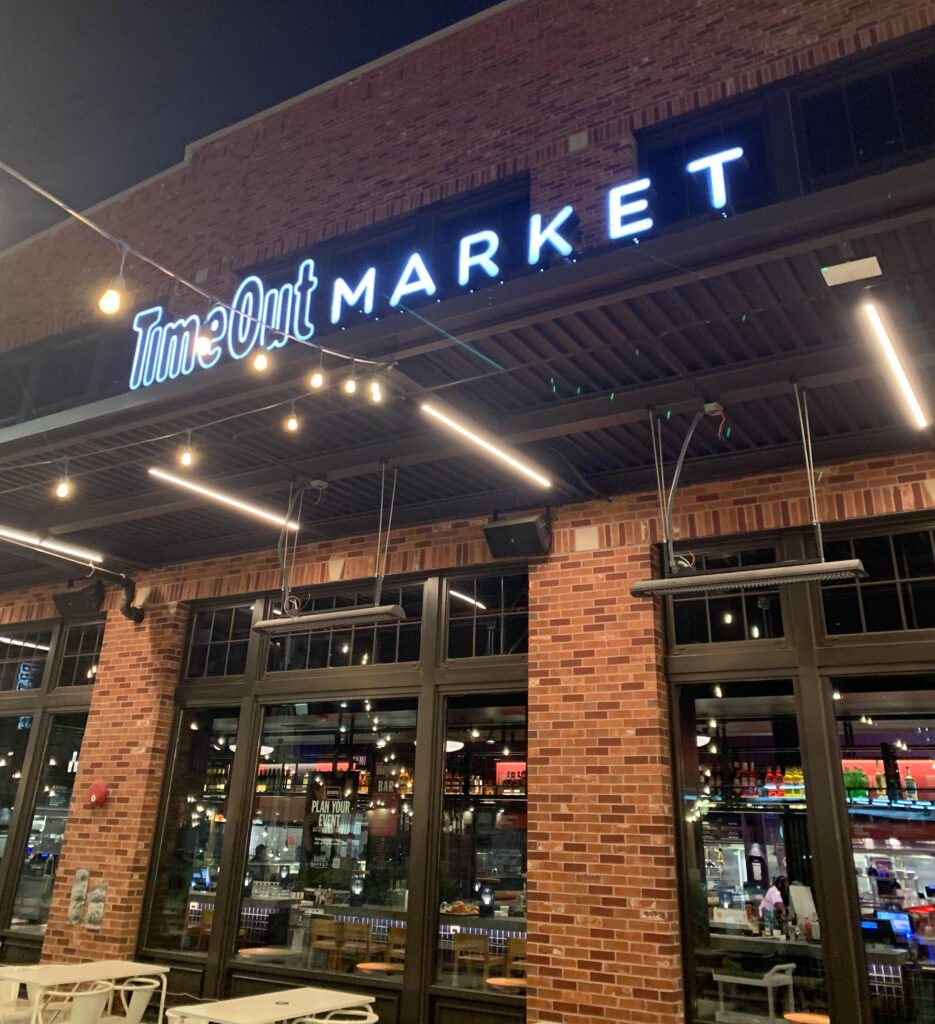
The publication’s market, you might say, totally dominates the intersection. For the Vital Proteins building, despite its offensive impression curbside, cuts a subdued figure. Rose Mary, while contending with lines of would-be guests at opening, does well to manage their inflow and—during the warmer months—maintains only a modest patio. The southeast corner, meanwhile, sits undeveloped (for now). An 11-story office building at 919 West Fulton is on the way with a 25,000-square-foot Dom’s Kitchen & Market signed on as its anchor tenant (complete with a rumored “large café” from Hogsalt’s Brendan Sodikoff). Even Gibsons Restaurant Group has gotten in on the act, agreeing to lease an additional 15,000 square feet within the property.
But, for now, Time Out Market bustles with a singular energy. The building—along with its ample patio—stretches across half the block. Its neighbor to the east, the former Nealey Foods meat wholesaler, lies dormant—waiting to be transformed into a nine-story “boutique office building” for the right bidder. LÝRA forms something more of a neighbor, but DineAmic’s sprawling Greek spot can hardly be called a destination restaurant. No, by your measure, Time Out Market forms the perfect sink for all the action flowing westward from Duck Duck Goat, Beatrix, The Publican, and Aba. It even, perhaps, draws patrons northward from The Hoxton and Nobu hotels (to say nothing of Randolph Restaurant Row itself).
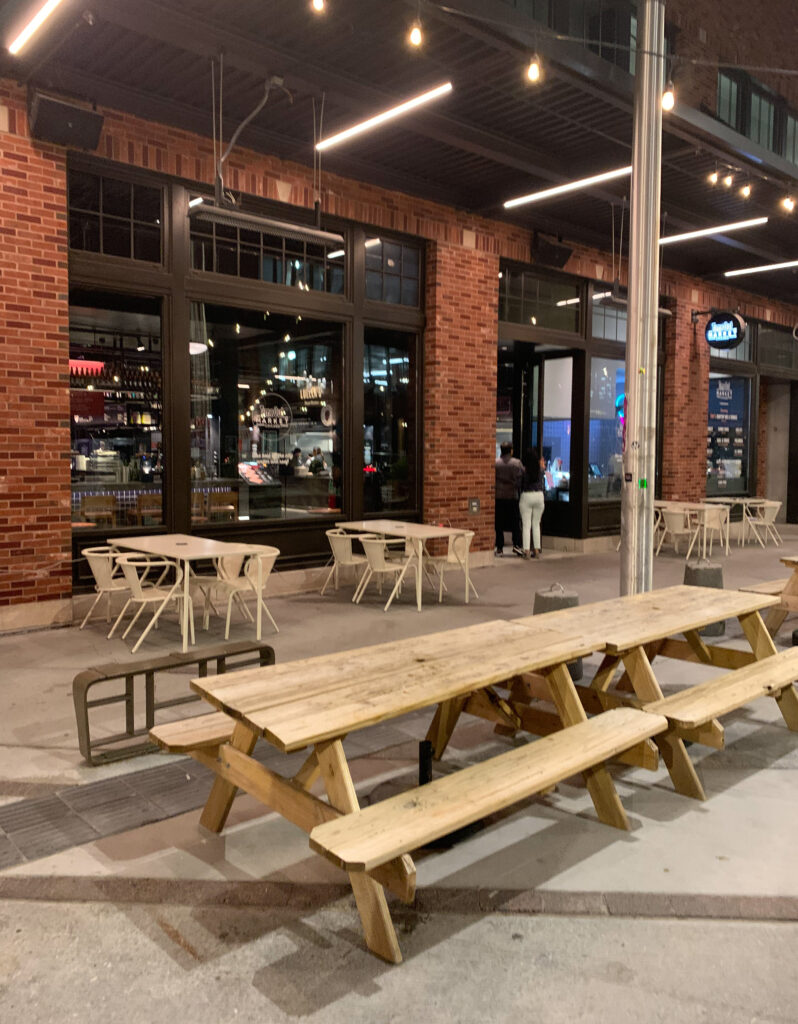
The importance of a bright, clean place to simply linger cannot be overstated. That “third place,” usually the domain of coffee shops, is sorely lacking in the neighborhood. Good Ambler, Sawada, La Colombe, and—yes—even Starbucks have their charms, but the spaces are perpetually packed with the most stereotypical, territorial kind of loafers. Soho House, though offering a perfect solution for the rootless, wannabe “creative” class, holds little appeal for those who do not share in the delusion. And, while McDonald’s has formed a longstanding “third place” in its own right, you do not know many people who wish to hang out at Hamburger University.
Yes, the genius of Time Out Market—before you even get into the gustatory offerings—is wholly structural: it is a neutral space in which one can feel anonymous. It is a place, from 8 AM – 10 PM, you can enjoy warmth, WiFi, water fountains, and washrooms. It is an establishment where you can meet up, spend nothing, and plan your next move. Time Out, though not a charity, is smart enough to know how consequential this foot-in-the-door effect is. Its market really does double as a neighborhood gathering hall, especially for large groups. The positive brand impression that entails—long before anyone is tempted to visit one of the stalls—is incredibly valuable.
However, in practice, 916 W Fulton is almost unassuming. The reddish, brownish brick—offset by black doors and window frames—gels perfectly with the area’s other new developments. “Time Out Market” is emblazoned over the building’s prominent awning, as well as on the signposts that dangle beneath it, but this is executed in relatively small type. The concept’s greatest testimonials, instead, are the throngs of customers that line the patio and congregate on the other side of the glass. You could be forgiven for thinking the place was a bona fide public space—perhaps until you encounter that bit of marketing copy plastered onto the central windows: “the best of the city under one roof.”
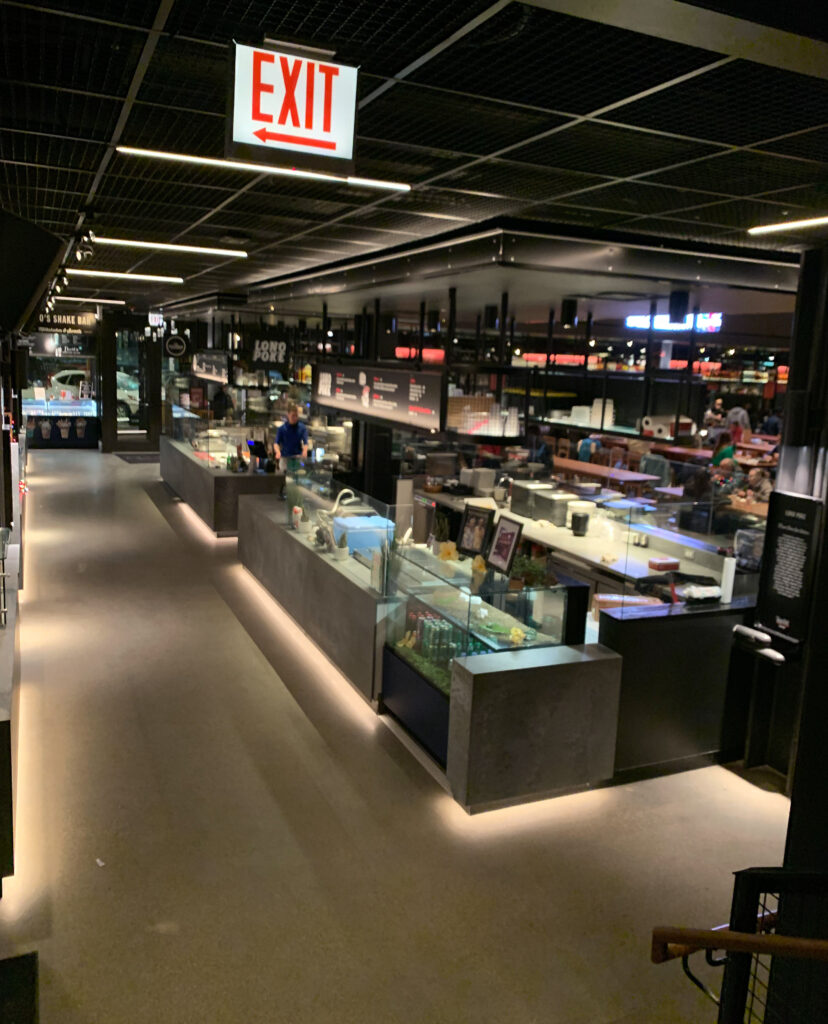
Stepping inside, you first encounter the banks of bars—clad with stone countertops and blue tiled bases—that service the main floor. Pressing onward, you slide through the flow of bodies that defines the market’s perimeter (that is to say, the avenue through which patrons access each of the stalls) and approach its center. Seven pairs of sturdy communal tables, matched (save for the two capstone sections) with counter-height chairs, define the space. The floor is rendered simply in concrete while, above, a sloping glass roof ensures ample natural light. After dark, that yields to an array of smaller lamps and hanging bulbs affixed to the ceiling. Their effect is soft, warm, and welcoming.
Depending on the time of your reservation (Valhalla is open from 5 PM – 10 PM), the market’s main tables may range from 50-80% occupancy. While that matters little for those set to go upstairs, this degree of patronage works to define the ambiance. The ground floor bustles with energy—but not to the extent that you must shove your way past people to make it toward the stairs. Rather, it is quite easy for you to imbibe a pre-meal libation or even indulge in a snack (knowing how tasting menus can sometimes be) before visiting Valhalla. It is easy to find a little space at one of the tables—that are admirably and proactively bussed by the Time Out staff—to stop and soak everything in for a moment. That is a credit to the market’s design and its aspiration (in terms of size). However, with each new West Loop high-rise, the odds of enjoying this kind of unencumbered experience—at least during peak hours—will surely slim.
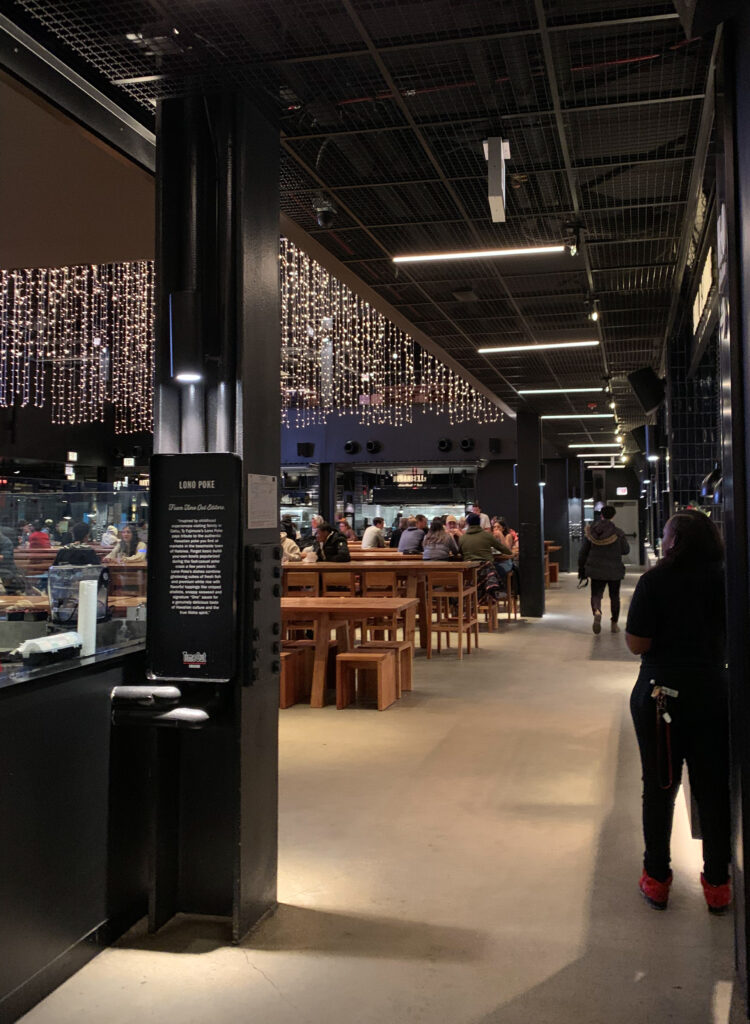
What matters most is that the first floor is orderly and navigable. There certainly are some chokepoints—primarily near the corner areas in which the perimeter path intersects the doorways or stairs—but any congestion can (as always) be blamed on self-centered and oblivious people. When finding a spot for yourself at the communal tables, the other visitors are polite enough. The market’s seating is managed in such a way that nobody breathes down your neck. Protecting one’s personal space, for many, remains particularly salient. Yet you cannot help but feel this kind of compartmentalization detracts from the romance of the market as a sort of community gathering hall.
In its bid for “representative” curation, Time Out has sidestepped the harder task of defining the space—of constructing any kind of collective culture that bonds its denizens. No doubt, the company has constructed an efficient, intuitive commercial space. But does it have character? Does it have soul? Does it advocate any particular vision of what Chicago food culture stands for? The answer, no doubt, is written in the stalls: those that once featured the city’s most totemic foods but have now become a hodgepodge of cuisines. This kind of breadth—rather than depth—will always privilege a lowest common denominator conception of taste. It will only reflect—rather than remedy—the atomized society in which Americans today live. The result is a ”collective” space that feels more like many groups of anonymous strangers consuming side by side. That makes for nothing more than a Disneyfied take on the world’s great markets—a suburban mall food court on steroids—that, by prizing superficial diversity, actively destroys native culture. (But hey, it makes money.)
Once you are ready, you make your way to the rear of the market’s main floor and to one of two staircases that bookend the back wall. Climbing the first flight, you find yourself face to face with one of two art installations. The first of these, located on the west side of the building, comprises a mural of the late Virgil Abloh painted by Rahmaan Statik. The work was unveiled in February of 2022 and, despite Time Out having no obvious connection to the Rockford-born, IIT-educated designer (making the gesture seem a bit contrived), the market was smart enough to donate $1 of every “Virgil Forever” (gin-and-tonic-inspired) cocktail that month to the Virgil Abloh™ “POST-MODERN” Scholarship Fund. You suppose there are worse ways to ingratiate yourself to a city, but some firmer—more longstanding—commitment to the man’s legacy might make this manner of trading on his image sit better.
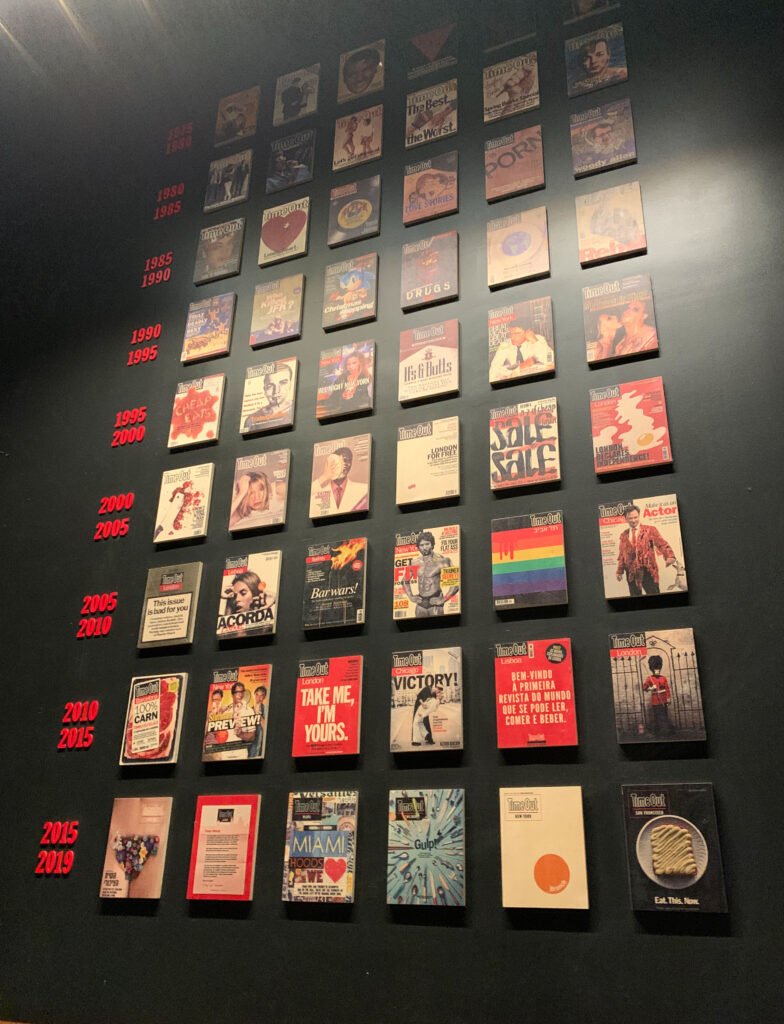
Climbing up the eastern stairwell, you encounter an altogether different installation made of historic Time Out covers arranged into a grid. Nine rows (of six magazines each) span half-decade periods running from 1975-1980 all the way to 2015-2019. Though the publication did not launch in New York until 1995 (nor in Chicago until 2005), this display endeavors to root the market in a broader counterculture heritage with main coverlines like “John Lennon 1940-1980,” “Porn,” “Who Killed JFK?,” and “Drugs” being prominently featured. While this association is, of course, a bit laughable for a family-friend commercial space, the cover designs are striking and engaging in their plentitude.
Passing from the market’s first to second floor, thus, prompts a moment of pause. The Time Out brand, which is subtly integrated into the workings of the assembled stalls, is brought more to the fore. The darker, plainer tones that define the building’s walls and surfaces are—here—invigorated by bursts of color. The themes associated with the art installations are ham-fistedly invoked. They have little to do with good eating or establishing the brand’s credentials as a curator of quality. But they help to demarcate a transition from the swirling, “mass” space below into something more intimate and distinctive.
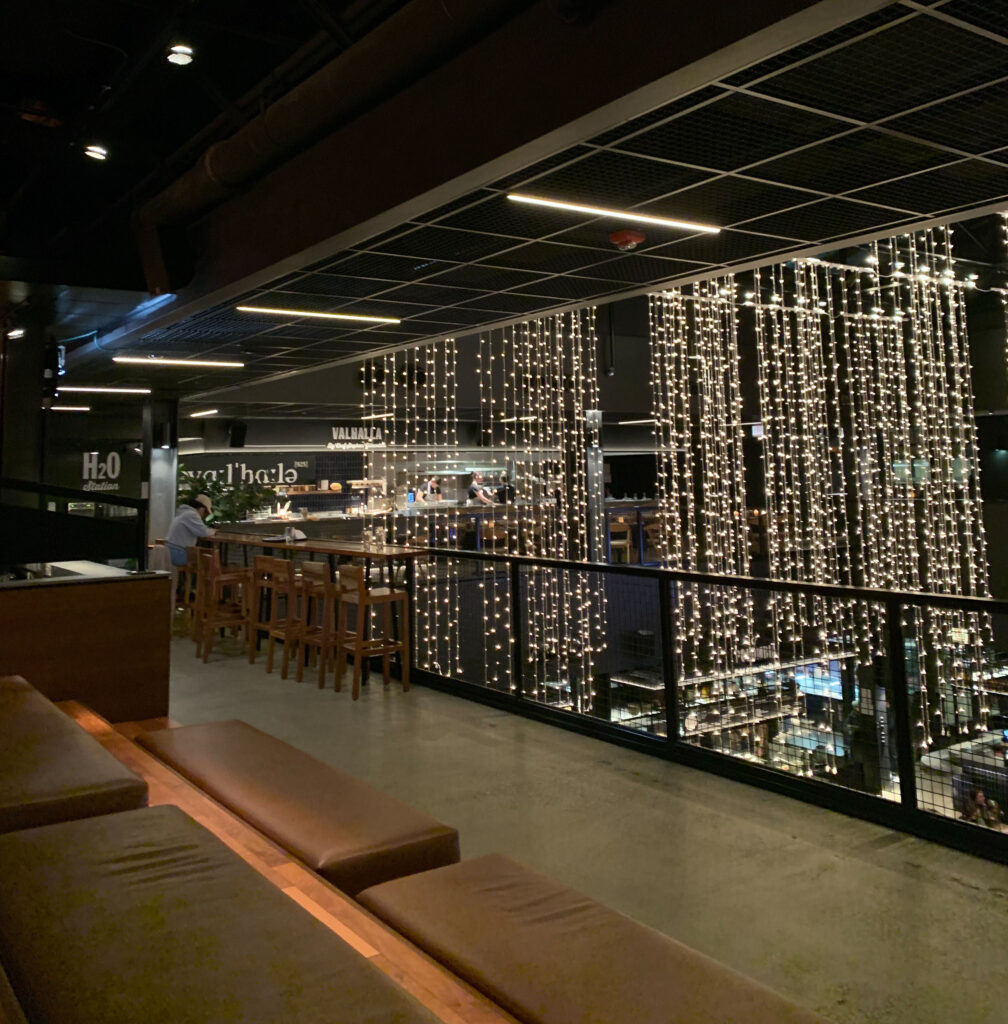
First, however, you must sidestep the bathrooms that greet you upon scaling the second flight of stairs. That brings you to the slender walkway that defines this upper level. Against the north wall (and opposite the market’s entrance), you find an additional bar planted next to a section of tiered bench seating. The walls of this area are totally rendered in red, making it feel like something of jewel box that—despite its vantage point (and corresponding exposure) above the fray of the first floor—stands apart from the rest of the venue. This zone, taken both from afar and firsthand, underscores that the second level is a calmer, more dignified counterpart to the bustle below. From its tiered seating, you can just about make out Valhalla—though the restaurant is partially obscured (perhaps seasonally) by sets of dangling lights.
Along the western end of this upper level, you find the “Demo Kitchen” that “plays host to cooking workshops, cocktail classes, and intimate dining experiences from the best culinary talent in Chicago.” Time Out mentions “a rotating schedule from up-and-coming culinary stars, as well as acclaimed guest chefs and bartenders” that makes for “an experience you won’t forget.” However, as of now, the market’s only planned events comprise DJ sets (on the rooftop) and children’s “Character Storytimes” (located on the first floor). In practice, the “Demo Kitchen” (which is observable from Valhalla’s seating) plays host to private (corporate) events and, more frequently, acts as overflow seating for those looking to transport their comestibles upstairs.
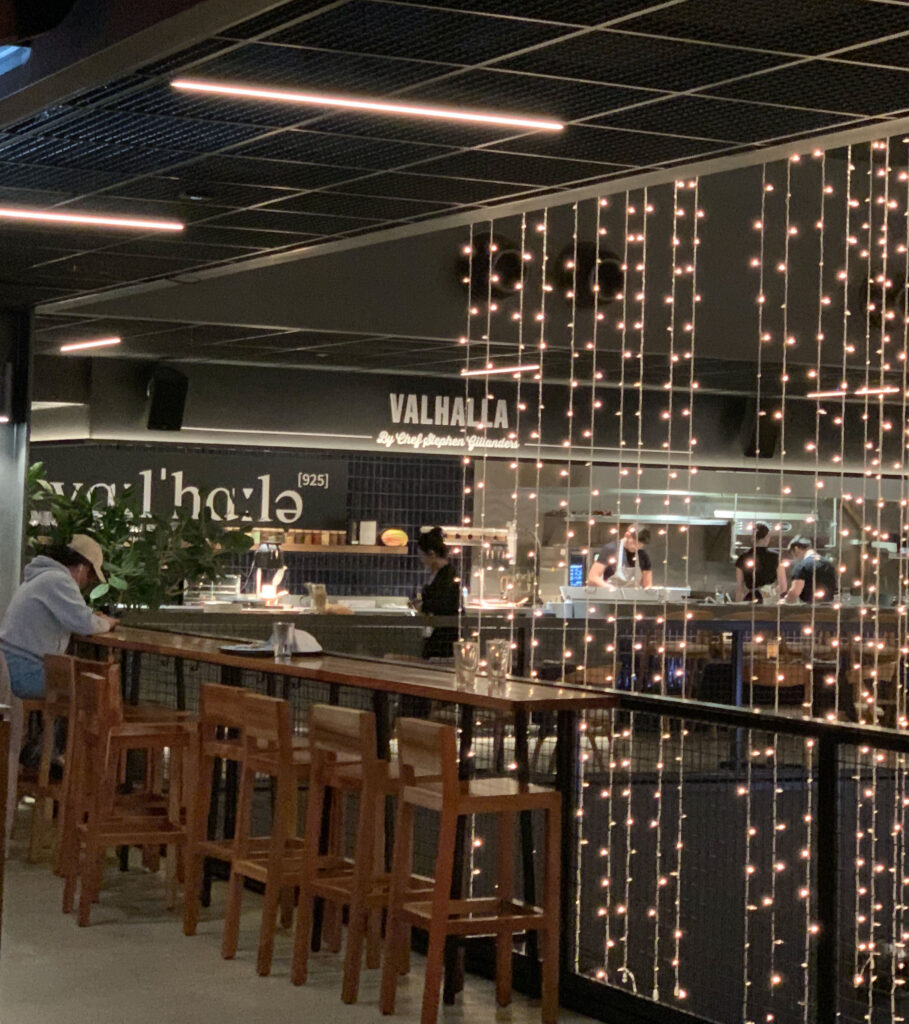
Working your way to the eastern side of the second floor, you finally reach your destination. Valhalla, as such, centers around an open kitchen bounded by a C-shaped counter that stretches nearly thrice the length of the stalls that lay below. This “pop-up area,” at the time of the market’s opening, was set to house a three-month residency from Funkenhausen; however, the concept would ultimately back out and be replaced by Arami (in its first iteration before moving downstairs). The space was also set to host “events like a harvest festival for families, a holiday market, live art, local artisans, music performances, and DJs,” but you think these plans were scuttled by the pandemic. Nonetheless, this is all to say that Gillanders occupies an area that was designed with a certain impermanence (at least conceptually) in mind. (The fact that a series of three-month residencies might have originally defined the counter’s offerings sounds eerily similar to Intro!)
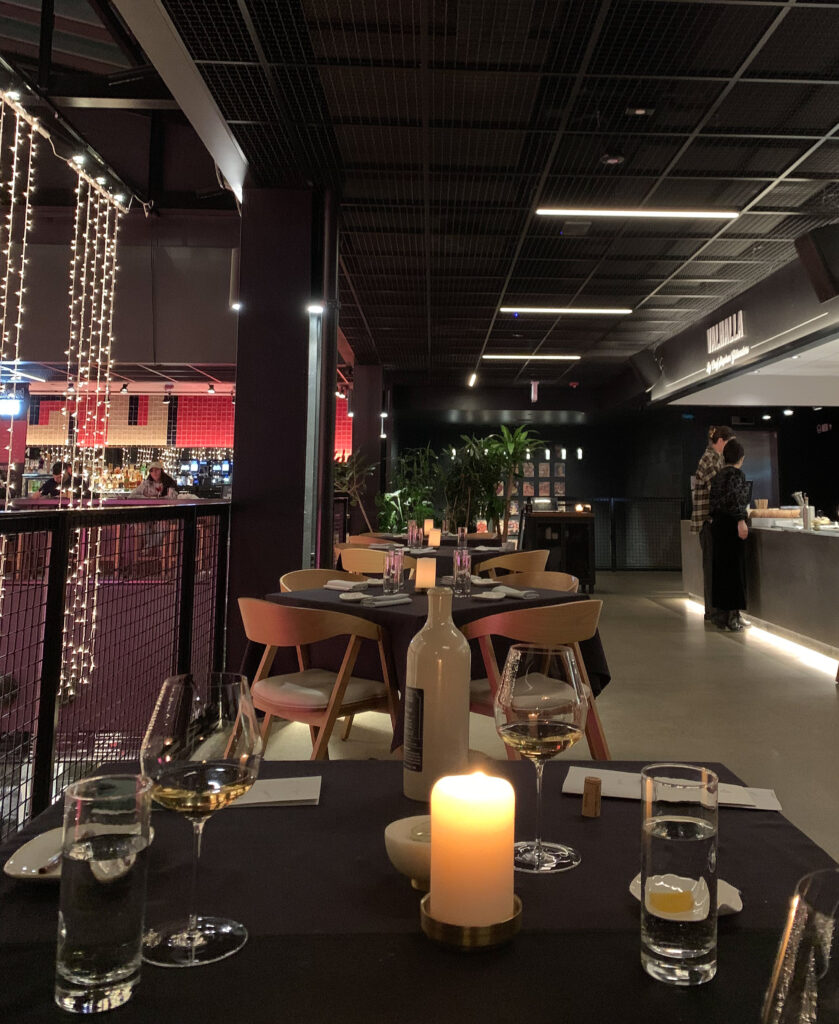
Valhalla has been touted as a partnership that—certainly with regard to its aspiration—is in it for the long haul. Yet, approaching the restaurant, it hardly feels like you are leaving the wider market in search of a particularly luxe experience. A solid-looking host stand and wall of shrubbery serves to shield your view of the tables that run parallel to the counter and that make up the rear dining room. (This is particularly important given that the east stairway deposits market-goers—many, no doubt, searching for the bathroom—with a direct sightline of Valhalla’s guests.) Otherwise, the counter is rendered in the same grayish stone used for the bartops downstairs. The kitchen is lined with stainless steel surfaces and appliances. And the tables are clad in black tablecloths that ensure a certain symmetry with the darker tones of the building’s beams, railings, walls, and ceiling.
The restaurant’s seating, nonetheless, is a welcome departure from what you find on the first floor. Both the counter-level chairs and those situated at the tables feel far more robust than anything found in the communal part of the market. Importantly, the furniture boasts arms—not quite a necessity when it comes to securing a Michelin star, but a source of comfort that undoubtedly enriches your experience of the meal.
Aesthetically, there is not too much else to note. Valhalla, along the top of its counter, displays the same kind of signage affixed to the stalls below. However, this is balanced by a larger, more stylized phonetic rendition of the name planted on the kitchen’s wall (closest to the entrance). Candles, it should also be mentioned, line the tables and make for a moody, romantic effect when set against the black cloth and wallpaper. (This stands as a small but classy flourish that adds a bit of grandeur to the table settings even if the ambiance is—otherwise—a bit stripped down.)
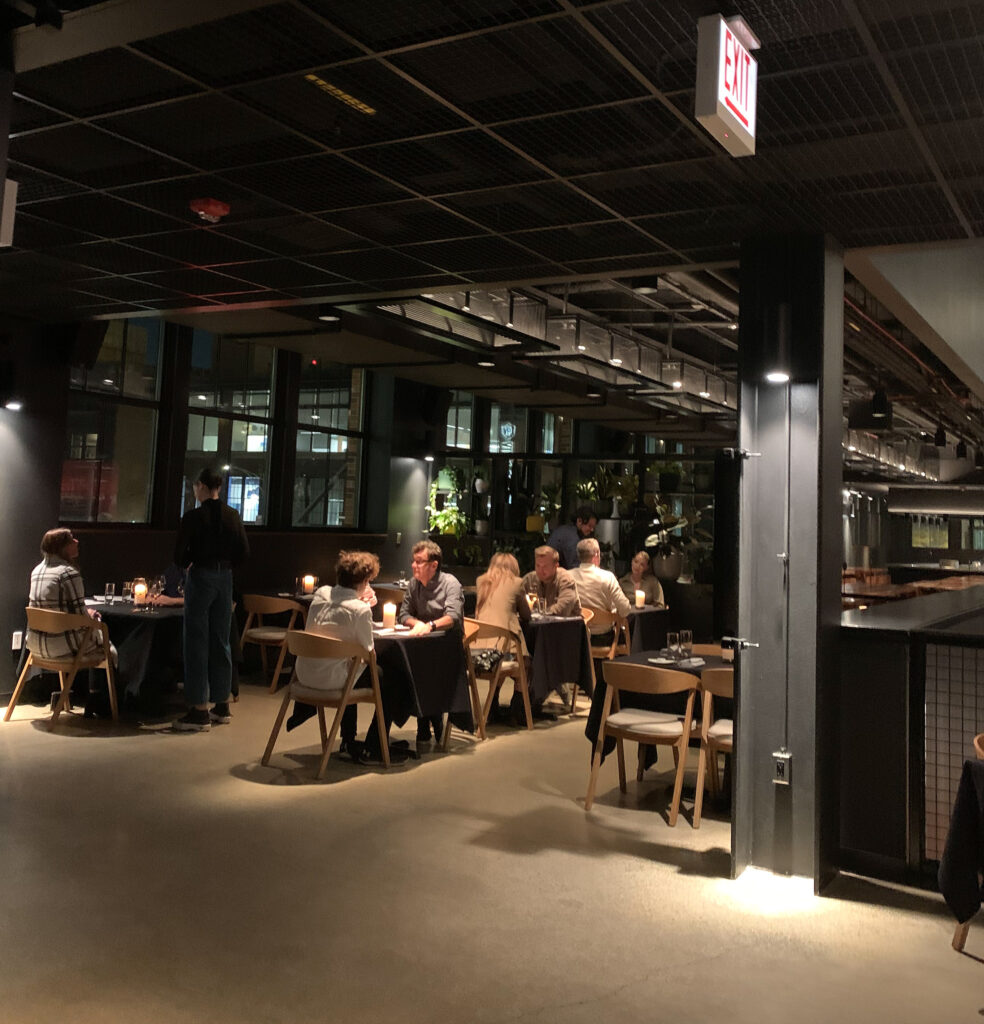
Apart from the 14 chairs that run down and around the counter, the restaurant offers a series of four-tops located across from the kitchen along with a larger collection of two-tops (you count half a dozen) and a few more four-tops in the dining room that lies at the rear of the space. (This latter area, which runs along the south side of the building, is effectively split with the “Demo Kitchen” and separated by a wall of shelving lined with more greenery. In practice, you barely sense that the adjacent area is even there, yet you wonder if that would hold true when it hosts a private event.) Parties larger than four can be booked for à la carte dining; however, while Tock seemingly offers the tasting menu for up to six guests, selecting a size of five or more yields no availability. Ultimately, you have found Valhalla to be highly responsive and gracious about serving these larger groups when contacted. But why not fix the Tock page to more clearly enable (or totally forbid) this size of seating in line with the kitchen’s preference? (This has since been remedied.)
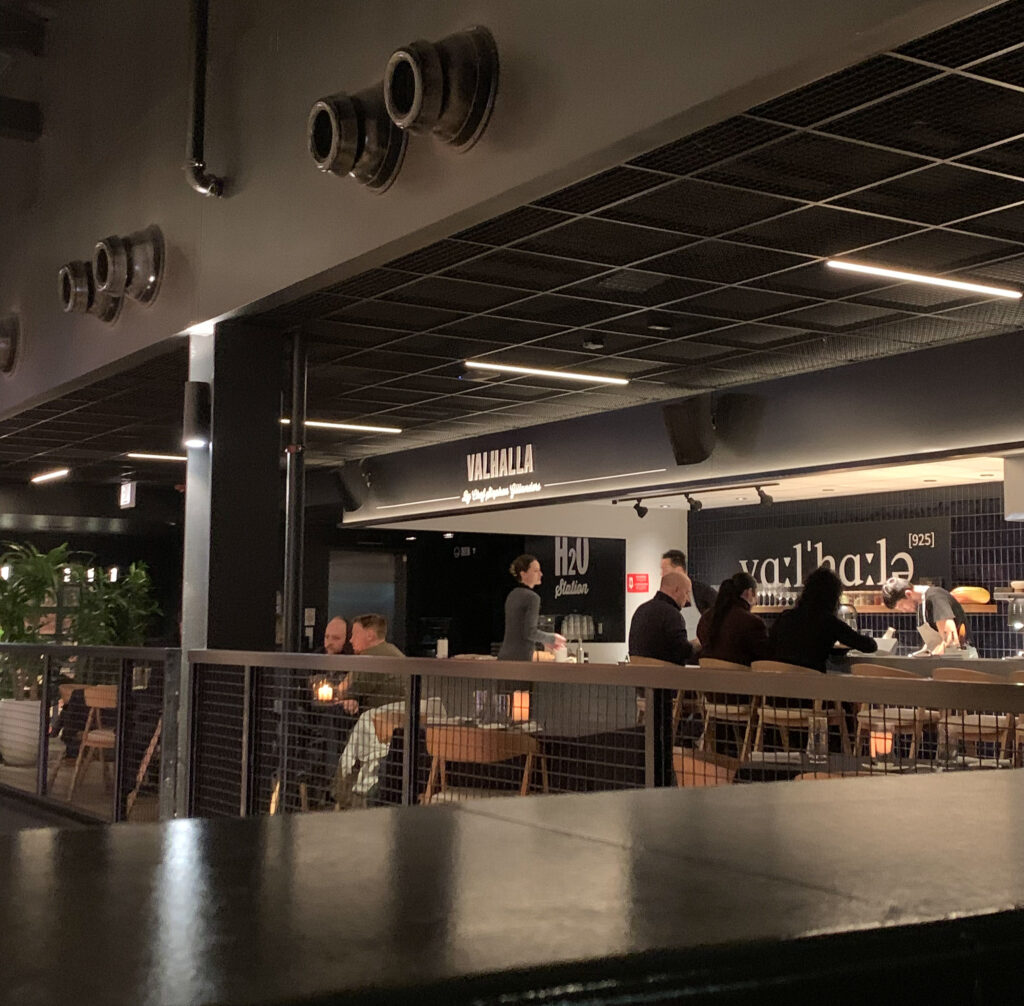
While Valhalla’s particular environment—when dissected piecemeal—hardly transcends that of the wider Time Out Market, your visceral experience of the space feels successful. Upon approaching the restaurant, the hostess greets you with a warmth and enthusiasm that immediately distinguishes itself from the more anonymous interactions that characterize the multitude of public-facing stalls below. As she leads your party to its seats, the kitchen team—including Gillanders himself—turns to welcome you from the other side of the counter.
This degree of intimate engagement, even if the concept’s trappings aren’t all that distinctive, surpasses many of Chicago’s Michelin-starred venues. The chef is not cloistered away and called upon only for a fleeting table touch. No, you get the feeling that he is hosting and orchestrating every moment of your evening—putting on a performance that, even when compared to the open kitchens at Smyth and Oriole, shines on account of its relatively smaller “stage.” (You think only Rose Mary’s chef’s counter, due to its even greater intimacy, and the city’s various omakases improve on this same effect. Elizabeth, in its time, certainly conjured such a feeling too.)
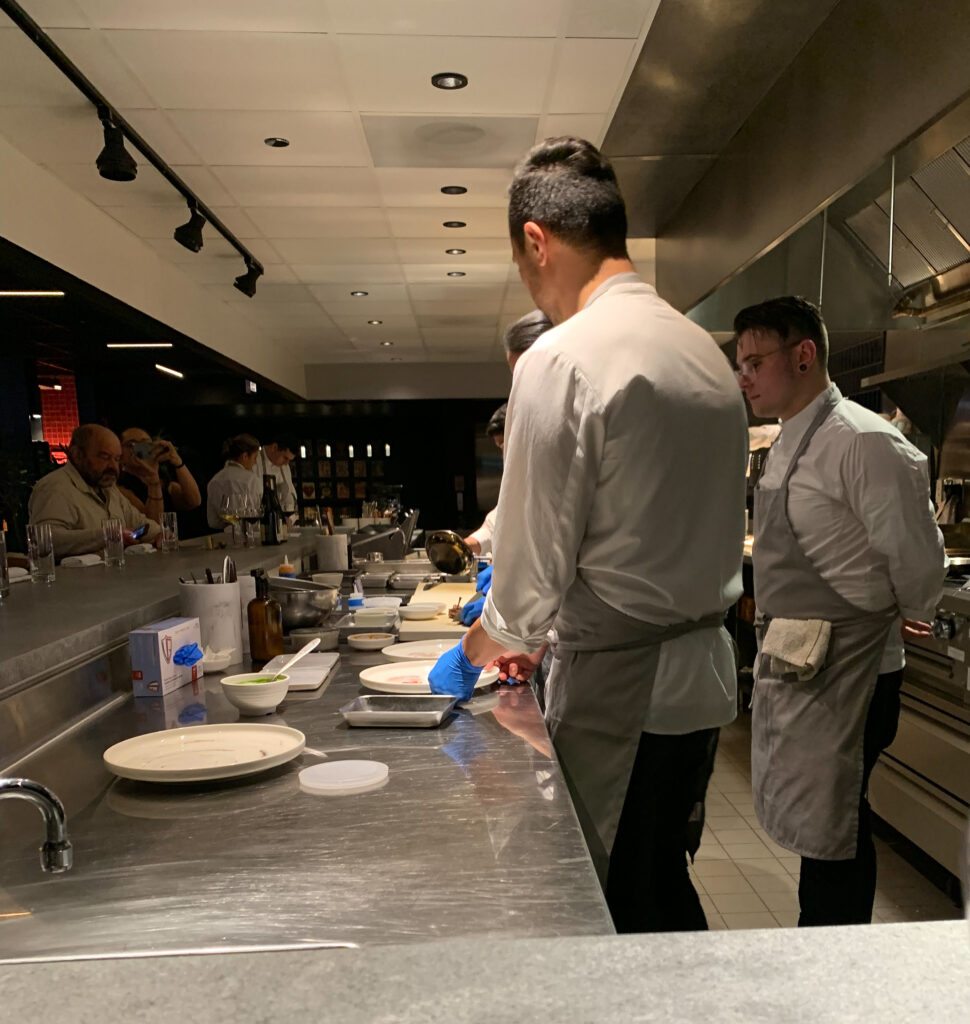
To that end, you think most patrons would favor booking Valhalla’s tasting menu at “The Chef’s Counter.” Due to the modest amount of seating available by the kitchen, going the à la carte route necessitates being seated in the dining room. However, those looking to enjoy the tasting menu at a table are actually given a bit of a choice. They can choose the “Intimate Setting,” which “allows for a conversation driven meal,” or the “Interactive Experience,” which feeds “off of Time Out Market’s energy” by seating guests “in a lively part of the restaurant” and “allowing for a unique and animated dining experience.”
This, quite frankly, is kind of genius, and it connects to the way that Gillanders has branded Valhalla since its inception. The restaurant’s staging within a relatively open environment that is subject to all the noise and action of the first floor is, by your measure, something that detracts from the experience. For, as romanticized as the idea of a city market may be, Time Out’s creation has no culture or heritage to draw on. It does not offer a scene of humanity that distinctly represents Chicago or that is all that interesting to observe. (Once more, it is more like gawking at a suburban mall’s food court than enriching yourself with any real sense of place.)
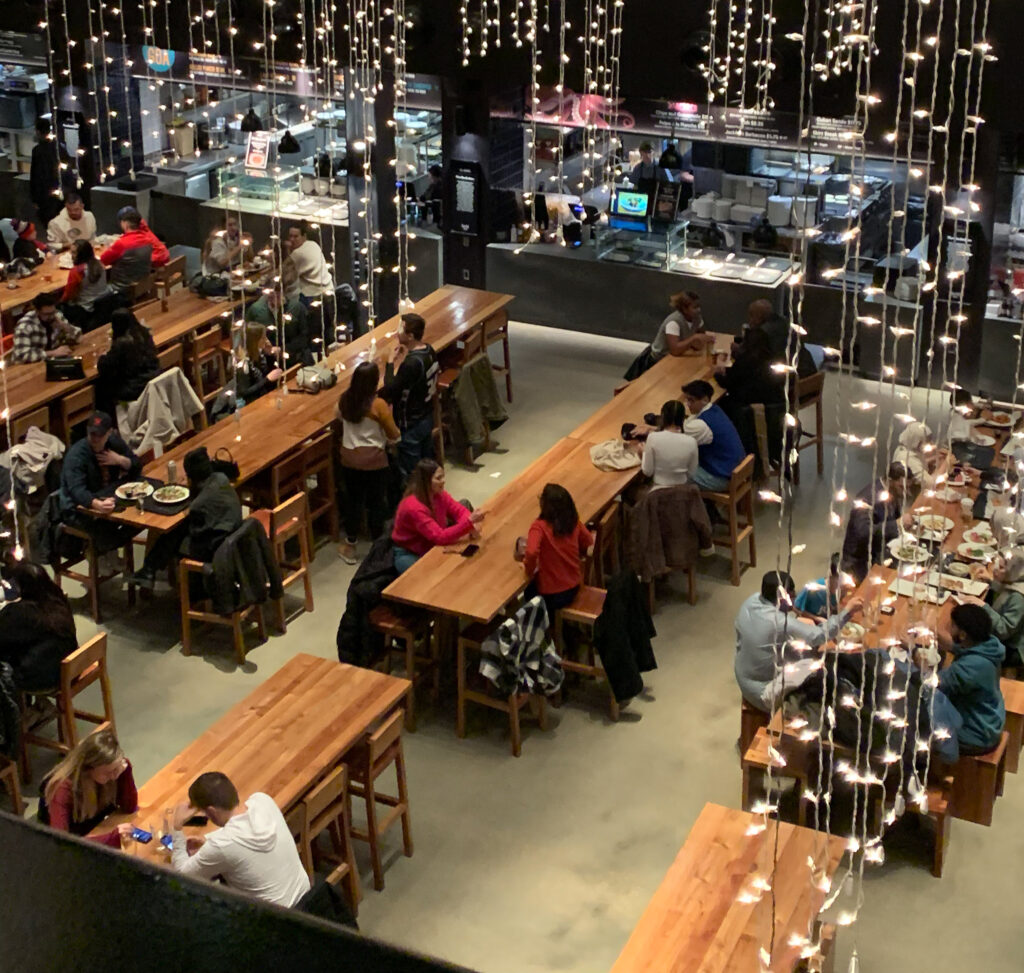
The chef, nonetheless, has preempted these concerns and shaped a narrative—invoking other great restaurants situated in “unorthodox” settings—that turns this vice into a virtue. He has painted the lack of a traditional “fine dining” environment (pretty much an essential condition of forging the partnership with Time Out and taking over the space) as expressing a sort of “new luxury” that stands opposed to pretension. It is one thing, of course, to put forth this idea in print. However, segmenting the table seating into the “Intimate Setting” and “Interactive Experience” categories helps patrons feel in control. They do not feel punished if they end up close to the railings with greater exposure to the ground floor’s goings-on. In fact, you think the description makes such tables seem like the more coveted of the bunch (and, in the sense that some of them are located closer to the counter, that may be true). In either case, Gillanders deserves credit for turning a potential weakness into a strength and encouraging his guests to see the positive side of the setting rather than coming in blind and grasping at (as patrons paying for premium meals are apt to do) something to get mad about from the start.
But, now taking your seat, any hang-up regarding the ambiance (or lack thereof) is remedied by the continued engagement of the staff. This feature, though you do not fault the effort to prime your perception of restaurant’s setting, is Valhalla’s real blessing (for Chicago is not short on pretty dining rooms that lack the slightest bit of soul).
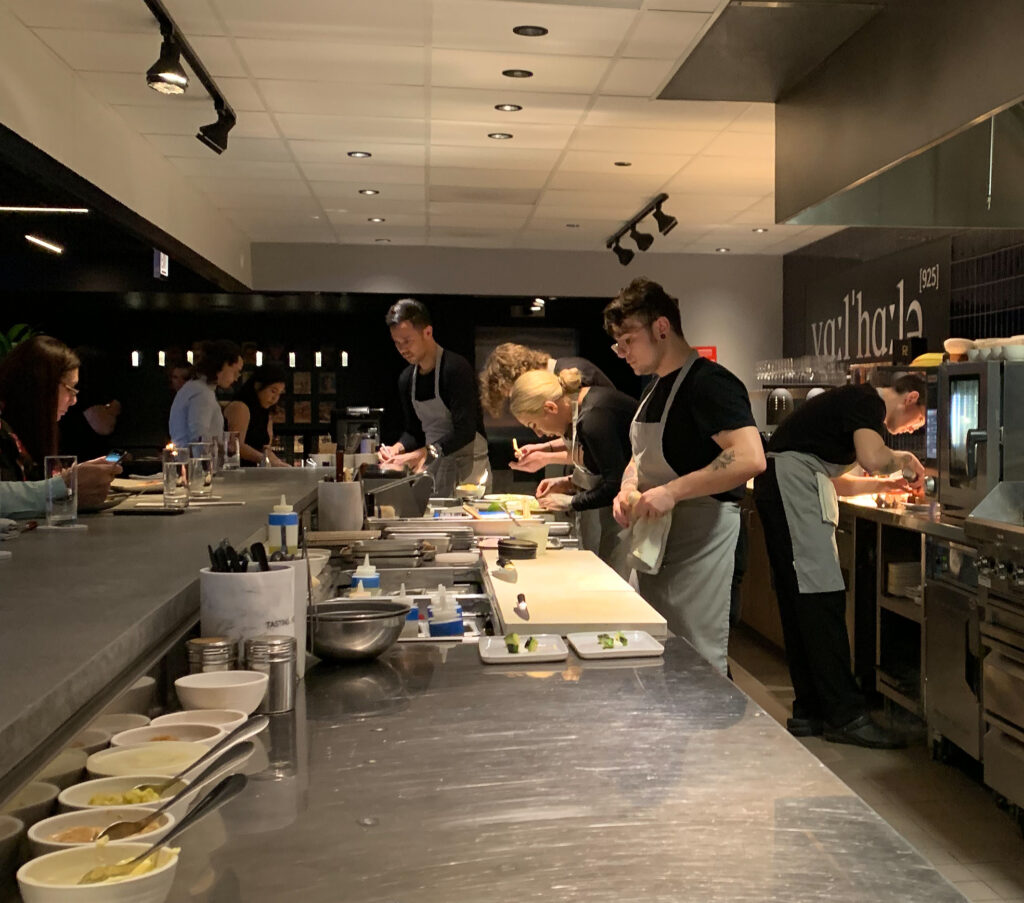
Given that the concept revolves around an open kitchen and chef’s counter, it is no surprise that the back of house does their part. Gillanders and Tatum Sinclair typically appear at least once during the course of the evening—should you be seated in the rear dining room—or even more often when you are situated closer by. They display all the warmth, charm, and polish you would expect from executive chefs working such an intimate space. And, likewise, it is rewarding to see them transition from executing intense technical work or orchestrating the rest of the kitchen to appearing tableside in order to apply some enrapturing flourish. (Gillanders confided, during your first meal, that he is not used to being so constantly “exposed” to his guests during service. However, he weathered a bit of criticism you offered on that occasion—regarding a certain dish—gracefully, and you think his enthusiasm for the food—regularly on display via social media—rings true.)
While this manner of leading from the front is a hallmark of any great restaurant, the real test—when it comes to service—must measure whether the same attitude pervades the rest of the staff. (For it is all too easy for those who command the spotlight to shine at a cost to all those who toil away unseen.) Thankfully, you have found Valhalla’s team to be kind, conscientious, and knowledgeable across all your interactions. The other cooks, taking Gillanders and Sinclair’s lead, present dishes with a naturalness and clarity that speaks to their ownership of the work. What’s more, they radiate with the kind of sincere smiles (some confident, others touchingly sheepish) that mark an empowering, accepting work environment.
The front of house, by comparison, has its work cut out for them. For Valhalla—very much in the “pop-up” mold—privileges having more hands in the kitchen than out on the floor. This allows Gillanders and his team to execute more intricate food (especially when it comes to plating and the preparation of items à la minute) but demands more of those tasked with watching over the dining room. This comprises an expeditor, a server, and one or two food runners that handle everything from filling water, placing utensils, delivering dishes, and clearing the table to listing specials, taking your order, answering any clarifying questions, and describing any given course with the same degree of insight that the back of house offers.
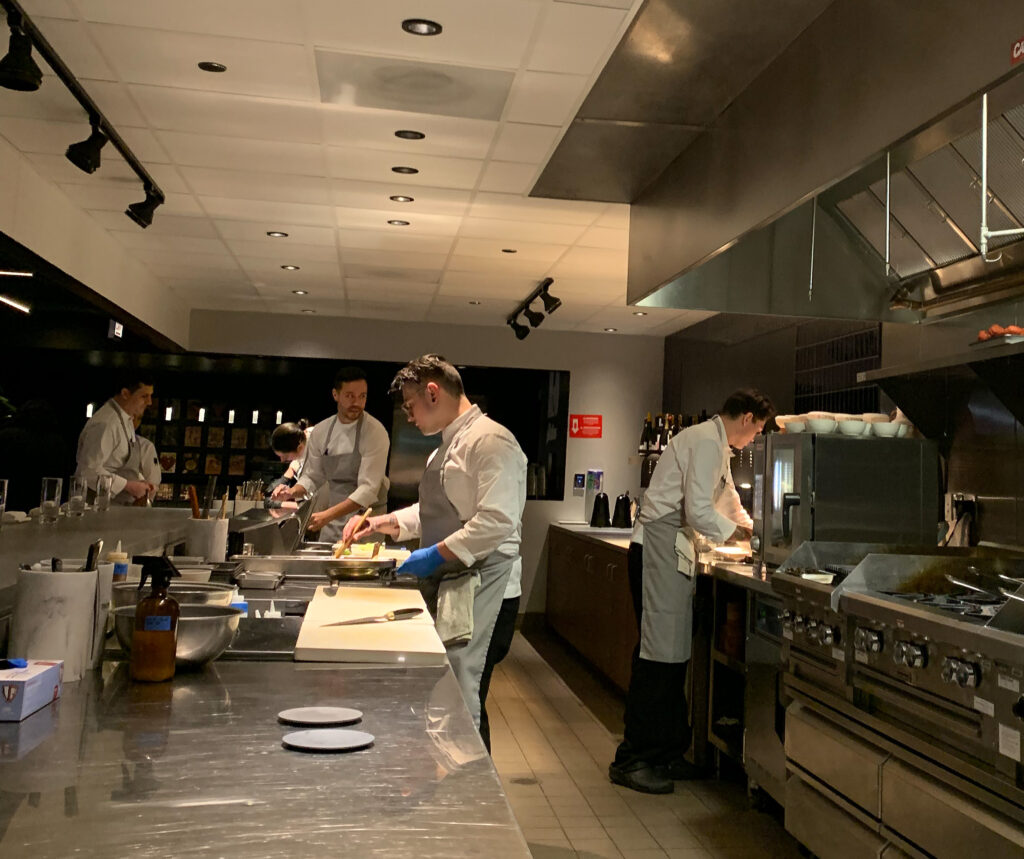
These duties all might sound a bit routine, yet the ratio of three or four members of the front of house to thirty or forty guests demands near-ceaseless activity. While the kitchen team is able to chip in when it comes to caring for those seated at the counter, the dining room really relies on but one or two people to keep the evening on track. Valhalla’s front of house, faced with this challenge, operates sharply and efficiently to ensure you are never left in the lurch. Yes, there may be an occasional misstep—a dropped set of utensils or failure to notice a patron’s handedness—but the team expends a great effort while maintaining the right attitude.
Your server, despite so much to stay on top of, does not rush away from the table or preclude forging some kind of connection with their party. They maintain an upbeat mood and genuine curiosity regarding your experience that makes them seem more like an extension of the kitchen—with its ownership over what is being served—than a mere agent of it. They are equipped to tell the story of the menu while richly describing more esoteric ingredients in a way that feels flowing and organic. This, beyond the example Gillanders sets during service, speaks highly to the chef’s ability to train and motivate the rest of the staff. His team is a pleasure to interact with from top to bottom (and that is something you have felt since your very first visit to S.K.Y.).
Jelena Prodan, it should be noted, serves as both the service and wine director at Valhalla. This places her in the thick of everything that occurs around the counter and across the dining room—a valuable resource to draw upon for any of the mechanics of service, as well as an assurance that those ordering pairings or bottles feel they have gotten their money’s worth. This dual role, in the same way that the kitchen delivers and describes its own dishes, allows the restaurant to maximize the utility of those on the floor. But it no way discounts the quality of a beverage program that, despite being nested in a market that profusely sells cocktails across all three of its floors, surpasses those of much larger, comparably “luxe” concepts.
Upon settling in at the table, you take hold of the food menu—its front attractively emblazoned with the handwritten signatures of the staff—and, after browsing the comestibles (more on those later), find your way onto the back. To the right, you find a selection of five “House Cocktails.” These comprise “The Frozen Martini” (“caviar filled olive | vodka | vermouth | shaved caviar”) for $35; the “Triple Rose of Sharon” (“valhalla rosé champagne | raspberry-rose sorbet | rose salt”) for $22; the “Sakura Old Fashioned” (“japanese whiskey [sic] | okinawa kokuto | kumquat perfume”) for $25; the “Honey I’m Hometown” (”honey brandy | xaymaca rum | chamomile”) for $22; and “The Shapeshifter” (“12-year aged scotch | cold pressed carrot juice | caramelized ginger”) also for $22.
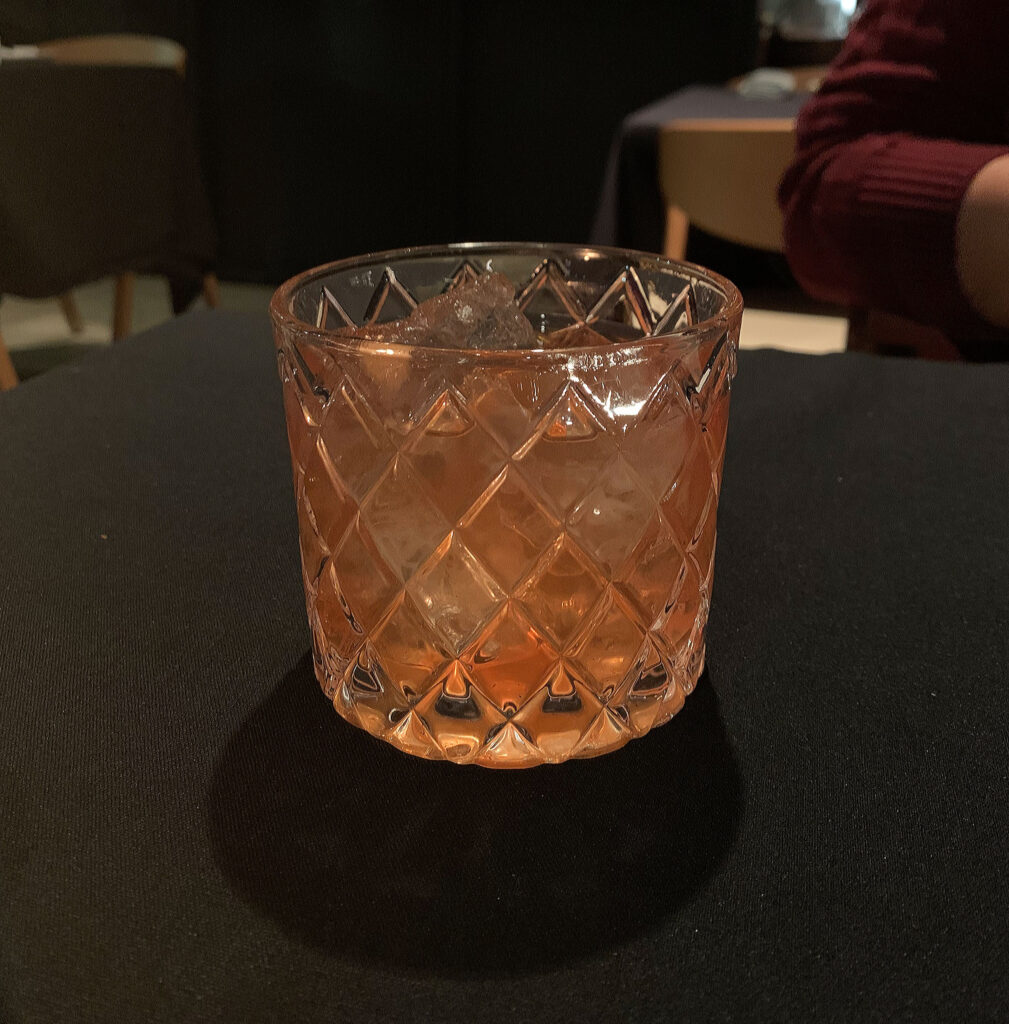
When it comes to pricing, these drinks land well north of the $12 “Signature Cocktails” offered at Time Out Market’s various public-facing bars. Yet it is worth noting that S.K.Y.’s own offerings are in the $13-$16 range and that Apolonia’s fall within a more narrow range of $15-$16. (Kumiko, just to bring in an example from a particularly renowned venue, charges as little as $10 and as much as $50 for its drinks. Nonetheless, the average price for one of Julia Momose’s creations, taking into account the entire menu, amounts to $20.20.)
Given that Valhalla’s tasting menu ($185) costs nearly three times more than the one currently offered at S.K.Y. ($68), you think it is acceptable for Gillanders to charge about 50% more for a cocktail at the former concept. Also, relative to the kind of mass market experience provided on the first floor (where patrons, mind you, can drink as much as they please before heading upstairs), you think it is fine for a comparably exclusive tasting menu “pop-up” to defend its brand positioning with pricier offerings. Nonetheless, should the “Honey I’m Hometown” (made with $25.99 Plantation Xaymaca Special Dry Rum) really cost $10 more than the market’s “The Evil Dojo” (made with $32.99 Plantation Stiggins’ Fancy Pineapple Rum)? Yes, the former recipe also makes use of a “honey brandy” (that likely explains some of the price difference), but it is not quite obvious that you are paying for any kind of premium spirits.

You are also not quite paying for the ambiance and cultural experience that defines a place like Kumiko and situates its products within a pinnacle expression of craft. However, in the case of “The Frozen Martini,” there is certainly some delving into the kind of molecular gastronomy cocktailing The Aviary is known for (and that works, along with the use of caviar, to explain the price). Ultimately, you have sampled both the “Sakura Old Fashioned” and “The Shapeshifter,” finding the two drinks to possess an attractively crisp, clean, and refreshing character with some nice depth of flavor. The latter drink even benefitted from a sweet, crispy wonton chip on top.
You, thus, did not feel hard done by the $22 premium, but you also do not see yourself savoring multiple cocktails throughout the course of a meal at Valhalla. Rather, these options serve as luxurious apértifs that avoid detracting from the wine program (along with a modest beer selection) meant to really pair with the cuisine. You many even say that the pricing scheme represents a conscious effort to push consumers toward these other categories (for, as you recall, Gillanders has especially prized both by-the-glass and bottle offerings at his other concepts).
When it comes to the first of these two selections, Prodan has opted for a set of seven wines that are offered—“subject to availability”—by the glass. These comprise a Charles Heidsieck Brut Réserve Champagne ($27), a 2019 Stolpman Vineyards Roussanne-based blend ($21), a 2021 Erste + Neue Gewürztraminer from Alto Adige ($15), a 2021 Selvagrossa “ICA” rosé of Ciliegiolo ($16), a 2020 Kiki & Juan “Orange” wine made predominantly with Macabeo ($18), a 2019 Paul Blanck Pinot Noir from Alsace ($16), and a 2019 Ridge “Three Valleys” Zinfandel-based blend ($22).
While you find that Charles Heidsieck is a bit oversaturated in the Chicago market, the brand forms a reliable option—with some degree of name recognition (and, thus, grandeur)—in the sparkling category. Beyond that, you must applaud Prodan’s offerings for their boldness. The wine director has spurned popular varieties like Chardonnay, Pinot Grigio, Riesling, Sauvignon Blanc, and Cabernet Sauvignon in favor of more characterful bottles that scratch some of the same itches but offer far greater value propositions.
The 2019 Stolpman, for example, is made from 88% Roussanne and 12% Chardonnay, yielding a full-bodied wine with notes of toasty oak sure to please those who love Californian expressions of the latter grape. The 2021 Italian Gewürztraminer, likewise, offers a light, crisp, and aromatic drinking experience replete with ripe tropical fruits that may remind imbibers of their favorite Pinot Grigio or Sauvignon Blanc. When it comes to rosé, the 2021 “ICA”—made from “cherry-like” destemmed grapes fermented in stainless steel—delivers a refreshing, fruity style of blush without commanding the same premium as brands like Miraval. And the Valencian “Orange” wine, while always forming something of an oddball category for wine novices, actually benefits from 10% of Sauvignon Blanc. This, alongside the 90% of Macabeo, makes for a blend of rich texture, medium body, and pronounced apricot flavors adaptable enough to carry through the entirety of the meal.
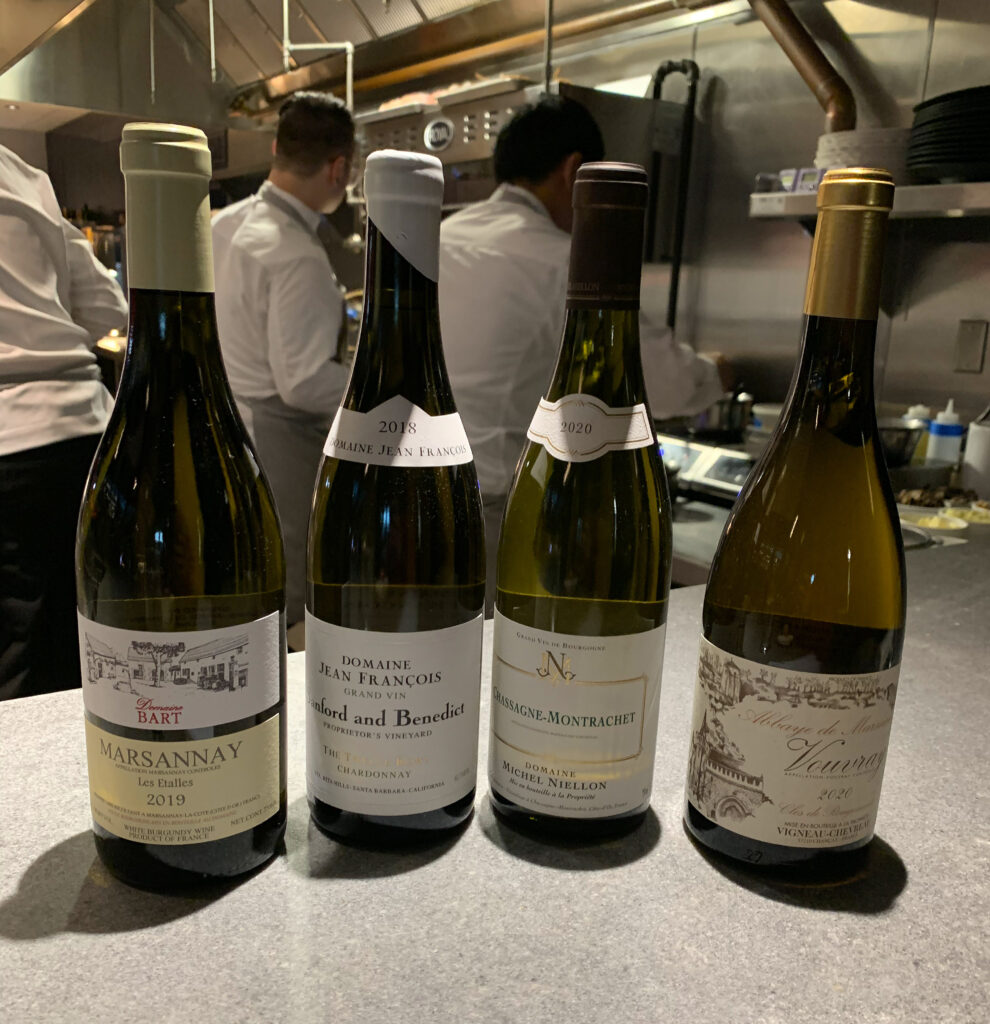
Prodan’s red selections are a bit more conventional but still rather smart. As Burgundy prices have continued to soar, Alsace presents an attractive alternative for those seeking “Old World” Pinot Noir. Examples from this region may lack the same depth found elsewhere (let alone the excitement of renditions from the Jura), but Paul Blanck provides the bright acid, light cherry tones, and rustic personality one typically wants when seeking a French expression of the grape. Similarly, though the thought of drinking Zinfandel may repulse Cult Cab devotees, Ridge’s polished rendition of the grape offers all the power, concentration, and outright hedonism one might expect from a fancy label of that more popular variety. Unsurprisingly, the “Three Valleys” comes from one of the legends of American winemaking and stands as the kind of wine that can expand the palate of even the most stubborn red wine drinker.
Valhalla’s by-the-glass selection may fall short of the avalanche of options that have characterized S.K.Y. and Apolonia from the start; however, priced from $15-$27, these seven wines effectively balance mainstream appeal with the excitement of something new and delicious. Prodan’s choices are thoughtful and cover a lot of stylistic ground without redundancy. They manage to (apart from the Heidsieck) feel singular compared to the selections offered elsewhere in the city while still maximizing value. It is easy to see how nearly all of the wines encourage some conversation between the sommelier and the customer regarding a novel grape, the composition of a particular blend, a certain style of winemaking, or a new region. These bottles foster the kind of engagement that helps slowly transform “drinkers” into “tasters.” That’s a high compliment as far as any wine program goes, and—by any measure—the by-the-glass menu represents only the most minor dimension of Prodan’s work here.
Opposite the “House Cocktails” (on the back of the food menu) you find Valhalla’s wine pairings. Relative to the glass pours, which are situated at the very end of the separate bottle list, these offerings are clearly given pride of place. For Prodan, you have mentioned, offers an affordable pairing at S.K.Y. to match an equally value-driven tasting menu, and this luxe concept clearly demands (or shall you say emboldens) an equally refined exploration of wine. Moreover, these set flights have the further benefit of minimizing wastage and maximizing cellar space in a “pop-up” area that Time Out never might have envisioned would be slinging vinous delights. At the end of the day (and especially when cocktails will run you at least $22 a pop), providing a turnkey beverage solution will relieve all but the most knowledgeable of patrons—for a price.
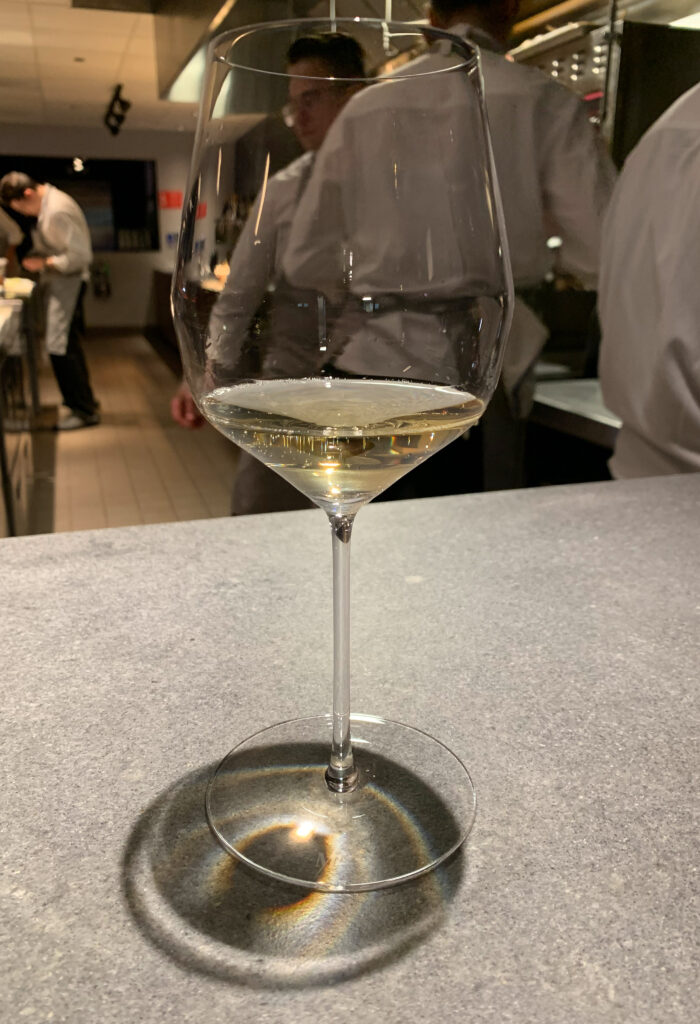
At $98, the “Valhalla Pairing” offers “a collection of globally inspired wine from both classic and up & nouveau and [sic] regions.” Those wishing to indulge a bit more can, for $198, order the “Premier Pairing”—focusing on “deeper vintages, niche regions, and boutique producers” while featuring “several wines” that are “one of a kind and limited production.” Lastly, at the very pinnacle of Prodan’s offerings you find the $298 “Champagne Pairing,” described as “a journey through the regions of Champagne, France exclusively featuring grower-producers and their best expressions.”
Now, you have analyzed an array of wine pairings at various fine dining restaurants before, and you tend to make the same structural criticism whenever you come upon this topic. When Alinea offers a “Standard Pairing” ($145), “Reserve Pairing” ($235), and “The Alinea Pairing” ($395), you think the restaurant is being a bit manipulative by implying that choosing the latter, most expensive option is the only way for guests to secure the “proper,” idealized, once-in-a-lifetime experience. By opting, instead, for something titled “standard,” patrons may feel like they are compromising on what is supposed to be a boundless expression of luxury. Alinea’s owners like that. They like squeezing diners for all they can, parading the “have-nots” in front of the “haves,” and running what amounts to a tourist trap that, coasting on a bygone reputation, has little wider import on Chicago’s dining scene. (Your most recent meal at Alinea, in December of 2022, stands as the worst post-renovation menu you have yet encountered there. You feel sorry for an otherwise hardworking team that has been woefully let down by complacent—and frankly greedy—leadership.)
When Smyth, for example, offers a “Traditional Pairing” ($155), “Reserve Pairing” ($225), and “Super Mega Pairing” ($375), you think the nomenclature makes quite clear that the latter, most expensive option represents an exemplary splurge rather than a prerequisite for a “true” engagement with the concept’s depth. (First-time diners may even feel, as they should, that a “traditional” selection would help them savor the food more than a more refined assortment of wines that could risk distracting from the fare.) Likewise, when Oriole offers nothing more than a “Standard Pairing” ($145) and a “Reserve Pairing” ($275), you respect the restaurant for avoiding any kind of three-tiered system (that may implicitly force customers toward the middle option to avoid feeling cheap) altogether.
Valhalla’s approach, however, is kind of genius. First, in an inversion of Alinea’s strategy, Gillanders chooses to associate his concept’s name with the most humble of pairings offered. The guest that does not care much about wine need not worry that they are selecting something that is merely “standard” or “traditional.” Rather, they can simply order the Valhalla tasting menu and the accompanying “Valhalla Pairing” and feel like they are getting a totally complete, perfectly curated experience free of any status insecurity or dark consumer psychology. (In return—and in the context of both the cocktails and by-the-glass selection—the restaurant benefits from directing a mass of diners into that lucrative pairing “bucket.”)
Though the “Premier Pairing” seems to be cut from the same cloth as the “Reserve” options listed above, situating a “Champagne Pairing” as the ultra-premium offering is also utterly genius. For, when a “Reserve Pairing” is sandwiched between “Standard”/”Traditional” and “The Alinea”/”Super Mega” pairings, it tends to suffer from “death in the middle.” Those who care little about wine will likely go for the cheapest option while those who care a lot will likely go for the most expensive (or, even more likely, ask for the bottle list). Without the kind of upward pressure Alinea exerts through its manipulative labelling, the “Reserve” seems to offer the worst of both worlds: it does not form the ultimate value nor does it provide the highest expression of luxury.
By comparison, Champagne forms the celebratory drink par excellence for wide swaths of society, appealing equally to both wine neophytes and the most snobby of oenophiles. In this manner, Valhalla’s “Champagne Pairing” forms a broadly appealing, distinctive ultra-premium option that does nothing to detract from what the “Premier Pairing” represents. That latter choice remains for those who want something nicer than the “Valhalla Pairing” but wish to remain within the boundaries of a traditional sequence of bottles. But bubbly awaits those who, for the sake of connoisseurship or simple appearances, want to take things one step further. You think this is both a smart and distinctive choice.
Personally, you have sampled the “Premier Pairing” once and been served the following assortment of wines:
- Marguet “Shaman 18” Grand Cru Brut Nature
- 2019 Keller “Vom Muscheligen Kalk” [Pinot Blanc/Pinot Gris]
- 2019 The Sadie Family “Skerpioen” [Chenin Blanc/Palomino]
- 2019 Rainer Wess “Ried Pfaffenberg” Riesling
- Brooklyn Kura “Number Fourteen” (Green Door) Junmai Ginjo Genshu Namazake
- 2021 Limited Addition “Co-Ferment Orange” [Pinot Gris/Muscat]
- 2020 Jean Bourdy Côtes du Jura Rouge [Poulsard/Trousseau]
- 2018 Castello di Ama “Vigneto Bellavista” Chianti Classico
- 2015 Kracher “Numer 11” Trockenbeerenauslese
As with the by-the-glass selection, Prodan smartly sidesteps popular varieties like Chardonnay, Sauvignon Blanc, Pinot Noir, and Cabernet Sauvignon in favor of grapes that can offer a similar drinking experience with a greater sense of value. You would highlight the Keller “Vom Muscheligen Kalk” and Sadie “Skerpioen” as whites of pedigree, complexity, and broad appeal that fly a bit under the radar. Likewise, the Bourdy Côtes du Jura Rouge and Castello di Ama “Vigneto Bellavista” suit the tastes of mainstream red wine drinkers while offering an uncommon depth and drinkability for their young age. The Marguet “Shaman 18” and Kracher Trockenbeerenauslese, too, are fantastic selections in their own right. So, it is easy to forgive the Rainer Wess Riesling, Brooklyn Kura sake, and Limited Addition orange wine for being just a little less distinctive (but helping to engage some other flavors and textures without breaking the bank). For $198, this feels well-conceived.
Likewise, you have also sampled the “Champagne Pairing” on one occasion and been served this selection of wines:
- Charles Heidsieck Brut Réserve (en magnum)
- Marc Hebrart “Sélection” Premier Cru
- Louis Nicaise Premier Cru Brut Réserve
- Waris-Larmandier “Particules Crayeuses” Blanc de Blancs Grand Cru Extra Brut
- Christophe Mignon “ADN de Meunier” Brut Nature
- Larmandier-Bernier Rosé de Saignée Premier Cru Extra Brut
- 2017 Jérôme Coessens “Largillier” Coteaux Champenois Rouge
- Vilmart & Cie Ratafia
While perhaps falling short of offering the most iconic of all grower-producers (something of an impossibility given how the pricing of Agrapart, Bérêche, Bouchard, Collin, Pierre Péters, Prévost, and Selosse has trended), this selection is beautifully done. The presence of reserve wines and varying proportions of Pinot Noir, Chardonnay, and Pinot Meunier across the bottles (to say nothing of the magnum or the rosé) ensures guests are exposed to a diverse and engaging array of wines despite their shared effervescence. By your measure, producers like Waris-Larmandier, Christophe Mignon, and Larmandier-Bernier occupy the stratum just beneath those aforementioned illustrious names, offering some of the same farming and winemaking practices for a fraction of price. Likewise, serving a Coteaux Champenois Rouge (that is, a still wine made from grapes grown in Champagne) is an incredibly clever way of abiding by the pairing’s theme while, in a sense, transcending it. The same goes for the Ratafia, a vin de liqueur made from Champagne grapes whose must is fortified with grape-based brandy. Prodan, with the sum of these pours, tells a captivating story of the region that is sure to surprise even moderately experienced winos. It stands as one of the most creative and successful pairings of its kind that you have ever encountered, testifying to the wine director’s great talent while also feeling wholly satisfying from a value perspective. Brava!
Though you find Valhalla’s pairings to be smartly composed, the bottle list forms the truest test for any program. Many seasoned drinkers would rather put that $98, $198, or $298 sum (per person) toward one or two superlative wines within their particular wheelhouse than survey a range of different styles in a bid to match the food. Appreciating a singular bottle of one’s own choosing does not only offer a more transparent value proposition but, if you choose right, can form a memorable sensory experience that may even rival the chef’s menu. Further, while pairings must be designed with mainstream tastes in mind, a wider list allows the sommelier to display the particularities of their expertise and to reward customers that share in the same arcane knowledge.
Prodan’s “bottle list,” as such, originally took the form of an array of wines that the wine director herself physically transported to the table. No written document had, on the occasion of your first visit, yet been prepared. But the effort was touching and reflected a certain ownership over the selections (that reminds you of restaurants such as été or Kyōten in which the chef pulls bottles from what is, in effect, their own personal collection). Nonetheless, in three short months, Prodan has put together a six-page list that already rivals many of Chicago’s established Michelin-star properties.
Some of the Champagnes of note include:
- MV André Heucq “Heritage” Rosé de Meunier Extra Brut ($125)
- MV Cedric Bouchard/Roses de Jeanne “Côte de Val Vilaine” Blanc de Noirs Extra Brut ($220)
- MV Christian Gosset “A02” Rosé Grand Cru Extra Brut ($145)
- 2010 Drappier “Grande Sendrée” Brut ($250)
- MV Egly-Ouriet “Les Vignes de Bisseuil” Premier Cru Brut ($220)
- 2015 Jérôme Coessens “Largillier” Blanc de Noirs Brut ($219)
- MV Pierre Paillard “Cuvée de Reserve” Blanc de Blancs Grand Cru Extra Brut ($220)
- MV Pierre Paillard “Les Parcelles” Grand Cru Extra Brut ($185)
- MV Vilmart & Cie “Grand Cellier” Premier Cru Brut ($219)
Some of the white wines of note include:
- 2021 Alzinger Dürnstein “Federspiel” Grüner Veltliner ($68)
- 2020 Domaine Bart Marsannay “Les Etalles” ($98)
- 2019 Bénédicte & Stéphane Tissot “Les Bruyères” Chardonnay ($149)
- 2020 Ceritas “Trout Gulch” Chardonnay ($150)
- 2020 Dönnhoff Riesling Kabinett ($66)
- 2020 Domaine Huet Vouvray “Le Mont” ($151)
- 2019 Jean-Claude Ramonet Aligoté ($93)
- 2015 J.L. Chave Sélection Hermitage Blanche ($149)
- 2017 Marcel Deiss “Engelgarten” ($142)
- 2020 Massican “Annia” ($78)
- 2020 Michel Niellon Chassagne-Montrachet ($282)
- 2020 Ovum “Rare Form Deep End” Riesling ($90)
- 2017 Radio-Coteau “Savoy” Chardonnay ($110)
- 2019 Domaine Vacheron “Le Paradis” Sancerre ($230)
Some of the rosé and orange wines of note include:
- 2020 Arianna Occhipinti “SM Vino di Contrada” Grillo ($148)
- 2021 Brezza Rosato ($69)
- 2019 Bruno Clair Marsannay “Le Centenaire” Rosé ($74)
- 2017 Chateau Musar “Gaston Hochar” Rosé ($78)
- 2020 Clos Cibonne Rosé ($72)
- 2020 COS “Pithos” Grecanico ($90)
- 2020 Tenuta delle Terre Nere Etna Rosato ($71)
And, finally, the red wines of note include:
- 2015 Brezza Barolo “Cannubi” ($132)
- 2017 Domaine Charvin Châteauneuf-du-Pape ($220)
- 2017 Daniel Bouland Morgan Vielles Vignes ($98)
- 2019 DuMol “Jentoft Vineyard” Pinot Noir ($198)
- 2015 G.D. Vajra “Kyè” Freisa ($84)
- 2013 Larkmead “Firebelle” Cabernet Sauvignon ($230)
- 2019 Les Matheny Trousseau ($140)
- 2010 López de Heredia Rioja “Viña Tondonia” Reserva ($150)
- 2020 Matthiasson “Phoenix Vineyard” Cabernet Franc ($140)
- 2006 Paul Jaboulet Hermitage “La Chapelle” ($322)
- 2015 Pierre Damoy Fixin “Les Mogottes” ($230)
- 2018 Produttori del Barbaresco Barbaresco ($111)
- 2020 Raúl Pérez “Las Gundiñas” ($102)
- 2019 Rizzi Barbaresco “Nervo” ($132)
- 2017 Roblet-Monnot Monthelie ($149)
- 2015 Sassetti Brunello di Montalcino Riserva “Pertimali” ($330)
- 2019 Snowden “The Ranch” Cabernet Sauvignon ($140)
- 2019 Whitcraft Pinot Noir ($150)
Now, to be fair, you think the formatting and transcription of Valhalla’s bottle list can use a little work. The Pierre Paillard “Cuvée de Reserve,” as best as you can tell, is not actually sold under that name. The Christian Gosset “AO2” should be rendered “A02” (with a zero instead of an “O”). The Pierre Damoy is only listed as “Les Mogottes” (ignoring the principal appellation of Fixin). Tuscany is spelled “Toscany” (an easy mistake considering the Italian spelling of Toscana). Alsace is type out as “Alasace.” And Raúl Pérez sees his name accidentally morph into “Paul Pérez.”
Overall, you can see the utility of listing each entry by its grape variety (a stylistic choice that matches the accessible menus at S.K.Y. and Apolonia). However, when the vineyard or designation of a wine is given top billing alongside it (Gamay Vielles Vignes or Nebbiolo “Nervo” for example), more consequential appellation information like “Morgon” or “Barbaresco” can feel a bit buried. (A trained eye will have no trouble locating the vintage and producer information, but you think newcomers orient themselves more around terms like “Châteauneuf-du-Pape,” “Sancerre,” and “Vouvray”—denoting both a place and a style of wine—rather than recognizing an obscure lieu-dit or title.)
Ultimately, these amount to nothing more than nitpicks that do little to disparage the essence of Prodan’s work. The wine director’s bottle selection reads like a laundry list of top-value wines from both classic and up-and-coming producers. The rosé section—a category that you have criticized favorite restaurants like Smyth, Oriole, and Bazaar Meat for failing to flesh out—is nothing short of a marvel. Jura, another region that you think is underrepresented in Chicago (despite how much its wines overperform), makes a notable appearance. And even Burgundy, a region that is harder than ever to secure affordably, is smartly approached via expressive, drinkable bottles like Marsannay (blanc), Chassagne-Montrachet (village), Monthelie (from the warm 2017 vintage), and Fixin (from the even riper 2015 vintage).
Those seeking domestic Chardonnay, Sauvignon Blanc, Grüner, or Chenin Blanc will surely find it—along with a bit of Riesling (but you would prefer to see more dry and Kabinett-level wines from Germany represented). Those seeking a more robust kind of red will find plenty of options from Italy and California that possess the kind of age or winemaking style to be enjoyed upon popping and pouring. In truth, pretty much everything on the list privileges that drinkable quality, and it is not surprising that many good bottles have come and gone in the short period Valhalla has been open. Once more, Prodan deserves credit for not stacking the selection with foreboding trophies but consistently stocking wines that diners can find enjoyment in right now.
When you take into account how low the restaurant’s markups are—a flat 100% applied, without any special effort to milk the most coveted bottles, across the board—there can be no question that Prodan has built Valhalla into a place worthy of the celebration of wine. This fulfills the vision that Gillanders has carried with him since S.K.Y.’s opening, that expressed itself at Apolonia, and that now reaches its quintessence in—of all places—Time Out Market. There is no better way to honor a chef’s food than to savor it alongside the kind of bottles that truly excite you through their combination of quality, rarity, and value. Philosophically, Gillanders deserves credit for sustaining this kind of feeling in his establishments (even the most luxurious one to date) when other operators see beverage as little more than a way to pad profits.
In Prodan, Gillanders has found a wine director that can match the ambition and imagination of his menus, and Valhalla provides her with the perfect opportunity to take her craft to an even higher level while sharing her selections in a more refined, intimate manner than before. By your measure, she has already succeeded wildly in constructing a program that makes those of Chicago’s major players seem cynical and contrived. She proves that, with hard work and a finger on the pulse of the industry, you can totally outperform restaurant groups with more resources (but less passion) to spare. Yet it is the list’s sense of growth and dynamism that excites you most and that—considering the restaurant’s more accessible à la carte menu—entices you to keep coming back.
(You have not inquired about Valhalla’s corkage policy, but you would guess—based on S.K.Y.’s BYOB heritage—the restaurant would be amenable should it not violate any overarching Time Out Market policy regarding “outside beverages.”)
With your beverage order settled, it is time to turn toward the comestibles. While the heart of Gillanders’s new concept is undoubtedly the tasting menu, the aforementioned à la carte offerings deserve some attention too. For, while you imagine that some of the market’s patrons find their way upstairs to Valhalla organically, asking them to commit to a $185 dinner would form quite a barrier to entry. By offering an assortment of individual dishes—some taken from the tasting menu and others entirely distinct from it—in the $18-$54 range, the restaurant feels more like a (premium) extension of the stalls found below. At the very least, it equips the concept to satisfy the curiosity of walk-ins without asking them to go whole hog.
From autumn of 2022 through winter of 2023, Valhalla’s à la carte menu has included smaller plates like the “Prime Steak Tartare” ($26), “Chilled Kusshi Oysters” ($24), “Gulf Prawn Ceviche” ($22), “Maine Lobster Shumai” ($24), “Savory Pastry Basket” ($18), “Warm Eggplant Burrata” ($18), and “Valhalla Reserve Golden Caviar” ($85). Larger plates, likewise, have comprised the “Roasted Diver Scallops” ($38), “Queen Crab Arroz Caldo” ($38), “Raclette Porridge” ($26), “Grilled Black Bass” ($48), “Rohan Duck Confit” ($28), “Tea Smoked Squab” ($42), “Berkshire Pork Collar” ($48), “Iberico Pork Secreto” ($54), “Roasted Short Rib” ($48), and “Lamb Chop 4.0” ($48).
It is worth noting that these larger plates (ranging from $26-$54) present a clear step up in price from the “mains” offered at S.K.Y. ($23-$29) and Apolonia ($27-$38). While this difference generally accords with that seen elsewhere (like the cocktails), you think it also must reflect a noticeable step up in terms of the kind of techniques and overall refinement that characterize the food (without a steep drop-off in terms of portion sizing). For what it’s worth, the number of options (of which only the “Arroz Caldo” and “Lamb Chop” appear as part of the tasting) that have come on and off the menu is impressive for a period of three months. And any overall sense of value would best be judged relative to the menus offered at CLAUDIA and Esmé’s bars (which also operate as counterparts to a pricier tasting).
While you have never (yet) ventured to Valhalla with the sole intention of enjoying an à la carte experience, you have found Gillanders to be more than amenable about supplementing the tasting menu with any of these dishes. Not only that, the chef really puts thought into blending these preparations into the flow of the meal—sometimes as an accompanying item, sometimes as their own course—in such a way that you can really craft your own extended version of dinner. This demonstrates that the kitchen does not operate rigidly for the sake of efficiency (as prix fixe and tasting menu forms may sometimes lamentably enable) but, rather, can adapt and tailor their work to each table’s unique demands. You think this forms a real feather in the concept’s cap, and—in accordance with this flowing quality—you will intersperse your impressions of the à la carte dishes among those of the tasting menu’s courses.
One last note. At $185 per head, Valhalla’s tasting menu falls within a peer group that includes Next ($135-$195), Boka ($165), Topolobampo ($165), Goosefoot ($175), Schwa ($180-$195), EL Ideas ($185), George Trois ($185), Omakase Yume ($185), Mako ($185), Hermosa ($190-$200), Brass Heart ($195), Rose Mary’s Chef’s Table ($195), and Temporis ($195).
Likewise, it falls short of places like Esmé ($235), Kasama ($235), The Omakase Room ($250), CLAUDIA ($285-$385), Moody Tongue ($285), Smyth ($285-$345), Oriole ($295-$335), Alinea ($305-$485), Ever ($325), and Kyōten ($440-$490, gratuity included).
You think that it is a bit degrading to compare restaurants of this caliber—and all the many people and particularities they comprise—to each other. However, it is natural for consumers (especially those who indulge in tasting menus but a few times per year or less) to consider where their outlay may be most effectively spent. This essentially subjective process demands that one probe the elements of hospitality (as well as overall culinary style) that matter most to them. However, when it comes to Valhalla, you think it is worth asking: does the market setting—and the sacrifice it entails when it comes to ambiance—simply handicap the concept or, rather, empower it to offer food, wine, and service that punches above its weight (relative to these more orthodoxly located competitors)? The thought of maximizing the gastronomic dimension of the experience while minimizing some of the other overhead would seem to represent the real promise of Gillanders’s Time Out partnership.
Valhalla’s tasting menu kicks off with the aptly titled “Snacks to Start,” a trio of bites that formed somewhat organically over the course of a couple months. The first of these was a “Black Truffle Egg Tofu” that originally comprised the restaurant’s first course.
The dish arrives with the egg nicely nestled in a porcelain holder (or, later, set into a mound of salt that sits within a brown bowl). The top of its shell has been neatly removed in a manner reminiscent of a classic soft-boiled preparation. (You would also draw a parallel to Jean-Georges Vongerichten’s timeless “Egg Caviar” dish—a recipe taught to him by Louis Outhier.) While this technique is not always executed faultlessly (note the small chip in one of the photos), you enjoy the delicacy of the presentation.
Within the shell sits the egg tofu—made with a steamed mixture of beaten eggs and soy milk (as opposed to a silken tofu prepared only with soy milk and a coagulant). This custardy substance is topped with small flakes of black truffle and pool of black truffle mirin. While the latter element was once a bit more pronounced, it is now applied with a softer touch that does less to obscure what lies below. Attacked with your spoon, the egg’s shell holds its form as you scoop out luscious chunks of the tofu. On the palate, it shows a pleasing smoothness and creaminess that is backed by a subtly savory custard flavor. This forms a nicely neutral canvas for the earthiness of the truffle and sweet-tangy notes of the mirin to come through. Given how finely tuned both the texture and seasoning of the tofu is, you think this makes for an elegant start to the meal.
The second of the “Snacks to Start” reflects something of a fine dining trope (having also originally appeared as its own course): the dressed oyster. This totemic luxury bivalve rears its head at just about every Michelin-rated place in town (with Smyth and Oriole “1.0” offering notable examples), offering chefs a chance to engineer—from something that is rather marvelous on its own—the perfect bite. Gillanders originally titled his preparation, somewhat innocuously, as “Chilled Kusshi Oysters” (matching one of à la carte offerings); however, its name was later changed to “Oyster & Caviar Madeleines.” This latter moniker confused you for a moment when you looked back upon the menu. But then it struck you: the chef’s manner of serving the bivalves, in which the top of the shell is set back upon the bottom, mimics the rounded, grooved shape of the small French cakes (that, made of cornbread, represent one of Gillanders’s longstanding signatures at S.K.Y.).
Removing that top shell reveals an oyster blanketed by pearls of caviar “tsuyu,” orbs of finger lime, and “super yuzu oil” (later described simply as “yuzu oil,” but you liked the original flourish). While combining this bivalve with sturgeon roe is nothing new, Gillanders’s rendition—in which the meat of the shellfish ends up totally hidden by its topping—feels rather generous. When you’re staring down the barrel of not one but two of these oysters, the resulting feeling is positively extravagant. Though the chef provides you with a spoon, you have found (to your delight) that each shell can be cleanly taken in one slurp. The Kusshi, sourced from Vancouver Island, displays a smooth, compact texture with a balanced briny, sweet, and fruity finish. This amounts to a relatively clean character that allows the caviar—briny in its own right but backed by the soy sauce, kombu, and bonito flavors of the tsuyu sauce—and the citrus notes drawn from the finger lime and yuzu to shine. The resulting combination retains the bivalve’s freshness but underscores it with some additional umami and tang. The roe itself is missing the pleasing pop you associate with higher grades of caviar; however, you do not fault Gillanders for—at Valhalla’s price point—taking a “more is more” approach. It allows the chef to offer a dish where the oysters are dressed to the nines and rather striking in their fullness of expression.
The third and final element of the “Snacks to Start” made its first appearance, for you, in November. It appeared ahead of the oyster on that occasion but would later be served alongside the bivalve (with the “Black Truffle Egg Tofu” following in their wake). The “Crunchy Cheddar Fondant,” as it is known, arrives nestled in the same cubbyhole that once held the oeuf’s open-top shell. It boasts a glistening, ruby-red slice of beef carpaccio draped over its top with a bit of flaky salt and black truffle for good measure. The “fondant,” in this case, refers to Gillanders’s take on fondant potatoes—a dish in which the tubers are heartily browned then slowly roasted in butter and stock to yield a melting interior. The chef’s take on the recipe feels a bit more like a croquette due to the fact that bite possesses a crisp crumb coating and an inner cavity filled with oozing cheese.
Still, label aside (and you certainly do not mind the invocation of the French recipe), the bite yields a hedonistic interplay of crunchy fried potato, molten (but not too hot) cheddar, and gently warmed beef that contrasts the daintier oyster/caviar preparation with a real sense richness. The carpaccio, in particular, displays a good amount of staying power on the palate that allows it to sop up some of the cheese and infuse it with bursts of salt and truffle. This makes for a natural transition into the “Black Truffle Egg Tofu” and, considering the sum of the three “Snacks to Start,” a wonderful start to the meal. Gillanders, from the moment of this opening salvo, leaves little question that he is here to spoil his guests with a kind of technical virtuosity that still feels playful.
Looking beyond the “Snacks to Start,” Valhalla has—throughout November and December—offered yet one more bite that, for a supplemental fee, precedes this aforementioned trio. The “Foie Gras Cherry” ($4) seemingly offers Gillanders a way to shoehorn yet another totemic luxury ingredient into the start of the meal; however, this item acts as an apéritif just as much as it does an indulgence in duck liver. (In fact, on one occasion, the preparation was described as little more than an “edible shot” in such a way that left the exact contents of its filling shrouded in mystery.)
The bite comprises what amounts to a foie gras- and brandy-filled bonbon whose bottom is crusted with crumbled hazelnuts and whose top is fused to the fruit’s (still inedible) stem. Visually, the preparation is beautifully conceived. It evokes your idealized vision of a plump, ripe cherry while dressing it in the glamorous trappings of a chocolate-covered strawberry. Usually, the fruit’s pit would stand in the way of constructing such an elegant treat, but the “Foie Gras Cherry” is all about fantasy. Plucking the bonbon off of its stem and crushing it between your teeth yields a melting, oozing mélange of chocolate, duck liver, and brandy that shocks you with its intensity. Yes, the alcohol component (clocking in at 100 proof) seems a bit “hot” just for a moment, but that sensation is quickly subsumed into the mouth-coating fat. Once this occurs, the pure notes of cherry come to the fore and then quickly yield to a darkly sweet, nutty, and pleasantly meaty finish. The “Foie Gras Cherry” might be a bit too bold in its balance of flavors for some guests, but you think it forms a fun, rather accessible (at $4) bite that packages the totemic luxury ingredient in an artful way.
Now, moving over to the à la carte section for a moment, you find the “Valhalla Reserve Golden Caviar” ($85). This service, which (should you elect to order it) is typically presented after the “Snacks to Start” but before the tasting menu’s first full plated course, tangles with one of fine dining’s greatest pitfalls. Sturgeon roe, the totemic luxury ingredient to end all others, is imbued with a particular mystique. The uninitiated wonder what makes those tiny pearls so coveted by the celebrities and oligarchs that greedily spoon mountains of the stuff into their gobs. And, by the time they finally encounter caviar firsthand (usually some token amount used to gild the lily of a particular dish), they cannot help but wonder (yet only to themselves) what all the fuss is about.
Offering “caviar service” allows a restaurant to transcend the diminishing returns that characterize the eggs’ usage on most tasting menus. (For offering roe of any notable quantity or quality tends to upset the meal’s overall value proposition—Smyth, thanks to its unique focus on produce, standing as a notable exception.) Most chefs, even if they were granted a hearty scoop of Osetra or Kaluga to play with (without handicapping the rest of the menu), would put it on a pedestal. Under the pretense of “honoring” the ingredient, they’d treat it with kid gloves and put out a dish that, in its play-it-safe boredom, screams insecurity.
Being too brave or too bold in how you utilize caviar risks detracting from the money shot: the photo ops and histrionics through which aspirational fine diners and the influencer class peacock their “taste.” Sturgeon roe, through this process, devolves into nothing more than a dead symbol: a Potemkin ritual the unwashed masses partake in that, nonetheless, is entirely divorced from the pleasure that societal elites feel when shoveling Petrossian by the tinful. You know you are supposed to worship “caviar,” and you nod your head reverently as if you do—never mind that taste, texture, portion sizing, and overall flavor composition (via accoutrements) fall short of being memorable. In fact, if the hospitality were not so disarming and the illusion of “luxury” so well maintained, you might even find the experience of spending so much for a handful of briny specks to be a positive rip off.
“Caviar service” (and, when you encounter it, the so-called “caviar supplement”) cloisters the roe behind a paywall so that the kitchen need not be expected to dish it (in meager amounts) out on the tasting menu but, rather, can be paid a premium for its particular savoir-faire. In the case of the former term, you may be presented with a range of sturgeon species and tin sizes to choose from. In the case of the latter, the chef has usually decided on a singular expression of the ingredient they wish to work with. However, much like wine, the restaurant is often doing little more than curating a product that someone else has cultivated for a hefty markup. Those who know what a given caviar brand charges may cringe when they consider paying double that price for someone to open up the same can. Like wine, the value proposition rests on the restaurant’s ability to present and accentuate the product so that the guest may enjoy its peak expression in a way that does not quite seem replicable at home.
Spiaggia, back in the day, impressed you with its “Caviale e Burrata” ($245 for one ounce). The dish, no doubt, was exorbitantly priced, yet it treated the roe in a totally singular way: juxtaposing the delightfully firm, delicately nutty orbs with a creamy cushion of milky cheese. Tru, in contrast, was known more for a caviar service defined by a range of options presented in an ostentatious way but benefitting from little more than the most pedestrian accompaniments. That may sound harsh, but does anyone feel comfortable paying through the nose for pretty piles of egg white, egg yolk, chives, shallots, and crème fraîche with toast?
Recently, you skewered Bazaar Meat for its “’Say When’ Caviar Service” (starting at $70 for the minimum of 10 grams). Andrés’s presentation benefitted from cute squeeze tubes of crème fraîche but paired the roe with pizzelle cookies that, while whimsical, did nothing to accentuate the star ingredient’s texture (in fact, they detracted from it). By comparison, Maple & Ash—though embodying a more crass approach to the modern steakhouse—surprisingly nails its caviar service. Starting at $100 (for one ounce), Danny Grant serves his roe with warm blinis, housemade potato chips, chives, egg, and crème fraîche. He doesn’t reinvent the wheel, but he executes these classic accoutrements to a T while maintaining a relatively friendly entry price.
Heritage, something of a caviar specialist in Chicago, divides its menu between more standard options (starting at $70 for half an ounce) paired with “house-made bread, pickles, potato chips, and traditional accoutrements” and a “Chef’s Reserve List” (starting at $250 for an ounce) served “Chef’s Style” with “Cool Ranch Beignets, chicharrón,” and the items listed above. Guy Meikle goes one step further than Danny Grant by not only preparing his premium accompaniments to order but imbuing them with a dose of nostalgia and irreverence that brings such exalted expressions of roe back down to earth.
Lastly, you have been to After—the lounge and “other-worldly escape” from Curtis Duffy and Michael Muser of Ever—a few times since opening. While you generally find the food there to be far better than the tasting menu offered next door, the duo has deigned to offer their own take on caviar service (starting at $90 for 28 grams). After, just like Heritage, sources its roe from Polanco and promises “traditional garnishes.” Those comprise capers, chives, crème fraîche, egg white, egg yolk, and shallots that are set—along with your chosen size and type of tin—into a roughly shaped plastic mold. The presentation, you will admit, is unique and fits the group’s larger aesthetic. Nevertheless, the blinis that accompany the caviar are both too thick and too cold. They are clearly not made to order but, rather, something more like leftover IHOP.
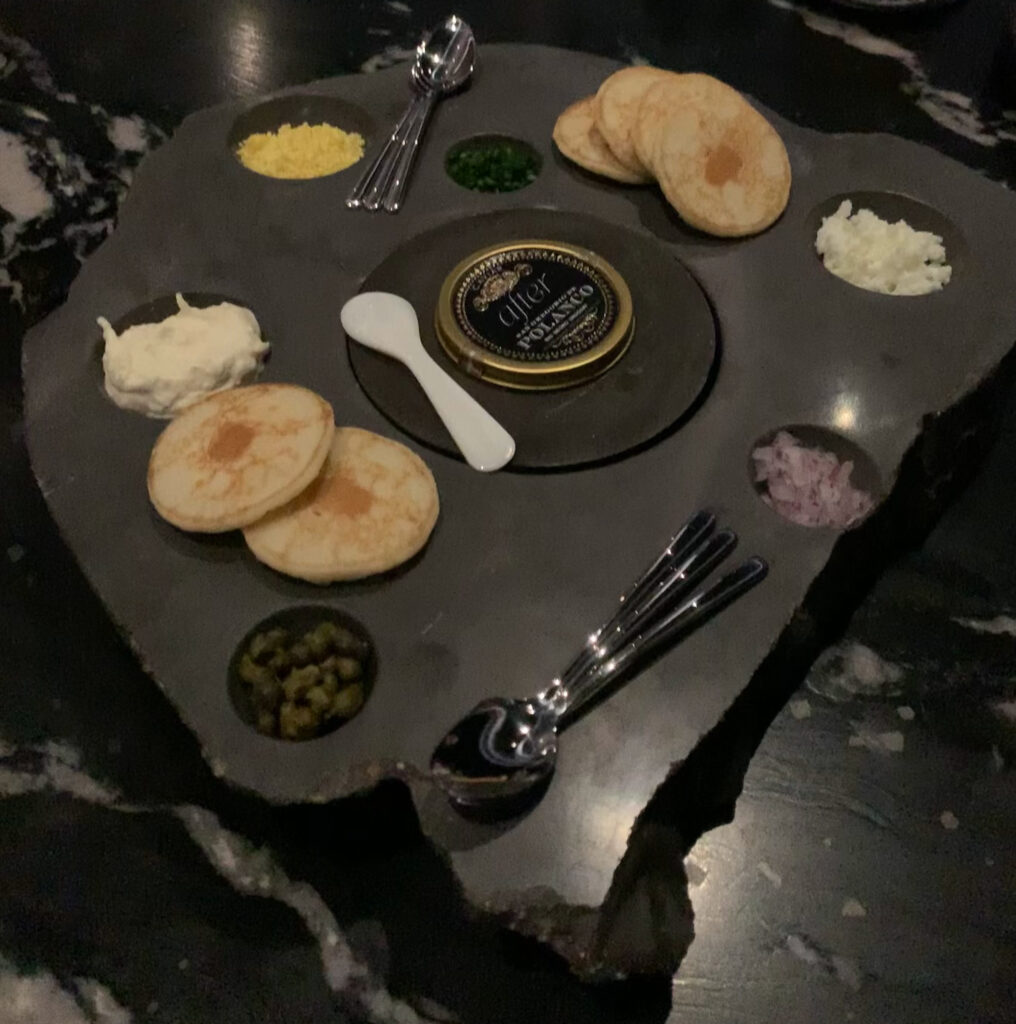
It is totally fine for Duffy and Muser to opt for traditional accoutrements, but they must still put a modicum of effort into crafting them. Otherwise, the duo simply confirms they have no real savoir-faire to speak of. Yes, they confirm that they sell style over substance for an audience that cannot recognize either. How hard can it be to make blinis to order when you are charging as much as $1950 for your caviar service? Then again, you are speaking of the same team that proudly serves frozen Simplot French fries.

(One local critic, though you admire their effort to reveal Tribune food editor Ariel Cheung’s ethically bankrupt behavior, portrayed After’s rendition as a “baller caviar service.” You must ask—given their admission that Muser comped them a meal at Ever “as an anniversary gift”—was this roe comped too? Should this “critic” not, in such a situation, simply recuse themself from shilling any venture associated with the restaurant that bought them off? One must be willfully ignorant to pretend After’s caviar service is anything more than underwhelming, so choosing to pimp it must signal either a total lack of taste or some sleazy effort to boost one’s chums. Actually, you will allow for one more option: it was easier to pretend the caviar service was good—and blithely present oneself as appreciating life’s finer things on social media—than to burst the bubble, forgo the status showing off the pricey roe entails, and truly advocate for consumers. Remember: “journalists” love to deceive the public through omission.)
Gillanders, with his “Valhalla Reserve Golden Caviar,” nimbly avoids the kinds of pitfalls you have described when it comes to this totemic luxury ingredient. First, it is worth considering the price: $85, all-in, without any need to choose a serving size or style of roe. That yields you a one-ounce portion of Rare Tea Cellar’s Golden Kaluga (available at retail for $75) set within a glass container (with custom lid) that is nestled into a nice little bowl. The caviar sees itself “marinated” with sea salt in a smoked Arbequina olive oil. It is joined by a wooden ramekin containing a house-cultured sour cream that is dusted with black garlic powder. A picture-perfect segment of lemon is offered to provide some additional dressing. But the key flourish comes by way of “Sour Cream & Scallion Beignets” that are made—of course—to order.
Whereas After charges $90 or more (much more) for sheer “style,” Valhalla’s caviar service is almost entirely “substance.” Gillanders does not put the totemic luxury ingredient on a pedestal at all but, rather, opens up the tin and uses his expertise to take the roe to the next level. That means augmenting the mildly nutty Golden Kaluga with the smoky, sweet, and buttery notes of the olive oil while also adding an extra burst of salt. From this base of consciously flavorful caviar, the chef empowers guests to design each bite using a squeeze of lemon or dollop of sour cream. The beignets, meanwhile, form the essential vessel. These pastries are fried, in most cases, by Sinclair herself and display an incomparable flaky, airy quality that beautifully cushions the caviar without overshadowing its delicacy.
Truth be told, any roe that costs only $85 is going to come across as a bit clumpy or mushy compared to the finest examples (in which each orb can be felt on the tongue and consciously popped). However, the warmth and freshness of the beignets—combined with the flavoring Gillanders applies to the caviar—makes this preparation a success. The chef has approached his totemic luxury ingredient honestly and envisioned how he might make it taste and feel memorable (rather than merely look “refined”). That entails—in an act that can only be called joyous—liberally spooning the roe onto a donut that has been slathered in sour cream. This feeling of generosity (for the beignets are small enough to encourage it) ensures that you feel a sense of ownership and mastery over the caviar. The ingredient is no longer the unattainable stuff of dreams but something knowable and enjoyable without deference to any highfalutin expectations. Plus, when compared to a blini (even a good one like Maple & Ash’s), the beignets actually work better to maximize the less pronounced textural appeal of this particular roe. The server even offers to bring you a fresh batch should they run out!
Yes, for the money, Gillanders does a really great job with this caviar service. Through it, the chef confirms that he is someone you can trust with your money, someone who will wring all he can out of those $85. Maybe it helps that Valhalla does not have an “other-worldly” interior design to trade on and excuse what is, at After, just about the most thoughtless approach to accoutrements you have ever witnessed. But maybe Gillanders is just more motivated and inspired to give his guests that perfect, life-changing caviar bite than, like Duffy and Muser, fleecing them for a few fleeting moments of aspirational fantasy. (It would also really be nice if After’s servers didn’t try to upsell patrons on such a lackluster indulgence.)
Moving back to the tasting menu, Valhalla’s first composed plate—dating back to opening and still served to this day—comprises a “Kombu Cured Fluke.” This method of treating the fish, which entails wrapping it in sheets of kelp that are washed in vinegar and lightly salted, intersects with the kind of Edomae “aged sushi” tradition seen at restaurants like Kyōten. The technique draws moisture out from the fluke, concentrating its flavors while also imparting an added dose of umami drawn from the seaweed. For his dish, Gillanders places a few thick slices of the fish at the center of a plate. They are dressed in nam pla—a Thai fish sauce—and hidden under a mound of julienned green apple. An assortment of toasted pine nuts then provides the finishing touch.
Diving in, the dish deserves credit for being so visually striking. Even before you catch sight of the fluke, your mouth waters with the thought of the crunching nuts and apples yielding to its supple flesh. In reality (and considering the preparation is served with chopsticks), you find the slices of fish to be just a little too big and too thick to make for good sashimi. That is to say, the fluke offers a smooth and satisfying texture, but the mouthful is a bit much to manage all at once without trying to bite and tug at the fish and apple segments as they are suspended before you. Still, this could be easily remedied (at the time of plating or by providing a knife), and the fundamental contrast between the tender flesh, crisp fruit, and brittle nut is sound. With regard to flavor, the fluke’s mild character (helped along by the kombu curing) is enlivened by the salty, umami fish sauce but balanced by the tart, sour apple. The toasted pine nuts, meanwhile, help underscore the savory side of the dish and make it seem satisfying. Overall, you think this is a good—not great—course that starts the tasting menu on a generous note (with regard to portion size) but lacks just a bit of refinement. Still, it is certainly pleasing.
Over on the à la carte section, you now come to a trio of dishes that might be called Valhalla’s “appetizers.” The first of these, a “Gulf Prawn Ceviche” ($24), follows nicely on the back of the “Kombu Cured Fluke.” The shellfish, rendered as four or five segments of the tail (sans shell), sits in a bright orange aguachile with small balls of scooped avocado and sprigs of cilantro as a garnish. An accompanying plate carries an heirloom corn “crackling” (a reference to the crispy pork skin of the same name) meant to serve as a vessel.
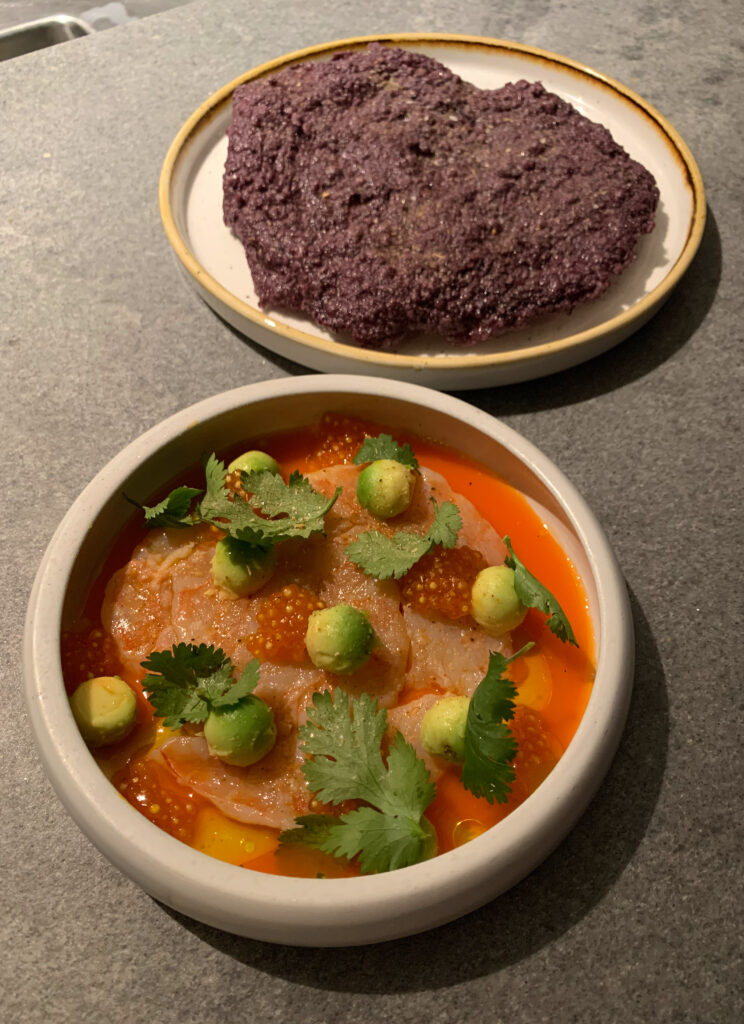
Approaching the dish, you find the pieces of shrimp to be a bit more manageable than the larger slices of fluke. You can pluck them out from the bowl and enjoy a tidy bite that balances the shellfish’s plump, juicy texture with a creamy coating of avocado that unfurls across the palate. You are tempted to say that the shrimp could still be sliced a bit thinner, but the heirloom corn crackling is robust enough to weather the ceviche’s weight. Its ironclad structure shatters cleanly and, upon being bitten, breaks apart with a satisfying crunch. Upon constructing a complete bite, the crackling does a good job of absorbing the aguachile without becoming soggy. Rather, it is only upon being pulverized that the vessel begins to sop up all the shrimp’s juices. With regard to flavor, the dish mingles the shellfish’s subtle sweetness with the sour, mildly spicy notes of its dressing. The avocado, with its encapsulating creaminess, does well to extinguish some of the resulting intensity while the crackling underscores the shrimp’s character with earthy, deeply sweet tones drawn from the heirloom corn. This is nicely done.
The next of the smaller à la carte plates is a “Warm Eggplant Burrata” ($18) served “Arzak style.” While you are familiar with the famous three-Michelin-star Basque restaurant, you cannot find the recipe that originally inspired Gillanders’s preparation. So, while that context might be helpful in understanding the chef’s approach, you will have to take Valhalla’s version on its own merits. The dish comprises a pouch of the titular cheese that sits at the center of a shallow bowl. The surface of the cheese displays, instead of the telltale topknot, a series of grooves that are lined with traces of olive oil and black pepper. Puncturing the burrata yields an eruption of puréed roasted eggplant and red pepper (also known as ajvar and used prominently across the street at Rose Mary). A couple pieces of well-toasted focaccia, perched on the side of the bowl, provide the crowning touch.
Burrata, you may recall, featured prominently on S.K.Y.’s opening menu (where it remains today) and has appeared at Apolonia too. Even Gillanders’s menu at Intro offered a “Warm Baby Beets” appetizer with a “housemade cheese” that might have formed a predecessor to the later “Homemade ‘Buratta’ Cheese” (named thusly to avoid trampling on the product’s Protected Geographical Indication status). Thus, it is fair to say that this particular item stands as one of the chef’s specialties and something he has already explored extensively in a more orthodox fashion. Stuffing the burrata with eggplant, in this manner, represents an effort to turn the ingredient (known for its oozing inner cavity of stracciatella and cream) on its head.
Technically, you find this bit of artifice to be successfully executed. You would have no clue the cheese contained such a filling had you not read it on the menu, and the reveal—even if you expect it—is rather satisfying. However, philosophically, you cannot help but feel that treating burrata in this way denies some of its character. To you, the cheese has as much (or more) to do with the inner filling than the outer husk of solid cheese you are left with. The ajvar, in usurping the place of the stracciatella and cream, offers a greater degree of flavor. However, those expecting a cool, rich mouthful of burrata are left only with a lukewarm wrapper of mozzarella surrounding a relatively oily pool of eggplant and red pepper purée. Spread on top of the perfectly crisped focaccia, the dish works well enough: offering smooth, slightly chewy textures that yield sweet, tangy, and slightly earthy flavors. You just do not think the burrata brings much to the preparation outside of the presentational flourish. Still, stuffing the cheese in such a way is a clever idea, and the chef may eventually strike upon a better use for this technique.
Also offered à la carte, Valhalla’s “Prime Steak Tartare” ($29) offers the restaurant’s take on an appetizer that can be found throughout Chicago’s many steakhouses. Bavette’s ($24.95), Bazaar Meat ($26), Gibsons Italia ($23), Maple & Ash ($21), and RPM Italian ($21) all tout examples (to name but a few). And Gillanders, at least when it comes to price, has surpassed them all—understandably so when you consider his concept is not going through nearly the same amount of beef on a daily basis. While many of Valhalla’s competitors make use of sirloin or tenderloin mixed with egg yolk and other goodies, the “Prime Steak Tartare” centers on a particular grading (rather than cut) of meat. The chef chops the beef finely and packs it into a halved marrow bone that looks so pristine you wonder if it is not made out of ceramic. The tartare is topped with a sprinkling of flaky salt and joined on the plate by a mussel aioli that is given a hearty garnish of parsley. The finishing touch comes by way of “bone marrow toast”—rounds of crispy Italian baguette imbued with an extra dose of flavor.
Approaching the dish, you feel fairly ambivalent: Gillanders food is almost always creative, but beef tartare is totally old hat. Nothing about the presentation, though sleek, promises to blow you away. Taking a bite of the meat, you find the texture to be tender and melting with only the faintest (pleasurable) bit of chew. Its moderate serving temperature and that bit of flaky salt, too, help build an impressive fullness of flavor. The mussel aioli, spread across the toast, enlivens the tartare with a garlicky, oceanic quality that surprisingly tends toward sweet and mushroomy notes on the finish. The crispy baguette itself does not only anchor the beef admirably but also enriches it with a deeply savory, umami character drawn from the bone marrow. In this manner (and without recourse to any visual trickery or gimmicks), Gillanders has crafted a tartare dish of surprising and delightful depth. He accomplishes this by subtly accenting the beef via its two seemingly simple accompaniments (of which the mussel aioli is incredibly clever). Thus, the preparation, for your initial misgivings, left you impressed.
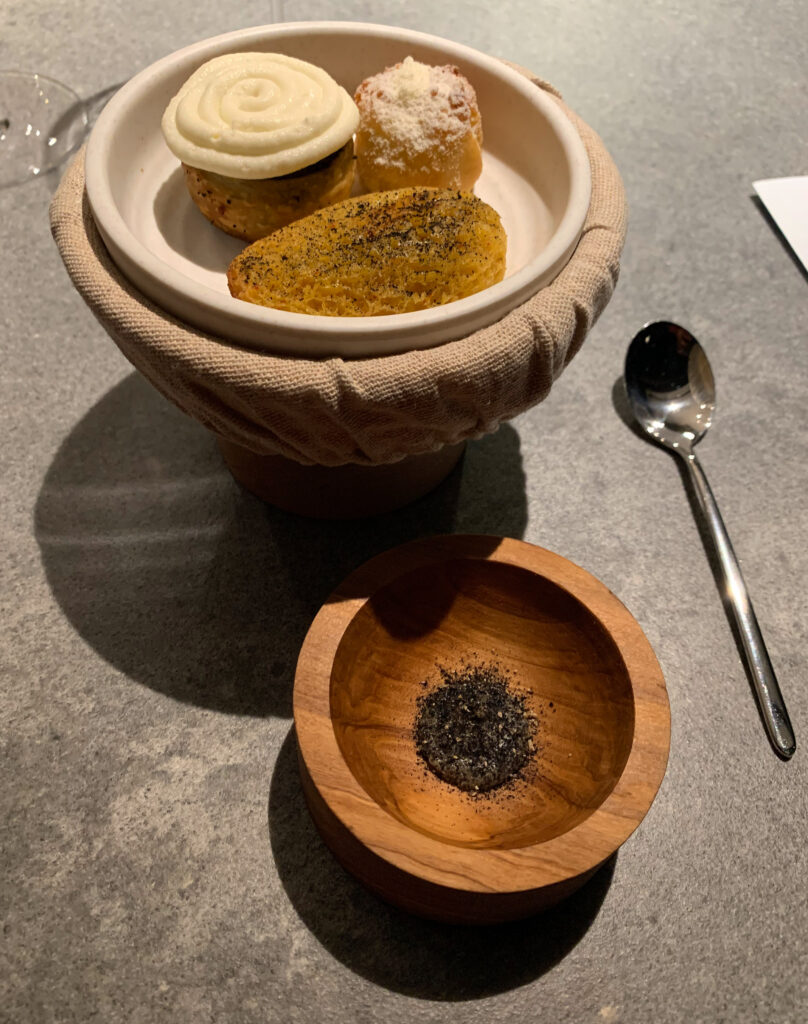
Moving back over to Valhalla’s tasting menu, you come upon one of the restaurant’s signature creations (that, as it happens, can also be ordered à la carte for $18). The “Savory Pastry Basket” is, in effect, an ode to Sinclair’s baking prowess that allows the chef to put forth a trio of bites (later a duo) that serves as the meal’s bread course. At opening, this comprised a “Parmesan Cream Puff,” a “Truffle Butter Biscuit,” and a “Cornbread Madeleine.” Later, the cream puff would be replaced by a “Sour Cream & Onion Beignet.” But this element would ultimately be excised, and the basket has recently featured only a “Black Truffle Biscuit” and “Huitlacoche Madeleine.”
When it comes to form, the “Savory Pastry Basket” has been a hit from the start. The bowl containing the baked goods, set within a cloth that is suspended from an even larger receptacle, sends your tongue wagging with its generous bounty. The image of the biscuit—topped with a spiral coating of butter that looks just like frosting—and the madeleine, in particular, tap into a latent love of sweet treats. Yet, the server reminds you that they are not actually desserts and even recommends that you save some of the basket’s contents to enjoy alongside other, forthcoming courses. (This warning, in your haste to engorge yourself on any delectable bread you come across, is much appreciated—particularly when some looming sauce cries out for a piece of crust.)
Of the various savory pastries, the “Parmesan Cream Puff” was particularly light and dainty. It was skillfully made, no doubt, but struggled to assert itself next to its more substantial partners (and may have been better utilized, in some fashion, at the very start of the meal). The puff’s replacement with the “Sour Cream & Onion Beignet” marked what seemed to be a like for like substitution. However, cut in half, filled with sour cream, and topped with a scoop of beef tartare, the bite surpassed its predecessor by offering a more pronouncedly savory experience. Still, the meaty garnish might have seemed somewhat shoehorned into the pastry basket, for the “Crunchy Cheddar Fondant” (with its carpaccio topper) essentially treads the same ground at the start of the meal.
The “Savory Pastry Basket” is, thus, principally defined by the “Truffle Butter Biscuit”/”Black Truffle Biscuit” and the “Cornbread Madeleine”/”Huitlacoche Madeleine.” The former duo has, despite the change in moniker, essentially stayed the same. It comprises a layered, flaky biscuit that, as it crumbles on the palate, absorbs the glistening spiral of butter that crowns its top. While you think this latter component could use just a bit of salt, it possesses a creamy mouthfeel with a pleasing tinge of earthiness that accents the bread and helps to further distinguish its intricate texture. The madeleine, by comparison, has transformed from a relatively straightlaced expression of unsweetened corn into one defined more by the presence of huitlacoche (or smut)—a fungus that infects the cob’s kernels, swells them, and yields a delicacy sometimes known as “Mexican truffle.” The pastry itself displays a soft, spongey texture with a moist interior. As the “Cornbread Madeleine,” the item—in its relative blandness—suffers from its comparison to the sweetened S.K.Y. classic; however, as the ”Huitlacoche Madeleine” (generously coated with the powdered fungus), the bite displays additional earthy, smoky, and mushroomy notes that make it far more captivating.
Overall, you are not sure that any member of the “Savory Pastry Basket” has yet truly exceeded the (often singular) breads offered at other fine dining venues throughout the city. However, they still amount to tasty, playful bites situated within a clever form (i.e. masquerading as “sweets”) that you think will prove fruitful over the long term. (You think, perhaps, that these softer pastries lack the more substantial feeling that a crust of bread offers. Or, maybe, your mind simply searches for the sweetness it expects and perceives the lack thereof to be “bland.” There is certainly an interesting psychological trick at hand with this presentation.)
Arriving on the back of the “Savory Pastry Basket,” Valhalla’s “Maitake Mushroom Kebab” stands as one of the tasting menu’s most substantial courses. It also comes with a story, as your server describes the thrill of the team meeting with the forager who sources the fungi out in Schaumburg. While Gillanders’s food is personal in many ways (relating both to his particular family background and the larger scope of his career), it rarely engages so explicitly with local terroir. Thus, highlighting the staff’s field trip to visit this purveyor helps connect the meal to a greater sense of place and stresses an Illinoisan quality that is not quite apparent throughout the rest of the menu (let alone the wider Time Out Market). Of course, this framing of the course is all for nothing if the mushroom does not measure up to such celebrated status. Yet, by sliding the maitake off its skewer tableside, the chef ensures the fungus feels special from the moment you hear about the forager well through when the first morsel enters your mouth.
The mushroom—boasting a dark brown, deeply caramelized base with a crisped layer of tangled caps—is set upon a layer of chèvre and some chunks of burnt avocado. Some “pulverized” rosemary, small bits of Fresno pepper, and a pool of the kebab’s roasting juices provide the finishing touch. Faced with such a portion, you pick one end of the maitake to start on: cutting off a segment of stem and cap, piercing a piece of the avocado, and dragging them both across the bottom of the bowl. When the bite hits your palate, the resulting textures are pleasantly crunchy, a bit crispy, and nicely creamy. Despite the size of the mushroom, its flavor is not overly earthy or rich. Rather, the maitake’s natural umami is balanced by the tangy quality of the goat cheese, the faintly bitter notes of the burnt avocado, and the subtly sweet heat of the peppers. This makes the dish, for how satisfying its texture is, surprisingly vibrant. It induces you to come back for another bite without ever making you feel like the mushroom is acting as a mere meat replacement. (Though Prodan, to her credit, is quick to suggest pouring some of the red wine you ordered when this dish appears.) This makes for a nicely presented, well-executed preparation that punches above its weight.
At this point in the meal, you may be served another one of Valhalla’s supplementary offerings that (like the “Foie Gras Cherry”) allows the chef to play around with a totemic luxury ingredient without upsetting the tasting menu’s overall value proposition. The “Black Truffle Potato Mochi” ($21) has been offered as early as October and persists as a verbal special to this day. It comprises a crispy fried potato croquette that is stuffed with black truffle cheese curds and that also contains a layer of chewy potato starch (serving to replicate the textural sensation of a familiar rice-based mochi). The bite is finished tableside—usually by Gillanders himself—with 10 grams of freshly shaven Burgundy truffle.
Though savory potato mochi are, indeed, traditionally made in Japan, you sort of view the “Black Truffle Potato Mochi” as following in the footsteps of the “Savory Pastry Basket.” That is to say, the bite subverts a form and texture that you may more closely associate with dessert. In practice, the potato mochi displays a crisp, golden-brown crust that, upon being punctured, reveals an oozing cheese center surrounded by sticky strands of starch. On the palate, these three layers meld smoothly so that a sense of chewiness slowly builds and then lasts through the finish as your sense of the other elements fades away.
The topping of shaved truffle—a veritable mountain that stretches more than twice the height of the actual bite—is quite impressive. However, when this delicacy combines with the mochi, the phrase “too much of a good thing” comes to mind. Black truffle (compared to its white counterpart) demands a bit of gentle heating to fully reveal its aromatic and flavor compounds. The potato mochi, despite its textural intrigue, is just not hot enough to provide this (nor could it be without inevitably scalding guests’ tongues). Thus, you are left chewing on its starch component while the relatively muted, faintly plasticky flavor of the “raw” truffle takes hold. You feel bad saying that, as the dish does evoke (at a visual level) quite a feeling of generosity. But the truffle really needs to be helped along a bit to become palatable—let alone as decadent as the preparation would suggest. One dining companion even recommended that the dish would benefit from a cheese like parmesan to help buttress its salty and umami notes. On that count, you must agree.
Moving back to the tasting menu, you now come upon Valhalla’s principal expression of fish: a “Crispy Lubina” later titled “Katafi Lubina.” Despite the change in name, both preparations have remained the same. They each revolve around a fillet of European bass (known as lubina in Spain, branzino in Italy, and loup de mer in France) that has been blanketed by a layer of kataifi, a crisped and shredded phyllo dough (that looks a bit like vermicelli) typically used to make desserts in Mediterranean and Middle Eastern cuisines. (Gillanders’s alternate spelling of “katafi” is uncommon but not without precedent.) The fish sits atop a mound of fregola sarda (a handmade, toasted semolina pasta akin to couscous) that is studded with pieces of razor clam. A pool of creamy sauce flavored (and colored) with black lime forms the finishing touch.
Diving in, it is quite striking to see how the light-, golden-, and dark-brown tones of the crisped kataifi contrast with the gunmetal tones of the black lime sauce and the plate itself. The colors almost work to challenge what you typically consider “edible” (at a purely visual level), with the white flesh of the fish—upon being revealed—serving to connect the various shades. Attacking the lubina with fork and knife, the fillet breaks apart cleanly and takes a neat shard of the kataifi topper with it. The latter element, upon hitting your teeth, is perfectly crisped while the bass itself displays a moderate firmness that yields to a gentle flake. The fregola sarda, when it works its way into your bite, offers a creamy, faintly chewy consistency that joins with the bouncy bits of razor clam to enhance your perception of the fish’s mouthfeel. The black lime, meanwhile, paints the lubina’s mild flavor with tart, tangy notes that are backed by a surprisingly musky finish. This latter element helps to emphasize the fregola’s nutty quality and imbues the dish with an overarching savory character that is highly enjoyable. The “Katafi Lubina” is beautifully conceived and perfectly executed.
Through November of 2022, this preparation of bass was followed, on the tasting menu, by an even more indulgent expression of seafood. The “Roasted Diver Scallop” (also available à la carte for a time) offers Gillanders’s take on one of fine dining’s favorite bivalves. It is also an ingredient that the chef has served at S.K.Y. and Apolonia—and one that, should it continue to be fetishized, offers absolutely no room for error. Valhalla’s rendition has revolve around a serving of one or two scallops (each cut in half crosswise) that are set within a halved, purply shell. The bivalves are joined by a small tangle of enoki mushrooms then dressed with brown butter, bonito, and some shredded leaves of sage.
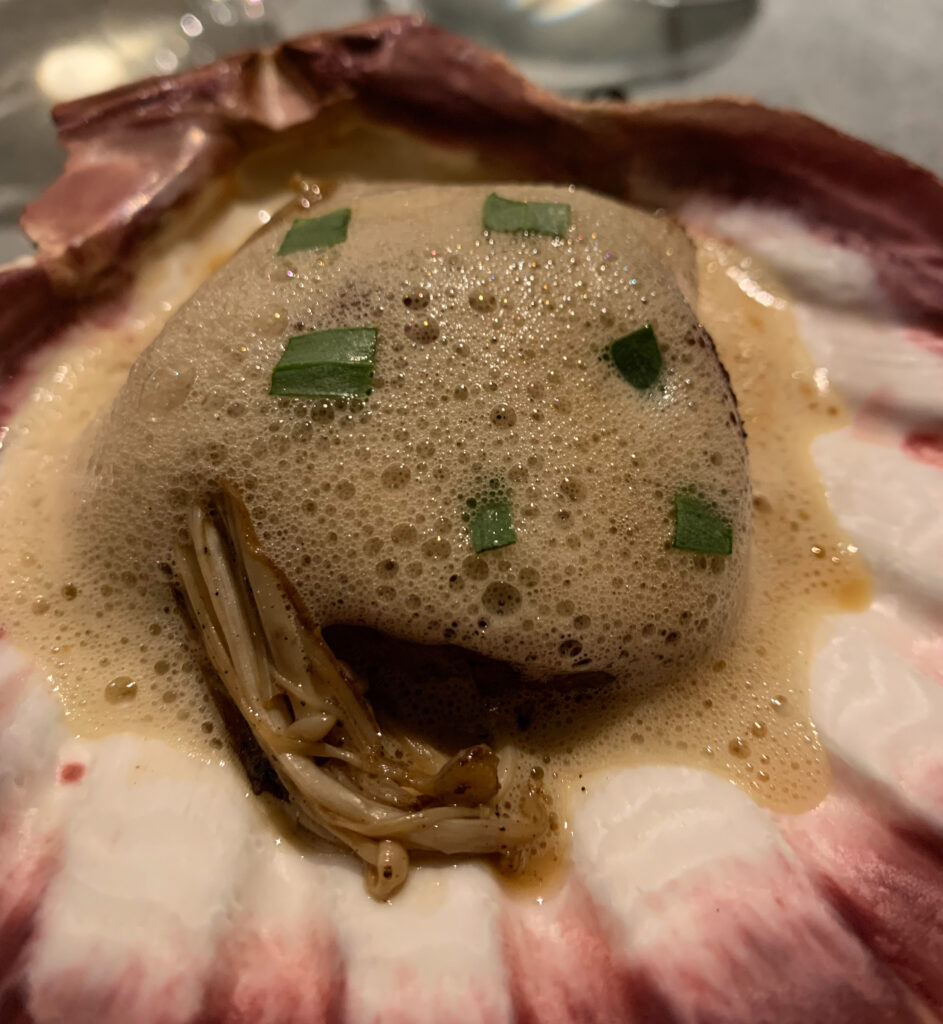
Visually, Gillanders nails the presentation: not just by elegantly serving the scallop in its shell but by crowning them with a caramelized, deeply dark-brown crust that begs you to dig in. You also like the fact that the bivalves have been bisected, for the dish is served with a set of two spoons (one large and one small) that helps you maneuver each half of the shellfish so that you can get a fully composed bite. With regard to flavor, the scallop’s mild sweetness forms a fitting canvas for the positively hedonistic notes of the nutty brown butter, umami-charged bonito, and herbal sage. The enoki mushroom, when it hits the palate, offers a nice bit of fruitiness with a pleasing crunch. But you have found the scallops themselves, on at least one occasion, to be just a little too firm. Such a small error can be forgiven (particularly on occasions when the bivalve offers the balance of crisp exterior and buttery interior that it should). Yet you think these kinds of cooked scallop preparations—aiming so directly at easy pleasure—are largely played out. Even when successful, they are not very distinctive, and any lapse in execution calls the entire conception of the dish (as something that hardly seems novel these days) into question.
One of the tasting menu’s newest items—replacing both the “Katafi Lubina” and the “Roasted Diver Scallop” as the meal’s new expression of decadent seafood—is the “Maine Lobster Shumai” (also offered à la carte for $26). The connection to S.K.Y.’s classic “Maine Lobster Dumplings” ($18) should be obvious, and you might even draw a connection to Gillanders’s dim sum menu offered back at Intro. You noted this same kind of parallel when discussing the “Oyster & Caviar Madeleines” and the “Huitlacoche Madeleine.” However, while S.K.Y.’s “Cornbread Madeleines” are indeed iconic, the cake—whether invoked visually (as in the former case) or flavored in a savory fashion (as in the latter)—is hard to really improve upon. By comparison, you think the “Maine Lobster Shumai” encapsulates just what distinguishes Valhalla from Gillanders’s past ventures.
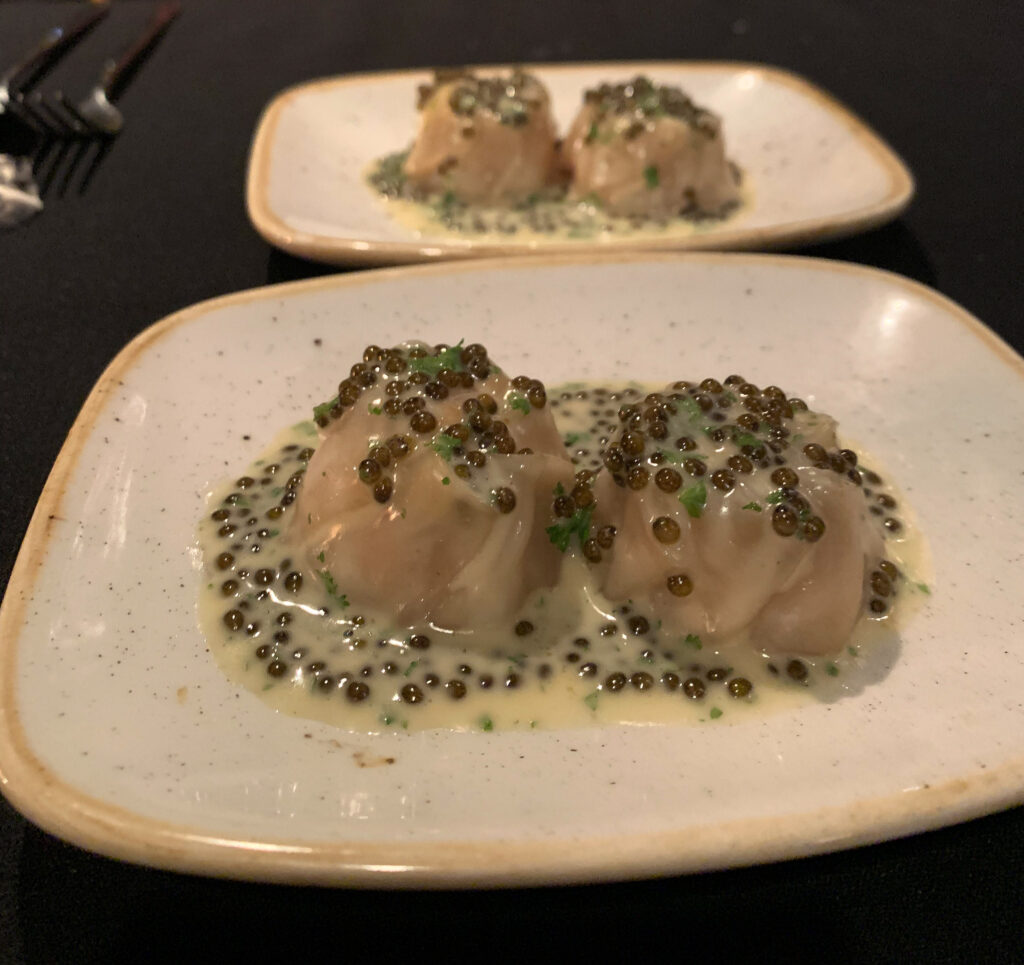
At S.K.Y., $18 gets you four “Maine Lobster Dumplings” that are coated in “jade butter” and garnished with “soft herbs.” At $4.50 a piece, the bites are well formed with enough width and enough of an overhanging wrapper to be split by a party of four without feeling paltry. (This is particularly true when considering that some patrons may be averse to so much butter—though, personally, you usually enjoy an order all to yourself.) At Valhalla, $26 gets you four “Maine Lobster Shumai” (guests enjoying the tasting menu, it should be noted, are given a serving of two). At $6.50 a piece, the bites are about half the size of S.K.Y.’s dumplings, yet the wrapper is formed so snugly around the crustacean that you are not, in fact, paying more for less.
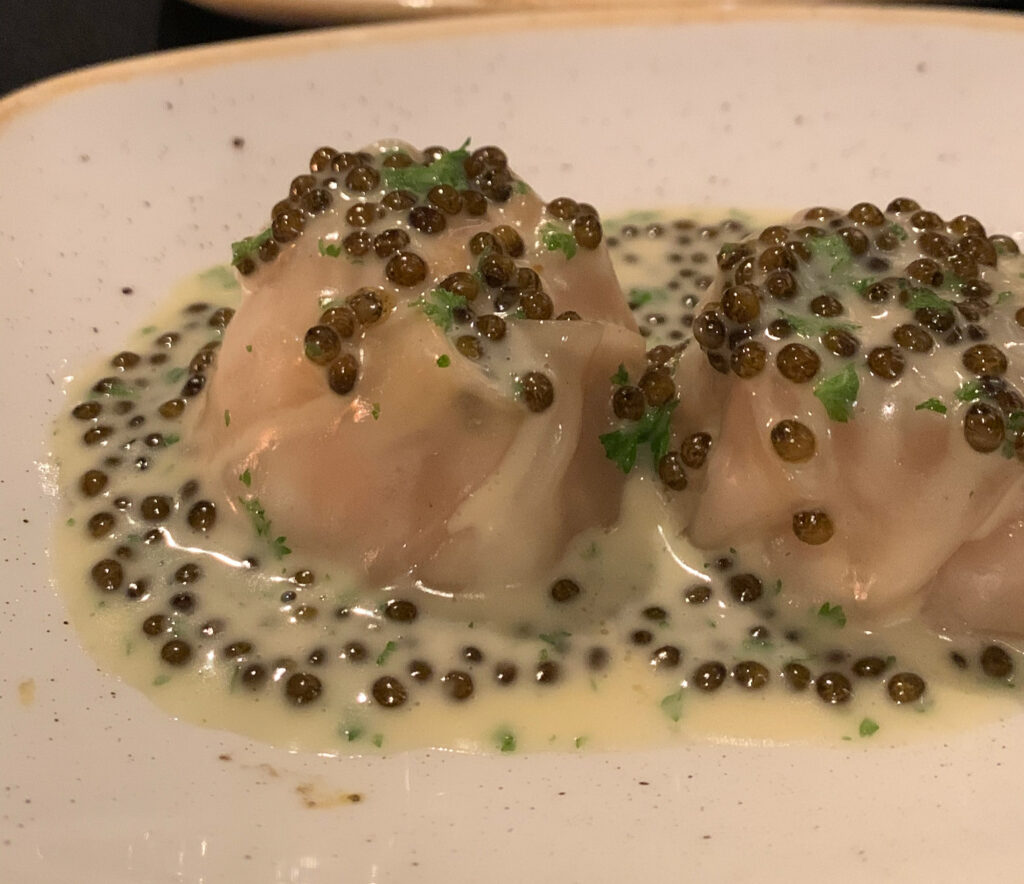
No, when you consider that the shumai are coated in a “golden caviar butter” (made from the same Rare Tea Cellar Kaluga Hybrid that featured earlier), the price feels like a positive bargain. The feeling of substance you get from the “Maine Lobster Dumplings” is, thus, substituted for a refinement and concentration of the form. The shumai’s wrapper does just enough to soak up the butter and help situate the caviar before melting in the mouth and allowing the subtle chew of the lobster to take center stage. There, the crustacean’s rich, sweet character joins with the nutty roe to achieve a wonderfully hedonistic sensation. This dish, you think, satisfies exactly what the “Roasted Diver Scallop” hoped to offer in an even more luxurious, elegant form. Compared to S.K.Y.’s “Maine Lobster Dumplings”—as timeless as they are—Valhalla’s shumai confirm that Gillanders’s gloves are off at the new concept. Strikingly, the chef is able to marshal new techniques and greater resources toward reinvigorating familiar (and still rather comforting) ideas. In this case, he does so successfully while playfully winking at past preparations in a manner that rewards his longtime fans. Well done.
One of the tasting menu’s most personal—and totemic—of dishes has been prominently featured since the restaurant’s announcement. The “Queen Crab Arroz Caldo,” a “variation on the traditional Filipino porridge,” was created at the behest of “Gillanders’ mom, who is Filipino, [and] has long urged him to put a Filipino dish on his menus.” The chef, you may recall, once regarded this task as “intimidating” given his “strong connection” to his grandmother’s “homey” cooking and the thought that he “just can’t do it like she did.” While a classic arroz caldo is described as a “rice and chicken gruel heavily infused with ginger and garnished with toasted garlic, scallions, and black pepper,” Valhalla’s rendition is “cooked in a manner that’s more akin to risotto.” Specifically, “the dish is prepared with sushi rice, herb-infused tea and fresh crab, then topped with lemon, black pepper, and crunchy garlic in hondashi seasoning.” The version that eventually hit the menu (a few weeks later) would substitute the lemon for lime and add fermented green chili to the mix.
When the “Queen Crab Arroz Caldo” arrives at the table with the crustacean’s carapace set over the bowl, you feel you are in for something special. Once the shell is removed, you set your eyes upon the rice: a bit wet, a bit creamy (just like porridge) and interspersed with chunks of crab, garlic, and chili. Strands of lemongrass and fennel—along with a generous grating of black pepper—complete the presentation. Upon hitting your palate, the rice displays a smooth, loosely bound consistency in which the individual grains can still be discerned. They maintain a slight firmness that blends well with the crunchy bits of garlic but is also nicely cushioned by the tender pieces of crab.
By comparison, the topping of herbs provides a stemmy, celery-like crunch that you are not sure you like. And, while the dish offers a kaleidoscopic blend of sweet, tangy, and deeply herbal flavors, it feels a bit hollow. Namely, especially on the back of the lobster shumai and caviar combination, you would like a richer, more savory crab quality to shine through. Perhaps the herb-infused tea used to prepare the rice shifts its flavor profile toward the “green” end of the spectrum. Or maybe the “queen crab” (referring to what is essentially a kind of snow crab) does not have a pronounced enough character. You, of course, hesitate to tell Gillanders how to cook his grandmother’s food. But this course is clearly intended to be one of the highlights of the menu and—while it has improved over time—it lacks the kind of power (at this point in the meal) to be particularly memorable.
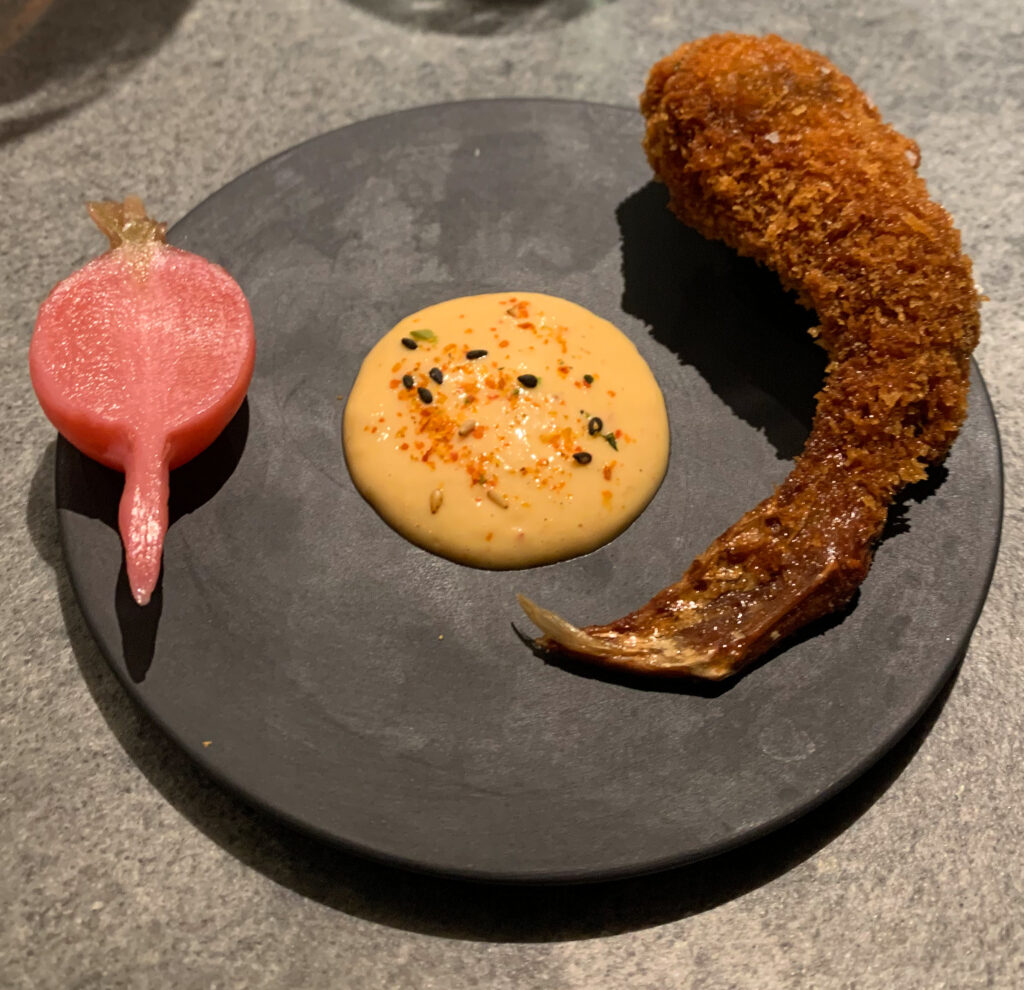
Though the “Queen Crab Arroz Caldo” has not quite lived up to the endearing personal story that underlies its creation, the dish is not the only one on the tasting menu to reference some outside inspiration. The next course, “Shin’s Shiso,” was previously titled “Shin’s Red Shiso” and, before that, called “Catalpa Grove Pork.” Hearing that, it almost sounds as if you are dealing with at least two totally distinct preparations. But making “Shin’s Shiso” the headliner is meant to tell a story, one that the staff always shares with a warm sense of pride. Shin, who works at one of Gillanders’s other restaurants, grows shiso that is wrapped around “Trent’s Pork” (Trent Sparrow of Catalpa Grove Farm) and fried. It is joined by an aioli made from “Chu’s Kimchi” (Chu being another member of the team) and “Jon’s Radish,” which has been pickled. In this manner, the chef naturally weaves a story that stresses the personal nature of his ingredient sourcing and the caliber of handiwork that can be found across his own group.
In practice, the resulting plate is pretty dainty—comprising but a couple bites and a dipping sauce. Your interpretation is echoed by the presence of an accompanying finger bowl, something of a hospitality throwback that underlines Gillanders’s effort to imbue Valhalla with the kind of frills its setting might not typically suggest. The pork-stuffed shiso, in its first iteration, possessed a crisp crumb coating and curled shape that looked a lot like a fried shrimp. Later, however, it has been executed with a lighter batter (reminiscent of tempura) that yields more of a puffed, taco-like shape. Dipped into the kimchi aioli and then bitten, the pork-stuffed shiso breaks apart cleanly and offers a crisp-then-tender texture that just turns a bit mushy toward the end. The meat, nonetheless, offers a satisfyingly rich flavor offset by the bright and tangy flavors of the surrounding leaf and the dip. The radish, likewise, provides a satisfying crunch with just a bit of cleansing sourness to finish. Overall, this course amounts to a fun interlude that lacks just a tiny bit of execution in mastering the pork’s texture. Nonetheless, this kind of storytelling—and the presence of flourishes like the finger bowl—bode well for the future of the concept.
Heading back to the à la carte side of the menu, Valhalla’s “Raclette Porridge” ($26) is so notable as to command its own specially outlined box. That may have something to do with the dish’s liminal status on the threshold between the “from the sea” and “from the land” offerings, but—in practice—this demarcation brings with it some implicit expectations. “This must be good,” you think to yourself, but you’ve been hurt before: the “Queen Crab Arroz Caldo” seemed so promising yet left you wanting. Can Gillanders achieve, with this relatively superfluous dish, what he was unable to when inspired by his grandmother’s own recipe?
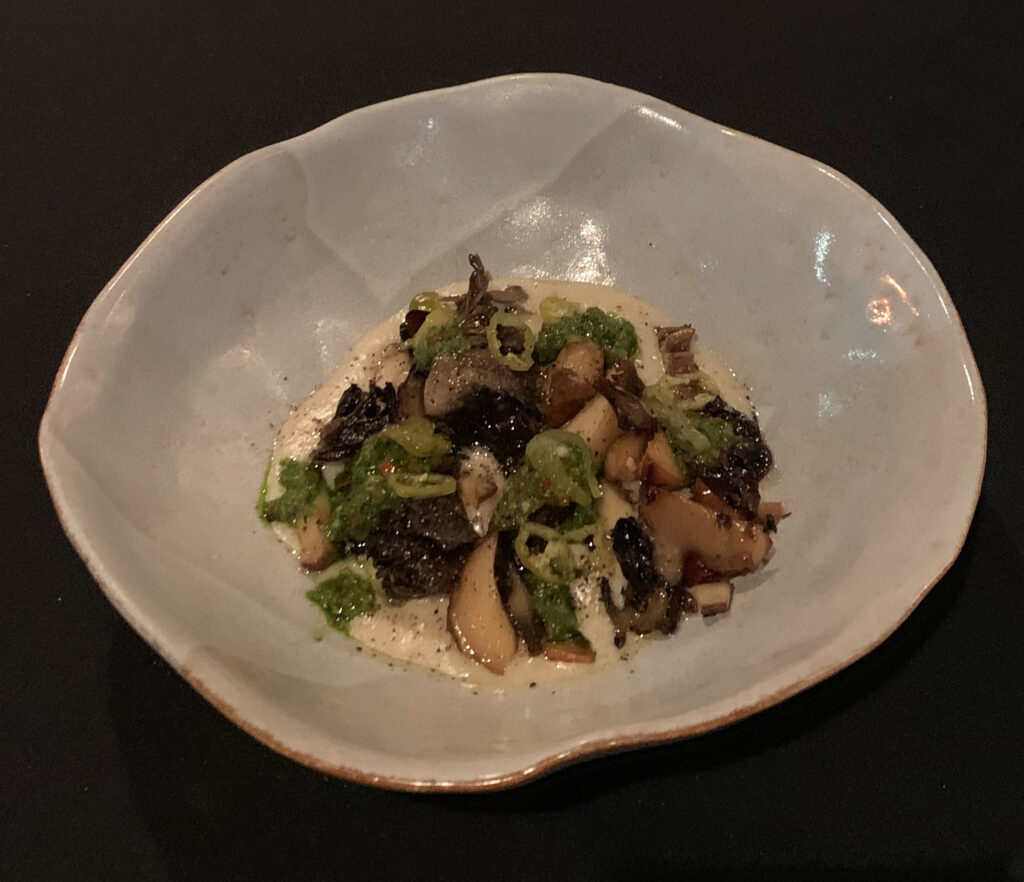
The ”Raclette Porridge” comprises a small, shallow bowl filled with a congee-like gruel of smooth, softened rice grains. They are infused, rather powerfully, with a local rendition of the Swiss Alpine cheese that lends the dish its creamy, gooey consistency. A contrasting firmness is offered by a topping of mushroom caps cut from the same Schaumburg-sourced maitakes that featured earlier. The finishing touch, meanwhile, comes from a salsa verde made with shishito peppers.
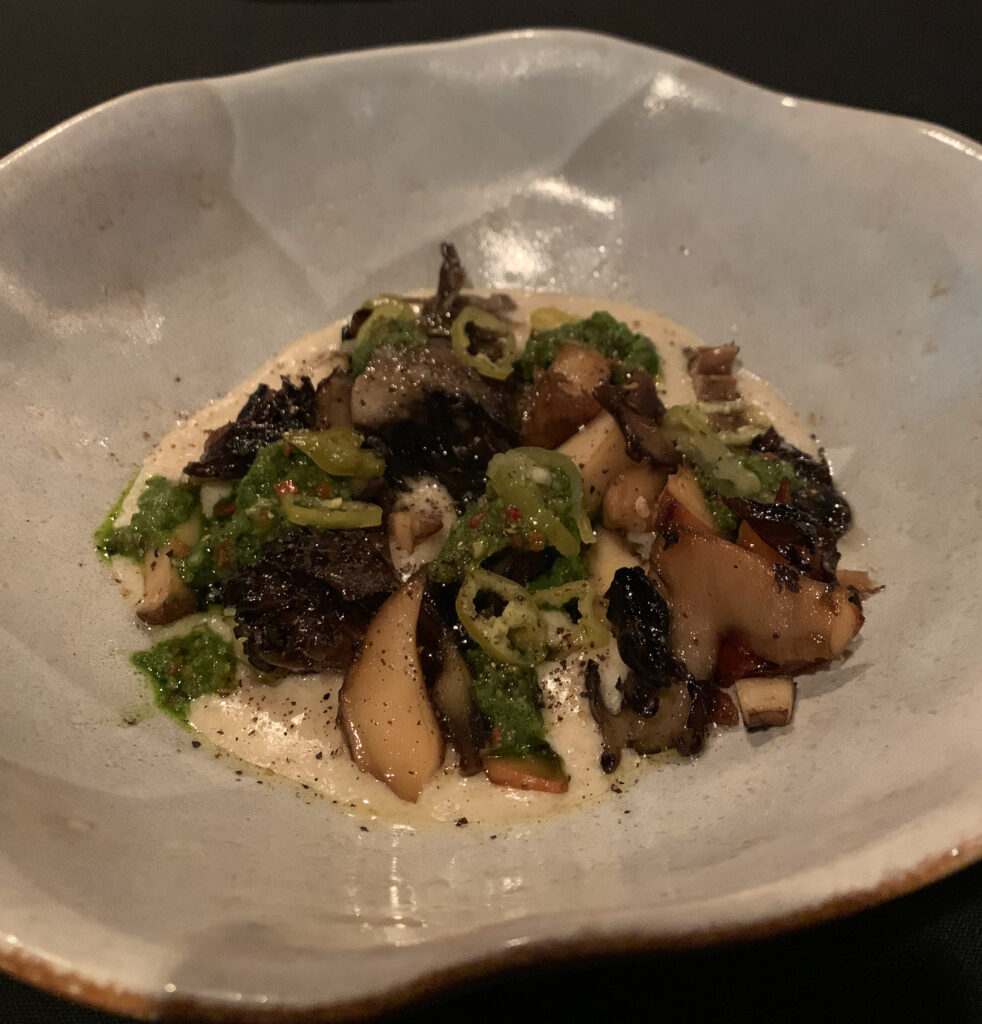
Diving in, the porridge is pleasing on the tongue with a relatively homogenous mouthfeel compared to the “Arroz Caldo.” You do not sense the individual grains so much but, rather, appreciate a richly cheesy texture with enough moisture to avoid becoming gunky. The segments of mushroom, on that note, feel more like they’ve been dipped in fondue than soaked within a soup. They crunch—along with the slices of shishito—against your teeth and provide the dish with its sense of substance and definition. Nonetheless, it is the flavor that really shines: sweet, nutty, and pungent cheese offset by earthy fungi, a good dose of ground black pepper, and a mildly spicy, acidic salsa. Gillanders balances these bold elements without any one overshadowing the others. Yes, the porridge displays just the kind of intensity—drawn from an array of harmonizing notes—you sought from the “Arroz Caldo.” This makes for a less sentimental, but more successful dish that proves the chef can make this kind of rice preparation, despite its small serving size, feel complex and satisfying.
The last of the à la carte dishes you have sampled stands as one of the section’s most substantial offerings. In effect, it must anchor the meal for those opting out of the tasting in search of a smaller number of more richly rewarding plates. The “Iberico Pork Secreto” ($54)—later reimagined as the “Berkshire Pork Collar” ($48)—allows Gillanders to tackle the kind of porcine delight that, due to the prevalence of dietary restrictions aimed particularly at pigs, makes little sense on a set menu. You rue this fact but, in an age that already demands concepts cater to diners who refuse meat altogether, understand that serving poultry, beef, or lamb simply causes fewer headaches. Luckily, this à la carte status generally enables a greater sense of indulgence, and (as you remember) these dishes can easily be used to supplement the tasting should you so choose.
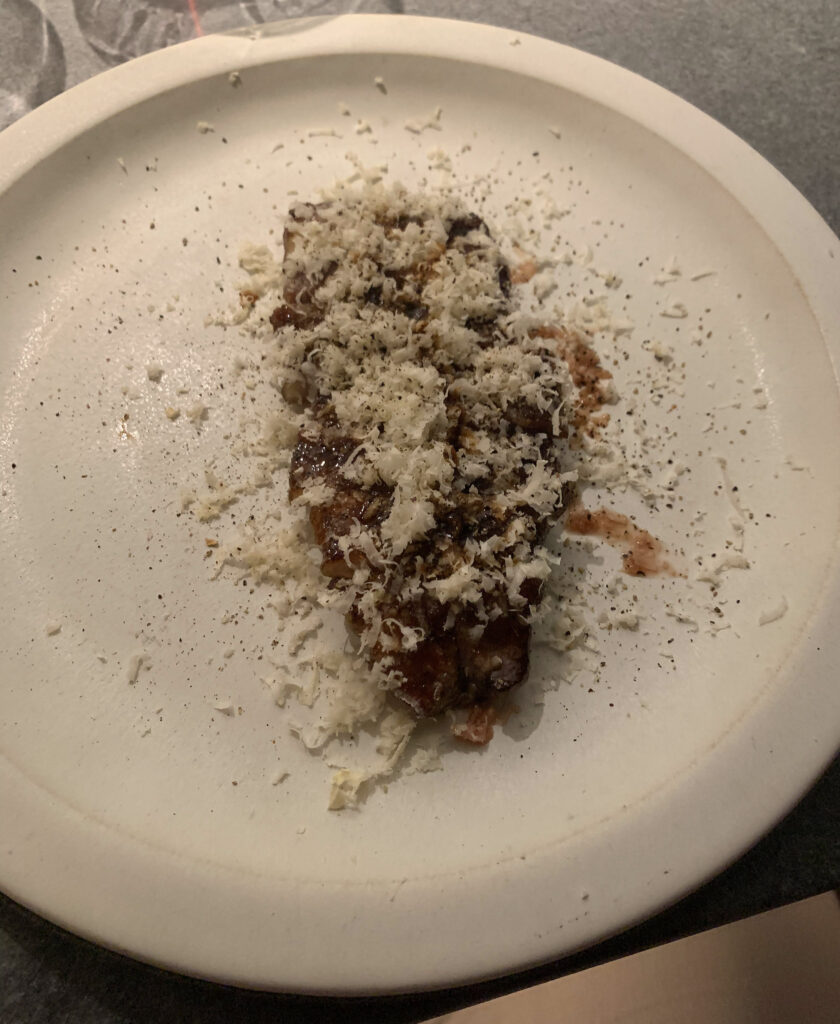
Though the “Iberico Pork Secreto” and the “Berkshire Pork Collar” comprise different cuts sourced from different breeds of pig, the overall preparation has remained the same. Of the two iterations, you tried the former; however, you doubt the transition detracted much from the dish. The Ibérico “secreto” trades on the name of its illustrious, acorn-eating swine but amounts to a thin piece of meat “hidden” under the pig’s shoulder. This cut, frankly, is everywhere now, and—while tasty—it has lost a bit of its luster. Substituting the “secreto” for a slightly more orthodox pork collar (cut from the top of the shoulder) strikes you as sensible. It has allowed Valhalla to shave $6 off the item’s price while, no doubt, preserving a certain portion size and perhaps even demanding a greater demonstration of technique from the kitchen.
Both preparations center on a cut of pork that has been grilled then coated in a black garlic agrodolce. An additional, more visually striking garnish comes by way of horseradish that is freshly grated over the meat along with a bit of black pepper. A side serving of potato salad—dusted with chives—completes the presentation. Attacking the dish, the pork displays a nicely charred outer crust that, despite the cut’s thinness, yields to a perfectly juicy interior. At this price point, you might say that’s the bare minimum when it comes to execution. But the black garlic agrodolce—tart, sweet, and powerfully umami—imbues the meat with an immense concentration of savory flavor that resonates so deeply it makes each piece feel double the size. Just when these notes get to be too much, the horseradish enters the equation and cleanses the palate with a pleasant sharpness. This quality is echoed, on a more minor scale, by the mustard-based potato salad: a little chunky, a little tangy, but thoughtfully seasoned and altogether soothing. The whole composition may sound a bit simple, yet the dish is masterfully balanced. It indulges in an extreme level of hedonism that you find totally intoxicating without going overboard or polarizing unsuspecting guests. It shines as an ode to how incomparably, unapologetically delicious pork—and only pork—can be.
When it comes to the tasting menu, Gillanders has had to move from smaller courses like the “Queen Crab Arroz Caldo” and “Shin’s Shiso” into something that suddenly heralds the meal’s denouement in a striking, satisfying way. Originally, the chef opted for “Tea Smoked Squab” as his savory “closer.” This bird was well executed, but you couldn’t stop yourself—during that first visit—from eyeing the chop that the patrons sitting next to you had ordered à la carte. Your plate—for all its dainty refinement—paled in comparison, and you regretted not bolstering your menu in the same fashion. The dish you spied on that occasion was the “Lamb Chop Crepinettes” ($59), one that would later be known the “Lamb Chop 4.0” ($48) and would find its way into becoming the starring entrée that caps off Valhalla’s tasting.
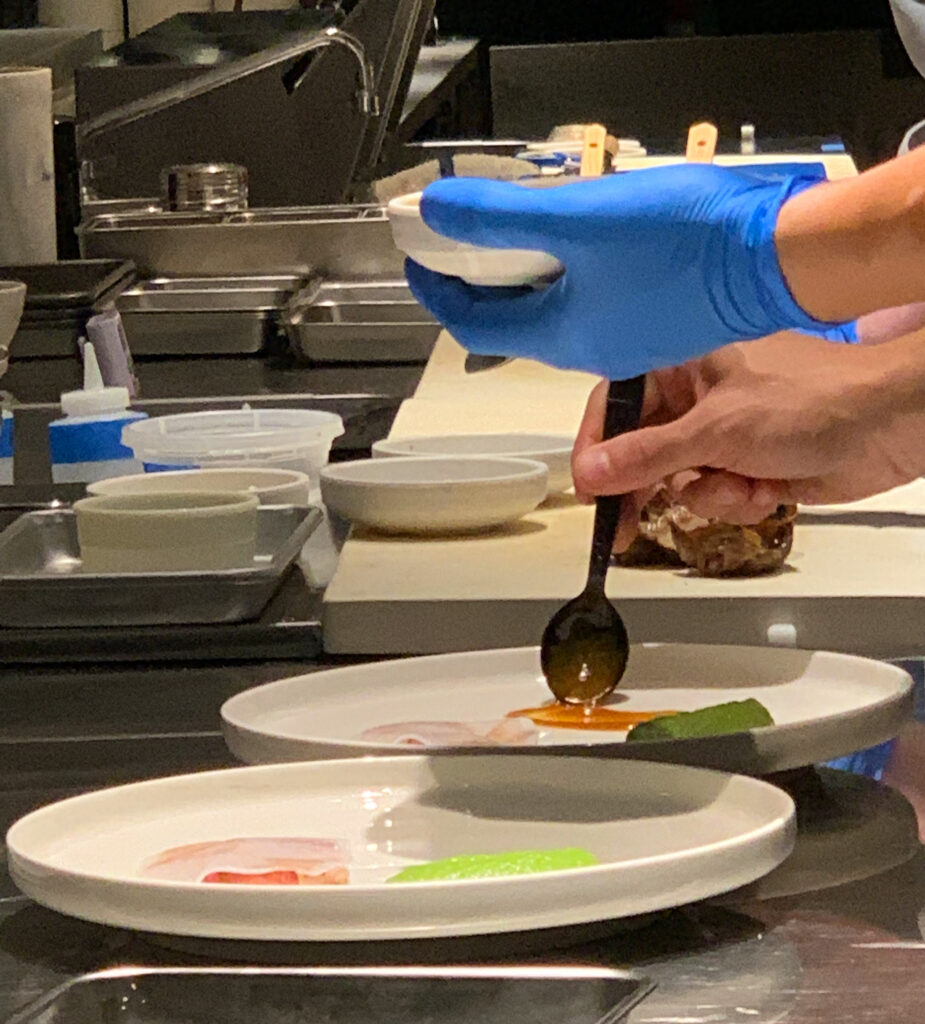
That title—“Lamb Chop 4.0”—admits the iterative nature of Gillanders’s cooking. To borrow a quote that the chef shared on social media, he might describe his process along the lines of “Good, better, best. Never let it rest. ‘Til your good is better and your better is best.” On that note, you never sampled the “1.0,” “2.0,” or “3.0” versions of the dish but do know that the “Crepinettes” and “4.0” versions share the same basic preparation. Thus, it is fair to say that this course represents the culmination of an idea that Gillanders has pursued doggedly for some time, and that making it the star of his tasting menu must reflect an obvious pride. Is it well-placed though?
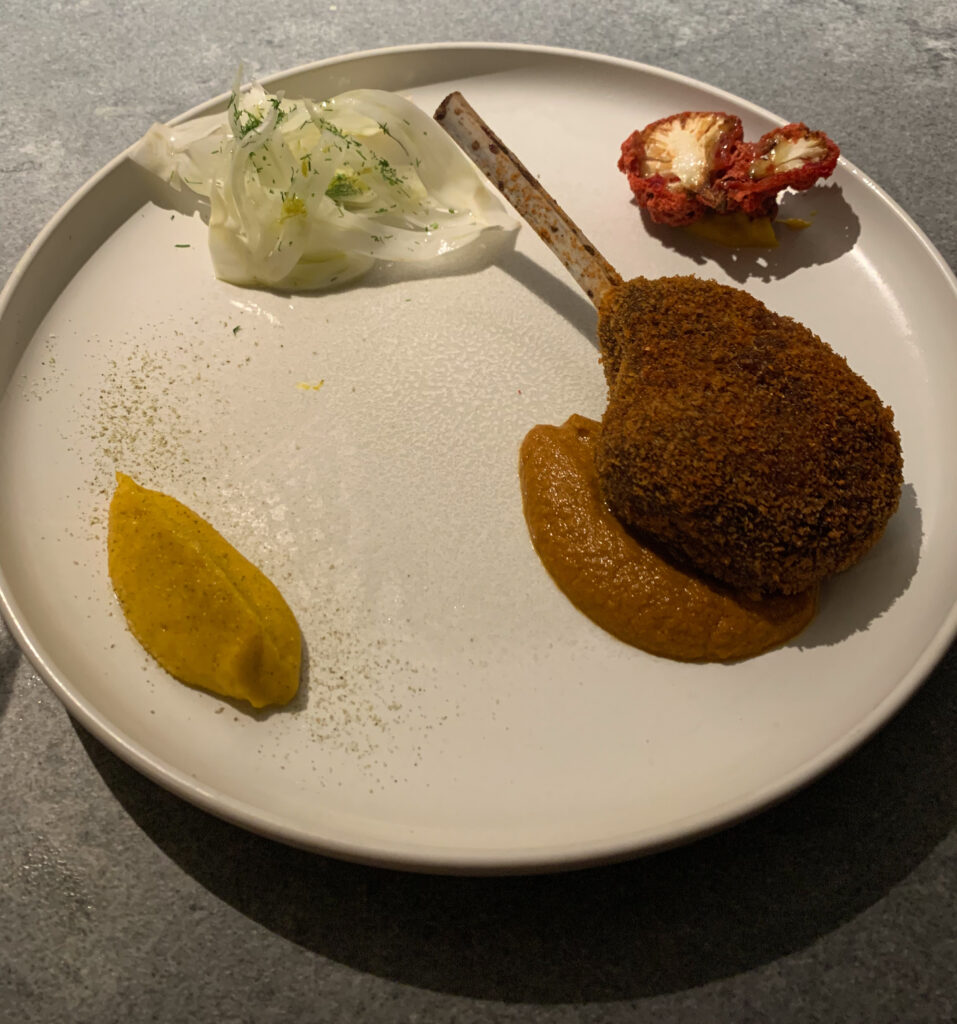
The dish comprises the titular chop that has been prepared in the style of a Scotch egg: “slowly cooked, wrapped in a lamb sausage seasoned with berbere, crusted and crisped.” The meat is accompanied by a “fragrant tomato butter” sauce “inspired by tikka masala.” A side of cauliflower has been “battered with a beetroot-vodka batter and brushed with a kombu-olive oil glaze.” Meanwhile, the chop is joined by a quenelle of ginger purée “sprinkled with a makrut lime and lemongrass tajin” then paired with a “petite shaved fennel salad…dressed with a salted yuzu vinaigrette.” The chef’s own description of the dish, in this manner, almost feels verbose; however, there is no question that he has obsessed over each of these small details. In particular, he notes that many tasting menus “begin with high impact, punchy courses, but then slowly become more subtle as the experience continues.” To avoid this kind of “sensory decline,” “Lamb Chop 4.0” intends to offer one of the meal’s “most technical and diversified” courses filled with “various textures, temperatures and ingredients.”
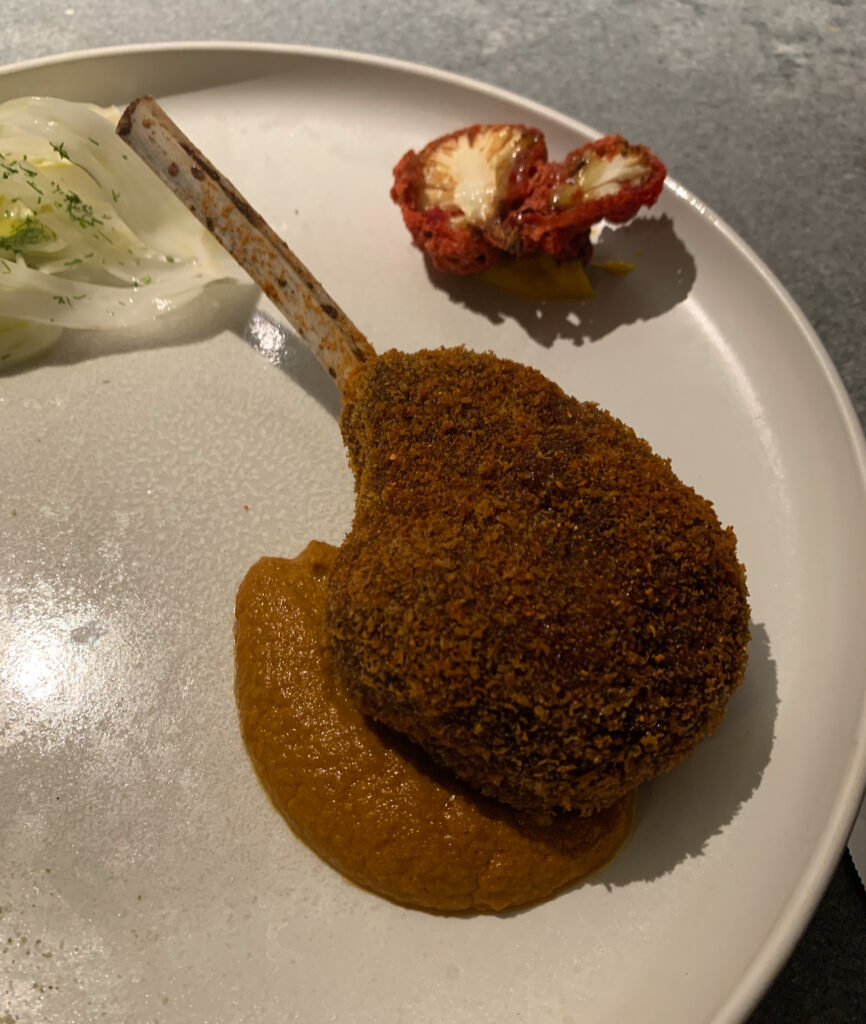
Visually, you very much like the neatness of the dish. The lamb chop (proudly perched atop the tomato butter), cauliflower, ginger purée, and fennel salad each occupy their own quadrant of the plate and treat the eye to a different kind of color. The golden-brown, deep red, burnt yellow, and translucent off-white tones entice you more than your standard serving of “meat and veg” and urge you to embrace the full range of elements in turn. First, you train your knife at the lamb and puncture its crumb coating. The meat separates from its bone cleanly and, after a dunk in the accompanying butter, lands on your palate. There, it displays a faint crunch followed by a satisfying bit of chew (essential as far as a larger sense of sustenance is concerned) that yields to a doubly juicy sensation of lamb flesh drawn from the cook on the chop and that extra layer of sausage. With regard to flavor, the meat sees its more robust character nicely moderated by the berbere, an Ethiopian spice blend that typically combines chiles, coriander, allspice, cloves, paprika, nutmeg, ginger, and cinnamon (among other ingredients). The “fragrant tomato butter,” likewise, melds into these warming notes and buttresses them with a rich and tangy quality that enhances the meat’s savory appeal.
This covers the lamb chop component—which, on its own, would already make for a successful dish on the mere basis of its texture. But, via the fried cauliflower, Gillanders is able to echo the meat’s crunchy crust with an even more crispy, almost puffed expression of the vegetable that offers harmonizing sweet and nutty flavors. The ginger purée and fennel salad, by comparison, are meant to provide the palate with some relief. The former, dressed with lime and lemongrass, counters the berbere’s spicier ingredients with a cleansing pungency. The latter, dressed with yuzu, aims at the same effect but does so with a refreshingly watery crunch that displays hints of anise on the finish. The ginger purée and fennel salad almost seem superfluous at first, but they are not filler. Rather, they play off of some of the lamb’s subtler notes while working to construct a plate that feels fully fleshed out. The course does, indeed, feel more like a preparation you are paying $59 or $48 for (à la carte) than some simple, contrived serving of wagyu appended to the end of a tasting. It stands as one of Valhalla’s most intricate creations and a promise that the restaurant continues to swing for the fences even where other menus begin to fade.
At this point in the meal, Sinclair’s work—though already featuring prominently in preparations like the “Valhalla Reserve Golden Caviar” and “Savory Pastry Basket”—now takes center stage. To start things off, the pastry chef serves a palate cleanser: a tiny tart flavored with sunflower, lemon, and honey that arrives perched atop a canelé mold. The bite, in truth, looks like little more than a potato chip. But the tart shell crunches, its contents melt, and its topping crunches again before unleashing pleasantly sweet, subtly nutty, and slightly bitter notes on the palate. Your mind is left wondering how such a meager morsel conjured such a depth of flavor while your tongue sits tantalized and transfixed by the thought of more sugar to come. (That being said, you still think this palate cleanser would benefit from a slightly more streamlined, visually-appealing form.)
As dessert looms, you might also take this opportunity to order another drink. Presently, Prodan serves a range of five libations attuned to the end of the meal: a 2015 Kracher “Numer 11” ($39), a 2016 Pajzos Tokaji Esszencia ($44), a Jean Bourdy “Galant des Abbesses” ($22), a Glenfiddich 23 ($49), and a Mars “Komagatake” IPA Cask Finish ($32). This undoubtedly stands as a premium selection, with the two dessert wines perhaps even seeming pricey (but reflecting a pour from a half-sized bottle that exposes the restaurant to greater potential wastage). Personally, you find the “Galant des Abbesses”—a centuries-old recipe for fortified wine made from biodynamically-grown Chardonnay that is heated in a copper cauldron with 25 spices, blended with brandy, and aged in barrel for five years—to be the most interesting of the bunch.
Formerly, however, Valhalla offered a pair of dessert cocktails that you found even more appealing. The “Sarsaparilla Float” ($19) combined “rice beer gelato” with a “Fernet sarsaparilla soda” to make a gently alcoholic take on the root beer float. It retained every bit of the beverage’s classic character while expanding on it with layered notes of bitterness and malt. The “Valhalla Edible Cocktails” ($26), meanwhile, offered an engaging trio of tipples in a tactile form. These comprised a “Narancello Gelée” (a gelatin set within an orange peel), a “White & Ruby Port Puree” (eaten out of a glass with a spoon), and an “Atomic Griotte Cherry” (something of a forerunner to the “Foie Gras Cherry” supplement). These kinds of bites do not typically offer the most nuanced expressions of their respective spirits, but seeing them arrive at the table—so daintily arranged on an ornate mirrored tray—was intoxicating. They just looked so playful, tasted pleasant enough, and turned the idea of enjoying a stuffy glass of sweet wine with dessert on its head.
You understand that these kinds of edible cocktails have featured as part of the restaurant’s “Valhalla” pairing—a clever way to diffuse some of the cost of opening so many bottles of wine. Yet you will admit, especially in the case of the “Sarsaparilla Float,” that the abandonment of these options is sad. It is likely that they presented the team with too much prep work relative to the number of customers that actually ordered them. Yes, they felt sort of like hidden gems waiting to be discovered by those brave enough to seek some extra indulgence at the tasting menu’s end. They spoke to the concept’s overflowing creativity, even in the most unlikely of places. Hopefully they can return to the menu at some future point, for the after-dinner drinks that have replaced this duo are totally fine but also rather undistinguished by comparison.
Moving back to the tasting menu, the highlight of Sinclair’s desserts—and truly the pinnacle of the meal’s sweeter expressions—comes by way of the “Hot & Cold Pineapple” (formerly known as the “White Dessert”). The dish has also been subtitled “pineapple 7 ways,” a testament to just how deep its expression of fruit goes.
This preparation comprises a small bowl that is packed full of fresh pineapple chunks as well as spherified orbs, powders, and a whipped cream made with the fruit. This all is topped by a scoop of gelato (flavored with aged rum) and finished tableside with warm caramel. You are certainly missing some of the seven expressions of pineapple—along with the full scope of the flavor and textural intricacy that defines the fruit’s usage—in your description. However, across each of your four visits to Valhalla, this dessert has left you stunned.
Yes, fundamentally, the combination of cold gelato with warm caramel sounds destined to be a winner. But the many layers of pineapple imbue the “sundae” with a range of sensations spanning gushing juice, soothing cream, oozing gel, flaky pastry, and crisp powder. The fruit’s flavors, likewise, run the gamut from bright and tangy to deeply, darkly caramelized. When the spicy, vanilla, and molasses notes of the aged rum join the party, the result is an absolute warhead of decadent tropical notes that seem to last endlessly on the palate. For your personal taste (one that admittedly loves pineapple, caramel, vanilla, and rum), this comes about as close to a “perfect” dessert as you can imagine. It simply offers so much concentration, so expertly attuned, that you cannot help but shake your head in disbelief at the degree of pleasure it offers. Those who may feel more neutral about such flavors will find, nonetheless, that the “Hot & Cold Pineapple” possesses more than enough nuance, despite its hedonism, to avoid ever seeming heavy or cloying. This is just incredible.

Moving on, those celebrating a birthday at Valhalla may find themselves face to face with Sinclair’s artful (and delicious) ode to Banksy’s Girl with Balloon at this point in the evening. Given that the pastry chef has recently shared her thoughts on the creation, you will not dwell too much on repeating the same words. Rather, it is worth knowing that the dish is “always free” (to guests) and gets “destroyed” (through the process of eating) in a manner that is meant to show respect for Banksy’s own philosophy as an artist. More practically, the preparation comprises a white chocolate candy bar (emblazoned with the spraypainted “girl”) and a “chocolate & marshmallow fudgesicle” (with a lacquered red finish meant to replicate the “balloon”).
Typically, you would approach this kind of dish with a good deal of cynicism. It seems to so consciously be seeking viral social media status that it denigrates the (multisensory) craft of pastry by channeling it so concertedly toward visual replication. But what do other restaurants opt for when celebrating a birthday? A slice of cake, a scoop of ice cream, a candle, some rainbow sprinkles, and maybe a little song and dance? Valhalla already has the hand-signed card down pat, so why not have some fun? Banksy, by your measure, is in the twilight of their fame. Yet their art is broadly recognizable while also retaining a bit of indie appeal that makes you feel clever for recognizing it. The restaurant (or Time Out), likewise, has not exactly paraded the preparation about in a bid to seize on its viral appeal. Served to you before Sinclair posted about it, the dessert absolutely surprised and delighted the table. Based on the bite you were able to steal, it tasted wonderfully rich too (even on the back of your beloved “Hot & Cold Pineapple”). Thus, you must admit that is birthday treat is thoughtfully done and even, perhaps, genius. It confirms that Gillanders and Sinclair bring a kindred degree of imagination, backed by a shared quest for perfection, to their respective domains.
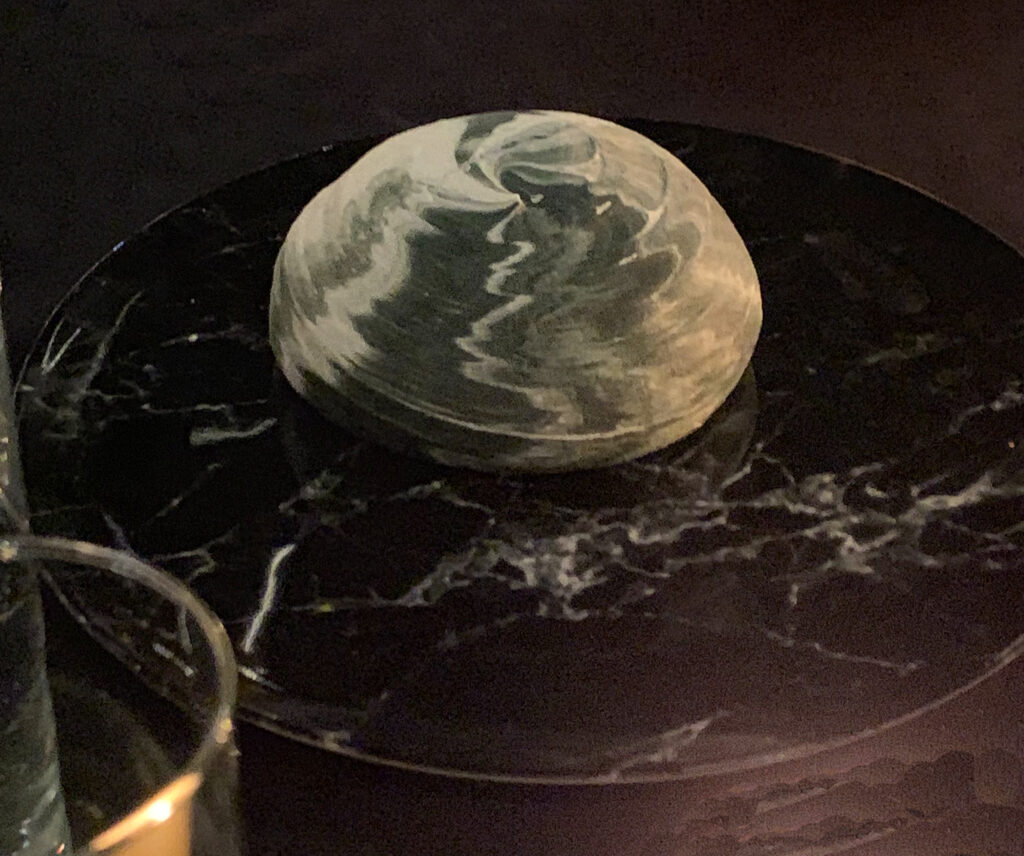
On the à la carte side of the menu, you have sampled a couple more of Sinclair’s desserts. The first of these, a “Black Marble Pavlova” ($18), has featured at Valhalla from the very beginning. It has also been the subject of its own post—describing the process that guided the dish’s creation—on the pastry chef’s Instagram page. The preparation centers on the titular meringue, boasting a rounded and smoothed top that is done up monochromatically to match its black and gray “marbled” plate. It also centers on “Sapindales,” an order of flowering plants that includes citrus, maples, lychees, rambutans, mangos, cashews, and mahogany.
You have only tried this dish once so will keep your impression short. Visually, the “Black Marble Pavlova” lives up to its moniker: it is sleek, sexy, and a bit mysterious. Attacked with your spoon, the meringue shatters satisfyingly to reveal a striking interior of sticky, reddish fruit filling surrounding crispy, pebble-like bits. Sinclair describes the filling as “flavors and textures of hibiscus, black sesame, lychee, rambutan & beet,” which accords with what is ultimately a crunchy, chewy, tangy, and sweet sensation that carries through the dish. At first glance, you might have expected this dessert to lean more toward notes of chocolate; however, it represents a rather clever take on a classic pavlova that bursts to life (via its filling) and harmonizes a set of ingredients you might not have thought to associate with each other. Relative to the more decadent desserts on display, this one feels positively invigorating on the finish.
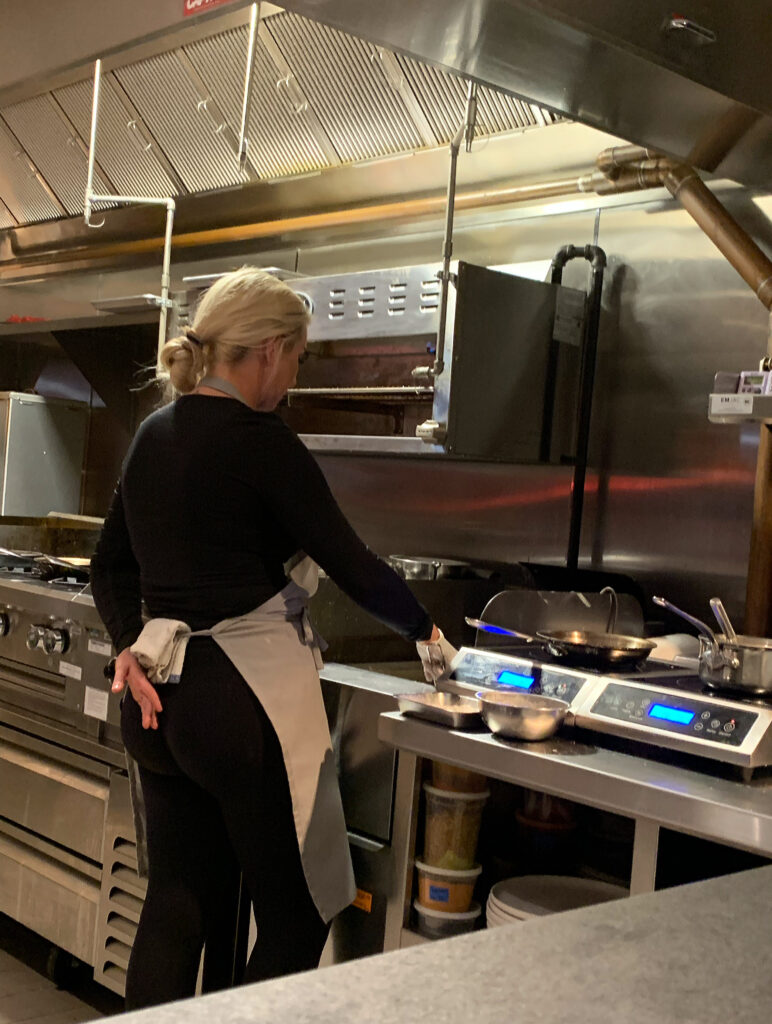
That being said, the “Warm Canelé Cruller” ($14), also offered à la carte, clearly aims to offer yet another hedonistic delight. The dish comprises a single serving of the namesake donut that has been coated in Okinawa black sugar—made in southern Japan “since the 17th century” and known for its “malty, salty, caramel flavor”—and paired with a quartet of accompaniments. If you are seated at Valhalla’s counter, watching Sinclair fry, sugar, and plate the cruller from mere feet away stands as one of Chicago’s most magical, visceral pastry experiences. (It makes the Krispy Kreme conveyor belt seem more akin to watching paint dry.) For tableside flourishes are fine and dandy, but the action occurring around the oven, the fryer, the grill, and so on seems to strike deeper. You must also consider that the donut’s accompaniments—the specifics of which elude you—are served on the same gilded and mirrored tray that was used to present the “Valhalla Edible Cocktails.” Set against the restaurant’s fairly subdued backdrop, this vessel really shines as a gesture toward an antiquated (if regal) conception of luxury that is being both invoked (through things like the finger bowl) and totally deconstructed (via the wider market environment) simultaneously.
In this manner, the “Warm Canelé Cruller” really acts as a good microcosm of what the concept hopes to embody. It represents a high expression of technique that mixes “high” and “low” influences. Its execution is staged in an open kitchen in a wider open setting, utilizing the kind of fryer that cranks out oceans of orders downstairs. The restaurant lacks the usual fine dining trappings, but the donut’s presentation (on the ornate tray) winks at regressive, over the top luxury. More importantly, the diner’s attention—in the absence of these niceties—is directed more intently at an intimate encounter with the craftspeople making the meal. As with an omakase conducted at a sparse bar, relatively ordinary techniques like frying can take on an intoxicating, romanticized quality. Treating guests to the singular, personal production of a donut—something you recall Ever, in one of its cleverer conceits, doing—
For what it’s worth, the cruller is very good too. It is warm and crusty with enough sweetness (from the sugar) to enjoy on its own, yet its fluffy crumb begs to be dipped. The accompaniments include a gelato, some quenelles of whipped cream (topped with orange zest), a sauce that looks like milk chocolate (topped with two orange segments), and some kind of jam (perhaps picking up on the citrus theme). This generous spread ensures what feels like an endless variety of bites. It affirms that Sinclair, like Gillanders, holds nothing back in making sure her desserts feel completely satisfying.
As you reach the end of the tasting menu, the pastry chef sends out one last closing sequence of bites. Originally titled “Mignardises,” this course has subsequently taken on the friendlier name of “Sweets to Finish.” It also utilizes Lyneá chocolate, a collaboration between Sinclair and Cacao Barry, a Belgian-Swiss cocoa processor that specializes in blending an almost endless array of confectionary products for professional applications. You cannot find the exact details of the partnership online, but it stands to reason that this kind of deeper involvement in the transformation of bean into bar is a good thing. It allows a pastry chef to formulate bespoke cocoa blends that suit the particular flavor profiles they like to work with, infusing industrial chocolate production and ingredient sourcing with a much greater degree of ownership. Thus, it does not represent a personal brand extension so much as it allows Sinclair to craft a higher caliber of dessert utilizing raw materials that she has helped curate herself.
For her “Sweets to Finish,” the pastry chef features four different morsels set within a matching set of shrinking receptacles that calls Matryoshka dolls to mind. (On one occasion, when dining with a larger party, the bites were aptly presented in an oversized wooden carving of a cacao pod.) Going from largest to smallest, the sweets correspond to a particular percentage of cocoa. There’s a 20% “caramel apple” (complete with stick), a 40% Périgord black truffle “truffle,” a 60% crème de cassis marshmallow, and an 80% expression of the Lyneá chocolate coated only in smoked nibs. Conceptually, this progression of cocoa is incredibly clever. Mignardises, at their best, may reference flavors that appeared throughout the savory portion of the meal; however, they often seem like a random token gesture. Sinclair’s presentation benefits from an internal logic that makes the journey from 20% to 80% even feel vaguely educational. In practice, the bites are attractively rendered, fun (in a tactile sense) to grasp, and enjoyable on the palate. The presence of such divergent textures and flavorings (of which the marshmallow might be your favorite) ensures that even those who do not usually favor darker expressions of chocolate can appreciate the 80% expression by the time it comes around. Overall, this course ends the evening with a delectable bit of flair and underlines the restaurant’s intention of impressing patrons right through the very end (smartly done in accordance with the peak-end rule).
With that, your time at Valhalla draws to a close. All in all, a typical tasting menu experience lasts a little more than two hours—not bad at all for around a dozen courses. However, supplementing this selection with any notable number of à la carte dishes tends to extend your dinner past the three-hour mark. This seems fair. The kitchen deserves credit for accommodating these requests to begin with, and it also cares enough to quarterback exactly where these additions slot into the overall flow of the meal. Ultimately, even when tasked with serving an additional three or four dishes, the restaurant generally maintains a pacing of 10-15 minutes per course. Those patrons who desire longer pauses between each plate should have no trouble requesting them, but that range is just about perfect for you.
Leaving the table, you make your way along the counter, passing each station of the open kitchen, before reaching the pass and the host stand that forms the gateway back into the market proper. Gillanders, Sinclair, Prodan, the other cooks, and the servers—assuming none are indisposed at this moment—turn to acknowledge your departure and offer their goodbyes. This shining human quality, present from the moment you step into the restaurant until the time you descend those stairs, infuses the restaurant with a sense of soul that helps counteract the lack of “ambiance” as traditionally conceived. It reminds you, when you are in its thrall, that fine dining’s refinement is rooted most consequentially in the mechanics of service and quality of what is being served—in the connections you are able to forge with those who make it happen—rather than the aesthetic trappings anybody with enough investment and the right interior designer can buy.
However, as the warmth of such a wonderful meal wears off and you reorient yourself within the wider Time Out Market, reality sets in. The hive of activity on the ground floor has nothing to do with what you enjoyed downstairs. It reflects little of Chicago or the Midwest. It’s a concocted commercial zone, an outgrowth of a wannabee global brand, a “third place” for West Loop’s peripatetic yuppie class. You get the feeling that Valhalla could be staged anywhere—that Gillanders and his team would make it a success anywhere—which makes you wonder: what exactly does Time Out bring to the table?
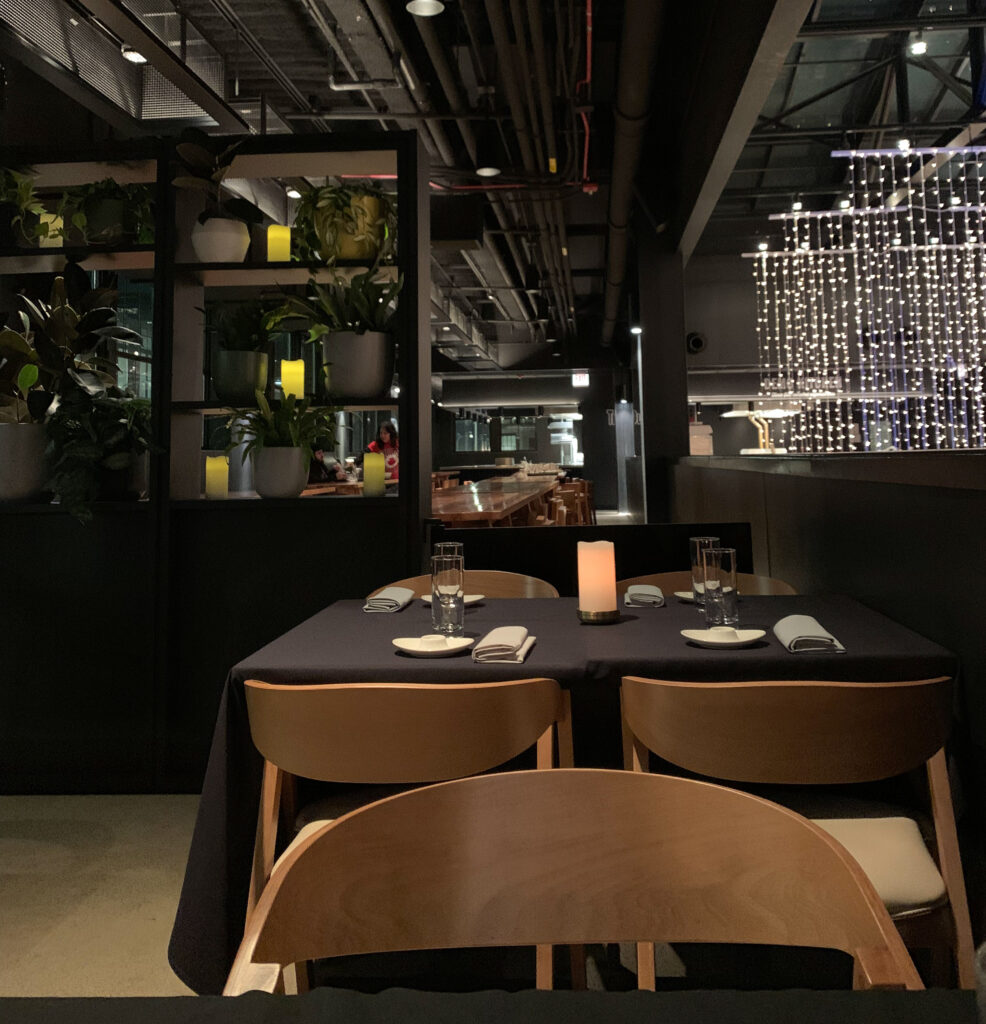
Yes, they’ve given the S.K.Y. and Apolonia chef a kitchen, some tables, and some chairs. There’s signage and some free promotion to count on, as well as shrubbery and a bit of shelving to help separate Valhalla’s patrons from the rest of the crowd. But this strikes you as the bare minimum such a partner can provide. If Time Out were truly brave, they’d have put Gillanders on the roof in a sealed room that, from its third-floor perch, could form one of Fulton Market’s crown jewels of dining. Alas, there’s no kitchen up there, and the market is not about to trade away the easy money booze brings in.
Valhalla confirms Gillanders’s status as one of Chicago’s most talented chefs and, in that role, one of its greatest leaders. He and his team have absolutely maximized the space they have been given. They have not only put themselves at the direct service of their customers (in a way hereto unseen at their Pilsen or South Loop concepts) but been ceaseless in their experimentation. Yes, the growth the restaurant’s menu over the course of three short months has really impressed you (and the same is true for Prodan’s wine list). The kitchen has struck upon some brilliant ideas from the beginning, yet you admire the growth many dishes have undergone—as well as the chef’s willingness to retool (or even totally abandon) preparations over time. Hell, as of the start of January, the restaurant has almost entirely changed its tasting menu to comprise—save for the “Kombu Cured Fluke,” “Savory Pastry Basket,” and “Queen Crab Arroz Caldo”—a whole new range of preparations. Each one, too, promises the same intricacy of flavor, texture, and presentation that the restaurant, thus far, is known for.
This kind of dynamism, combined with the confidence required to let go of what one may view as a “perfected” dish in order to repeat the same process anew, is a hallmark of the very greatest restaurants. Such a commitment (to the idea of ceaseless improvement) helps you weather some of the menu’s more underwhelming items without spoiling your larger sense of the meal. It is the price you pay to ensure, over the long term, a steady flow of novel and delicious food. It keeps you glued to the chef’s social media in search of his latest creation and entices you to keep coming back. In terms of both process and overall performance, Gillanders has built something special. He has embraced a range of totemic luxury ingredients (oysters, caviar, truffles) in a way that does not seem hackneyed while, at the same time, using storytelling techniques (“Maitake Mushroom Kebab,” “Shin’s Shiso”) and inverted forms (“Savory Pastry Basket”) to infuse more quotidian ingredients with a greater sense of glamour. Sinclair’s desserts too—it must be said—represent everything you could want from the sweeter side of the menu.
Valhalla is a perfect concept for those who have grown cynical regarding fine dining’s usual bag of tricks. With all that formality stripped away, you can just sit and focus on food, drink, and service done with finesse. Those looking to celebrate a special occasion at the concept will find that the personal connections forged with the staff (as well as flourishes like the edible Banksy balloon) make the evening memorable. Yet partnering with Time Out and occupying this unused space on the second floor of its market undoubtedly saps some of gastronomy’s magic.
Gillanders is rather intelligent, and he saw this criticism coming from the moment he agreed to open the restaurant. He got ahead of it, arguing that “the days of servers wearing tuxedos and pushing guéridons around” are gone and that Valhalla would more closely represent “the future of fine dining.”
He expanded on these thoughts in another interview, one particular passage of which is worth reading in full: “The evolution of dining is trending towards a common ground, in the middle. More casual restaurants and eateries are stepping up their game and cooking more mindfully, focusing on more responsible ingredients, dietary preferences and eating habits. Conversely, fine dining restaurants are becoming more casual and sprouting up in unexpected places. The best restaurant in the world, Geranium, is located in a soccer stadium, Kato opened in a strip mall in Los Angeles, Chef’s Table at Brooklyn Fare is in a grocery market, and Dave Beran opened Dialogue in the food court of a mall. Rather than looking at Valhalla as an unorthodox approach, I feel like this opportunity is part of a natural restaurant progression that we are already experiencing. I’m very excited to wrap my arms around the location of Time Out Market Chicago and capture the best of the market’s high energy in tandem with an upscale experience.”
Once again, you think the chef is incredibly clever and agree wholeheartedly with his assessment of larger industry trends. You also cannot help but admire his “ethos” when it comes to Valhalla’s setting: rather than saying “I can’t do that because I’m in a market,” he has resolved that “I should absolutely do that because I’m in a market.” Nonetheless, he glosses over (in a manner that’s a bit diabolical) one important distinguishing factor.
Chef’s Table at Brooklyn Fare may be tucked within the market of the same name, but both the tiny original location (on Schermerhorn) and the comparably luxe present one (on 37th Street) situated the restaurant in an entirely sealed, carefully curated, and totally controlled space. The same goes for Gillanders’s other examples, which may boast exotic addresses but unmistakably maintain the illusion that you are stepping into another world once you enter the dining room proper. Even the most mediocre pop-up usually exists in its own domain: one that is impermanent but allows its chef a blank canvas on which their food and hospitality can really shine.
Consumers are indeed willing—if not excited—to embrace a “more casual” kind of fine dining executed “in unexpected places.” Nonetheless, Time Out Market has not given Valhalla a blank canvas. The restaurant is not in an “unexpected place” but an unused, leftover space. Time Out has saddled Gillanders with something more akin to a challenge: turn the ugly duckling into a swan, get people to spend $185 a pop while sitting in a dormant corner of the building. No chef could have done this better, for no chef in the city maintains such a readymade fanbase with the kind of pedigree and hunger to delve into finer dining without hobbling their existing properties. What Gillanders and his team have achieved, in such a short amount of time (both in terms of planning and execution), is remarkable.
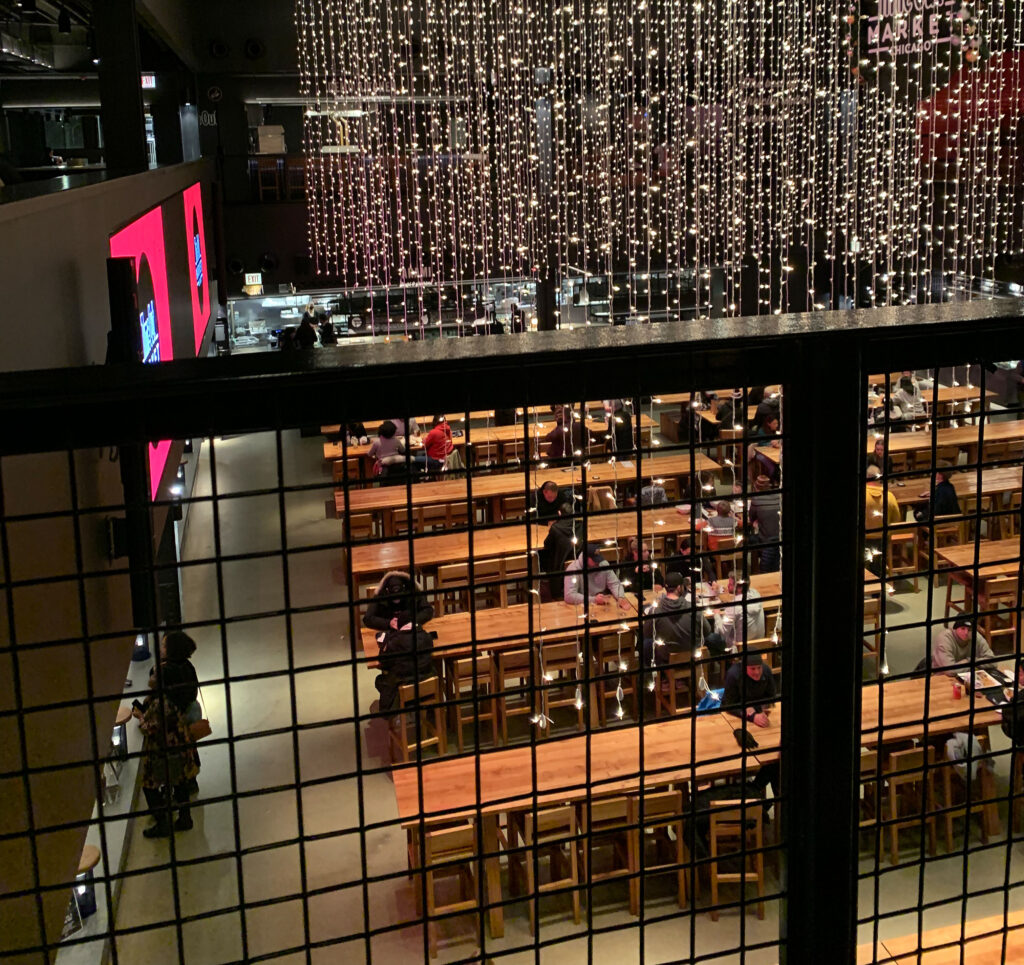
Yet dining at Valhalla feels a bit like watching a poignant film on your phone screen or, worse still, playing an immersive video game in a crowded arcade. As an artistic expression, the restaurant clearly displays a high level of craftsmanship when it comes to food, drink, and service. But the concept’s surroundings amount to a total denial of the power that sight, smell, sound, and touch exert in shaping a luxury experience.
To be more specific, your view of the market is not objectionable—even when the perpetually empty demo kitchen transforms into a playground for wayward children—but it cannot compare to appreciating wallpaper, materials, fixtures, furniture, and artwork curated specifically by the chef. No errant odors from the rest of the market (or the public bathrooms located across from Valhalla) impinge on your meal, but neither does the restaurant get to trap some of the pleasurable scents of the open kitchen within a smaller space (or infuse the dining room with the kinds of subtle perfumes some establishments use to cement a deeper sense memory). The sound of chatter and garbled Top 40 music from the ground floor does not drown out your conversation, but it precludes a more thoughtful playlist (attuned to the chef’s particular style) or total silence (quite striking in settings like omakase). Likewise, the restaurant’s furniture is comfortable enough, but there are no booths to sit back in or other tactile engagements with wood, leather, granite, and so on that subtly signal a sense of refinement.
None of these elements have anything to do with “servers wearing tuxedos and pushing guéridons around.” They are not needless flourishes (which you will be the first to say should be jettisoned) but, rather, fundamentals of luxury dining as an embodied experience that engages the totality of the diner’s senses. Gillanders clearly knows he is working within these limitations and has done all he can, through the cleverness of his food and the foresight of his hospitality, to make you forget they exist. (The lowered expectations the setting may spur might also form a huge boon upon tasting the quality of the menu.)
That being said, many “special occasion” diners are not equipped to remember the specifics of a tasting menu. They may have found it to be excellent, yet their impression of the evening will be based around a larger spatial and emotional dimension that remains salient far longer than any mere taste could ever hope to. You are not, nonetheless, advocating for the importance “smoke and mirrors.” Put another way, Valhalla will succeed in impressing seasoned gastronomes via intelligent, imaginative food free of needless frills. However, it falls short of providing more aspirational fine diners—those who have not yet had their fill of novelty and learned to distinguish the “good” from the “very good” from the truly “sublime”—with some of the niceties that make an occasion truly feel special. For the “one-and-done” kind of occasional splurger—someone destined to be blown away by food that even just looks refined—the wider environment may remind them more of a lowly chain restaurant than something worth paying such a superlative sum for.
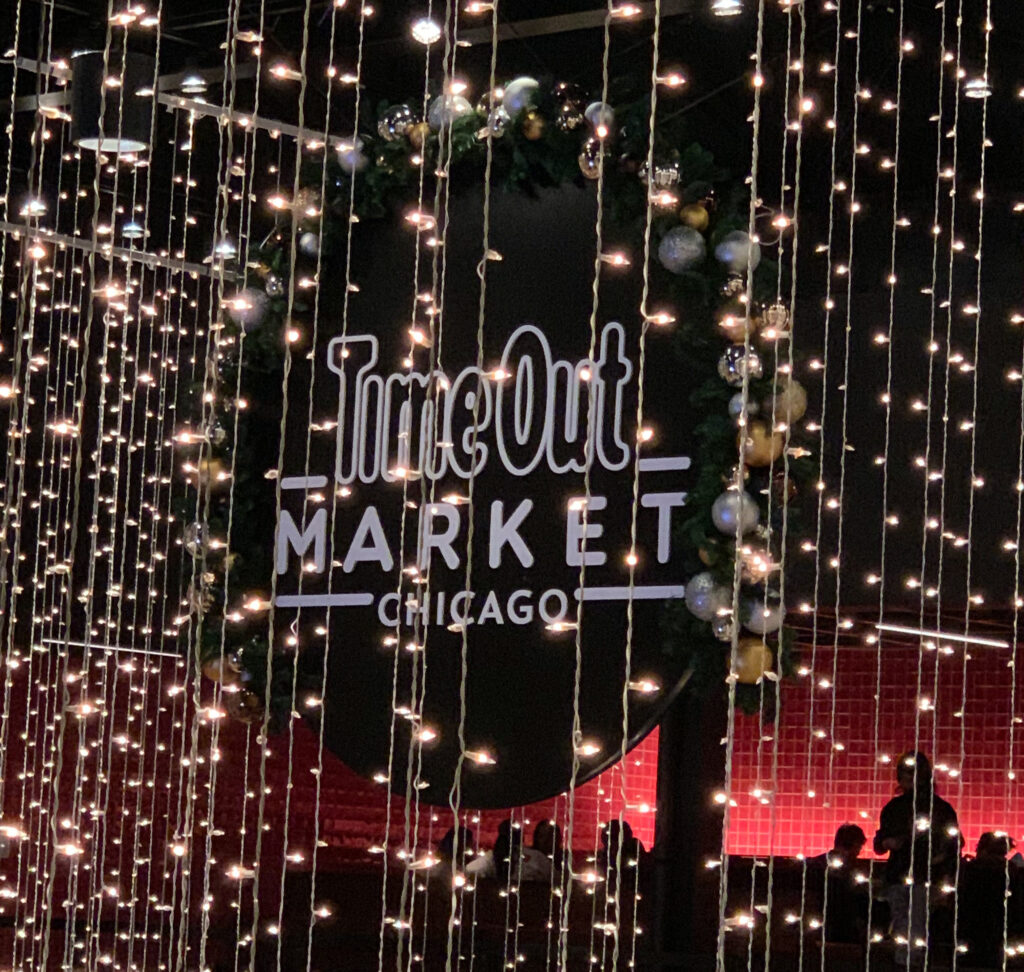
So, again, what exactly is Time Out Market bringing to the table in return for hosting a chef of such talent? Would that $185 tasting menu cost something more like $235 if Gillanders had more overhead to contend with? From that perspective, Valhalla’s location may allow it to offer Chicagoans one of the most competitively priced gastronomic expressions in town. The restaurant compares favorably with its peer group—Next ($135-$195), Boka ($165), Topolobampo ($165), Goosefoot ($175), Schwa ($180-$195), EL Ideas ($185), George Trois ($185), Omakase Yume ($185), Mako ($185), Hermosa ($190-$200), Brass Heart ($195), Rose Mary’s Chef’s Table ($195), and Temporis ($195)—without ever seeming like it offers a drastically better deal. Rather, you think the partnership with Time Out is what allows Valhalla to be so bold in its experimentation without relying so much on a steady stream of mainstream consumers seeking somewhat more “traditional” fine dining fare.
That, you think, forms the crux of Gillanders’s decision to enter the market. It is Intro all over again: a chance for the chef to get the creative juices flowing and flesh out his finest expression of cuisine yet with a minimal amount of risk. As a pop-up, approached in this manner, Valhalla stands as one of 2022’s best openings. For experienced diners who purely want intricate cuisine, fine wine, and engagement with the chef, it may very well be the best.
Yet Valhalla still only represents a half step in Gillanders’s story. It is far from the ultimate expression he will be capable of when given full control over every aspect of the dining experience. That much can be sensed already. Even if the chef succeeds in establishing Time Out Market’s first Michelin-starred concept across all its properties—a real possibility (though it will test the degree to which Bibendum truly prizes ambiance)—how long would he wish to stay?
For now, however, Valhalla offers one of the city’s finest culinary expressions in a space that is generally pretty engaging but also totally unremarkable in a manner that might vex those for whom luxury demands a certain degree of multisensory immersion. Still, interacting with Gillanders and his team is a delight, and the day will surely come when they can unleash all this overflowing creativity on their own turf. Until then, it is well worth savoring what the chef is working on firsthand. He is already of Chicago’s best chefs and could very well go on to become one of the city’s greatest ever as he ever-so-methodically climbs toward the pinnacle of his craft.



